A Big Kruger National Park Travel Guide: 30 Facts, FAQs, and Tips for Planning Your Own Kruger Visit
Calling all adventurers and fellow wildlife aficionados! If you've found your way here, you're likely planning an exciting voyage to Kruger National Park, the heart of Africa's untamed wilderness!
Now, let me be honest— I'm not typically a "safari person." The predictability of it all tends to leave me yawning. But Kruger? Well, it's a whole different ballgame. This place, thanks to its jaw-dropping diversity, will keep even the pickiest of travelers (yes, like me) engaged for days on end. My original plan of a modest 2-day visit? It somehow morphed into an exhilarating 4-day adventure in Kruger !
Tip: One day is all you need in Addo Elephant Park , and 2 is the maximum I would’ve been happy with in Etosha National Park in Namibia . So 4 days in Kruger really says a lot about how amazing it is.
Here's the deal: Kruger is a sprawling kingdom of the animals, stretching nearly 350 km (220 mi) tall and 80 km (50 mi) wide . That’s 20,000 km² (8,000 square miles) or almost the size of Israel ! They say, "You can't step into the same river twice," and that couldn't be truer here. There’s just so much ground to cover, you won’t even be able to find the same river twice!

Who is this Kruger guide for?
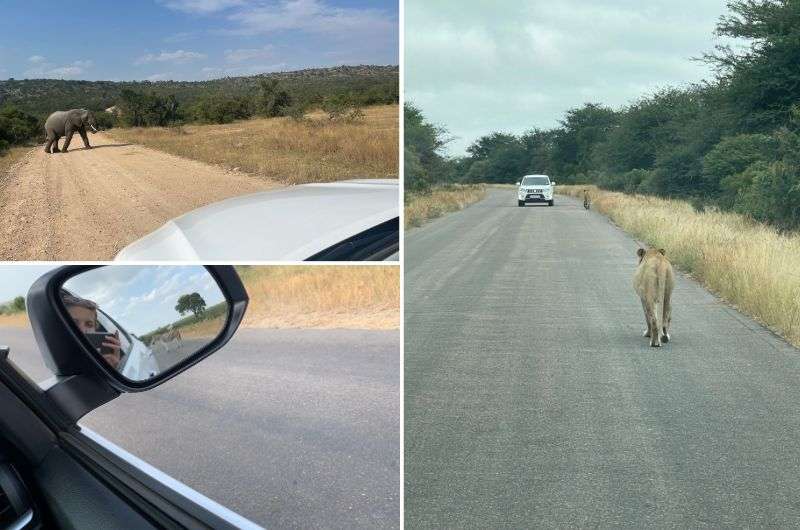
Get ready close animal encounters in Kruger National Park!
Wondering if this guide is your cup of safari tea? Well, if you were looking for a guide that’ll give you plenty of practical information and drop some real-life insider tips , you’re in the right spot. Whether it's your maiden voyage or a grand return to Kruger National Park, this comprehensive guide is crafted to make your experience smooth, unforgettable, and teeming with remarkable wildlife encounters.
I’d like to think this Kruger travel guide is the only one you’ll need. I hate when I have to hunt around the internet looking for forgotten details. So first, we'll tackle the essential FAQs —including those burning questions that might be keeping you up at night (or too excited to sleep). Then, we'll dive into some tried-and-true visitor’s tips , honed from my own experiences at Kruger, and last but not least, I’ll give you some facts about Kruger that’ll be the perfect addition to your mental gear before heading out on your trip.
So, grab your virtual safari hat, adjust those binoculars, and let's Kruger!
1. What's the distance between Johannesburg Airport and Kruger National Park?
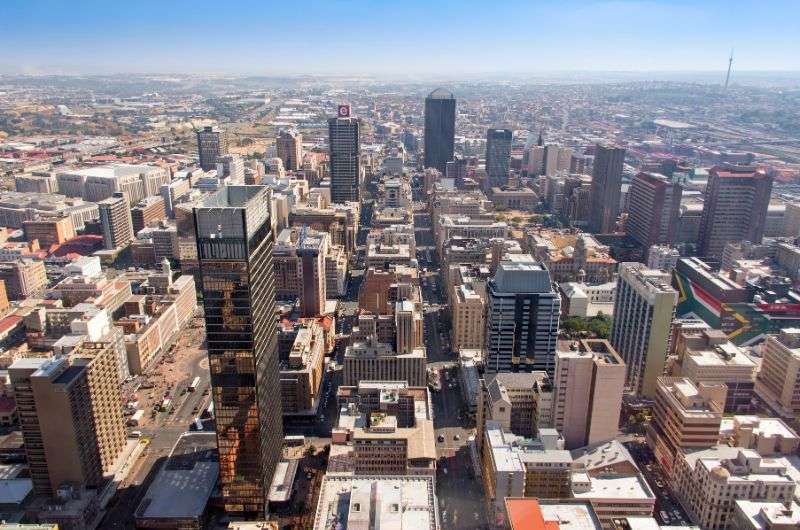
The city of Johannesburg
The distance between Johannesburg OR Tambo International Airport and Kruger National Park, also known as, is approximately 400 to 500 km (248 to 310 mi) , depending on which part of the park you're heading to. But hold on, don't let those kilometers intimidate you ! Road trips in Africa are an experience in themselves, offering breathtaking landscapes and exciting detours.
Plus, you’ll be driving on the highway almost all the way, and South Africa's highways are generally in good shape , so it’s an easy trip.
Pro Tip : To add extra pizazz to your Kruger journey, consider making a one- or two-day detour—explore the stunning Panorama Route. For more details on this side trip, check out my Panorama Route Guide and Panorama Route 1-2 day itinerary . It's all about making the journey as memorable as the destination !
2. Which is the closest airport to Kruger National Park?
If you're looking to fly into Kruger National Park, the closest airport is Kruger Mpumalanga International Airport in Mbombela (Nelspruit), also known as KMI Airport. This airport is practically on the park's doorstep (and, as a bonus, very close to the epic accommodation we stayed at and loved: Ndhula Luxury Tented Lodge ).
What's fantastic about the airport is that it grants you easy access to the southern part of the park , an area renowned (and I second that tip!) for incredible wildlife encounters. You'll be within a whisker's reach of Skukuza and Lower Sabie , some of my personal favorite parts of Kruger with the best wildlife spotting opportunities.
Pro Tip: Depending on your South Africa itinerary, you could certainly decide to fly into Kruger to save on driving time. I, on the other hand, recommend renting a car in Johannesburg (or “Jozi”, as the locals endearingly call their capital) and making the drive to Kruger. The Panorama Route is right there, people!
3. Can I visit Kruger as a day visitor?
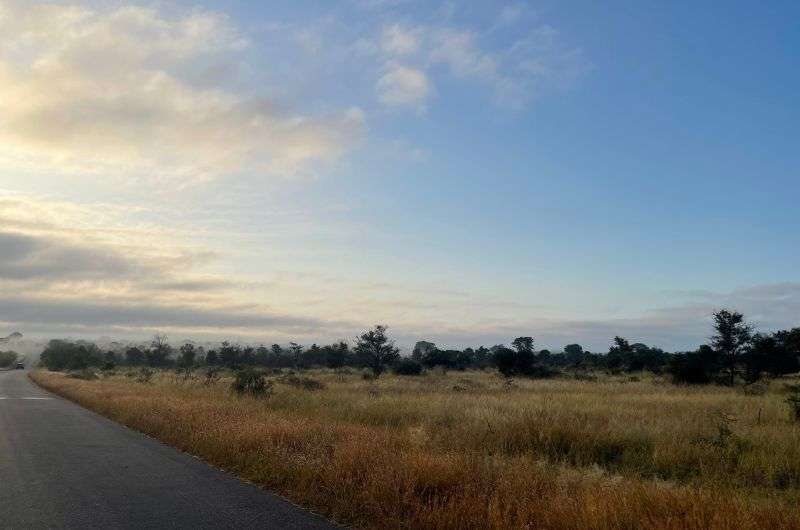
I loved driving around Kruger National Park
Yes, you can choose to stay outside of the park and visit Kruger each day as a day visitor. You can self-drive or go on a guided game drive. You will need to take note of gate opening and closing times (see FAQ no. 8 below).
Even as a day visitor, you can use the restaurants and picnic sites around the park. Restaurants are always at the main camps, while picnic sites are interspersed . They’re a great place to stop, which, trust me, you will be happy to do every now and then. Stretching those legs after hours of slow driving feels so good! The picnic sites are well-maintained and well-equipped, too. Some have a shop with food, bbq facilities, and there are even attendants that’ll clean your dishes when you’re done making your food.
Note that park gates have limits on the number of self-driving visitors they let in each day, so you should plan on getting there early if you’re visiting in particularly busy times.
4. How much does it cost to enter Kruger National Park?
For every day you visit Kruger National Park, you will pay the conservation fee of ZAR 460 (USD 24) + 1% community fee for international adult visitors. International kids pay ZAR 230 (USD 12) . South Africans pay ZAR 115, SADC country nationals pay ZAR 230.
5. What animals can I see in Kruger?
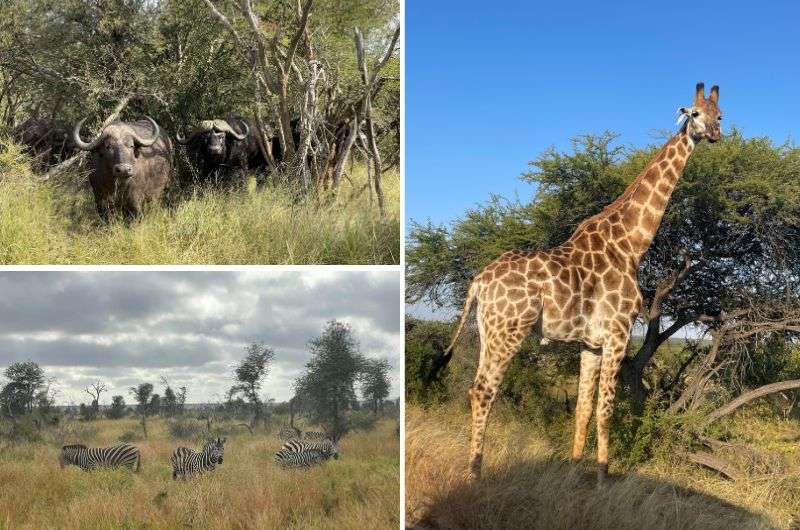
SO. MANY. ANIMALS!
Ah, the stars of the show, the headliners, the real A-listers of Kruger! You want to know who they are? Well, drumroll, please... it's pretty much everyone ! Kruger National Park is one of the best places in Africa to see wildlife, so it’s obvious it won’t just be an elephant here and a wildebeest there.
First up, Kruger is the place to go to see lions . That’s not saying it’s easy to see them, you will need to put in effort and patience, but once you see them strutting their stuff through the savanna like they own the place (which they kinda do), with that classic feline "I couldn't care less about you" look, you’ll feel like you’ve won the safari lottery.
Lions are part of the Big Five , all of which have a home at Kruger National Park: elephants, buffalos, rhinos, and leopards are the other four. Good luck spotting a leopard, though! I also had bad luck with rhinos on my last trip and saw a grand total of 0 specimens.
In total, there are about 150 species of mammals in Kruger ; to mention a few: giraffes, hippos, hyenas, cheetahs, wild dogs, honey badgers, baboons... and don’t forget the hundreds of reptiles, amphibians, and bird species! Who else loves ostriches and snakes? Show of hands?
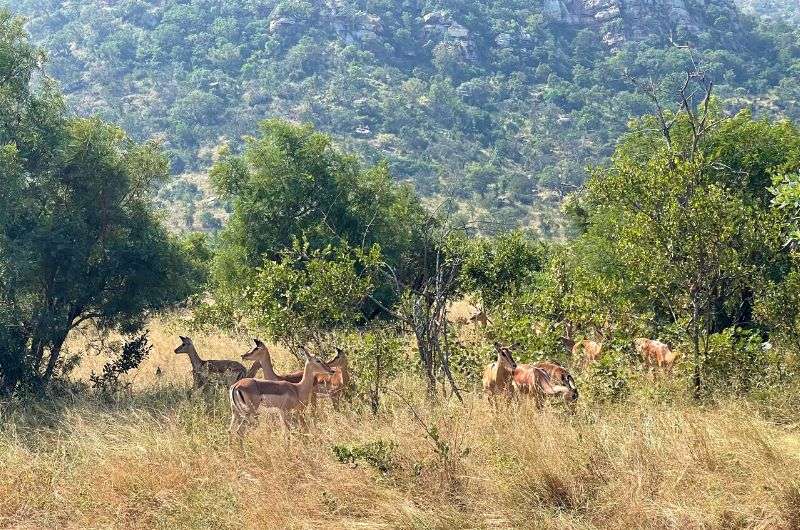
Beautiful antelopes just a few meters away...but shhh!
You’ll see such an overwhelming number of impalas, zebras, and antelopes of all shapes and sizes that they end up being almost as interesting to see as a pigeon in your home city.
Remember, how many and which animals you see in Kruger largely depends on how patient you are . Don’t try to cover large distances, your FOMO isn’t going to be cured by jumping from one place to another. There’s nowhere to hurry to, focus on the area you chose and stick to it. Take your time, drive slowly, and keep your eyes peeled. Also, if there are a bunch of cars stopped in front of you, it’s a dead giveaway that there’s something interesting there.
6. Which area of Kruger is best?
I’m guessing you want me to tell you where all the cool animals live , right? Well, they move around, so no complaints if you didn’t see a lion even though “Jan said I would”. But here's the scoop from my multiple Kruger explorations:
The park is massive, and I mean "larger than some countries" massive. And each area has its own variety of wildlife that mostly hang out there. If I’m to be very general, the southern 1/3 of Kruger is your best bet for the most animal sightings. Roughly from Hoedspruit down is where the wildlife action was the best for me every time.
Hotel tip: We stayed in Hoedspruit for our Panorama Route weekend this last trip, but you could very well stay put and enter Kruger National Park from there as well. I wanted to mention this because Little Kubu Lodge in Hoedspruit was one of my top personal favorite hotels in all of South Africa.
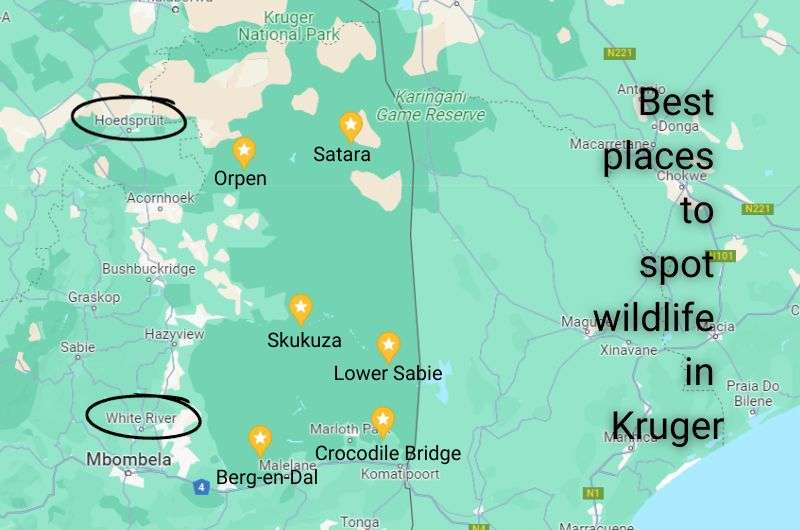
We always had the best luck in spotting the Big 5 and some of the coolest African animals in the southern section of Kruger. Stay either in Hoedspruit: Little Kubu Lodge or White River: Ndhula Luxury Tented Lodge If you’re looking for more specific best areas in Kruger for wildlife spotting , try driving between Orpen>Satara>Lower Sabie and also around Skukuza>Berg-en-Dal>Crocodile Bridge. This is where we had some jaw-dropping encounters with lions, hyenas, cheetahs, giraffes, a bazillion zebras and elephants, and tons more.
Tip: I put together a whole other article about hunting for animals in Kruger (checking them off with a pencil and paper in hand, obviously!) in How to see the wildlife in Kruger?
You'll find mainly savannas and mixed woodlands in these parts, which are the best habitat for the animals we’re all chasing after.
Pro tip: Grab a park map and brilliant guide at the gate. They're gold. You'll find colored zones indicating the type of vegetation you’ll find in each area, which is code for what animals you can expect there. You can check off your sightings in the guide, too. It was like Pokemon Go for me , gotta catch ‘em all ! But I did not. I wasn’t even close, and I spent restless hours trying! Stay in the pink and dark green areas for best results (no guarantees, but those were our hotspots!). Good luck!
7. Which gate is the best to enter Kruger National Park?
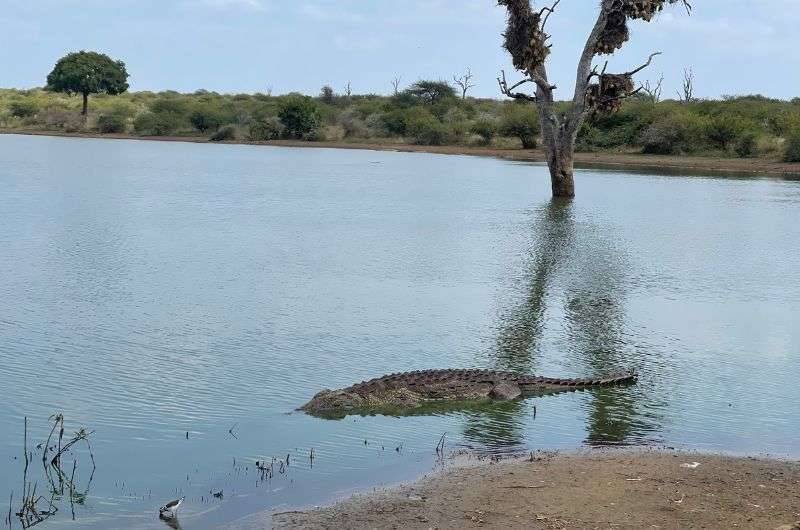
We started from the sharp end—at the Crocodile Bridge
There are so many gates in Kruger National Park (10 in total), it makes it really easy to base yourself almost anywhere and always have a convenient way in as a day visitor . We stayed outside of the park—we were very happy at Ndhula Luxury Tented Lodge in White River!—which was a perfect location because it’s in the southernmost section of Kruger aka the best part of Kruger.
We used Crocodile Bridge and Malelane Gates , and it’s easiest to use Orpen Gate if you’re coming to Kruger from Hoedspruit.
One place to avoid is Numbi Gate , which is known as a crime hotspot.
Pro Tip: One thing to note if you’re a day visitor is that gates have a limit on how many people they let in each day, so it’s best to plan on getting there early if you’re self-driving, especially in peak periods and on weekends in general. But if you do end up being turned away, you can still get on a safari game viewing vehicle and see Kruger that way.
8. What are Kruger gate opening times?
Unless you’re staying inside Kruger National Park at one of the camps, you’ll need to drive in and out each day and adhere to gate times. They are strict—if you get caught at the park late, you will be fined. That said, even if you’re staying inside a camp, you’ll still need to be inside the camp gates at certain times, too. Camp gate times are almost the same as general gate opening times except for a couple summer months when they open a little earlier.
Kruger gate opening times:
October–March: 5:30 am
April–September: 6:00 am
Kruger gate closing times:
November–February: 6:30 pm
March and August–October: 6:00 pm
April–July: 5:30 pm
9. What is the best month to visit Kruger National Park?
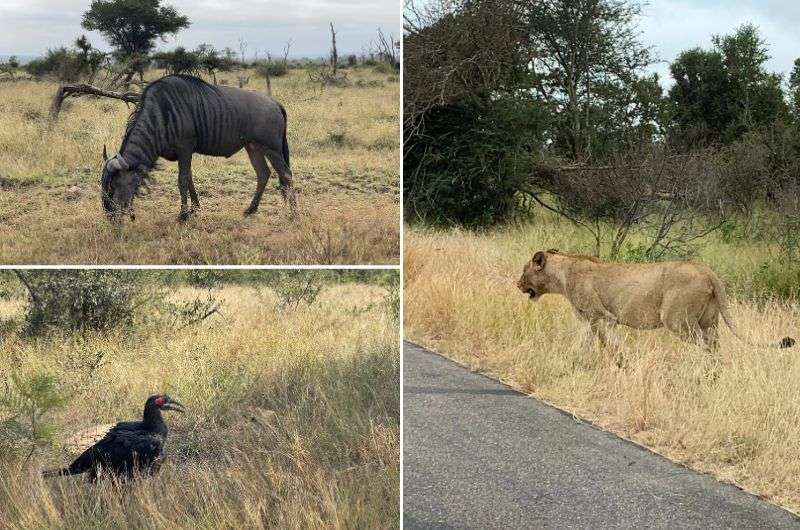
In Kruger National Park there are always animals to see!
I think Kruger is a year-round destination, though the best months to visit are arguably dry season: May to October . I say arguably because unless you’re visiting just Kruger and nothing else, you need to consider the rest of your South Africa itinerary, too. The dry season in Kruger is end of fall through beginning of spring, and that will almost always collide with the best times to visit other parts of South Africa (for Cape Town and Garden Route , for example, you don’t want to be there for winter, when it can rain a lot).
Obviously, there are pluses to visiting in dry season : You get less vegetation, which means the animals are easier to spot since they have less grass and leaves to hind behind. They’re also thirsty and gather around the watering holes a lot, so again—easy peasy wildlife sightings. Then again, it’s peak tourist season , which means traffic jams on self-drive roads.
I’ve been to Kruger National Park in dry and wet seasons and to me, it mattered very little which month I went . I always saw plenty of animals, and if you visit in a wetter month, you’ll get prettier vegetation and spot lots of baby animals. And you know what little fuzzy baby cuties means... predators in action! Sorry, babies, but you’re the easiest to eat.
My last Kruger visit was at the end of wet season, in April, and it was epic . You can see from my photos that there was no absence of animals whatsoever.
10. What time of day will I see the most animals in Kruger?
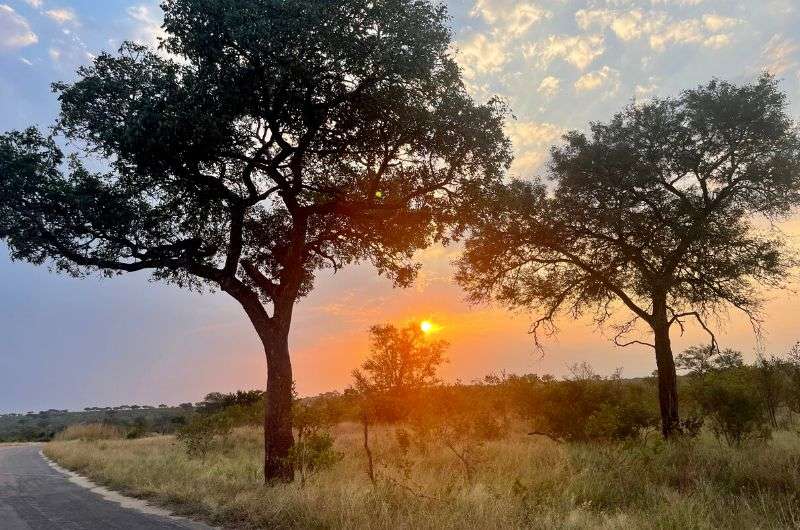
If you visit Kruger in the evening, you’ll get this beautiful sunset as a bonus
If you want to see the most animals, visit Kruger in all times of the day! We did a couple of evenings, two very early mornings, and a full day, and each time saw different animals. If I were to say when I personally saw the coolest critters, I’d vote for mornings , but your experience can differ. Sunrises and sunsets are known to be when wildlife are the most active, so you’ll need to test out your luck, ideally more than once, to get the most out of your Kruger experience.
We saw lions super close up on our last morning in Kruger. It was spectacular! We watched, almost holding our breath, as a group of lions walked right in front of our car for about 10 minutes. This was right before we headed to catch out flight back to Europe, so it felt like an extra special goodbye .
Tip: Check out my other article specifically about how and where to see the wildlife in Kruger. I even show you my animal checklist and try to tally up our animal sighting for the 4 days we were in Kruger National Park (I’m a little OCD about checklists).
11. How many days should I spend in Kruger National Park?
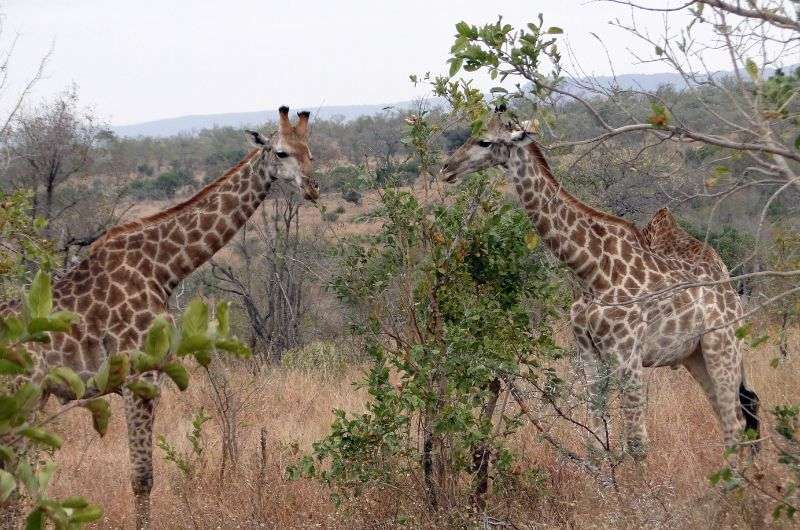
Kruger is not like some other safaris that tend to get repetitive really quick. Stay at least 4 days!
If you're contemplating the number of days to invest in Kruger National Park, this is one place you may want to stretch that time budget of yours. If you have 4 days, do 4 days . Two days aren’t enough for Kruger!
Here’s a little tidbit about my last Kruger visit : You see, I'm not your average traveler—I travel fast and cram a lot into my days, because there’s so much to see and so little time! I've got a penchant for covering vast distances, and squeezing as much adventure as possible into every moment.
So, when I initially planned my Kruger escapade, I figured a couple of days should do the trick . Safaris usually get boring for me after two days anyway... But oh boy, did Kruger have a surprise in store for me! What was meant to be a swift two-day trip turned into a glorious four-day safari for me!
Why? Well, because Kruger is unlike any other. The diversity of wildlife and landscapes is astounding, and the thrill of spotting animals in their natural habitat is just irresistible. If you're anything like me (i.e. a little OCD) and possess that nagging obsession to check off every animal in your guidebook , well, four days will barely suffice.
Pro Tip: I’d recommend lots of time for this safari: the sweet spot is 3—4 days in Kruger National Park. We went in in the break of dawn on a couple of days, stayed into the evening on another, and pulled off one very long, full-day tour. Trust me, it’s a lot, so it’s a good idea to give yourself time to rest in between Kruger visits . I can’t recommend Ndhula Luxury Tented Lodge enough for this. Not only is it basically a comfortable hotel room that’s outside, but it’s in its own private nature reserve , so you’ll be spotting animals right from your private terrace!
12. Is it safe to self-drive Kruger?
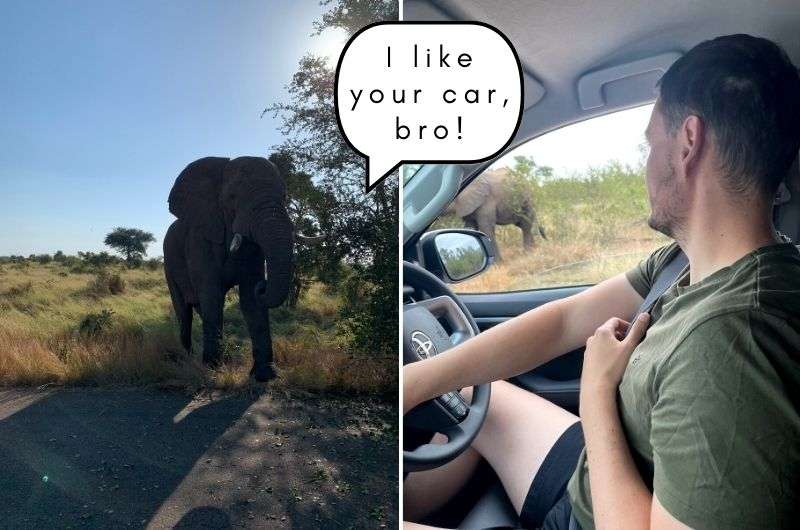
I like it too, bro. I like it too...
Absolutely, driving in Kruger National Park is as safe unless you do something stupid, like get out of the car near some lions, like that lady I say on Youtube. Seriously?! Darwin’s law I guess.
Kruger has well-maintained roads , clear signage and good maps available, and speed limits that ensure everyone's safety, including the wildlife. That is, if humans adhere to these rules...
It’s not rocket science : Keep your doors locked, windows shut if you see any predators around, and never exit your vehicle unless you're at a designated viewing spot. And remember, these are wild animals, so respect their space. That means no attempting to feed, pet, or take a selfie with them.
I’d say the only danger when driving in Kruger is a sore butt from the hours of sitting in the car driving slowly. I strongly recommend getting a comfortable vehicle, ideally a high-clearance one so you’re up higher off the ground, which makes it easier to spot animals. We had a Toyota Fortuner and it was perfect for a smooth ride (and our tushes were happy, too!).
13. What are the road conditions like in Kruger National Park?
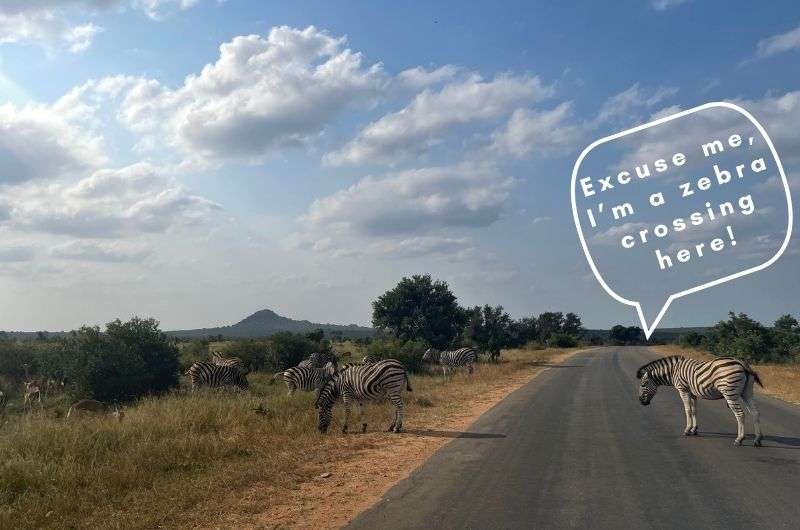
Remember, the animals in the park always have the right of way!
The road conditions in Kruger National Park are a pleasant surprise: mostly sealed, with only some sections with gravel, but nothing too bad. All the roads in Kruger are well-maintained, so even though you’re in the wild, you don’t need a mighty vehicle to tame them. Like I said above, I’d suggest a higher 4x4 just for the sake of your own comfort , but it’s not necessary and you’ll do fine even in a sedan.
As someone who's explored Kruger inside out, let me share a tip: slow down . Sure, there is often a 40 or even 50 km/h speed limit , but that just seems crazy to me. There’s nowhere to hurry to! Onthe contrary, driving slow will guarantee you more animal sightings. Trust me; you don't want to speed past a leopard lounging in a tree or a herd of elephants crossing the road because you were in a hurry to get to the next place.
My 9 top tips for visiting Kruger National Park as a day visitor
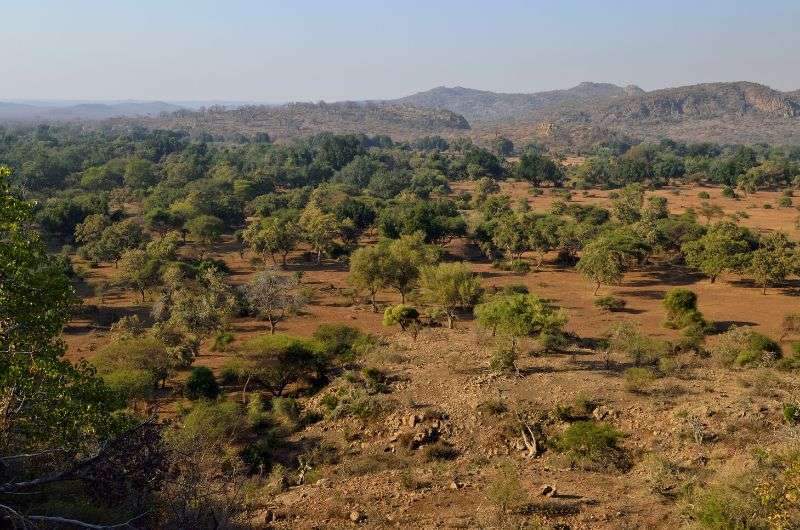
Kruger National Park
- Don’t rush, it’s not a race! The animals are not putting on a show for humans, so you’ll need to practice your patience and give yourself time to spot them. The nature isn’t all that interesting, really, so it’s not about covering the most ground. If you are having luck in an area, stay there.
- Get off the ground ... literally. Rent something big, like an SUV (we were happy with our Toyota Fortuner), so you get a good views from your car. You don’t need a 4x4 to drive in Kruger, but if you’re sitting in a sedan, you might miss some wildlife sightings just because you’re so low to the ground.
- Mornings beat evenings. At least they did in my experience. Early morning (between 6-9 am) is when we saw the most animals. I’m talking leopards, a pack of hyenas, and we were even able to trail behind lions for 10 minutes, so it was hands down my favorite part of the day.
- Stay in the south. I want to say that it’s just birds up in the north, but that’s just not true. It’s just that the density of big animals, including predators, is much larger in the area south of Satara.
- Know where to go . My tried and true highlight routes for a self-driving Kruger trip, where I say the most animals, the most different kinds of animals, and the most lions, are: Orpen>Satara>Skukuza and Lower Sabie>Crocodile Bridge>Berg-en-Dal. Also, get the map and guide at the entrance gate, they are superb (and have an animal checklist).
- You need more time than you think. Plan for at least 3–4 days. I thought 2 would be good enough but it wasn’t even close. This way, you can combine self-driving and some guided game drives, and see the park in different times of the day.
- The season doesn’t matter. Dry season is deemed the best, but it’s also the busiest, and from my experience, it makes little difference which month you go to Kruger. Each season has its pluses and minuses, but they all have tons of animals!
- Stay near Malelane and Crocodile Bridge Gates. These proved to be the best access points for the southern area of the park, with easy and wildlife-abundant drives towards Lower Sabie and Skukuza. We chose Ndhula Luxury Tented Lodge as our base and can’t recommend it enough. It’s in a private reserve of its own, so you’ll see animals straight from your hotel room/tent hybrid. I especially enjoyed the evening bonfires as they had this memorable safari vibe... yes, I talked to strangers and liked it!
- Don’t worry about food and gas. There are camps all over the park that you can stop by, eat at the restaurants, buy snacks at the shops, and even get gas. There are also many gated picnic areas where you can take a break, eat, stock up on goodies, and even BBQ.
8 Kruger National Park fun facts
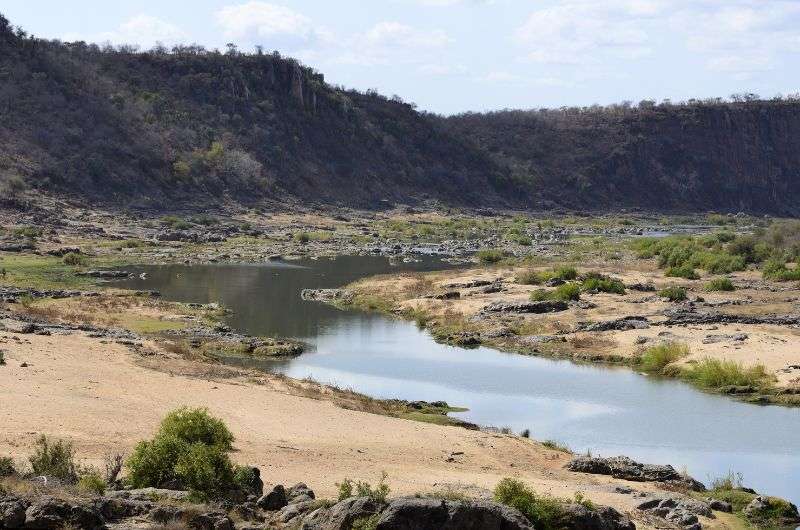
Kruger National Park is a huuuge park
Before you do to Kruger National Park, here are some facts about the park that’ll blow your khakis right off:
- Location, location, location : Kruger is nestled along the borders of South Africa, Mozambique, and Zimbabwe, giving it access to some of Africa's most diverse ecosystems.
- Size matters : Covering a jaw-dropping 20,000 km² (8,000 square miles), Kruger is about the size of Wales, Israel , or the state of New Jersey in the US (but with way more lions). Kruger is really an animal kingdom.
- It’s old : Established 125 years ago, Kruger National Park is one of the world's oldest and most renowned game reserves. The park's history dates back to 1898 when the then-president of the South African Republic, Paul Kruger, proclaimed the area as the Sabie Game Reserve. It aimed to protect the region's wildlife from rampant hunting and poaching.
- What’s in a name : The park’s name was changed in 1926 in memory of Paul Kruger’s role in its establishment.
- It’s really old : Your great-great-great-...-great grandfather lived and hunted in the Kruger area. Humans have been living here for a million years! Look out for rock art and engravings in the park. Numerous Iron Age sites with relics and artifacts, like pottery and stone tools, have been discovered within the park.
- UNESCO likes it : Kruger National Park was declared a UNESCO World Heritage Site in 2003. It's renowned not only for its diverse wildlife but also for its archaeological sites.
- Saving the dogs : Kruger has played a vital role in conservation and wildlife research. It's been at the forefront of initiatives to protect endangered species like the African wild dog. Their population has gone from 120 wild doggos in 2009 to almost 400 in 2023!
- Famous faces : Nelson Mandela declared Kruger "a priceless asset" in hit speech for Kruger’s 100 th anniversary celebrations. If it's good enough for him, it's good enough for us!
This post contains affiliate links. I earn a small commission if you make bookings through my links, at no additional cost to you. This helps keep this blog free, thank you!
Recommended articles
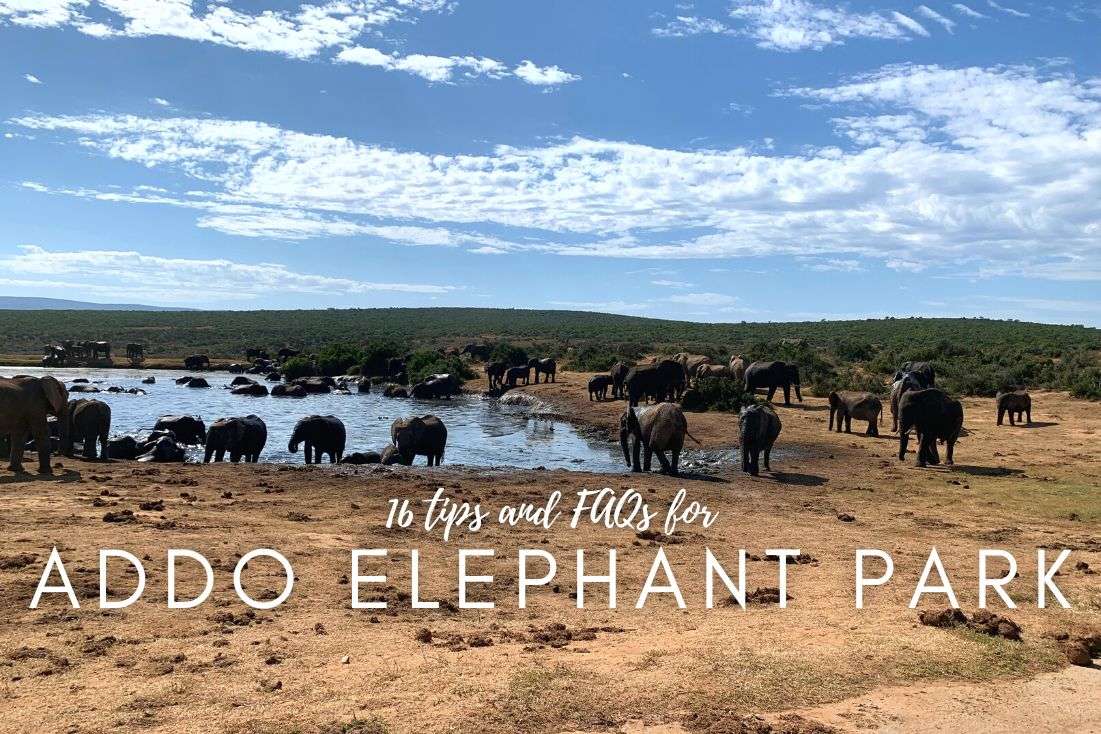
When it comes to wildlife encounters, South Africa's Addo Elephant Park is no ordinary destination. But don't be fooled by its name—Addo offers much more than just elephants. Keep reading!
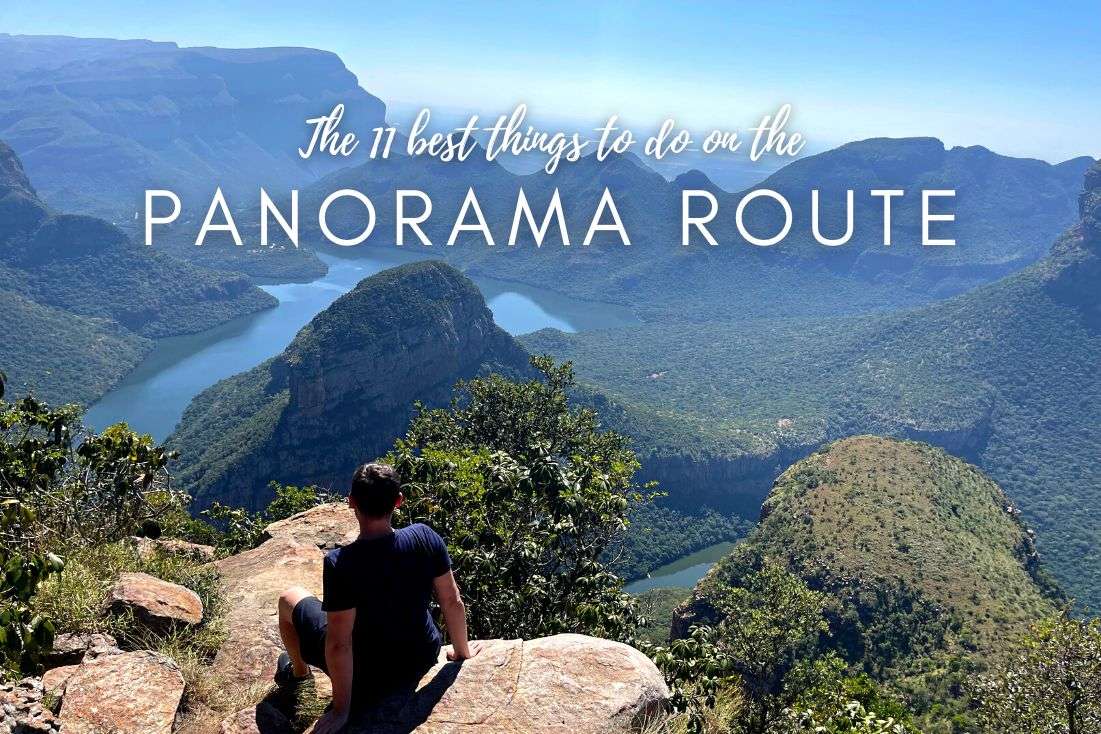
Oh, Panorama Route, I was expecting you to be good, but not this good! Be ready to experience one of the most spectacular places of natural beauty that you will see in your life. Seriously, it’s epic.
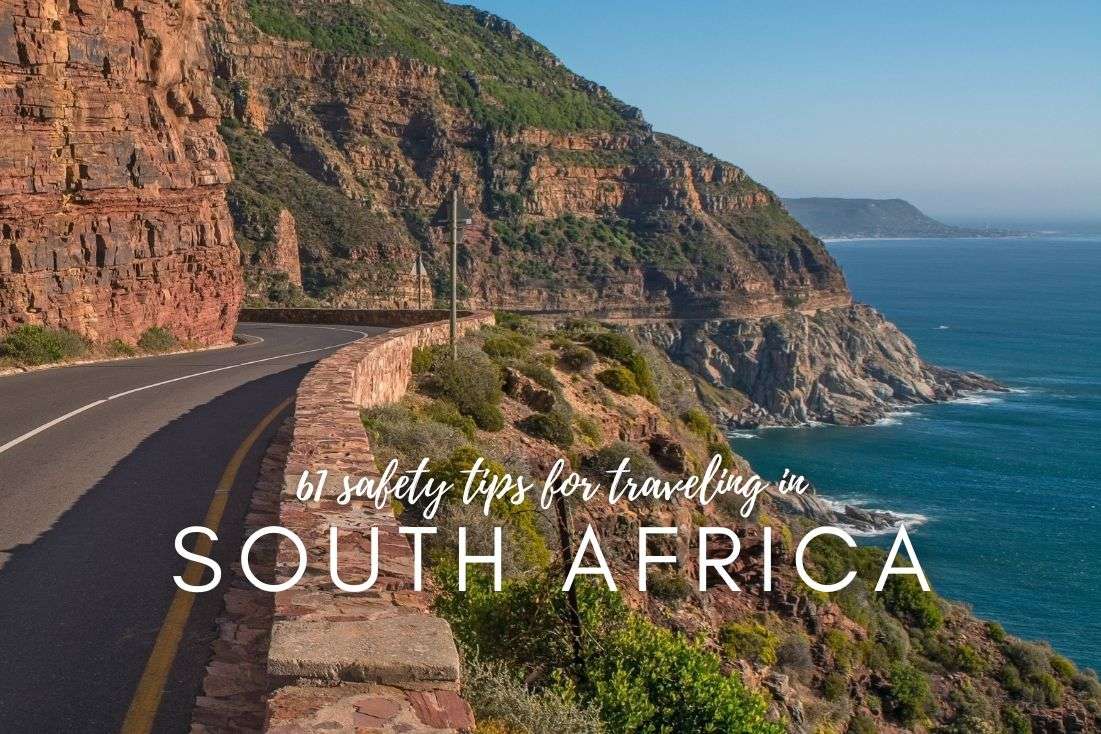
The question I get all the time is “Is it safe to travel to South Africa?” Hey, we aren’t colorblind here at Next Level of Travel, it’s a thing, ok. Let me give you some tips on how to stay safe in South Africa!
Thoughts? Give us a shout!

Hi! I’m Jan. I live in Prague, Czech Republic. I try to experience the best the world has to offer, and I don’t cease to be impressed. But if I’m not, I’m sure going to tell you! You can count on my full honesty and real opinions here. No bullcrap. I own and run several companies, which gives me great (but not unlimited) freedom to roam the world.
I was first inspired to start this blog by my own experience of researching for upcoming trips—I often struggle with a lack of good information, accuracy, and authenticity of resources. You wouldn’t believe how many “travel bloggers” don’t even visit the destinations they write about!
My goal with this blog is to provide you with complex and practical information so that you can plan your own vacation, complete with insights you’d only get if you visited the place. I also put together itineraries that are fully planned out trip guides.
Another aspect that drives this platform is my curiosity about the history, geography, politics, and economy of each country I visit, so I try to include this information in my articles, too. It’s always great to get the bigger picture, right?
And just to be clear, I am not trying to compete with backpacking blogs or provide hacks for an economical and affordable experience. My vacations follow the standard pattern of traveling by plane, staying in good hotels, and renting a car on the spot to get around. I’m also always up for a fantastic meal, though I don’t shy away from local delicacies and street food, either.
- Destinations
- Travel hacks
- Privacy policy
A first-timer's guide to Kruger National Park
Book your individual trip , stress-free with local travel experts
- roughguides.com
- a-first-timers-guide-to-kruger-national-park
Plan your tailor-made trip with a local expert
Book securely with money-back guarantee
Travel stress-free with local assistance and 24/7 support
written by Georgia Stephens
updated 15.03.2024
Kruger, South Africa 's first national park, has been part of the national psyche for as long as anyone can remember. The name alone conjures images of crackling braais and campfire tales, of dog-eared maps and inviting dirt roads, and of elephants that are inevitably too close for comfort. For many, it's one of the greatest game reserves on Earth.
Why should I go?
When should i go, how do i see the park, wait, is it dangerous, got it. any other tips.
- What shouldn't I miss?
Where should I stay?
- I'm convinced – how do I make this happen?
The park hugs the northeastern boundary with Mozambique, covering an area the size of Wales. And within its borders? The Big Five (lion, elephant, buffalo, rhino and leopard), so abundant that even a first-time visitor can cross them off their list by lunchtime, plus plenty more besides. Here is our beginner's guide to Kruger National Park .

A leopard rests in a tree © Simon Eeman / Shutterstock
Tailor-made travel itineraries for South Africa, created by local experts
_listing_1637090645279.jpeg)
7 days / from 4800 USD
Cape Town and Garden Route - a luxury guided tour
Cape Town and the Garden Route have it all - a fascinating culture, safaris, chocolate and wine tasting, and much more. Discover the coastal city of Cape Town and the Peninsula before heading out to the Garden Route with Knysna and Mossel Bay, where you'll experience some game drives.

15 days / from 4000 USD
The Cape Peninsula and Safaris in Kruger and Pilanesberg
Wildlife in South Africa is still truly wild, a fact that you'll be able to discover in this fascinating two weeks trip. Enjoy whale watching in Cape Town and first safaris in Aquila before heading up north: the famous Kruger and Pilanesberg national parks with all its wildlife await.
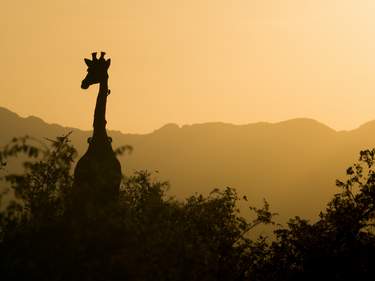
7 days / from 3000 USD
Explore the North of South Africa: Sun City and Madikwe game reserve
For those short on time, staying close to Johannesburg may make sense. On this trip, you'll arrive and depart in Johannesburg and then transfer to the theme park Lost City before continuing to Madikwe for a few days of game drives to spot plenty of wildlife.
Tailor-made trips for South Africa
Kruger offers what most others don't: the chance for a DIY safari. Many African national parks are only open to those with the deepest pockets, but partly thanks to its reliable network of roads, Kruger is accessible to all. You can experience it in your own car, in your own time and in your own way, for a fraction of what you'd normally pay in many of Africa's flagship reserves – and nothing beats having a lion at eye level. This is it: an easy, authentic experience of the bush.
The dry winter season (May to August) is best, as the bush is sparse and animals gravitate towards water holes, making them easier to spot. Temperatures also rarely climb above the late twenties during the day, and can be downright chilly at night, so you'll have a gentler introduction to the otherwise blistering African climate.
But there are perks to visiting at any time of year. In summer (November to December), for instance, the bush is lush thanks to heavy rains, the bird population hits the roof and you'll find many of the animals with young. You can't get much cuter than a hyena cub.
Make sure to read our guide to the best time to visit Kruger Park .

Animals congregate around watering holes in the dry season © WOLF AVNI / Shutterstock
You could join an organised tour in an open safari vehicle, but renting your own car offers much more flexibility. Explore at your own pace, turning off to tackle a muddy loop road or check out a water hole whenever it takes your fancy. Many animals – including African wild dogs – show up anytime and anywhere, and finding them often involves more luck than skill.
When it comes to your car, there are a few things you should know. First, you'll need a credit card, as you can't rent a car in South Africa without one – a lesson you don't want to learn the hard way. Next, go for height over style, as taller cars will help you get a better view over the long grass. A four-wheel drive is a plus (though not essential), as is air conditioning. And finally, get the best insurance you can afford – you never know what'll happen when you meet an elephant.

Elephant in Kruger National Park © Georgia Stephens
Always remember that you're driving in the presence of wild animals. Stay in your car, keep your windows up unless you're after a furry passenger, and make sure you carefully follow the other park regulations .
Learn how to act around big game, particularly elephants: give them plenty of room, switch off your engine, stay quiet and never get between an elephant mother and her calf. If you spot any signs of aggression, such as an elephant kicking up dust, flapping its ears and trumpeting, back away slowly, as they can flip cars. If you follow these rules, you'll rarely get into trouble.
Related articles from the blog

Try not to be too ambitious with your itinerary – Kruger is enormous, and distances can be deceptive. Give yourself at least five days in the south, and ten days if you also plan on heading to the wilder north.
When driving, go slow – a car crawling along at 15km/h is the mark of a Kruger veteran. Scour the long grass for a flick of an ear or a swish of a tail and listen for anything unusual, like the crunching of grass underfoot or a tell-tale alarm call. It also pays to know where to look: lions often nap in the shade, while a leopard is unlikely to stray far from cover.

The kudu, a species of antelope © Georgia Stephens
What shouldn't I miss?
A bush walk. This is one of the only opportunities you'll get to head off into the long grass on foot – accompanied by a professional guide, of course. You'll gain a deeper understanding of the park's flora and fauna, and there's always the possibility of bumping into big game.
If that sounds too adventurous, then opt instead for an organised game drive either early in the morning or late at night. You'll have the chance to spot nocturnal animals, including genets, civets and owls, which you wouldn't otherwise see (as self-driving is only permitted in daylight hours). To book, enquire at any of the main camps.
The south of the park is best for first-time visitors as it has the densest population of big game, and there are some drives here you definitely shouldn't miss. First, there's the route from Skukuza camp to Satara: watch the sunrise from the bird hide at Lake Panic, then head north via the southernmost baobab tree. Just before you hit Satara, turn onto the S100 – the park's legendary white lion is most often spotted here.
Another must is the route from Lower Sabie to Tshokwane Picnic Spot. The road winds steadily higher until you reach Nkumbe lookout, where the savanna stretches out below you for miles. This really is one of Africa's great views.
There are 24 fenced rest camps, with accommodation ranging from simple thatched rondavels with communal facilities up to luxury bungalows.
Satara is based in big cat country, and its circular clusters of rondavels are particularly atmospheric when lit by the glow of the braais at night. Skukuza is the park's HQ and has the feel of a small town, while Olifants wins the prize for the best view, looking down over the Olifants River.
The Rough Guides to South Africa and related travel guides
In-depth, easy-to-use travel guides filled with expert advice.

For more of a bush feel, try the tents at Letaba , set deep in mopane forest, or Tamboti – this secluded camp is visited nightly by honey badgers and genets, and hyenas often prowl the fence. If that's still not adventurous enough, book to stay at either Sable or Shipandani after hours.

Rondavel accommodation © Georgia Stephens
I'm convinced – how do I make this happen?
Accommodation sells out quickly in Kruger, particularly around public holidays, so it pays to book several months in advance. You will also need to pay a daily conservation fee . This adds up quickly, so it's worth investing in a Wild Card if you're staying for a week or longer, which works out cheaper.
There are three main options to get to Kruger: fly to Johannesburg and then drive just over four hours to the park; take an internal flight from Johannesburg to Kruger Mpumalanga airport and then drive an hour; or take an internal flight from Johannesburg straight into Skukuza.
Georgia flew to Kruger Mpumalanga airport with South African Airways, which introduced the new Airbus A330-300 on its daily London-Johannesburg service in 2018. Return flights start from £957.01. For more information, visit flysaa.com .
Top image: Lion mother and cub © Thomas Retterath / Shutterstock
Subscribe to The Rough Guide to Everywhere now ( iTunes ; Soundcloud ; Spotify ).

- See & Do
- South Africa
Planning your own trip? Prepare for your trip
Use Rough Guides' trusted partners for great rates
Travel advice for South Africa
From travel safety to visa requirements, discover the best tips for traveling to South Africa
- Crime and personal safety tips South Africa
- Eating and drinking in South Africa
- Getting around South Africa: Transportation Tips
- How to get to South Africa
- Travel Tips South Africa for planning and on the go
- Best time to visit South Africa
- Weather in Johannesburg in May
Find even more inspiration for 4 here
Ready to travel and discover south africa, get support from our local experts for stress-free planning & worry-free travels.
- Where to stay
- Itineraries
- Travel advice
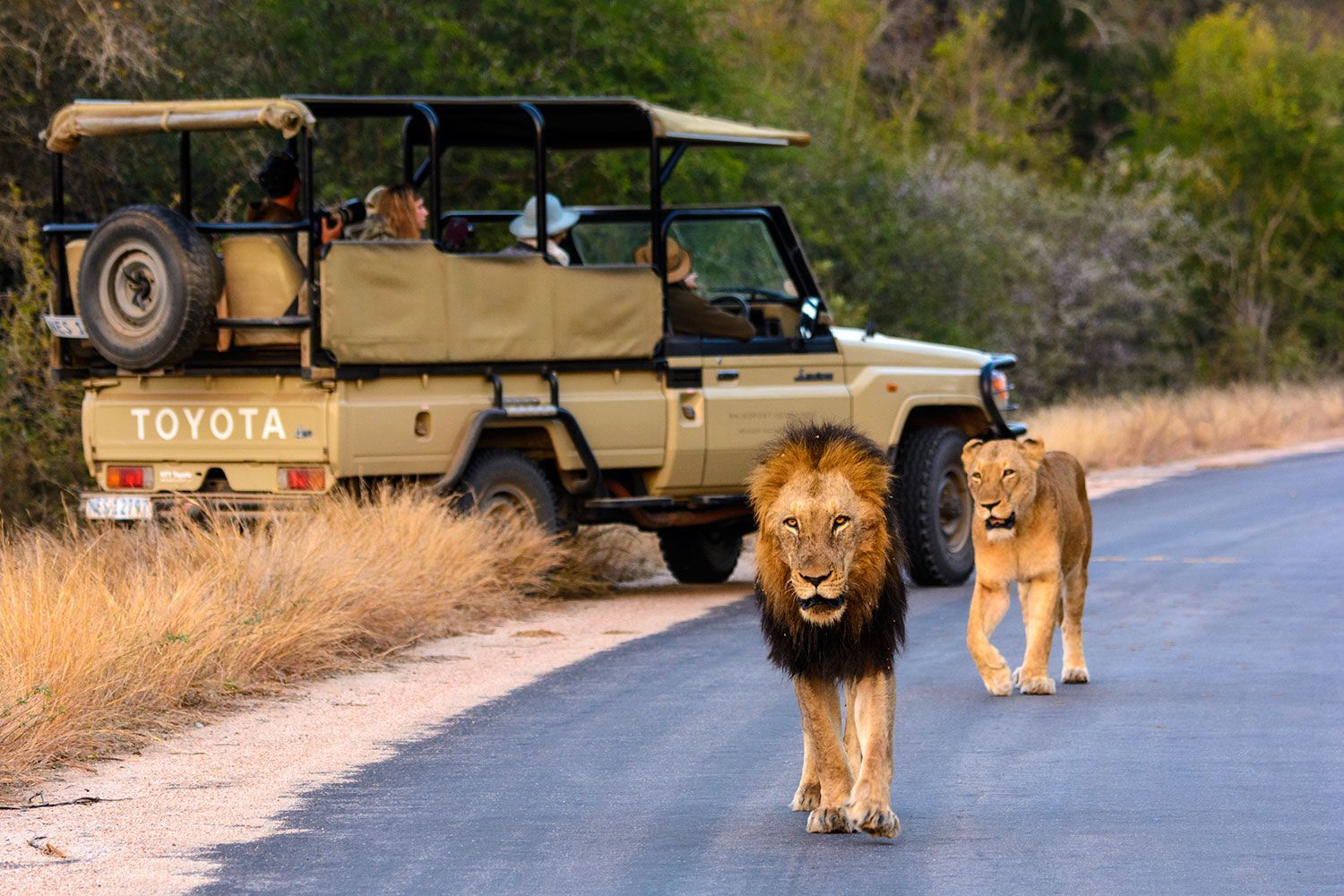
Wild Adventure Packages
Click through to see our monthly specials
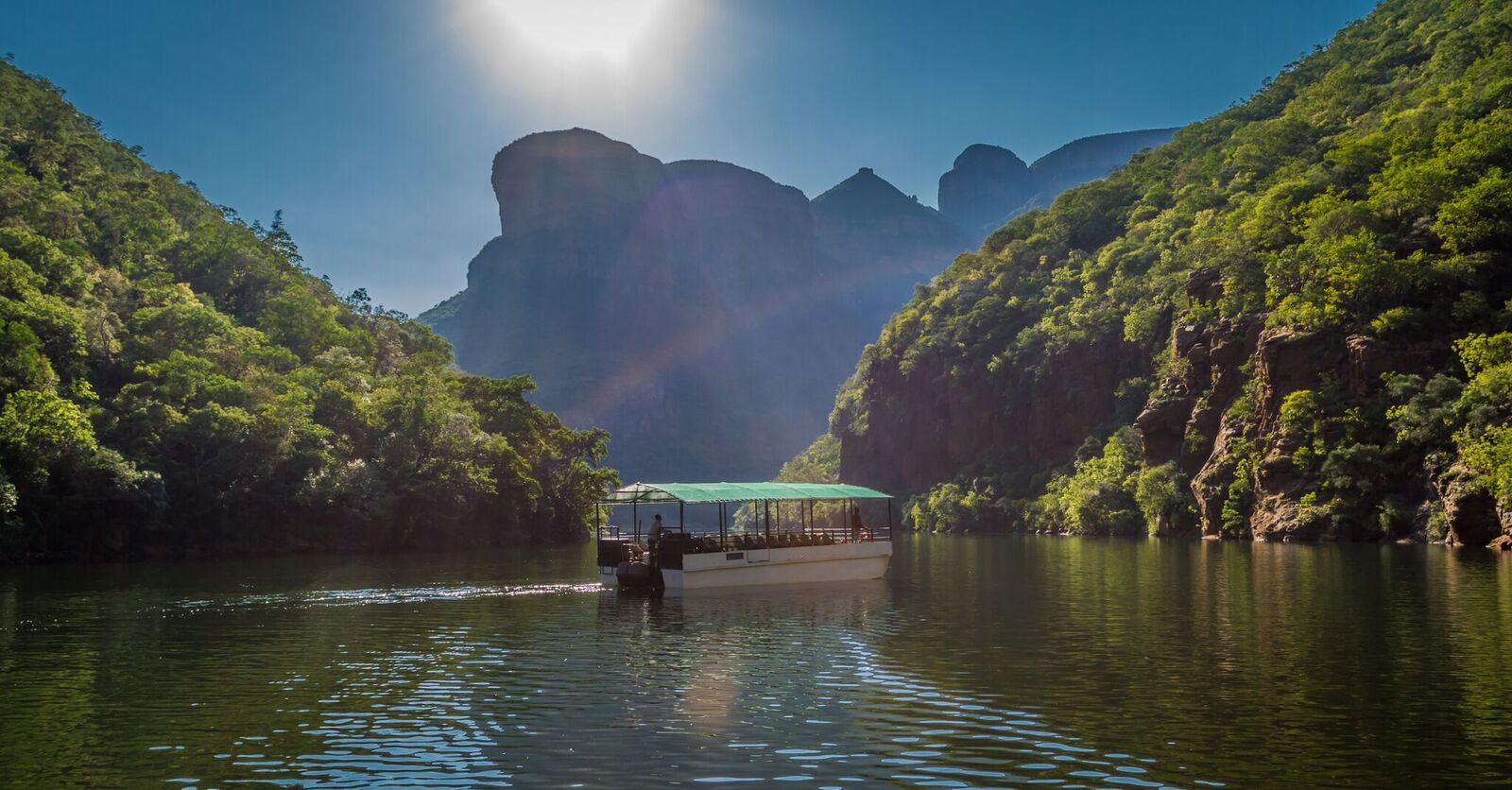
Activity of the Month
Not sure what to do in Hoedspruit? Have a look!
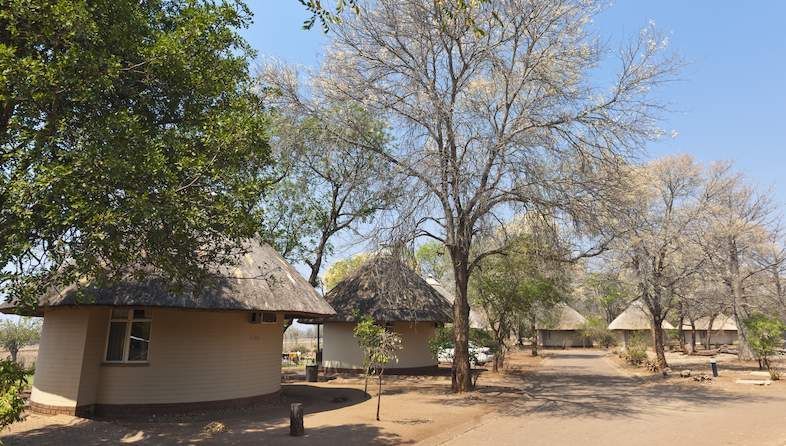
Wild About Kruger
Speak to us about all your Kruger National Park needs!
A Comprehensive Guide to Planning a Trip to The Kruger
Ready to Start Planning Your Visit to the Kruger National Park? Your Comprehensive Guide. Embarking on a journey to the Kruger National Park is an odyssey into the heart of Africa’s untamed wilderness. To ensure your adventure is seamless, let’s dive into the intricacies of planning, from entrance fees to shopping within the park.
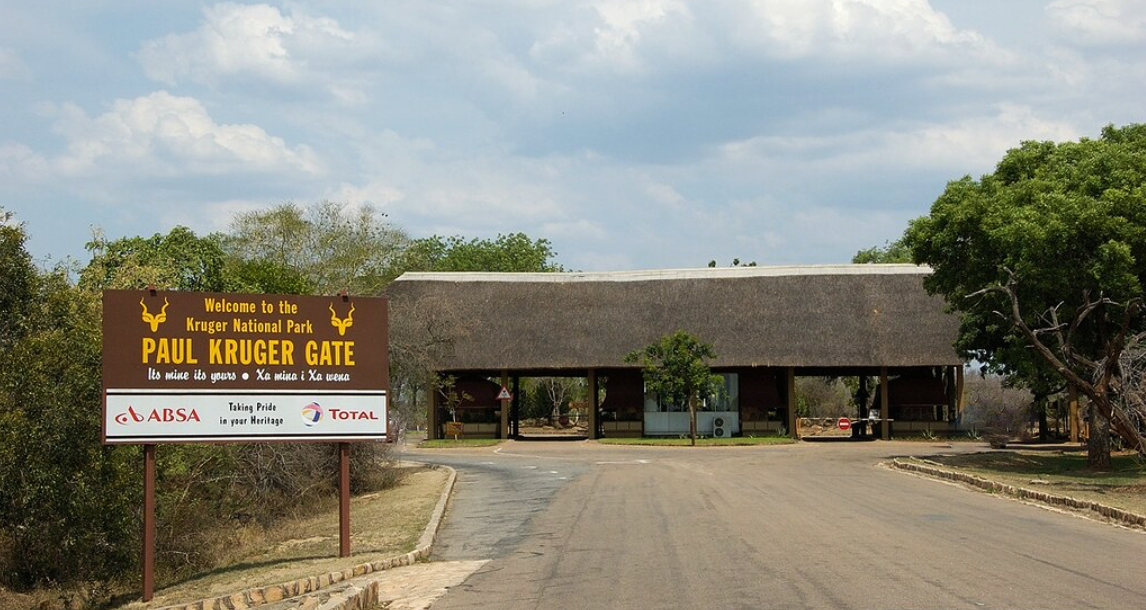
Unlocking the Gates of Kruger
Navigating the entrance fees to kruger national park.
Your journey begins at the gates of Kruger, where the magic unfolds. Understanding entrance fees is crucial. As of 2023, the cost varies for international and local visitors. Check the official Kruger National Park website for the latest tariffs.
Choosing the right G ate for entry
Selecting the right gate sets the tone for your Kruger experience. Each gate offers unique landscapes and wildlife. Research gate options and choose based on your preferences, considering proximity to your accommodation and ecosystems.
For many, Hoedspruit is the gateway to Kruger. Whether you’re flying in or driving, familiarize yourself with the route. The drive is an adventure in itself, offering glimpses of South Africa’s scenic beauty.
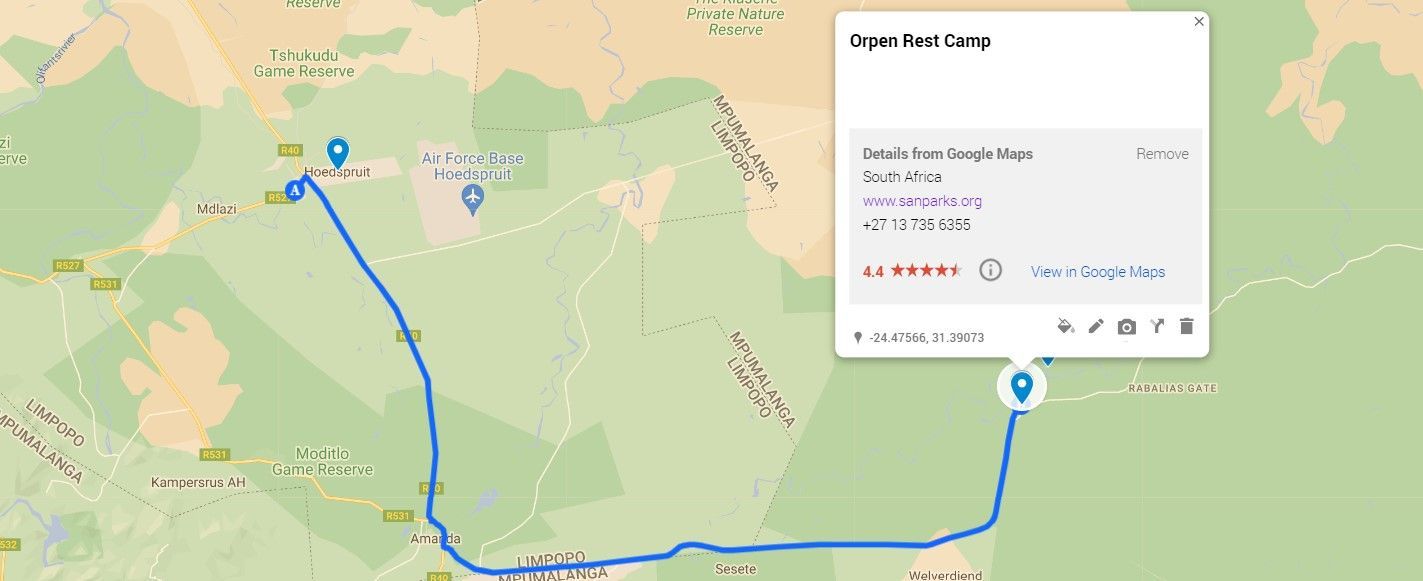
Your Vehicle, Your Expedition
In Kruger, your vehicle is your key to exploration. The great thing about the Kruger is tat it is one of the largest reserves in Africa that allows self drive, which means you are in control of where you go nd where you stop. Although all vehicles can drive very well to almost all locations, it is important to assess the road condition and how it applies to your vehicle. Some roads are 4x4 only. Do not enter these in a small vehicle. All gravel roads are maintained, however during the rainy season roads can wash away, of become damaged. It is recommended for gravel roads to use a vehicle with high road clearance, enhancing your access to remote corners.
Building Your Itinerary for The Kruger National Park
The Kruger spans vast landscapes, and planning your route is essential. Research the main routes and loops. Some rest camps are far apart, and would take more than a day's drive, as the road speed limits are quite low. Stopping often also slows down the whole day. So plan your camps close enough to drive to without having to break the speed limits.
Game viewing is best in the early morning hours and late afternoon, when the temperature is lower and the animals more active. During the hottest part of the day, big dams can be a good place to sit and watch as animals come for a drink to cool down.
The Unexplored Corners – Off the Beaten Tracks
Venture beyond the main routes for a more intimate experience. Explore lesser-known loops, like the S36, leading to the Muzandzeni Picnic Site, revealing secluded wonders of Kruger. The landscape changes constantly and there are a lot of interesting corners, look-out points and picnic spots to explore in the Kruger.
Kruger National Park Rest Camps
Selecting a rest camp is pivotal. Each camp has its charm and unique offerings. Whether it's Skukuza for its central location or Satara for its resident lion pride, choose based on your preferences and the experiences you seek.
Camping Under the Stars
For the adventurous spirit, camping in Kruger is unparalleled. With well-equipped campsites, you're never far from nature. Remember to book in advance, especially during peak seasons.
Kruger National Park Shopping – Essentials and Souvenirs
Pack wisely, but don’t forget the essentials. Most camps have shops stocked with groceries and camping gear. Immerse yourself in the local crafts and bring home a piece of Kruger.
Kruger National Park Restaurants
Explore the diverse culinary offerings in Kruger. Whether it's a braai (barbecue) at a campsite or indulging in a restaurant meal, savor the flavors of the bush. Most of the major rest camps have restaurants, open for lunch and dinner
Weather and Clothes: Nature’s Mood
Pack for Kruger's diverse weather. Summers are hot with occasional thunderstorms, while winters are dry and cool. Layering is key, ensuring you’re prepared for temperature fluctuations.
Following the Rules of the Wild
Respect for nature is paramount. Follow park rules, like speed limits and viewing guidelines. Maintain a safe distance from wildlife, ensuring a harmonious coexistence.
Now armed with knowledge, plan your Kruger adventure. Refer to the official Kruger National Park website, finalize your itinerary, and get ready for an expedition into Africa's wild heart.
Frequently Asked Questions
Are guided tours available in kruger.
Yes, guided game drives and walks are offered by the park and private lodges. Check availability and book in advance.
Can I bring my own vehicle into Kruger?
Absolutely. Self-driving is a popular choice, providing flexibility in exploring the park at your pace.
Are there medical facilities in Kruger?
Yes, main rest camps have first-aid centers, but it's advisable to carry a basic medical kit.
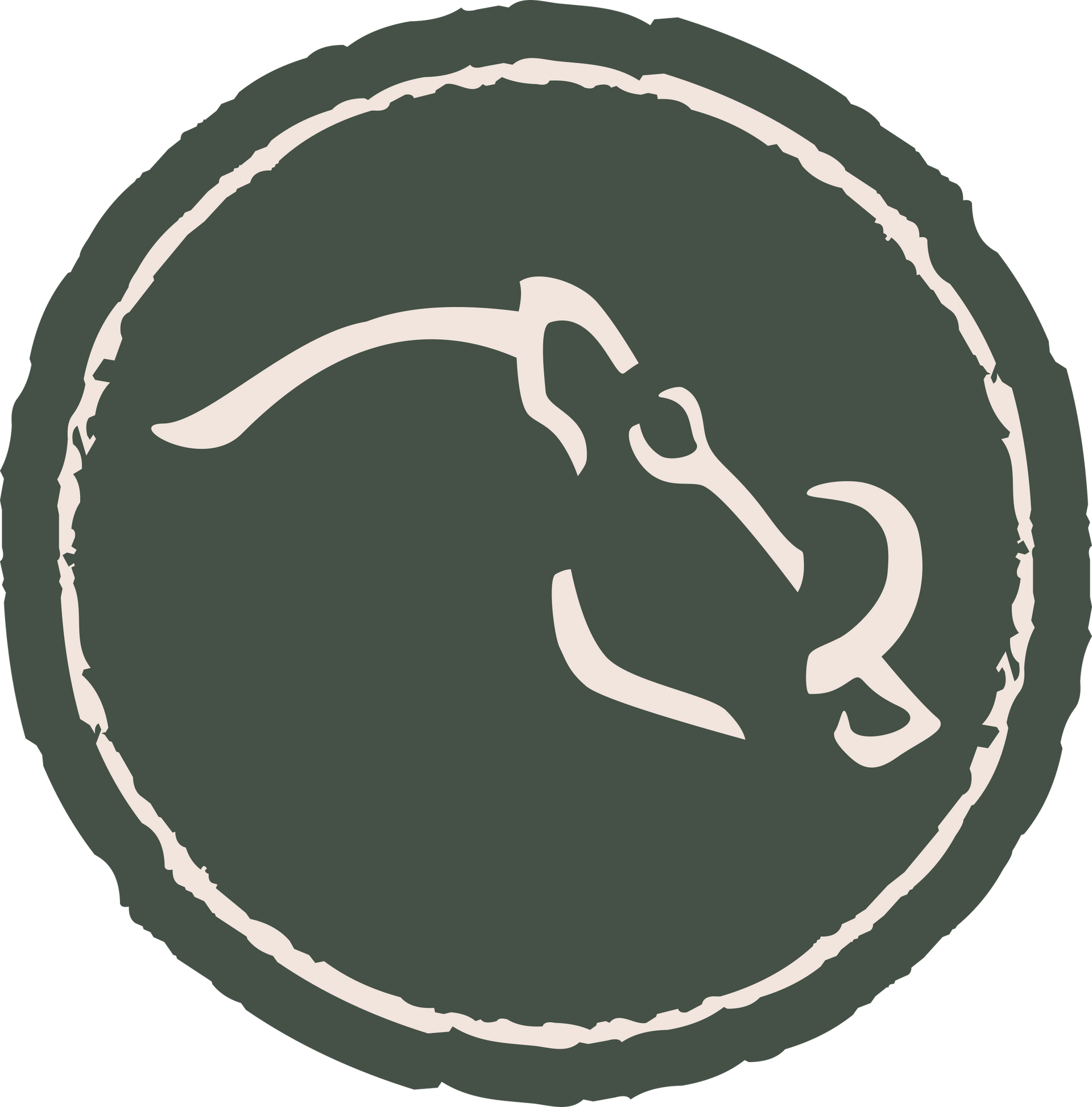
Explore the Wild About Kruger series, your comprehensive source for discovering the magic of Kruger National Park from the hub of Hoedspruit. Here, we delve into all you need to know, from incredible wildlife experiences to insider insights and travel arrangements.
< Older Post
Newer Post >
Share This Article
Related articles.
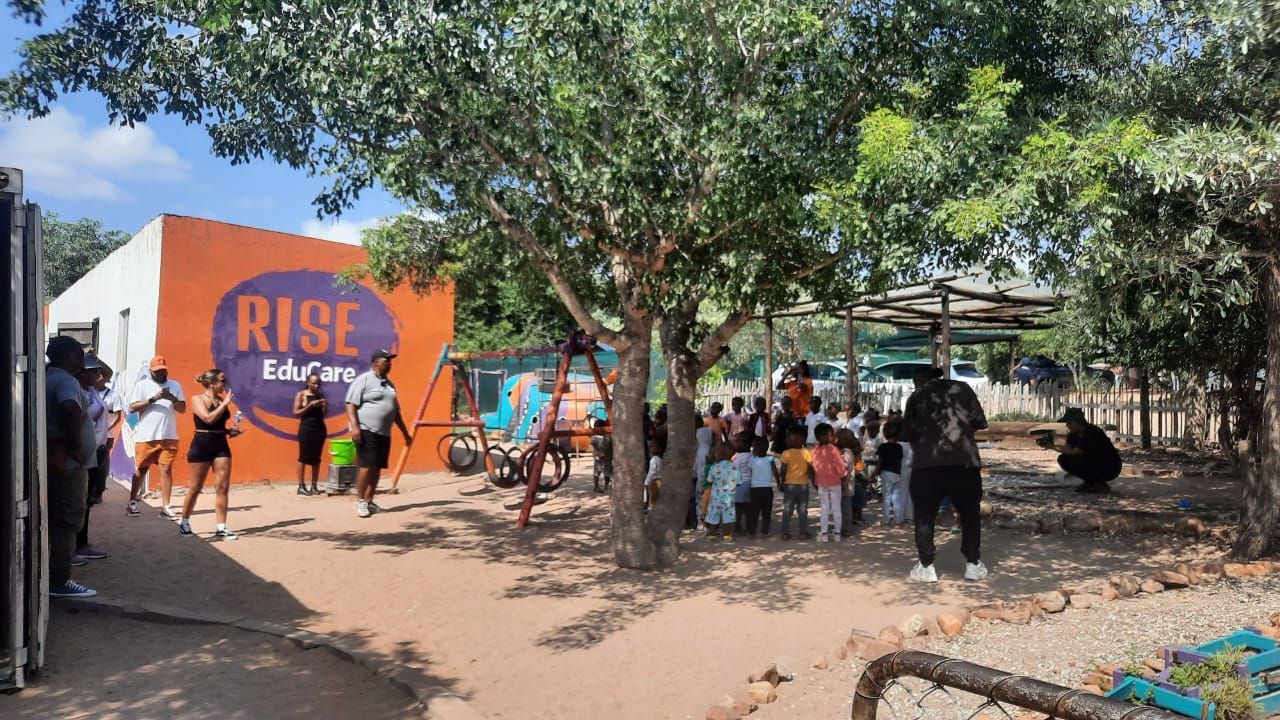
Sasol Rewards Mzansi Tour visits Nourish Eco Village

Easter Weekend Travels to Hoedspruit and Kruger National Park
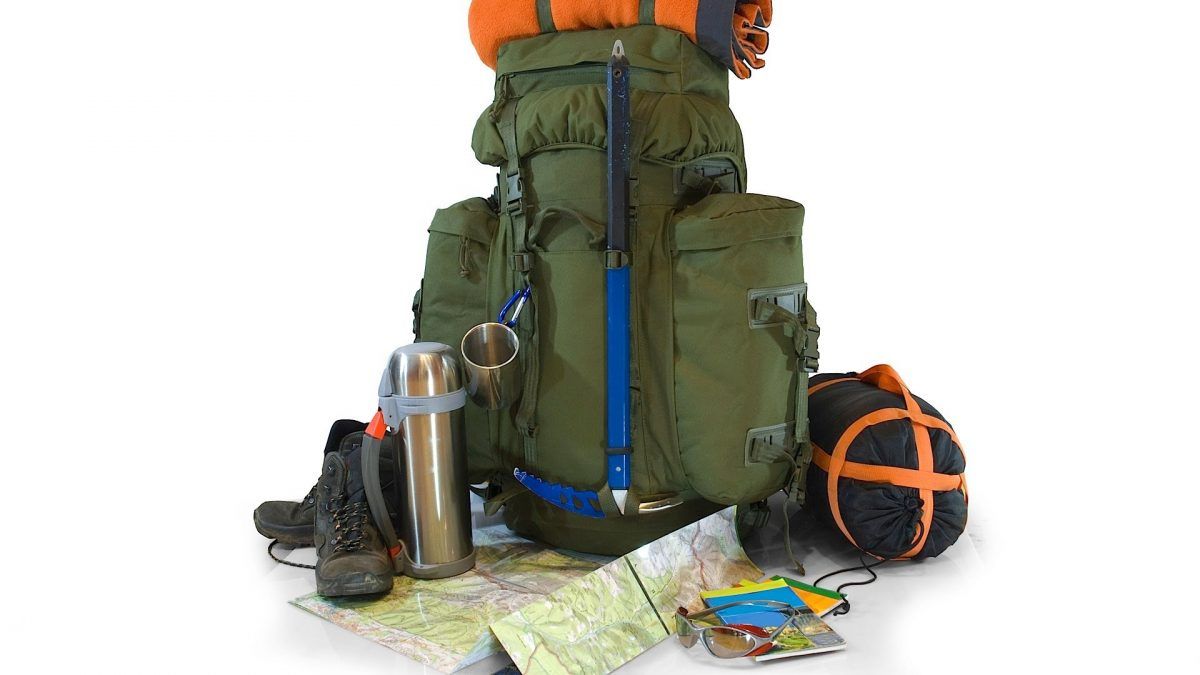
Essential Packing List for a Kruger National Park Self Drive Safari

Why Choose Top Safari Game Lodges Near Hoedspruit?
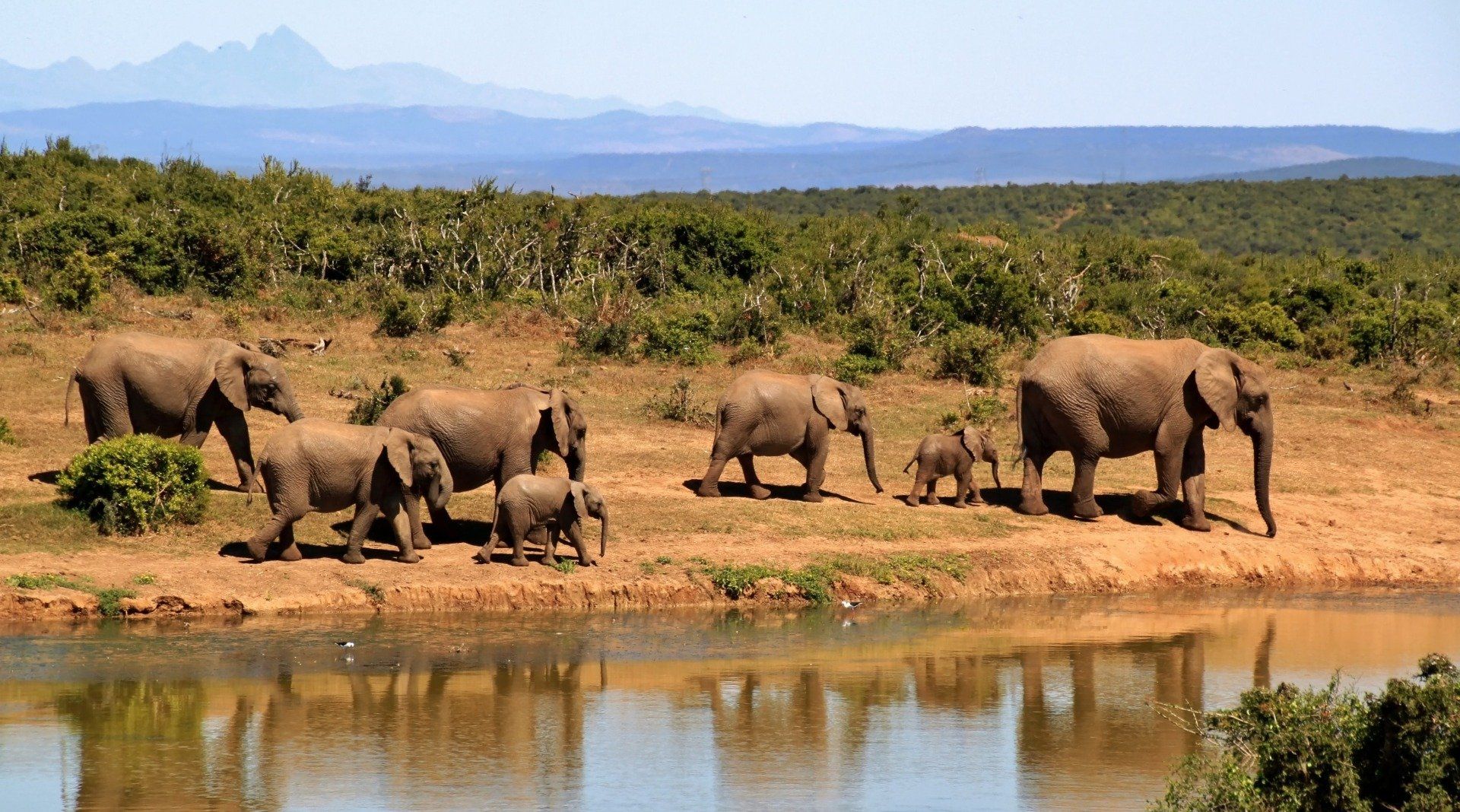
Day Visit to Kruger National Park from Hoedspruit
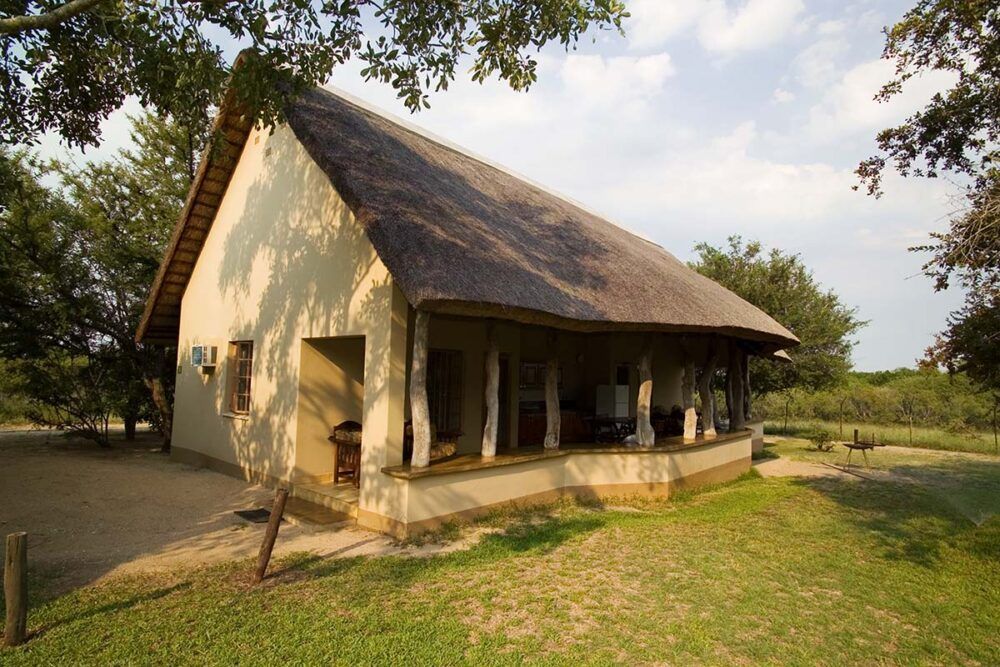
A Guide to Orpen Rest Camp | Kruger National Park
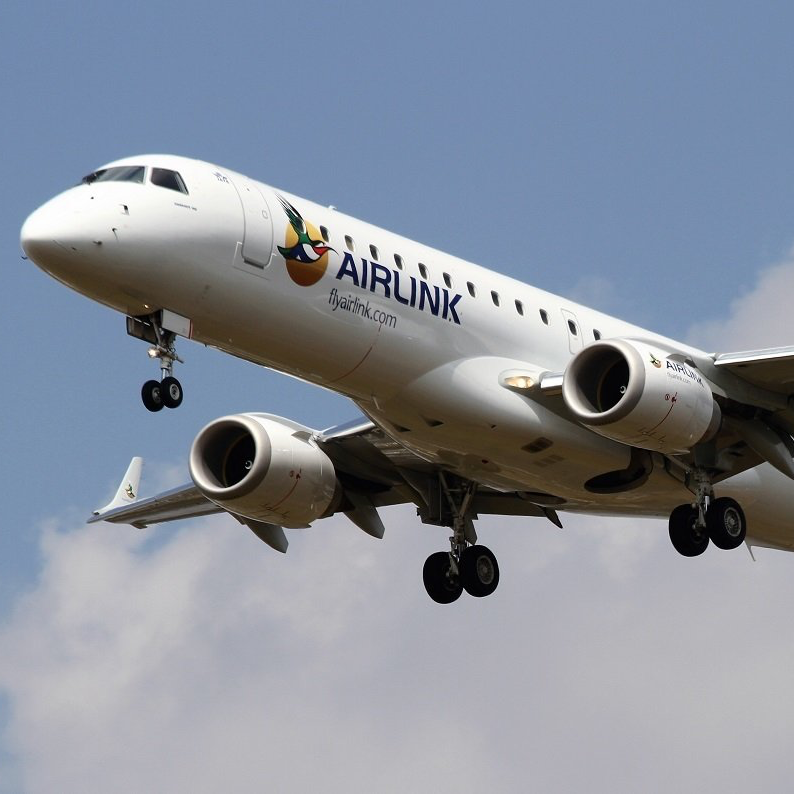
Flights to Hoedspruit
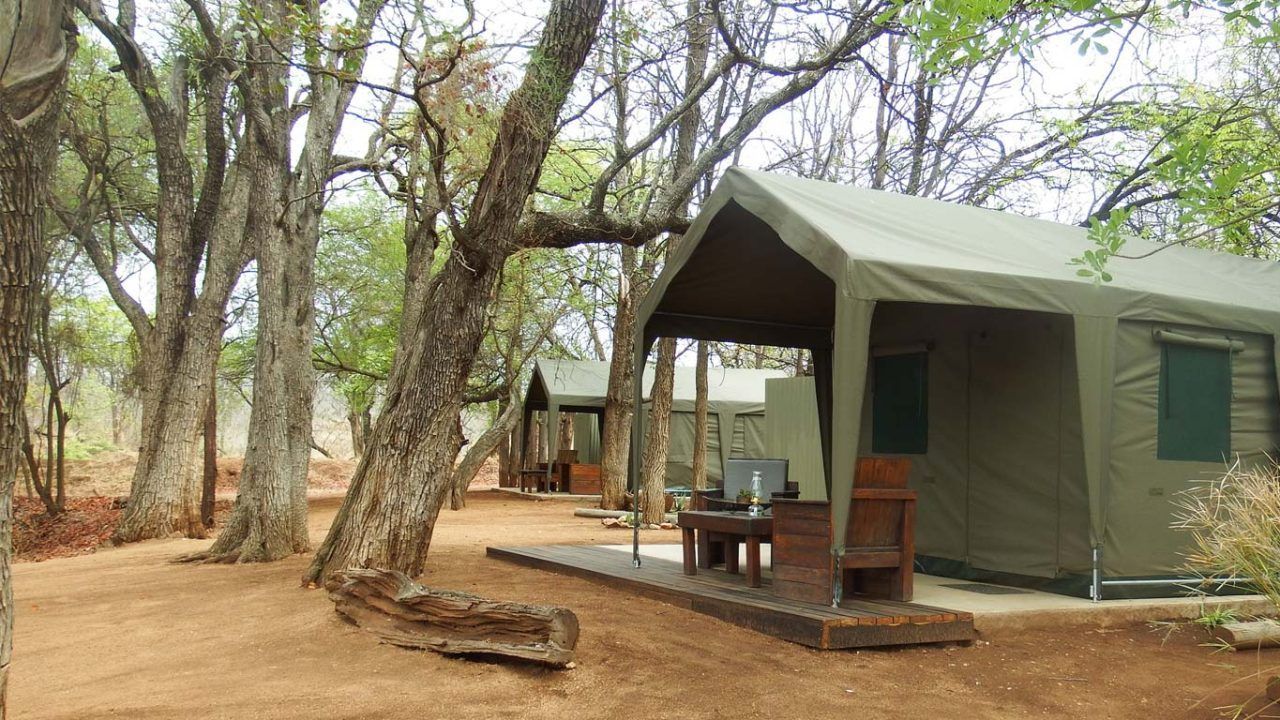
Are Budget-friendly Lodges in Hoedspruit Worth It?
Hoedspruit articles, list or advertise with us.
WILD ABOUT HOEDSPRUIT is the main online information hub for all things Hoedspruit South Africa. By listing with us, you not only get a prime advertising platform for Hoedspruit residents, but also all incoming visitors and surrounding communities.
HANDY LINKS
Website built by: Safari Web Online
All Rights Reserved | Wild About Hoedspruit
Going Awesome Places
Detailed itineraries + travel guides
How to Plan a Safari in South Africa – Kruger National Park and Sabi Sands
Last Updated March 27, 2024 William Tang
You are here: Home » Travel Guides » How to Plan a Safari in South Africa – Kruger National Park and Sabi Sands
When we were planning our honeymoon and deciding where we could go, South Africa was on the top of our list because it was a country where we felt like we could get an incredible balance of wildlife, outdoor adventure, luxury while staying on a budget, city exploration, culture, and sweeping scenery. As we delved deeper in our trip planning, it became clear that the Kruger National Park and nearby private game reserves was the best choice for safari.
If you’ve ready any of my other guides like my Tokyo food guide , Atacama Desert , Torres del Paine , Taiwan , Newfoundland , Inca Trail , or Iceland , you’ll know I love to get right into the nitty gritty details so get your cup of coffee ready because there’s a lot of knowledge to share that you probably won’t find anywhere else. We spent a total of 2 weeks in South Africa but I’m going to be focusing on our nine days in the Kruger National Park region. There’s a small breather built in there but I’ll leave that for the full review of how to plan a trip around the Panorama Route. Let me show you how to plan a safari in South Africa. Let’s us help you plan your safari!
Read more about South Africa
- Kruger National Park for first timers
- 13 of the must-see things in Africa
- 1 week Cape Town itinerary
- What a South African safari is like
How to get the best deals in travel
- Hottest deals – Bookmark the travel deals page .
- Car rentals – stop getting ripped off and learn about car rental coupon codes .
- Hotels – Use corporate codes or get Genius 2 tier with Booking.
- Flights – Have you ever heard of the “Everywhere” feature ?
- Insurance – Make sure you’re covered and learn more about where to buy the best travel insurance .

In This Article
First in our honeymoon vlog series
What’s so tricky about planning a safari to south africa, being prepared for south africa, starting off in johannesburg, private game reserve lodge, kruger national park, arriving and departing south africa, available airports near kruger national park, your transportation options, driving in south africa, private reserves, does order matter, what did we prefer, things you have to pack, vodacom experience, day 1 – joburg, day 2 – driving up to elephant plains, day 3 & 4 – full days in sabi sands, day 5 – farewell to elephant plains, day 6 – entering kruger, day 7 – self-drive choose-your-own-adventure, day 8 – relocating to lower sabie, day 9 – finale, travel resources for your next trip.
To whet your appetite, this is part one of honeymoon series that covers our journey from Toronto to South Africa. Feel free to start here or if you’d like to jump right into it, head to the Honeymoon Vlog playlist .
Table of Contents
Planning A Trip to South Africa
Now I’m sure many of you reading this have the same thoughts when I first started building our itinerary – can I plan an independent vacation in South Africa without the support of a tour company? I was nervous about it because there seemed to be a lot of things I didn’t know or understand. Luckily, I had a friend that talked me through it. I had a lot of questions as you can imagine.
Before we can dive into the fine details of the 9 day South Africa safari itinerary, it makes sense to set the stage and talk about the basics for what you need to know.

Confusion and overwhelmed – the feelings I had when I first started planning for the honeymoon. I can’t be the only one right?
I’ve been to Africa before with my trip to the Omo Valley in Ethiopia and cruising the Nile in Egypt and I knew that I had to cater our travel style to the region but there were a ton of questions swirling that were unique to South Africa.
The truth is that South Africa is a more developed country and I suppose more Western friendly in some ways and so you’re afforded with more options in the country when it comes to getting around. More options though mean more research. Are the roads safe? Should you book transfers? Is it better to fly to Kruger?
Then there’s the safaris themselves which are a whole other animal (pun intended). This isn’t exactly a trip to the zoo. It was clear from the onset that Kruger was a great place especially for first-time safari goers. However, the deeper you go, the more you realize how massive the park is. Then there’s the question of private reserves versus doing the park. Oh wait, then there are all the outlying areas that have private reserves which leads to more analysis paralysis !
At this point you should be nodding your head off .

I’ll get into more of the specifics but if I were to list my top 6 things that I learned that I would like to impart to you guys to make sure you’re as prepared as possible, it’d be this:
- Get data – The one constant with how technology has changed how we travel. Helpful in a jam and for most navigation purposes. We opted to go pick up a Vodacom SIM immediately once we landed in Johannesburg but there are other options which I’ll get into later.
- Print things out – The immediate contradiction to the first point. Google Maps is also going to get you in trouble especially to get to the private reserves. Don’t dismiss the instructions they send to you and make sure you have a print out. Printing out reservation confirmations is a good idea because there’ll be points in the trip where someone is going to be checking them.
- Beware of the traffic cop – Sadly, this is still an issue in South Africa. Know where to stick to speed limits and what to do if you get pulled over. Read the Getting around South Africa section for tips.

- Buy an animal book – I usually not a fan of buying books and certainly didn’t do it when we went to Peruvian Amazon but when you’re seeing so many animals every day and you want to keep track of what you’ve seen, it’s actually quite handy to have one of these Kruger animal guides .
- Withdraw Rands at home – Like the South African adapters, you’re not going to have time to worry about these things so my recommendation is to withdraw what you need for your safari at home. The exchange and commission rates are a rip off at the airport. Don’t do it!
Where did we stay?

This is a complex and loaded question but let me attempt to break things down to be as simple and as to-the-point as possible. Click into the other links where I go into more depth for Elephant Plains and Kruger National Park.
Since we ultimately decided to drive from Johannesburg, we needed a few accommodations in the city on the book ends of our safari.
SUPER AFFORDABLE

AERO GUEST LODGE
Quite the lovely property near the hotel. With ample parking and gated, we were given a spacious room that was perfect for our short overnight needs. Breakfast is included, airport transfers and wifi as well.
TripAdvisor
Booking.com
GREAT ON POINTS

PROTEA OR TAMBO HOTEL
Everything is what you’d expect from this large chain of hotels in South Africa that is under the Marriott umbrella. The lobby is quite beautiful with that vintage aviation feel. The rooms are clean, spacious, and modern.
Travel Hack – Protea is under the Marriott brand but what most don’t know is that almost all of them are low category hotels (Category 1 in this case). This means that South Africa is the perfect place to spend your Marriott points. It only costs 7,500 points to stay here per night. If you’re in Canada, just sign up for the Marriott Bonvoy Amex and get 50,000 points. That’s 6 nights right there.
Book with points

The truth of the matter is that I wouldn’t have been able to figure out what private reserve to pick without the help of Andrea from Wandering iPhone . I seriously needed the recommendations because even when you narrow things down to the Sabi Sands Game Reserve and you browse through the list on TripAdvisor , it’s impossible to grasp all the nuances of how one is better than the other no matter how much you filter it.
When Andrea told me that Elephant Plains was a property that she stayed at and loved and on top of that was an amazing balance for price and quality of service, I was sold . I was glad to take the recommendation from someone that’s been there and true to her word, when I did some price comparisons, Elephant Plains was far and beyond the most reasonable and that’s even with the fact that I booked the honeymoon suite.
For the full review of my experience at this private reserve game lodge in, make sure to read the Elephant Plains review .
If I were to do it again, I’d go back to Elephant Plains without hesitation. The only reason I would look at trying somewhere else would be because I might want to see a different animals that don’t commonly pass through the lodge’s land.
Why Sabi Sands?
Located directly adjacent to Kruger National Park, Sabi Sands Game Reserve was a no brainer for me because it’s the most well known of game reserves in the region. It covers 65,000 hectares where the land is split between a number of game lodges owned by now third and fourth generation land owners. This is unique because if you take a look at the map, other private reserves are not necessarily directly connected with Kruger.

I didn’t understand what that meant before going but having seen it with my own eyes, the concentration of wildlife that tread through and call this their home is incredible. It’s so well known because of the high probability of close encounters with the animals that are considered elusive including the leopard. It was crazy at Elephant Plains because in a matter of 3 days we had handily seen Africa’s “Big Five” which includes the lion, leopard, buffalo, elephant, and rhino.
Biodiversity is intriguing as well because the Sabi and Sand Rivers run through the reserve. It also helps that there are no fences at the boundary between Kruger and Sabi Sands which means animals freely roam through both sides of the border.
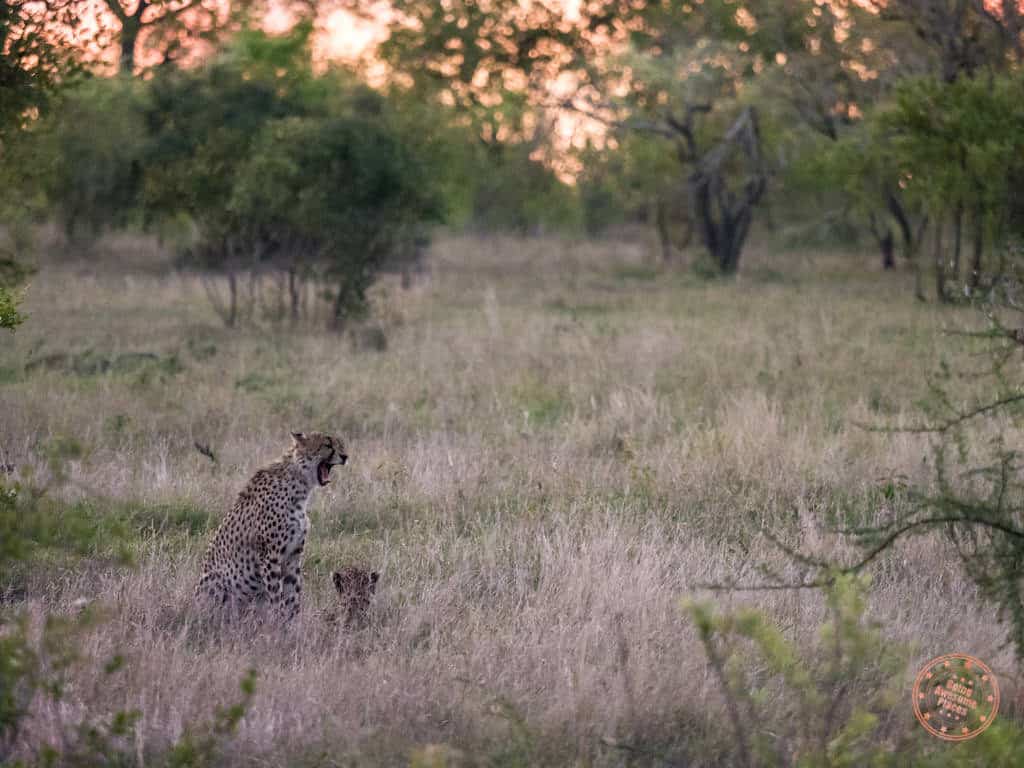
This can be an incredibly complicated answer but if we’re taking this from the perspective of 1) This is your first time in Kruger and 2) You have limited amounts of time, your choices are going to start narrowing down to where it becomes much more manageable.
I do a full review of Kruger National Park as a first-timer so make sure you head there first because there is a ton of valuable information in there and some ranting as well.
Ultimately my decision process for how to plan a South Africa safari looked like this:
- We had 3 nights to work with
- The way things worked out with, Elephant Plains and adding Panorama Route in the middle, we were way closer to Paul Kruger Gate than any other gate
- Skukuza rest camp just seemed to make sense to start with because it’s the largest and somewhere that would be great to ease into the experience
- With one rest camp left, there were thoughts about bushveld camps or safari tents, and there was also the thought about going north up to Satara to get a change of terrain but ultimately Lower Sabie just made more logistical sense since we’d be exiting out of Crocodile Bridge
Bottom line, wherever you pick isn’t going to be a big difference as your first time. It was nice to be able to get a look at two camps so be able to explore different roads but I truly think you can’t go wrong with anywhere.
Travel Tips – Book early. You can start booking one year out so the earlier you can reserve your activities and most importantly accommodations, the better.
Alternative accommodations
One thing that could be an interesting option is, what if you didn’t stay inside the park but instead “commuted” in and out every day? You wouldn’t get the camp experience but there are a few advantages to this.
- More comfortable stay at a hotel vs the bungalow accommodations inside Kruger
- There is the Kruger Gate Hotel . This used to be a Protea property and connected to the Marriott but it now an independent hotel.
- Not be restricted by what’s available in the rest camp
- If you’re not interested in self-drive, you can work with a tour operator for a more all-inclusive experience
- You will end up wasting extra time each day going through the road that leads in and out of the gate
- More time management as you need to account for the time it takes to get to the gate right when it opens if you’re an early-riser or if you’re pushing the limits and wanting to just make it out of Kruger before the gates close
- Will not be able to take advantage of the activities offered within the camp since you need to stay at that camp to be eligible for booking them
- Will not get the full Kruger experience
- You won’t be able to venture that far if you’re staying at one hotel the entire time
- Will be much more challenging to go back to the hotel to rest in the heat of the afternoon. Instead you’ll likely have to just hangout in a rest camp or rest stop in between

If we just focus on getting in and out of the country, you’re most likely looking at quite a long journey unless you’re already in the continent.
The primary airport you’ll be flying into is the OR Tambo International Airport in Johannesburg with code JNB. This airport is serviced by a number of big carriers but not all so you’ll most likely have to rely on airline alliances to hop down here. It’s the closest you’ll be able to get to Kruger National Park as your first entry into the country.
Travel Hack – South Africa is great destination to use your frequent flyer miles. I ended up using my Aeroplan points for this trip got amazing value especially when you consider all the stopovers I was able to pull off. I only paid $203.60 CAD per person.
Travel Alert – If you watch VLOG 5 , you’ll see how we had our luggage broken into flying out of OR Tambo in Johannesburg. I would be very careful flying in and out of that airport. Do not leave any valuables inside.
Getting around South Africa

There are a 4 different options for getting to your safari experience assuming you’re starting from Johannesburg or connecting through there.
- Fly into Johannesburg and rent a car
- Fly into Johannesburg, connect to one of the 3 airports that service Kruger, and then rent a car
- Fly into Johannesburg, book a transfer or full tour
- Fly into Johannesburg, connect to one of the 3 airports that service Kruger, then book a transfer or full tour

The main international airport is of course O.R. Tambo in Johannesburg (JNB) . From there, your best bet is to fly to Nelspruit Airport/Kruger Mpumalanga International Airport (MQP) . This is your main gateway to the southern sector of Kruger National Park.
If you’re looking to gain access to the central sections of the park, you can fly into Hoedspruit (HDS) . For the north, fly into Phalaborwa (PHW) .
You can also fly straight into Kruger National Park with the Skukuza Airport (SZK) . Flights from Airlink by South African Airways can take you in for roughly $300 USD round trip from Johannesburg. There are direct flights from Cape Town as well. Just do a quick search on Skyscanner .
Beyond that, then you’re talking about private chartered flights to some of the lodges that have airstrips.
1. Fly into Johannesburg and rent a car
This is the option we selected and it worked out for us fairly well as it gave us full freedom to explore on our own and see the countryside as well.
Book a rental car with pick up and drop off at the Johannesburg airport and you’re off. The drive from Johannesburg to Elephant Plains takes a whopping 7 hours while driving from Kruger National Park via Crocodile Bridge back to Johannesburg takes 5-6 hours.
- Cheaper option than flying and gets cheaper if you have more passengers in the car
- The N4 is uneventful but once you get of to the smaller roads, it’s quite the scenic drive
- There’s the possibility of exploring more around Johannesburg and places in between (not something we did)
- You waste a lot of time driving and it’s tiring. 6-7 hours each way means you need to account for half a day at the start and end of the trip
- The car rental may end up costing more than you think once you add in insurance and tolls
In retrospect, it might’ve made more sense to fly into Hoedspruit or Skukuza to save on time and energy. I’m not sure why I didn’t look into it at the time but those are definitely viable options as you’ll see below.
CAR RENTAL BOOKING TIPS
Always look for a code. I’ve put together a handy compilation of all the best car rental coupon codes so try them out.
All the big car rental companies can be found in South Africa. My preference are for Avis and Europcar .
Make sure the credit card that you use for the reservation will still be valid by the time you go.
Travel Alert – There are a number of additional car rental costs that aren’t clearly laid out. Renting with Avis , we were quoted $336.85 CAD. However, when we got there, we felt it was a good idea to add on insurance just because we’d be out there for so long. There were also tolls along the way that surprised us. This ended up bringing the total up to $591.04 CAD.
2. Fly into airport near Kruger and then rent a car
Instead of driving from Johannesburg, connect on a flight to one of the nearby airports of Kruger National Park and rent a car from there. Pretty straightforward option that cuts the driving from Johannesburg and brings you right into the heart of action.
Kruger is very much a self-drive experience so I highly recommend that you rent a car. Your own car will also afford you the freedom to do the Panorama Route.
- Saves you up to 14 hours in driving time since most likely you won’t be doing anything in Johannesburg
- On average more expensive because you have to spend money on flight and car rental
- Can be restrictive depending on the flight scheduling and making everything align
3. Pay for a transfer to your private reserve lodge or book a package tour
This is more of the all-inclusive option where you pay a tour company for a full experience once you land in Johannesburg. There are a few options: 1) You can coordinate with your private reserve game lodge for a transfer or 2) Book a package tour that leaves from Johannesburg. You can easily do 1 day , 2 day , 3 day tours or look for bigger experience like the South Africa trips offered by G Adventures .
- Be able to be a bit more hands off when it comes to planning
- No need to worry about driving at all
- Cost will be the biggest tradeoff
- Less customizable experience
- If you’re looking to combine this with a self-drive through Kruger, you’ll have to rely on another private transfer to a car rental company or join with another tour group which could get complicated
4. Fly into airport near Kruger and then get a transfer
This is the last variation where you fly into Kruger and do something pretty much similar to #3 which is to get private transfers or hop on a tour. Pros and cons are pretty much the same.

We elected to do the full driving experience in South Africa, having our own car starting from Johannesburg to Kruger and then all the way back. While I can’t say that the driving was complicated in this part of the country, there were definitely a few key things I needed heightened awareness of that you need to know .
Driving on the left side of the road – Not that big of a deal if you’ve done it before but if it’s your first time, just expect to take a day to get acclimated to it and just be weary of the slow drifts to the left.
Speed limits – Highways are 120km/h (75mph) and secondary (rural) roads it is 100km/h (60mph). In more built-up areas, it’s usually 60km/h (35mph), unless otherwise indicated. If you get a speeding ticket, the rental company pays the fine and passes it along to your bill + admin fee. I thought in general the speed limit was higher than what I was used to but I can’t complain.
Pay attention to the speed limits within Kruger as well which is typically at 50km/h (31mph) on tar roads and 40km/h (25mph) on dirt roads.
Traffic police – A sad reality of South Africa but essentially there are real traffic cops in certain speed trap areas on smaller local roads. Especially coming down hills and as you approach small towns, you’ll notice that they drop the speed limit down to 80 km/h and then almost abruptly down to 60 km/h. If you get pulled over by one of these traps and they want to give you a ticket, the key is that you insist that you take a ticket and that you’ll pay at the police station. This forces their hand and most will let you go because they don’t want to deal with the paper work. What they will try to do is tell you a sob story about how they’re looking for a few Rands to buy a sandwich and they’ll let you go. Most tourists end up panicking and falling for this “bribe” but it’s not encouraged because it just reinforces this corrupt behaviour.
I tell you all this but it didn’t happen to us. Follow the advice above and you should be okay.
Travel Alert – There was one situation where there was an intersection with traffic lights but it wasn’t working so we blew by it but we learned later that you’re supposed to treat it like a stop sign. Luckily we weren’t stopped.

Self-drive safari in Kruger – As much as you think you’re going to cover a lot of ground, you’ll always find yourself driving a lot slower than you think. You’ll be stopping a lot and with that, you’ll want to make sure that you safely pull off to one side and use your emergency signals. It’s easy to get caught up in the moment and swarm in to look at something but make sure other cars can pass through and you’re not doing a crazy maneuver to get in. Also make sure to keep a safe distance from the animals.
The nice thing is that all the main roads are all pretty well paved and all single lane, two way. The clearly marked dirt roads are fun to explore but of course make sure you drive a little slower as it will be quite a bumpy ride. That said, we were very impressed with how well even the dirt roads were maintained.
Lastly, you have to remember that you absolutely cannot step out of the car when you’re outside the rest camp. Windows are fine to be down but you don’t want to be that guy or gal on YouTube. The only exception are lookout points where you are allowed to get out of the car.
Passing Cars – On the single lane roads, you’ll be tempted to pass. All the regular passing rules apply except remember you’re on the left side of the road so pass to the right. One thing I noticed is that South Africans always do is that once you’ve completed the pass, you always blink your emergency lights 2-3 times as a courtesy thank you. Also, sometimes you’ll notice big trucks start lean to the left and that’s to let you pass more easily.

Filling up – The best place to fill up is roughly at the halfway point to Kruger at the Alzu N4 Petroport in Middleburg. It’s a very new and modern rest stop that has a gas station, convenient store, a Mugg & Bean cafe, restaurants such as Nando’s, restrooms, and even a mini-zoo to go along with it.

The gas station there is a little bit intimidating because it’s full-service and a whole crew of people come out to fill you up and wash your windows. You can certainly pay a tip if you feel like but it’s not mandatory. Tipping 2-5 Rands is fine. The other place you’ll definitely be filling up is in Kruger itself. While it’s definitely marked up, this is the kind of trip where you really don’t want to push your fuel warning light to the limit. I recommend always having your fuel topped up.
How to Plan a Safari in Kruger National Park

So far we’ve talked about how I picked the private reserve lodge and Kruger rest camps but what was safari actually like in these places. Well first, I think about how safari was different than what I expected in South Africa . The terrain was much different from what I expected and the contrasting styles of self-drive versus a private reserve safari was definitely eye opening
As you plan out your own trip, it’s probably worthwhile to talk about the differences between the two and what you can expect.
The ultimate “choose-your-own-adventure” safari. There’s no specific programming and you have complete control over where you want to drive everyday. Everyday you take a look at the map and pick a few roads to tackle. Sometimes you pick based on the sightings board but largely it’ll be completely random – and that’s okay!
The key to your self-drive through Kruger is to be patient. Drive slowly and keep your eyes peeled on both sides. Sometimes you’ll be able to catch something magical and then there’ll be long stretches of absolute nothing.
For the full low down, make sure to read the first-timer’s guide to Kruger National Park .
The private reserve experience was very different in that I didn’t have to do much other than to making the booking for our 3 night stay and I’d say that’s the beauty about the private reserves. It’s an all-inclusive experience where you’re just along for the ride and you get pampered all the way through.
My full review of Elephant Plains in Sabi Sands goes through all the intricate details and gives you a really good insider look into a type of safari that is just so different from the self-driving we did in Kruger National Park.
If we were to have it my way, I would’ve done the self-drive first and then over to Elephant Plains ( read our review ). However, because of availability of our private reserve for the dates that I wanted, we could only fit it in at the beginning of our trip. As a result, we ended up reshuffling things around to make it work.
The truth is, we don’t think we had any lesser of an experience doing it this way but there are certainly pros and cons to each. By doing the private reserve first, we went from a luxurious experience to something a bit more rugged and from something that was fully guided to one where it was all up to us. In a way, it felt a little backwards.
What did work out nicely for us was that we were much more knowledgeable about what we were seeing and perhaps a bit sharper in terms of knowing what to look for because we had our 3 days at Elephant Plains .
That’s all to say that I don’t think the order matters if you were to do both types of safari experiences. You really can’t go wrong.
If we were to pick only one, we’d have to say Elephant Plains just because of how well-rounded everything was from the food, the guides, accommodations, safari, and all the sightings we made.
The big advantage of private safaris is that you’re not limited to the rules of Kruger National Park where you have to stay on the roads. Safari trucks in private reserve lands just drive into the bush if there’s need to and because all of the lodges in the region are on the same radio band, they know exactly where to go. That’s why we were able to see the Big 5 by day 2. It was also nice to be pampered with every meal and game drive snack time.
On the other hand the self-drive experience was fun more because it was like a game. You had idea what you were going to see each day and you just hoped that the roads you picked for the day were going to turn up something good. Without a professional spotter, I’m sure we missed a ton of things in the far distance but we got to see a bunch of special moments in our car and I liked how we could stay as as long as we wanted to watch things develop.
As I was going through the trip, I started keeping a tally of things that I felt like were must-haves in terms of what you need to pack for a safari. It’s by no means comprehensive but this is mean to be safari-specific.
Everyday Items

- Sunscreen – It might feel nice and cool inside your air conditioned car but the sun is extremely strong here as you build up your driver tan
- Water bottles for on the go – In both the private reserve and self-drive scenario, it’s a good idea to have your own bottle of water with you. Just don’t drink too much!
- Sunglasses with strap – I’ve been a big fan of these for travel for a long time as you know. Super handy when you’re needing to pop off your sunglasses to use binoculars or your camera’s viewfinder
- Malaria pills – Kruger is technical in a malaria area but the risk is relatively low. That said, we still protected ourselves with medication
- Moisturizer – It’s very dry in this region
- Eye drops – I seemed to need this a lot more
- Pen and pad – Do whatever works best for you but we found it convenient to write down our sightings on Post-It notes as we were driving along

The biggest surprise from safari was that nobody really follows the typical safari clothing
- Loose safari clothing – The thing is, this doesn’t have to look dorky – Columbia makes a ton of awesome long sleeve and short sleeve shirts that are perfect for safari because they’re ventilated and provide sun protection
- Khaki pants – Versatile pants that are usually neutral coloured anyways
- SCOTTeVest – For bushwalks, I always wore my vest because I could put a lot of things in my pockets without having to carry a backpack which worked quite brilliantly
- Warm layers – Mornings and evenings are chilly especially if you’re in a safari truck because of the wind. Make sure to pack at least one fleece-type of layer

- Binoculars – A no brainer here

- Lots of memory cards – You’ll be snapping a lot more shots in burst mode so make sure you have either enough memory cards or a way to offload them onto a hard drive
- Headlamp – for walking around camp and sunset/night drives
- Lots of South African adapters – I recommend at least 2 per person
- Car charger for camera batteries – With all that time in the car, it’s a good idea to have chargers that can take advantage of the cigarette adapter
- USB cigarette adapter – Not all cars have USB outlets and even if they do, you could always use more
Things I was surprised I needed
- Book on Kruger with maps – Having a proper good is just easier to flip through than the paper maps you get
- Book on animals in Kruger – It’s nice to know what you’re looking at
- Thermos bag – We did not have this but something to think about if you’re out on the road all day and want to keep drinks and food cool
Cellular data
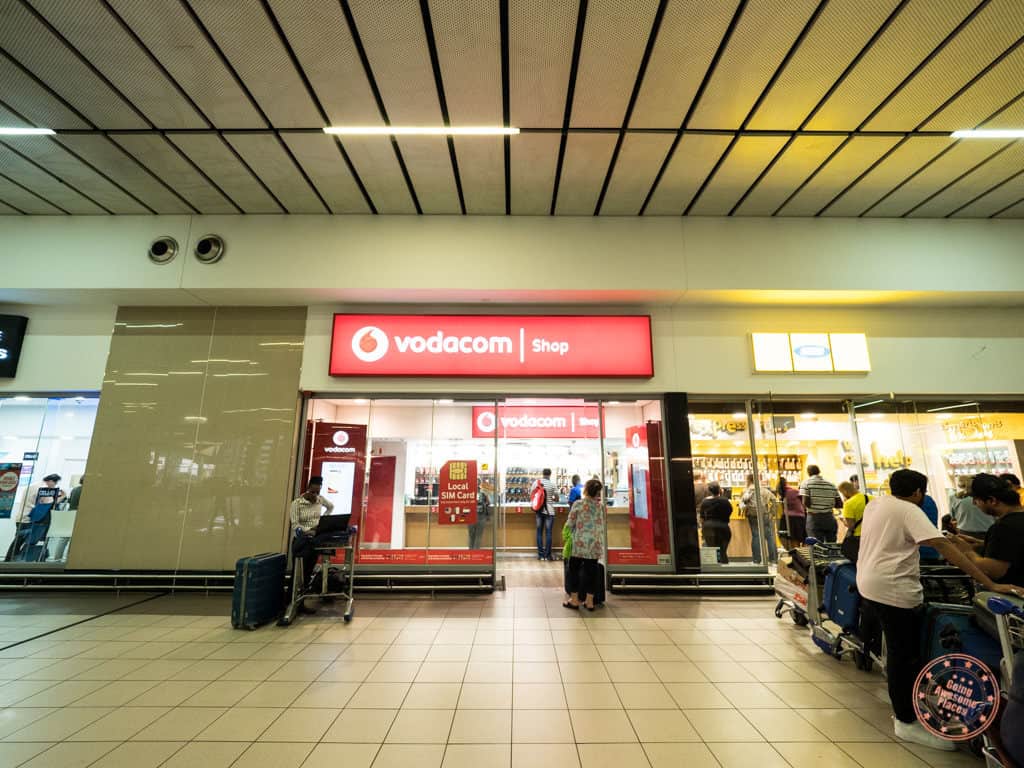
You should go in planning to not find wifi in many places while you’re travelling through this area. As a result, you should look into data options that can keep you connected whether it’s through your smartphone or if you need to tether with your laptop.
The only two areas I had consistent wifi was in the main building of Elephant Plains by using the vouchers they provided and also at Skukuza in the restaurant area with their free wifi.
4 options you should think about:
- Grab a Vodacom SIM card right when you land and top up as you need to along the trip. Watch how I pick up a Vodacom SIM card in Johannesburg .
- Roam with your home SIM but this will most likely get very expensive.
- Get roaming data with a third-party SIM card like KnowRoaming which is very competitive in Europe.
- Pick up a wifi hotspot device such as Skyroam and this way you can share your data with multiple devices.
The speed really varies in Kruger National Park so you could have decent data speeds in one area and then drive into a dead zone immediately after. Rest camps have signal for the most part and private reserve lodges will vary.

Overall Vodacom worked out for us quite well but what I didn’t anticipate was just how quickly I’d be burning through data because of the social media and tethering I was doing. By the 8th day, I had gone through 3GB from my original package.
The only thing we could do at this point was purchase data top ups up to a maximum of 1GB at a time. Luckily, you could buy top up vouchers at the gift shops.
Travel Tips – To avoid having to buy vouchers in-store, sign up for the My Vodacom app ( iOS / Android ) and link it with your number. Once you have this set up, you’ll be able to pay for top ups with your credit card on the fly.
A 9 Day South Africa Safari Itinerary
Here’s a breakdown of how you can plan 9 days in South Africa that’s based on how our honeymoon trip was. As the first major part of the vacation, this itinerary is focused on safari in and around Kruger National Park. This also includes a nice detour around the Panorama Route.
You can get the itinerary by downloading our Google Spreadsheet through the form below.

The first day is always kind of a blur because of how long it takes to get to South Africa, depending on where you’re coming from. Many international flights arrive in the late afternoon and as a result, the day is also a write-off.
The focus of the day is to make sure you’re all set for the upcoming safari trip and so while you’re at the airport, make sure to do the following things:
- Head to Vodacom to purchase a SIM card if you need it
- Exchange for Rands (only if desperate)
- Pick up car rental
From there, head to your night of accommodations in the city. I recommend that you stay at the Aero Guest Lodge which is very close to the airport, is very affordable, and has free breakfast.
You’ll be undoubtedly exhausted so catch some early sleep because the next day starts off right at dawn.
Travel Tips – If you can avoid it, do not exchange for money at the airport. The commission fees are very high here. I recommend that you exchange for Rands in your home country.

The key is to start really early on this day because your goal is to make it to your private reserve’s check-in time at 1PM. It takes roughly 7 hours to get from Johannesburg to Sabi Sands so that means leaving at 6AM. You’ll likely miss breakfast at the hotel but you should certainly ask them to pack some food for you.
The drive is for the most part uneventful on the main N4 highway. Stop at the Alzu N4 Petroport to fill up, grab some food, and use the restroom. The scenery starts to change once you turn off the highway at Nelspruit and start heading north. It’s at this point where you need to start paying more attention to the speed limits and potential traffic police.
GPS apps such as Waze are still good to use at this point but depending on where your lodge is, you’ll need switch over to the paper map because GPS can really mess you up.
Once you turn off the R highways (in this case the R40), this is when the driving will get much more interesting because you’ll be passing through a lot of local small towns and the roads will be riddled with potholes. Between passing slow cars, watching for traffic police, and dodging potholes, you’ll have a steel handed grip on the steering wheel.
The paved tar roads end and it’s all dirt roads from here as you start making your way towards the Gowrie Gate of the Sabi Sand game reserve.
If all goes well, you’ll make it to the lodge just in time for lunch and that’ll be a nice way to get your lodge experience started. At this point you’re integrated right into the daily program that the private reserve has.
Once you’ve gotten a quick tour and have the keys to your room, you’ll be getting ready for your first game drive which starts at 4PM.
Dinner is shortly after your return from the game drive. It’s at this point where you’re completely taken aback but how incredible the whole experience is and can’t wait for more.

I won’t go into too much here as you should head to the Elephant Plains review for all the details.
As I mentioned earlier, at this point you’re fully integrated into the daily programming for the lodge and that means you start with the morning game drive, breakfast, bush walk, lunch, afternoon game drive, and finally dinner.
Nothing is of course mandatory but when we were doing this, we didn’t want to miss anything so we said yes to it all .
What’s remarkable is that every single game drive is different as they try really hard to make sure they go to different spots for the guests and try to find the the animals that you may not have seen yet.

For the final morning, you’re not shortchanged at all so you’re still able to fit in a morning game drive, breakfast, and bush walk. Since you may be in a bit of a rush to get the Panorama Route started, you may elect to not to do the bush walk.
While it would be possible to head straight to Kruger National Park, it would be a shame to be in the area and not drive through the famous Panorama Route.
Driving out is just as much of an adventure as it was to get in so make sure you ask for specific instructions from the front desk depending on where you’re going.
Head to the Panorama Route article (coming soon) for all the details of what you can see and where to stay.

As you wrap up the route through gorgeous waterfalls and a visit to the town of Graskop, it’s finally time to enter Kruger National Park through the Paul Kruger Gate .
When you arrive at the gate, security will check your reservation papers and ask you to open trunk for inspection. We were waved through quite easily without them going through any of our stuff.
The gate office is adjacent and it’s here where you’ll officially register your entry to the park, pay any outstanding fees (you shouldn’t have to if you paid the conservation fee online), and fill out indemnity forms.
Start driving towards the Skukuza rest camp . Pass through the entrance gate and you’ll again have to go to the main registration office to get the keys to your accommodations and also printouts for the activities that you’re signed up for at Skukuza.
In our case, we signed up for a sunset drive so immediately after, we had to rush out to the trucks.
What you might not expect at Kruger is a full-fledged restaurant but Skukuza actually has one in Cattle Baron. Grab dinner here after your game drive and then settle into your accommodations.
Travel Tips – One thing you’ll near is that it doesn’t really matter what you wear in the car while on safari. On those hot days, all I was wearing was essentially t-shirt, shorts, and flip flops.

Since you’ll be at Skukuza for two nights, this is the one day you have where you don’t have to worry about packing up and moving to a new camp site. Take advantage of this and see as much as you can.

If you’re up for it, get an early start to the day and start heading north along the H1-2 road towards Tshokwane . This is a perfect rest stop because you’ll be able to get out of the car to stretch your legs, use the rest room, grab a coffee, and check out the gift shop.

While it’ll be temping to continue going up towards Satara, there simply isn’t enough time to make the return trip from Satara to Skukuza. Instead, make a short stop at Orpen Dam to see all the crocodiles down below. Start heading south and around the big hill that juts out from the ground before turning back northwest along the S30 back to Skukuza.
On the map, it may seem like this is a short drive but for this took us from 7:30AM to 3PM. What we learned from this drive was that once it was past noon, there really wasn’t much to see anymore because it was so hot.
After a short nap in your bungalow, it’s ready to head back out after 4PM for your afternoon drive. Your decision in the drive may be influenced by roads you don’t think you’ll be doing the next day. We ended up going west towards Phabeni Gate and trying our luck in and around the S1.

Back at camp, plan to have a quick dinner at the cafeteria and get in line with the rest of the crowd for the night drive .
Travel Tips – Always make sure you have back up meals and snacks in the car. It’s quite easy to miss meals when you’re doing self-drive so make sure have food ready in the car.

Start the morning by packing up and getting ready to check out. Don’t load the car yet though because there’s still the morning drive to do.
Again, the goal was to try a different set of roads and this time you could look at heading south from Skukuza along the H3.
Come back in time to pick up your luggage and head to the registration office to check out before 10AM. Have brunch at Skukuza and it’s also a good time to fill up at the gas station here before heading out.
Drive along the H4-1 down to Lower Sabie and treat it as another game drive even though it’ll be scorching hot.
When you arrive at Lower Sabie, check-in at the desk there and get situated at your new bungalow.
For your last afternoon drive, you’ll want to make it count so try to see if there’s a road that’s had a lot of sightings.
End off your day at the Mugg & Bean at Lower Sabie which has a fantastic view of the Sabie River.
Travel Tips – Lower Sabie offered a South African bush BBQ experience called a brai. It’s not something you can book online but if there’s time to fit it in, it looks like something you should try.

The last day is an exciting one because you get to walk on the grounds of Kruger with the 4 hour morning walk before making the long drive back to Johannesburg.
You start off bright and early at 4AM and in a smaller 8 passenger truck, you get driven to a specific spot along one of the roads and start trekking into the bush. The two guides that accompany you are armed with rifles and well trained so you feel safe with them the entire time.
This walk is more about seeing the smaller things in the park and noticing the finer details of what’s happening around you from the sounds a bird makes and the paw prints of a big animal that may have passed through in the night.
In single file most of the time, there aren’t too many opportunities to stop and shoot but when we gathered around to look at something, there’s time to snap a few photos.
Halfway through is a snack break where a variety of crackers, cookies, and juice are shared amongst the group while looking out at the landscape that surround you.
The ride back to camp is always a good opportunity to spot more wildlife as it’s usually still a good time to spot a lot of action which is a nice bonus to the activity.
The check-out process is quite seamless and it’s a seamless exit out of Crocodile Bridge Gate and a straight shot 5 hours back to the city including another fill-up at the Middleburg Alzu Petroport.
One complicated maneuver you’ll have to think about is how and when you’ll be dropping off your car rental. If you have an early flight the next day to your next destination, it might make sense to drop off the car first on this day so you don’t have to deal with it tomorrow. The only challenge is that you’ll waste a bit of time here waiting for a shuttle ride to your hotel.
You can either stay at the Aero Guest Lodge again or spend your Marriott points at the Protea OR Tambo , both of which have free shuttle service.

Travel Tips – On our drive back, we noticed a lot of traffic cops along the N4 which we didn’t see coming up. Also, a quick note about tolls. You’ll hit 1 main toll along the N4 going both ways and driving back towards the airport area there was another photo toll. In both cases, we ended up just driving through as we realized car rentals are outfitted with transponders. The downside to this is that you’ll get billed this on your car rental + an admin fee. If you’d like to avoid this, you can flip the transponder to blocked and instead you can pay by cash.
This was information packed post that covers almost all aspects of our safari experience in South Africa. Don’t hesitate to ask questions by leaving a comment below if there’s anything that you want to know that I haven’t covered.
For those that have been to Kruger National Park, what was your experience there and are there any favourite moments that you have?
What you should read next
- Kruger National Park Guide for First Timers
- Cage Diving Near Cape Town
- Surfing in Muizenberg, South Africa
- South Africa Travel Tips Guide – Read This Before You Go
- What It’s Really Like To Safari In South Africa
- Elephant Plains Game Lodge Safari Review
- Planning A Honeymoon to South Africa and Seychelles
If you’re in the process of planning your trip and putting together your itinerary, these are genuinely the best resources that the Going Awesome Places team stands by 100% .
Credit cards: Don’t get burned by hidden fees on top of terrible exchange rates. When we travel now, we use the Wise Card . Simply load it with the currency you need before you go and use it as a regular VISA or their digital wallet card. Use their free app to track how much you have and top up when you need to.
Flights: Of all the booking search engines, Skyscanner is the most helpful and easy to use thanks to their Everywhere feature . Kayak is also another that’s we will often check as well.
Car Rental: If you’re looking to save money, these car rental coupon codes will be a true game-changer. Otherwise, DiscoverCars and RentalCars are great places to start.
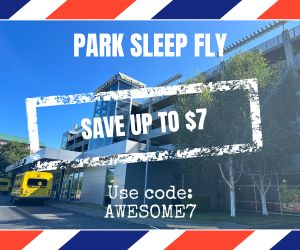
Airport Parking: You’ll need a spot to leave your car at the airport so why not book a spot at a discount. Use code AWESOME7 to get at least $5 off at Airport Parking Reservations or Park Sleep Fly packages.
Data: We’ve been a huge fan of wifi hotspot devices like PokeFi because their rates are so good and you can use it globally but recently, we’ve really loved using eSIMs. The best one is Airalo . Save money by getting region-specific eSIMs and use referral code WILLIA9500 to get $3 USD credit on your first purchase. Ubigi is another one that we’ve had success with where they uniquely offer 5G coverage. Use code AWESOME10 to save 10% on your first order.
Hotels: Our go-to is Booking.com because they have the best inventory of properties including hotels and B&Bs plus they have their Genius tier discounts . The exception is Asia where Agoda always has the best prices. TripAdvisor is also useful for reviews and bookings.
Vacation Rentals: Your first instinct will be to check Airbnb but we always recommend checking VRBO as well if you’re looking for a vacation rental.
Tours: When planning our trips, we always check both Viator and GetYourGuide to at least see what’s out there in the destination that we’re going to. They often have different offerings and prices so check both.
Travel Insurance: Learn how to buy the best travel insurance for you. This isn’t something you want to travel without.
- Insured Nomads – Popular insurance provider for frequent travelers and comes with great coverage and special perks.
- RATESDOTCA – Search engine Canadians looking for the cheapest insurance including multi-trip annual policies.
- SafetyWing – A perfect fit for long-term nomads.
- Medjet – Global air medical transportation.
- InsureMyTrip – Best for seniors, families, and those with pre-existing conditions.
If you need more help planning your trip, make sure to check out our Travel Toolbox where we highlight all of the gear, resources, and tools we use when traveling.
About William Tang
William Tang is the Chief of Awesome behind the award-winning Going Awesome Places which is focused on outdoor adventure, and experiential travel. His true passion lies in telling stories, inspiring photography and videos, and writing detailed itineraries and travel guides. He is a member of Travel Media Association of Canada (TMAC), Society of American Travel Writers (SATW), Adventure Travel Trade Association (ATTA), and Travel Massive. He has also been featured in publications such as Reader's Digest, Entrepreneur, Men's Journal, and Haute Living. Make sure to learn more about William Tang to find out his story and how Going Awesome Places started.
Leave a Reply Cancel reply
Your email address will not be published. Required fields are marked *
Save my name, email, and website in this browser for the next time I comment.
August 9, 2023 at 10:47 PM
What was the total cost of your trip? I’m trying to plan a vacation to South Africa for a family of 4 adults. Thanks in advance!
William Tang says
August 10, 2023 at 2:07 PM
Hey Amber! I didn’t do a full breakdown of the trips costs but if add up the costs from Kruger National Park and Elephant Plains, we spent roughly $3,795 CAD at the time with a big chunk of that going to Elephant Plains which was an all-inclusive experience.
Louise Bissell says
January 7, 2022 at 5:16 PM
Hi Will….been reading your blogs which are awesome. Thank you. We are going to Kruger at the end of March and want to book the walking tour. Any advice on how to arrange this would be much appreciated. Thank you.
January 10, 2022 at 12:54 PM
Hi Louise! Thanks for dropping by. I’m glad the content has been helpful. For a walking tour, have you looked at the available activities that are bookable in the camps you might be staying at? The bush walk we did was through SAN. Or were you looking for a private tour?
February 12, 2020 at 3:40 PM
Hello once again Will. I read on the sanparks website that there car specifications when on self drive but couldn’t find the details. Do you have any insight? Can you help with that? Thank you
Will Tang says
February 17, 2020 at 7:00 PM
That’s a good question. I don’t know about the specific car specifications but honestly if you’re looking at renting any sort of consumer vehicle you’ll be fine. Are you thinking of bringing in something unusual?
Prithie Doak says
November 6, 2019 at 3:53 PM
Really great post. We are thinking of leaving in September from Melbourne and staying at an AIRNB in Mjejane for 5 nights as that accomodation is exactly what I want. We’re self driving, but looking at booking a game drive for 1 day. Which gates/ parks should we go to/ distances etc
November 6, 2019 at 6:19 PM
That’s awesome! So since you’re at Mjejane, you can pretty much choose between Crocodile Bridge Gate or Malelane Gate – to mix it up you could decide to do a few entrances from one gate and a few other from the other gate so you can change up your drives within Kruger. My recommendation is to start super early in the morning (as soon as the gates open), eat lunch and break at camp for lunch and during the peak of the heat and then begin again in the mid-afternoon until closing. Just make sure you can get out of the park before the gates close since you’re staying outside of Kruger. For distances and time, you can take a look here .
November 6, 2019 at 12:26 AM
Hey Will, great post. What did you guys do for malaria prevention?
November 6, 2019 at 12:42 PM
For Malaria prevention we just took the standard malaria pills (I believe it was malarone) that we picked up at home as a prescription. On-the-ground in Kruger, we used mosquito repellent although I honestly don’t remember it being really bad at all in the park or private reserve the time of the year we were there (October/November). Hope that helps!
Ana Katrina Lopez says
April 23, 2019 at 8:48 AM
Enjoyed reading this Will! Very helpful and insightful. I actually felt like I was traveling along with you while reading through it. Hahaha! I’m planning to head to South Africa sometime this year so this definitely gave me a good feel of what I could possibly do and expect when I’m there. I specially liked reading about the things you were surprised with that you needed. That’s really helpful to know. Looking forward to reading about your future adventures!
Krisan Sablaon says
January 28, 2019 at 7:27 AM
I loved the pictures and details of your blog! Reading it feels like I’m in South Africa, too! The itinerary you had sounds exciting, more so, most of your trip are self-drive. I’m interested to know more about group-joining tours, though, since I’m not too familiar in South Africa. However, will it be cheaper to rent a private car and drive around the areas than to book a group-joining tour? Your blog, on the other hand, is super helpful, especially for first-timers. I’m glad to read about the essentials that I should bring and what I can expect in Kruger and a private game reserve. I can definitely use this article as a reference when planning for a trip to South Africa. Keep it up!
January 28, 2019 at 10:29 AM
I’m glad you found this piece helpful! If you’re looking for a budget holiday, I’d for sure recommend renting a car and doing your own self-drive around Kruger. That’s probably the best way to go because you’r not paying a big mark up on services. Now even if you’re interested in doing a private lodge like Elephant Plains, that’s also something we did on our own and not with a group tour so I’m a good example of how someone can certainly plan this all on their own. Resources like my own and other bloggers definitely have made it easier as I can totally relate to how overwhelming a first-timer experience is.
January 21, 2019 at 2:11 PM
Thank you for the very comprehensive information for diy safari trip. I was planning to drive form JNB to Kruger Park, but I don’t feel safe after reading Turkish Airlines crew robbed in South Africa. Article here “https://www.aa.com.tr/en/africa/turkish-airlines-crew-robbed-in-south-africa/1368351”
January 21, 2019 at 8:27 PM
You’re welcome! I just read the article and I’m not surprised that this happened in Johannesburg. I made a mention in my article about the issues we had with our luggage at the airport. Overall, that’s the reason why we didn’t spend anytime in the city and drove straight up to Kruger. I hope the article won’t deter you from going – it’s an amazing place to go safari and you’ll love it if you do go.
April 11, 2019 at 8:36 AM
Question about car rental insurance in S. Africa, what other insurance I need to buy beside what my Amex Platinum covers? Thanks
April 11, 2019 at 11:20 AM
Hey Paul, so for the Amex Platinum in Canada anyways, the coverage is MSRP of up to $85,000 in either theft or damage. Depending on who you rent from, they may offer you additional coverage in which case that’s when you decide whether it’s worth it. There are also a few things that aren’t covered by Amex that you should be aware of:
The Car Rental Theft and Damage Insurance only covers vehicle loss or damage and does not include the contents of the vehicle. There is no coverage for third party liability, personal injury, damage to property, normal vehicle wear and tear or mechanical/electrical vehicle breakdown. The Car Rental Theft and Damage Insurance is only available when the Cardmember fully charges the rental to an eligible American Express Card and does not accept the Collision Damage Waiver (CDW), Loss Damage Waiver (LDW), or their equivalent offered by a rental agency. The coverage only applies to rental autos with a MSRP of $85,000 Canadian or less, and for rental periods of up to 48 consecutive days.
I hope that helps!
Find us on social media
Cookie policy
Wanderlust Movement | A South Africa Travel Blog
Visiting Kruger National Park: Everything You Need to Know
July 31, 2019 by Lauren Melnick
Last Updated on August 14, 2023 by Lauren Melnick

Within my first hour of arriving, we saw three of the Big 5, herds of giraffe, impala, wildebeest, elephants and countless species of birds.
I’ve never experienced game density like that in my life.
I’ve gone on safaris throughout South Africa , Rwanda and Zambia and none of those experiences can compare.
But planning a trip to Kruger isn’t as simple as hiring a car and paying your entrance fee.
Accommodation at the BEST rest camps can book out six months in advance , you’ll need to secure your spot ahead of time for some of the park’s one-of-a-kind activities, and then there are all the things you need to remember to pack.
Here’s a complete guide to visiting Kruger National Park that will help you plan the perfect safari in South Africa!
Table of Contents
Getting to Kruger National Park From South Africa
Fly into nelspruit from or tambo, fly into skukuza, summer in kruger, winter in kruger, school holidays, best time of day to see animals, kruger national park entrance fees, what to pack, tips for visiting kruger national park, southern kruger, central kruger, northern kruger, guided game drives, walking safaris, guided mountain bike trails, 4×4 adventure trails, sleepover hides, crocodile bridge, lower sabie, pretoriuskop, how to book your kruger national park accommodation, luxury private reserves, accommodation near kruger national park, pafuri gate day drive, phabeni gate, tips for photographing wildlife, how to get to kruger national park.
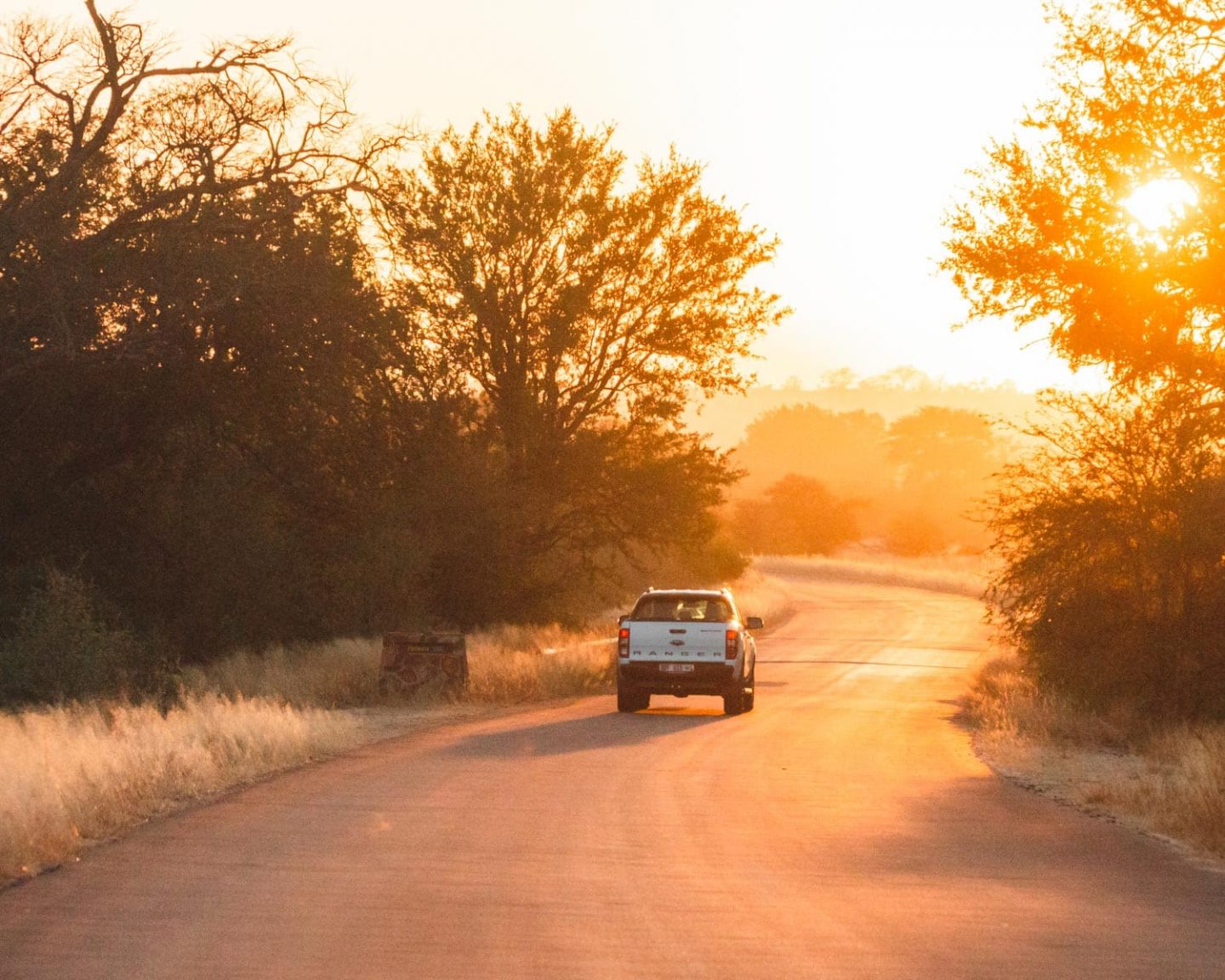
Kruger is the largest and oldest national park in South Africa. It stretches across 20,000 square kilometres and borders Mozambique and Zimbabwe .
It’s fucking HUGE.
The easiest way to get to Kruger is to start your journey in Johannesburg. It’s the closest major city and use can catch flights from OR Tambo International Airport to Kruger.
For our trip, we drove up from Cape Town to Kruger and decided to turn it into a massive three-week road trip . However, if you’re short on time, it’s easier to fly into Johannesburg, rent a car and drive straight to the park.
Kruger is only 4.5 hours away from Johannesburg , and you’ll have the option to explore South Africa’s famous Panorama Route along the way!
You can fly directly from OR Tambo International Airport in Johannesburg to Nelspruit. It’s a short 50-minute flight, and the airport is only a 50-minute drive to Kruger’s Malelane Gate or 1h 30 min to Phabeni Gate.
To find the cheapest flights to Nelspruit, use Travelstart . It’s a local flight comparison search engine and compares prices with all of South Africa’s regional airlines.
Skukuza is a large rest camp inside Kruger National Park. If you’re feeling like a baller, you can fly directly into Skukuza with Airlink from Johannesburg, Cape Town, Durban or Port Elizabeth.
You can pick up a car rental from Avis at the Skukuza rest camp, or if you’re staying at one of the luxury private game reserves in Kruger, you can organise an airport pickup.
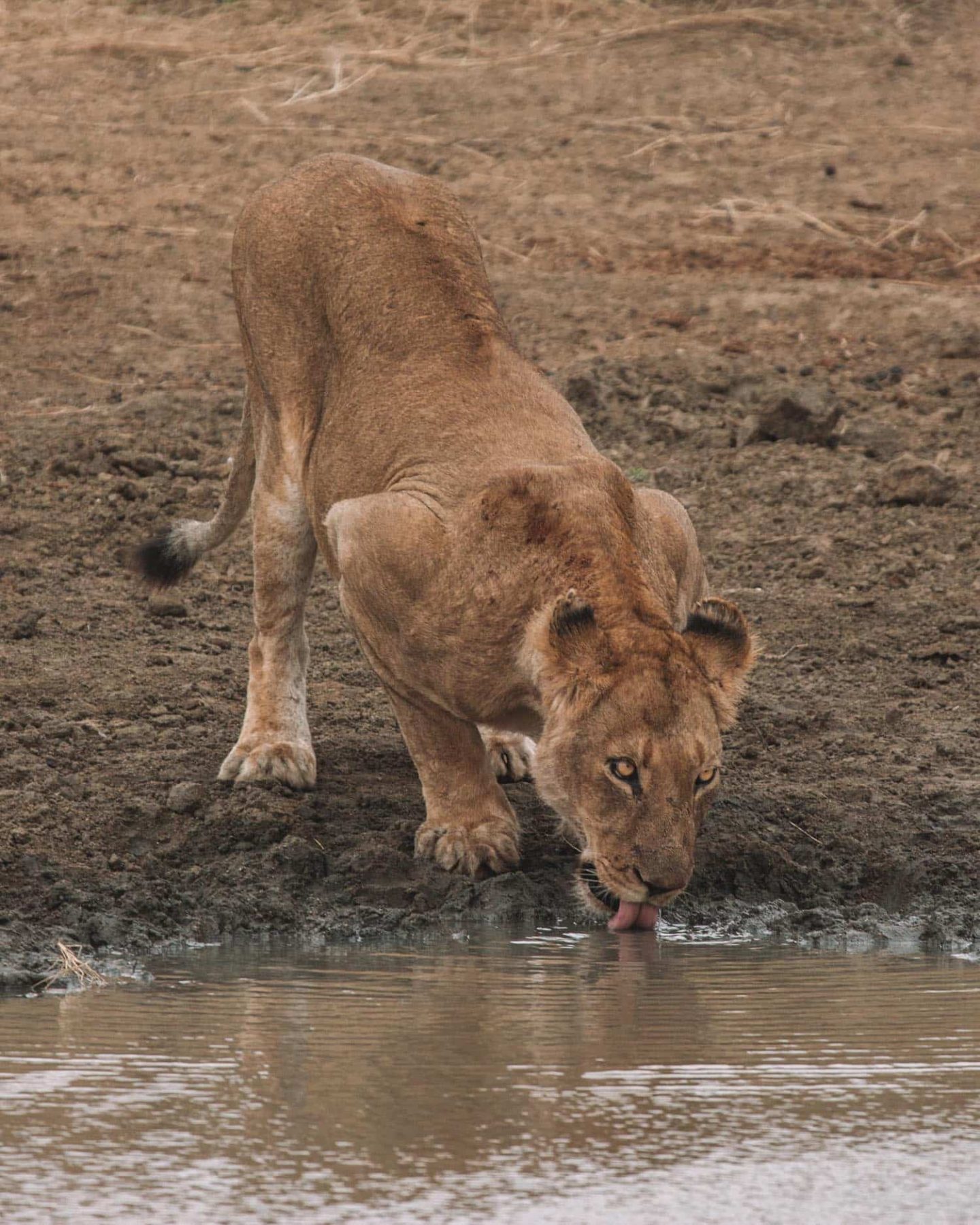
Best Time to Visit Kruger National Park
Kruger National Park is a year-round destination. However, you’ll get different safari experiences depending on when you go.
November to March means hot (30° C+) and rainy weather in the park. It’s the best time to visit if you’re a birder as a lot of the migratory birds return with the rains.
The landscape is lush and green, but the dense vegetation will make it harder to spot game even in a high clearance vehicle. On the plus side, you’ll be around for all the baby animals and have more daylight hours inside the park!
The dry winter season from April to October is the best time to go on safari in South Africa . The lack of rain means the wildlife will gather around the watering holes, making it easier to spot everything from the Big 5 to massive herds of impala.
The day temperatures are still warm, but comfortable, and the nights are cool. The only two downsides to visiting Kruger in the winter are that the days are shorter and it’s more expensive as it’s high season.
You’ll also need to book your accommodation at least six months in advance for popular camps like Lower Sabie.
For our South Africa road trip to Kruger National Park, we strategically planned to avoid the June school holidays. This is when the park is at its busiest, and you’ll struggle to find last-minute accommodation.
If you can’t travel around the South African school holidays, try your best to book everything as early as possible. You’ll also want to stay inside the park so you can avoid the long lines in the morning.
Read More: The Best Time to Visit South Africa
The early mornings and late afternoons are the best times of the day to see animals. Before and after the heat of the day, the bush is at its most active.
You’ll have incredible light for wildlife photos, and the Big Cats will be on the prowl!
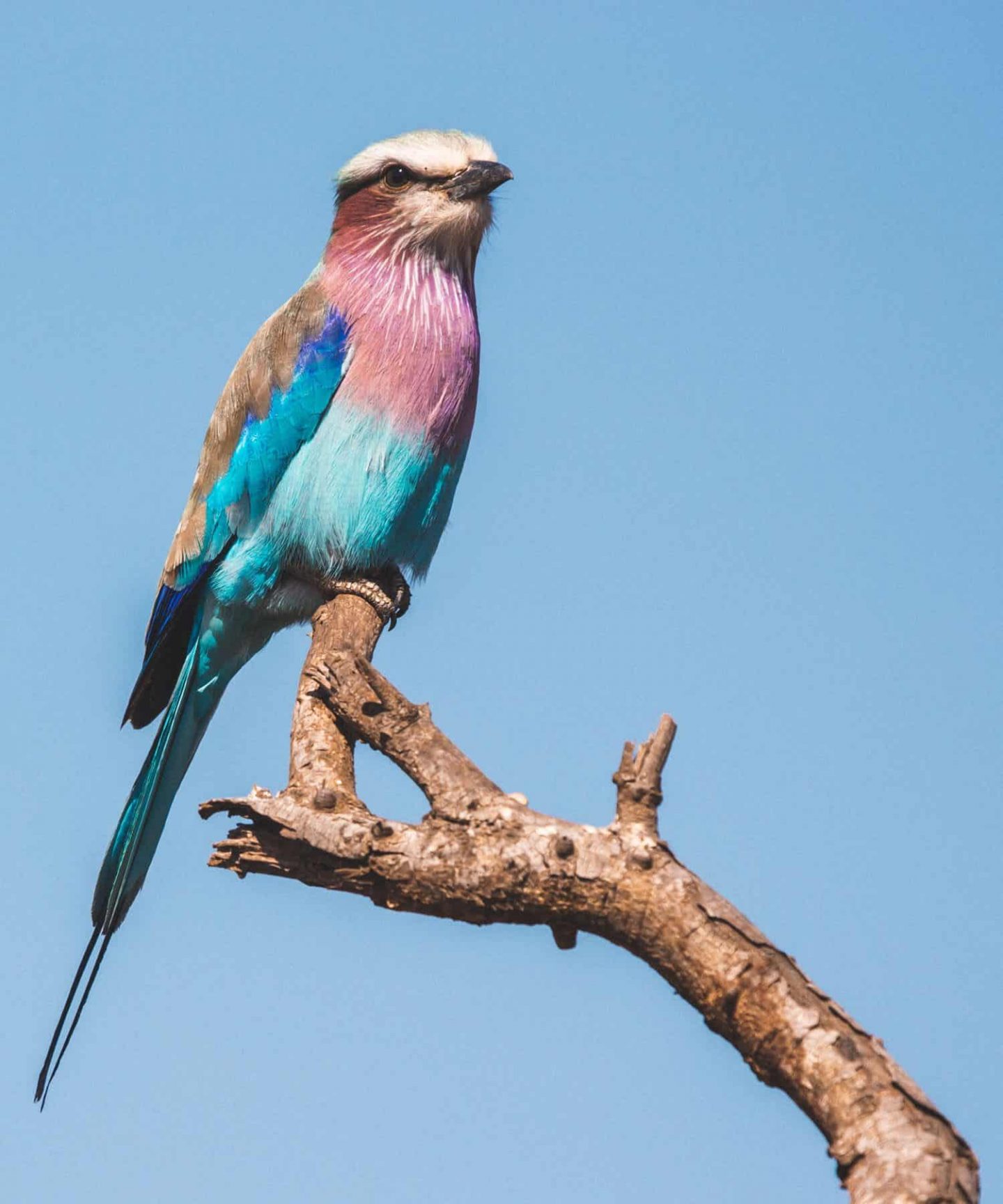
For South African citizens, the Kruger Park entrance fee is:
• R93 per adult, per day • R47 per child, per day
For SADC nationals, the Kruger Park entrance fee is:
• R186 per adult, per day • R93 per child, per day
For non-South Africans, the Kruger Park entrance fee is:
• R372 per adult, per day • R186 per adult, per day
If you’re a South African citizen, I highly recommend buying a Wild Card . You can get access to over 80 national parks and reserves in Southern Africa for R640.00 (or R1,055 per couple) for an entire year.
That’s six trips to Cape Point or a week in Kruger!
For internationals, you can get a Wild Card, but you’re going to pay R2,900 (single supplement) or 4,530 (couple) for the same package.
It’s only worth it if you’re planning a South Africa road trip and you’ll be visiting other national parks like Addo Elephant Park , Tsitsikamma or going over the border to Swaziland’s Hlane Royal National Park.
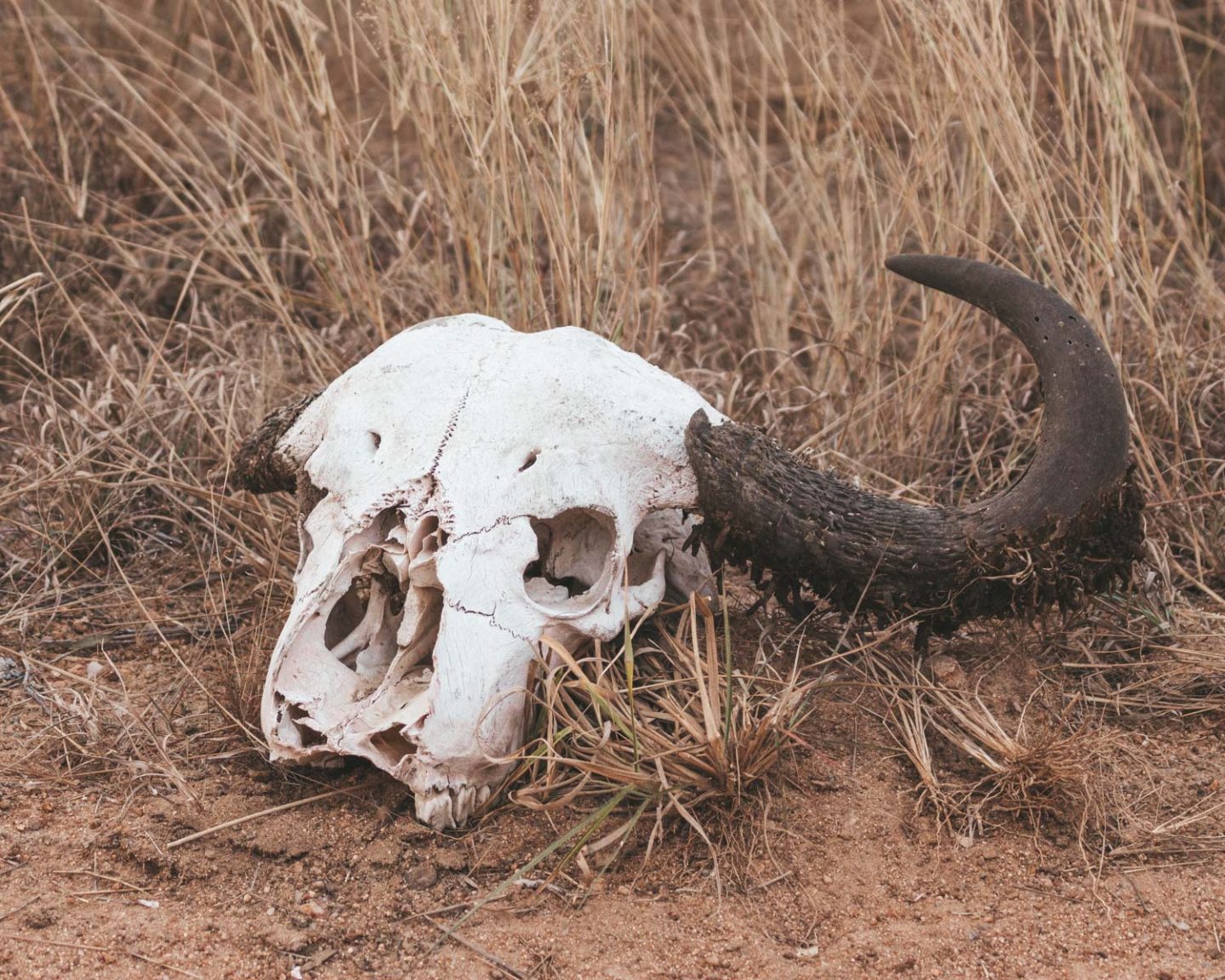
Here are the essentials that you need to pack for a safari trip to Kruger National Park. I’ve got a full packing list coming soon!
• Insect repellent : Trek is the best mosquito repellent I’ve ever used. • Eye drops • Anti-histamines for insect bites • Sunscreen , sunglasses and a hat • Binoculars • Camera gear (I shot with a Canon D700 and a Canon 100-400mm F4.5 ) • Cooler box • Torch or headlamp • A comfy pair of shoes • A reusable water bottle

Read More: The Ultimate Road Trip Essentials Packing List (+ Free Checklist!)
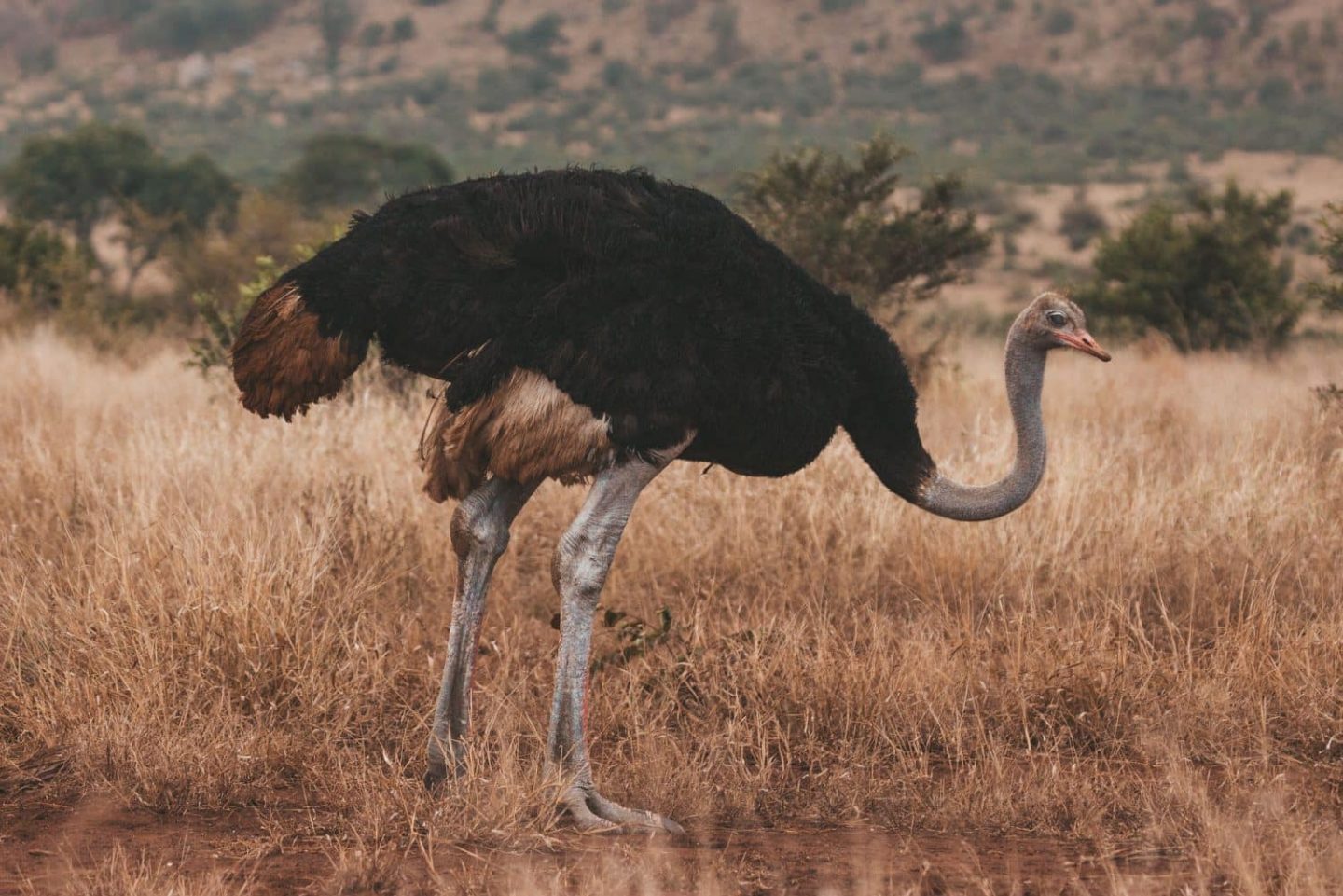
Car rental: To get the most out of your South Africa safari, you’ll want to rent a high clearance vehicle . A 4×4 is going to help you see wildlife lying down in the grass and give you an advantage with sightings. You’ll also have the opportunity to travel to the north of Kruger which is only accessible by 4×4.
Gate Times: In the summer months (October to March), the gates are open from 5:30 AM to 6:30 PM. In the winter (April to September) the gates open from 06:00 AM to 5:30 PM. From November to January, the camp gates open 1 hour before the entrance gates. You’ll definitely want to stay inside the park if you’re visiting over those months, as the early mornings are incredible for sightings of Big Cats and kills.
Malaria: The national park is in a malaria area, although the risk is low. I’ve never taken malaria pills when visiting the park as I usually go in the dry season when water is scarce. But always consult with your doctor before your trip and get medical advice from a professional.
Get a Map: Due to Kruger’s immense size, you’re going to need to buy a good ol’ fashion map when you arrive. There is no cell service inside the park , and you won’t be able to rely on Google Maps at all. I recommend getting the “ Kruger Park Map & Guide 2nd Edition “. It comes with a map, info on all the camps and a checklist for all the mammals and reptiles!
Fuel: There are petrol stations at the main rest camps. You don’t need to worry about driving out of Kruger to fill up your tank.
Speed Limits: There is a 50 km/h speed limit on tar roads and 40 km/h on dirt roads. Make sure you stick to these rules as there are speed cameras and the park loves to set up traps near closing time to catch people racing back to the gates.
Sightings: The best time for sightings is in the early mornings and evenings. The Big Cats are active, and you’ll have beautiful, soft light for photographs!
Shops: You don’t need to pack too much food for Kruger. There are shops at each campsite that have a range of fresh vegetables, fruit, meat and bread. You can also buy firewood, biodegradable plates, cutlery, sauces and souvenirs. The shops do accept credit cards, and there are ATMs on site. If you don’t feel like cooking, the main camps have restaurants like Wimpy and Mugg & Bean.
Wi-Fi: The restaurants at the main camps like Mugg & Bean and Wimpy will have free Wi-Fi for guests.
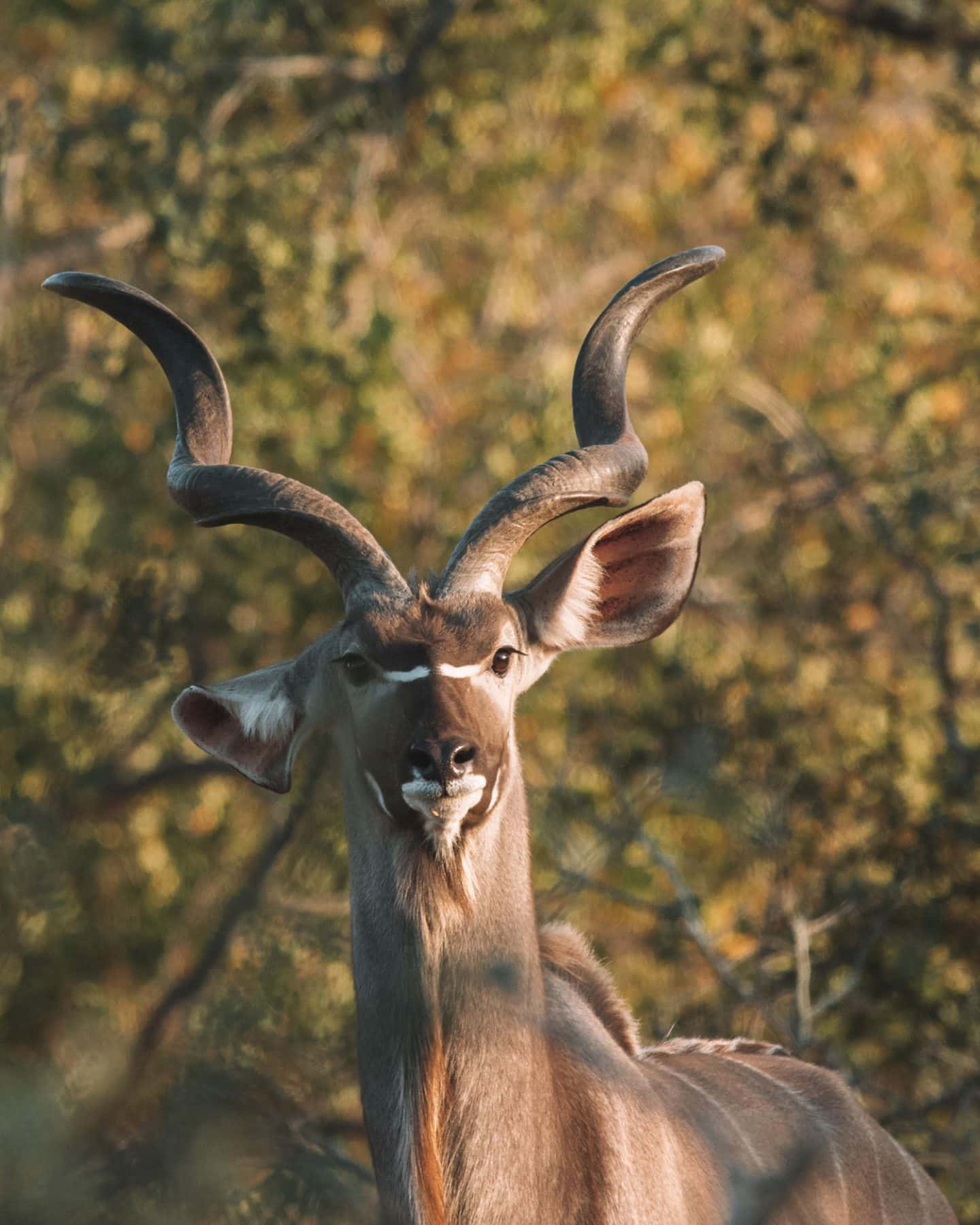
How to Plan Your Self-Drive Itinerary
Due to Kruger’s massive size, you’re not going to be able to see the entire park in one trip. It’s best to pick one area and explore it to the fullest.
For first-timer visitors to Kruger, you should base yourself in the south to increase your chances of seeing the Big 5. It’s easily accessible from Johannesburg, and it’s where you’ll find some of the most popular rest camps like Lower Sabie and Crocodile Bridge.
Central Kruger is known as Big Cat country. Book a couple of nights at Satara or Olifants rest camp if you want to try your luck of spotting lions sleeping in the grasslands or leopards walking across the road. You’ll also see plenty of herbivores like zebra, buffalo and impala.
If you want to explore northern Kruger, you’ll need a 4×4. As it’s the least popular portion of Kruger, you won’t find many tourists here, and the game density is far less than the south. However, if you don’t mind getting off the beaten track, you’ll find rare birds, and you might spot a pack of wild dog.
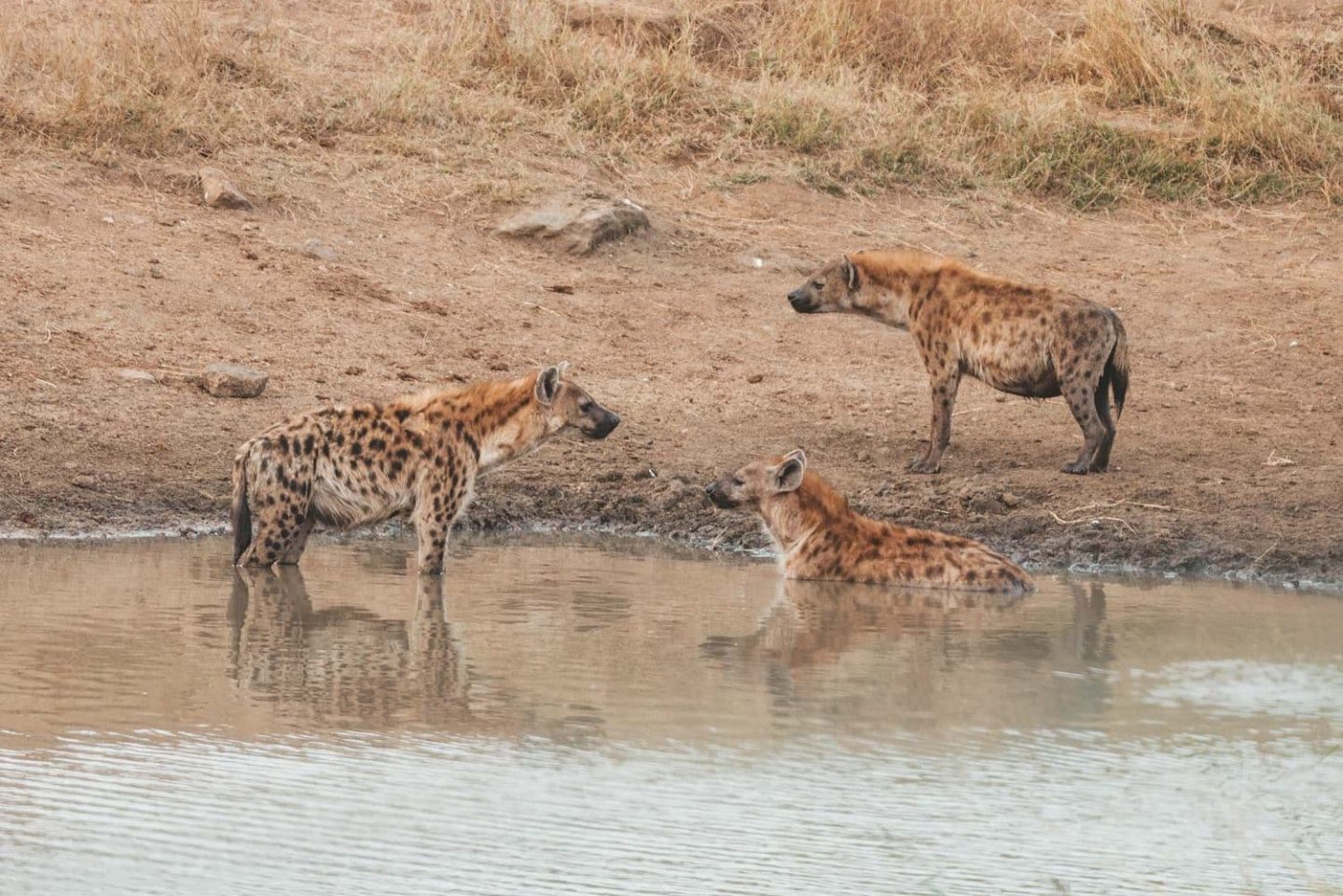
Things to do in Kruger National Park
Even if you’re bringing a car to Kruger, you should book at least one guided game drive. The guides know how to read the signs of the bush and speak to each other on the radio.
I’d recommend booking a sunrise drive if you’re a photographer or you hate crowds. We had the entire 20-seater car to ourself and got some amazing photos!
The sunset drive is beautiful, but most of it will be done in the dark. On the plus side, you’ll get to see some of Kruger’s nocturnal animals like African Civet and Bushbabies.
If it’s your first or 100th time in the bush, you should book a walking safari. You miss so much from being inside a car, and you’ll get the opportunity to spot some of the smaller wildlife.
All walking safaris are done with a guide as well as armed rangers.
You can choose from morning and afternoon walking safaris. There are also guided wilderness walking trails that last over a few days.
Book a night or two at Olifants Camp and go on a guided mountain bike trail. There are morning, afternoon or full-day trails that are guided by two field guides.
There are three one-day 4×4 trails inside the park:
Madkabantu Trail: The Madkabantu Trail is made up of three routes. The first one starts at Pretoriouskop (42km), the second begins at Satara (46km), and the last one is from Babalala (49km).
Lebombo Overland Trail: Spending a week in Kruger? Tackle this five-day trail that runs from Crocodile Bridge to Pafuri Gate.
Shingwedzi 4×4 Trail: This trail starts at Pafuri and ends at Giryondo Gate.
Next time I go back to Kruger, I’m booking myself into one of the sleepover hides!
There are two in the park. Sable Dam Hide is near Phalaborwa Gate, and the Shipandani Hide is at Mopani.
You’ll get to spend the entire night camped out in the hide overlooking the dam! It’s a photographers dream and exciting way to observe the wildlife in their natural habitat.
If you’re lucky, you might see a crocodile grab an impala or spot a pride of lions coming down to the waterhole for a drink.
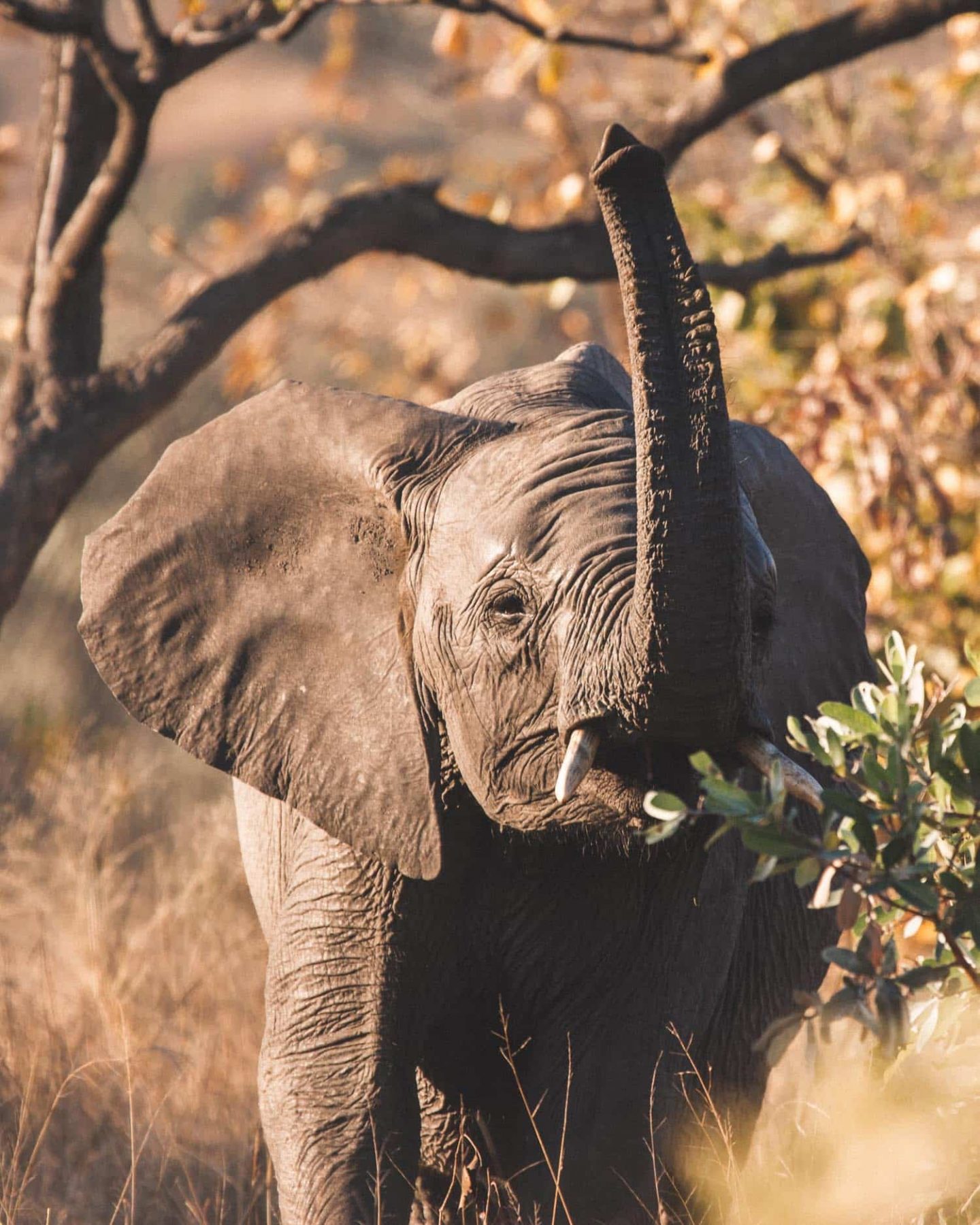
Where to Stay
When it comes to Kruger National Park accommodation, you’re spoilt for choice! There are five-star luxury safari camps, budget-friendly rest camps and plenty of hotels close to the entrance of the park.
You should stay inside Kruger if it’s:
• Your first time • You want to spend as much time in the park as possible • You’re on a budget • You want to go on morning and sunset drives or walking safaris
Best Camps in Kruger National Park
We entered the park via Crocodile Bridge and saw a ridiculous amount of animals within the first hour.
If you’re short on time and only have a weekend to go on safari, stay here or in Lower Sabie and explore as much of the south as possible.
Lower Sabie is one of the best places to stay inside Kruger National Park BUT you need to book at least six months in advance . I’m not even being dramatic. We tried to book in March for June, and there was nothing available.
But we did go on a day drive through Lower Sabie and had lunch at Mugg & Bean. The restaurant overlooks the river, and we saw plenty of animals and birds without needing to drive.
While in the area, we saw a huge pride of lions by the river bed, and there were quite a few sightings of cheetah and leopard in the morning.
Skukuza is the largest park in Kruger. It has a post office, golf course, museum, airport, a bank, restaurants and a swimming pool.
Despite all the activity, there are some excellent drives around Skukuza, and the sightings around the camp are incredible.
Some of the best roads include the H4-1, H1-2, S114 and the S1.
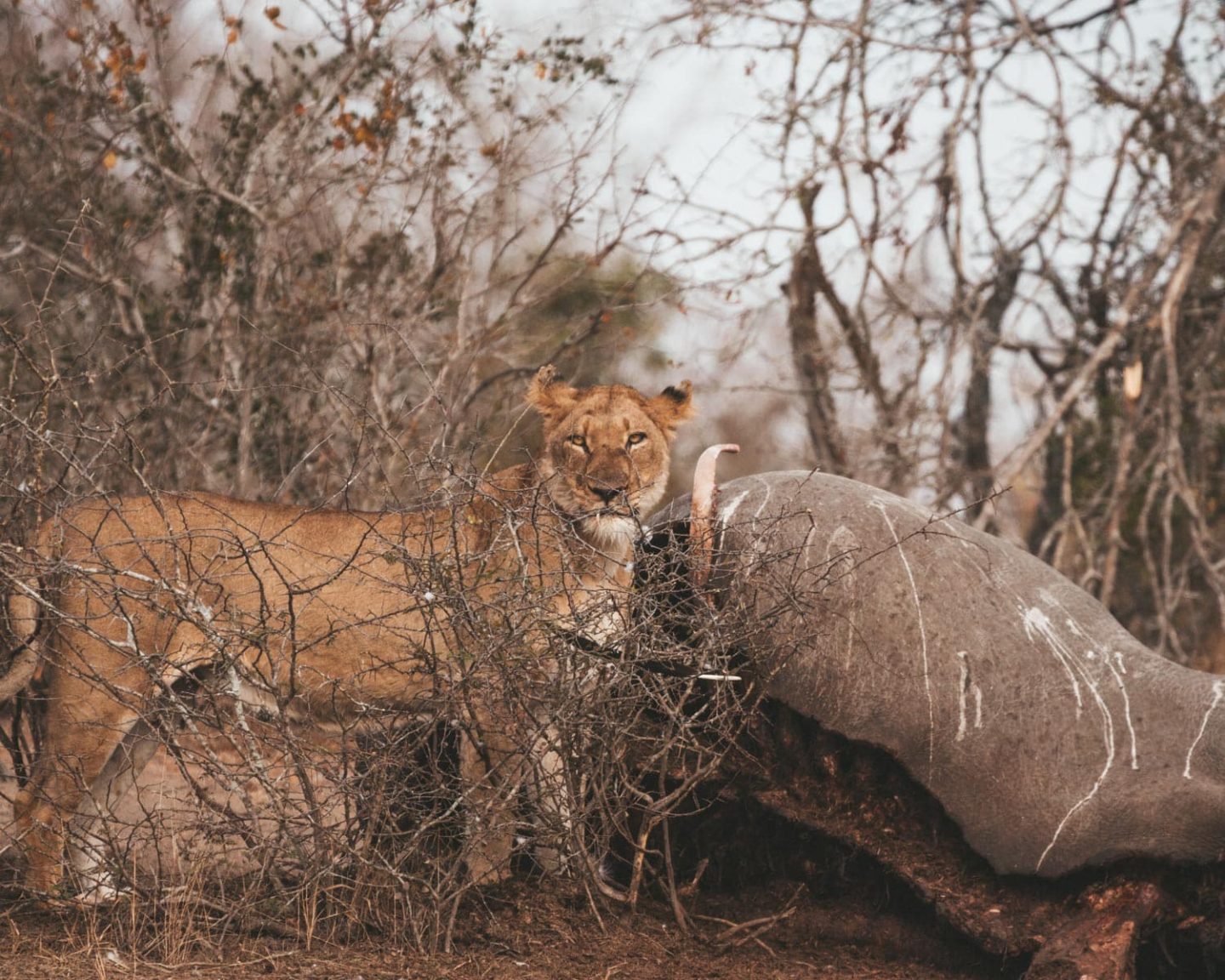
Satara is Big Cat country. The savannah plains are where you’ll find lions, leopards, and large herds of elephant, giraffe, wildebeest and zebra on the move.
Satara is another popular camp, so you’ll need to book your Kruger accommodation well in advance as well. While in the area, don’t miss out on the famous S100 road!
It winds past the N’wanetsi River, and there are a few loops you can take to try spot a leopard perched in a Knob Thorn or Leadwood tree.
Home to a landscape of granite outcrops, Pretoriouskop is one of the best camps in Kruger to see leopard .
The surrounding area is also where you’ll find sable (we saw a herd cross the road!) and rhino (one walked right past our car at the watering hole!).
Tamboti is one of my favourite camps in Kruger National Park. It’s a small, remote-tented camp with no cellphone signal. Unlike the bigger rest camps, we didn’t see our neighbourhoods and felt utterly hidden in the bush.
After starting our braai, we had a hyena come right up to the gate!
It was a magical and slightly creepy experience! Tamboti is also close to the famous S39 road, which is home to a den of wild dogs.
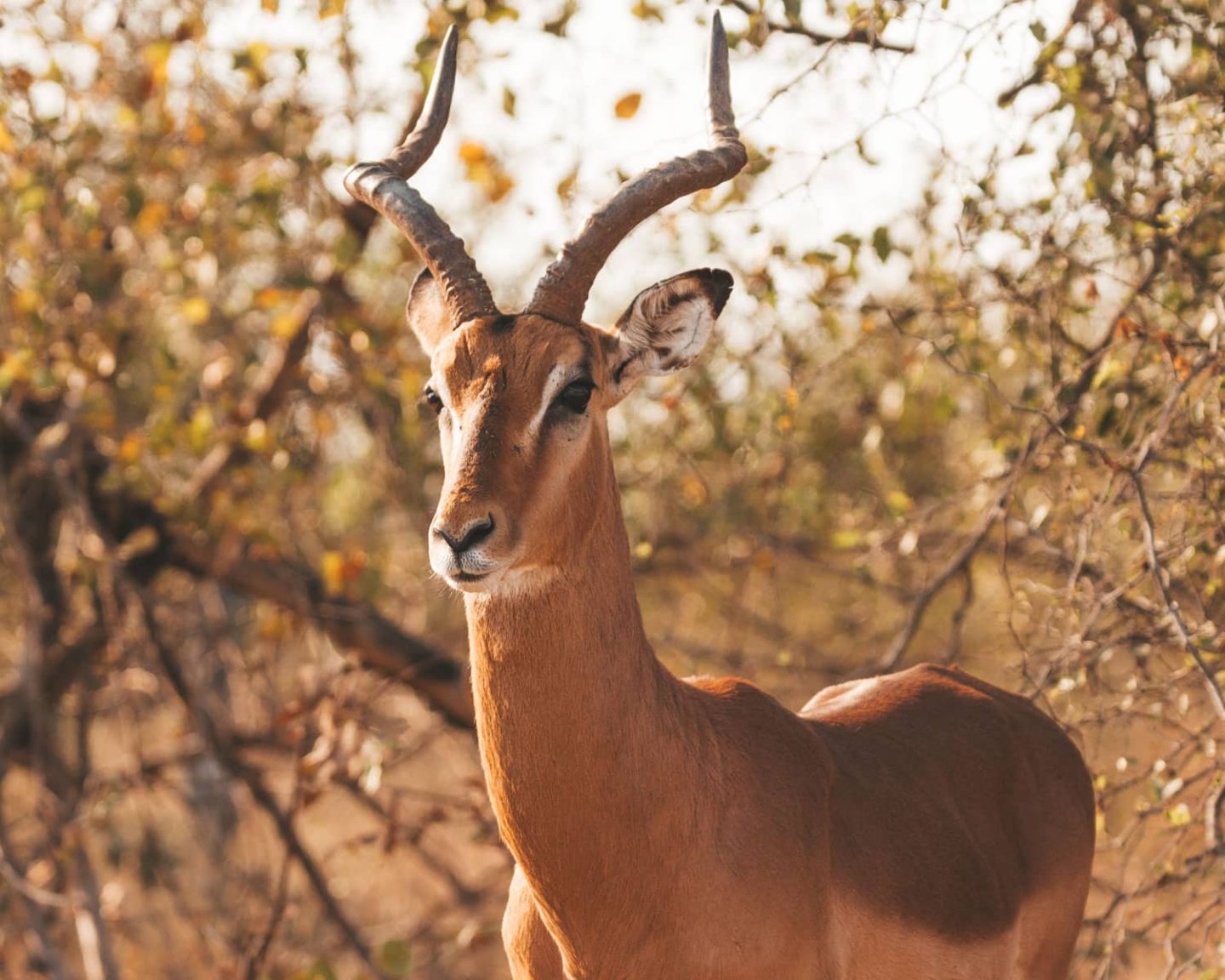
If you want to stay at any of the rest camps inside Kruger, you can make a reservation through the SanParks website . You’ll be able to pay for your accommodation, conservation fees and book any optional activities like game drives or walking safaris.
You can also book any of the activities once you arrive at your camp!
When reserving your room, try to get a rondavel or a tent right by the fence. It will give you a chance to spot some of the nocturnal animals. If you’re a photographer, you might get lucky with a good spot for some astrophotography !
If you want to spoil yourself, there are gorgeous five-star safari camps inside Kruger. I haven’t stayed at any myself (yet), but here are a few that my friends have gone to over the years and recommend:
• Lion Sands Ivory Lodge and Treehouses • Royal Malewane • Cheetah Plains
There are budget, mid-range and luxury accommodation outside of Kruger. However, if you don’t stay in the park, it’s going to add 20 minutes onto your driving time.
In the morning, you’re going to wait in a long line with other people waiting to pay to get in. You’re also going to spend less time on the road, and you won’t be able to get into the park early enough in the morning for those magical first sightings.
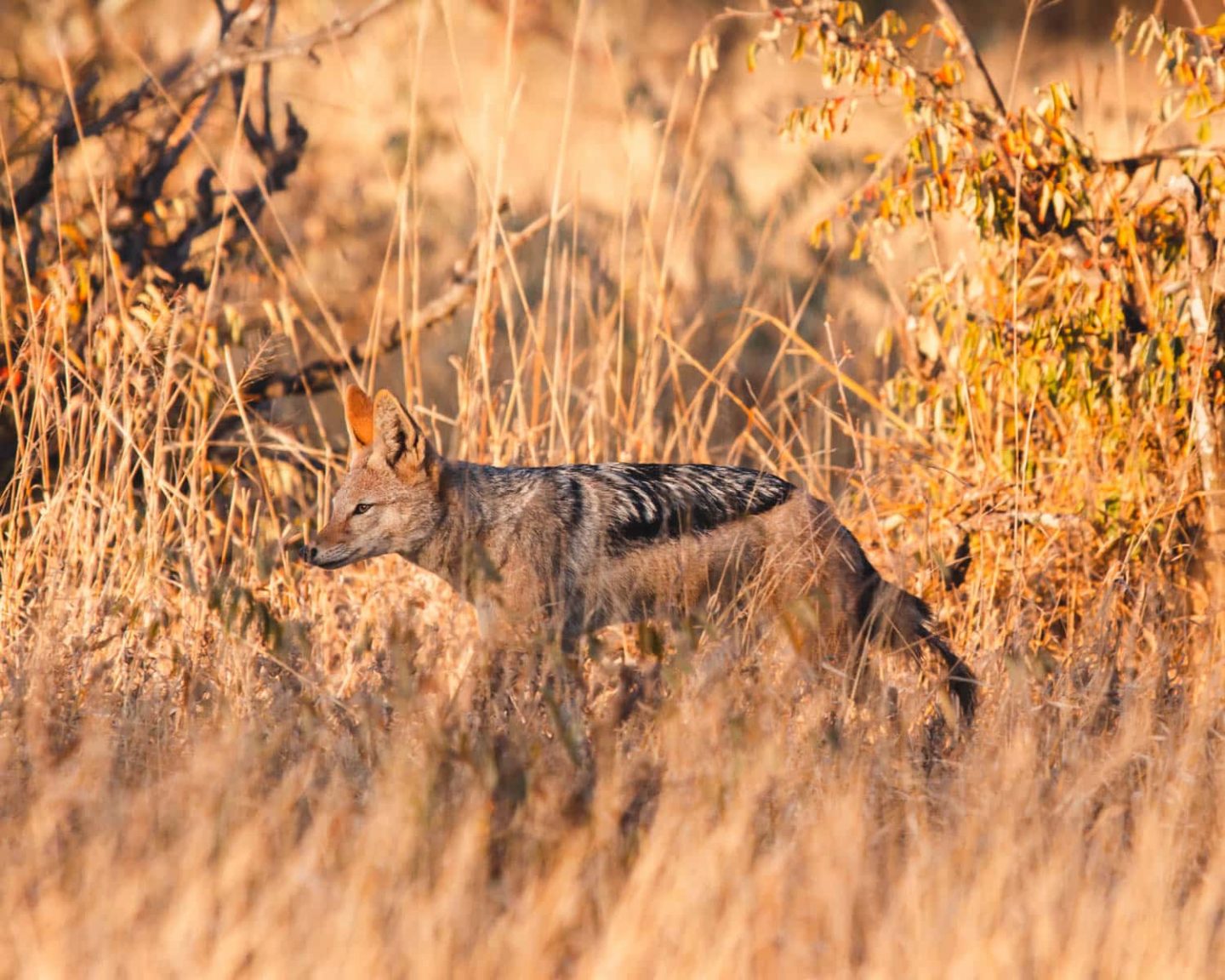
Best Day Drives from Kruger’s Main Camps and Gates
One of the best parts about the Pafuri Gate Day Drive is that it’s not popular. If you come across a sighting, you’ll have it all to yourself!
For birders, you’ll have the chance to spot some rare species that you won’t see anywhere else in Kruger, especially along the Luvuvhu River. The S63 and S64 are some of the best roads for bird spotting in the area!
Orpen is the gateway to lion country in the Kruger. There is an excellent day drive that goes to Satara and Olifants and comes back to Orpen on the S39.
The drive is scenic, and there are fewer obstructions which will improve your chances of seeing a Big Cat!
One of the most popular roads in the area for seeing leopards in the trees is the S92. You can also take the H7 coming back to Orpen in the late afternoon to watch the sunset and hopefully see a cat crossing the road.
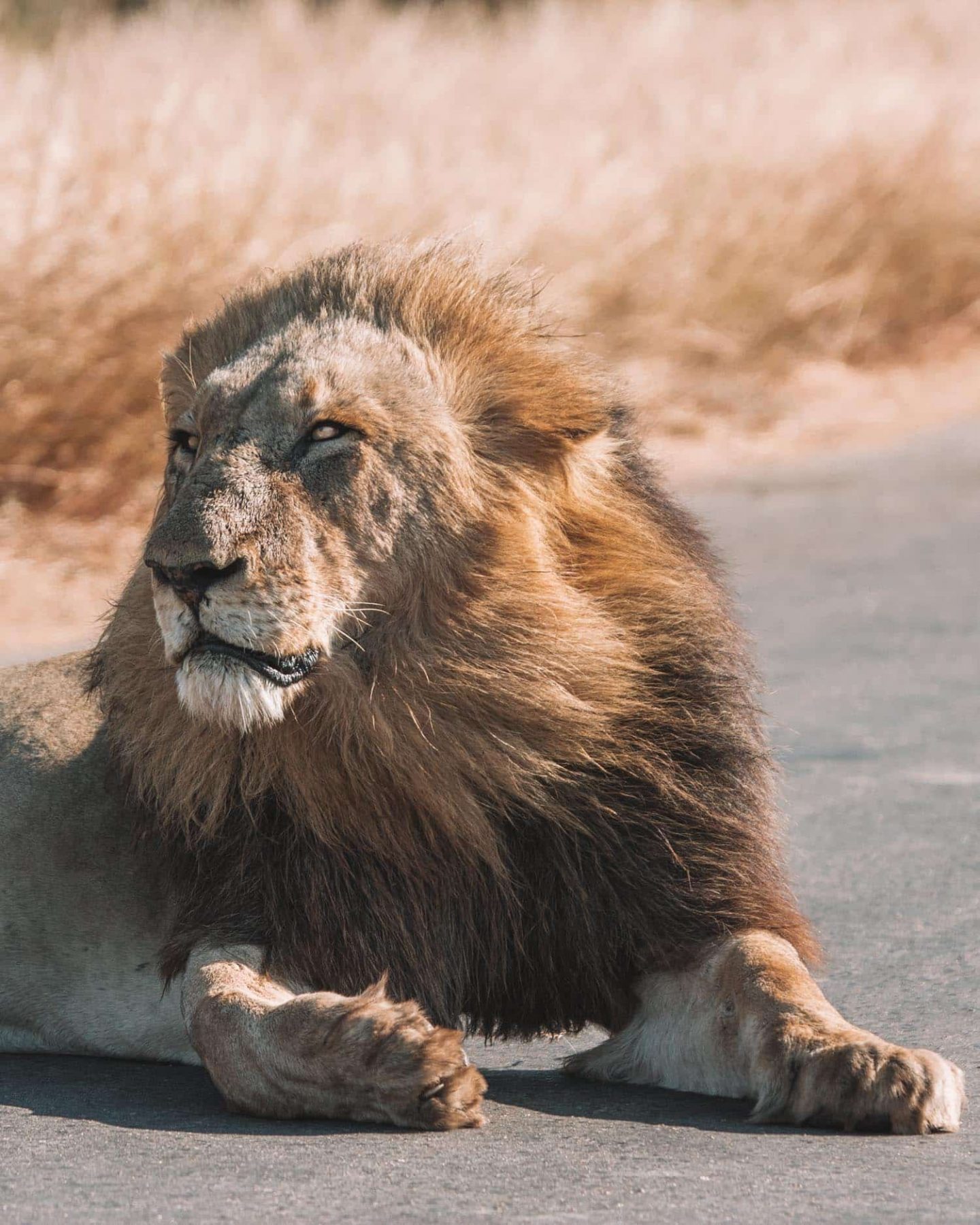
If you’re arriving via the Phabeni Gate, take the S1 towards Skukuza. Along the way, stop at Nyamundwa Dam where you can often see a variety of wildlife like hippo, giraffe, and zebra.
Keep going and turn on the H11. It’s a busy road, but for a good reason! There are usually excellent sightings, and you’re likely to see big herds of elephants, and in the evenings, leopards tend to hang around here as well.
Continue towards the H10 in Lower Sabie. There’s always something to see here whether it’s cheetah, elephant, lion, buffalo or rhino.
Before the end of the day, drive along the H4-1 to Skukuza. It’s another popular stretch of road that’s considered one of the best in the park for Big 5 sightings.
If you’re staying a Crocodile Bridge camp, you can make a loop up to Lower Sabie via Skukuza. You want to plan your drive, so you make it to Lower Sabie’s Sunset Dam for the sunset (obvs).
The dam is always busy, and it’s an excellent place to spot the Big 5, wild dog and other animals.
This Crocodile Bridge drive is one of the best Big 5 roads in Kruger!
Slow down once you get to the open plains before Crocodile Bridge. You might see a cheetah and other Big Cats as the bush starts to come alive at sunset.
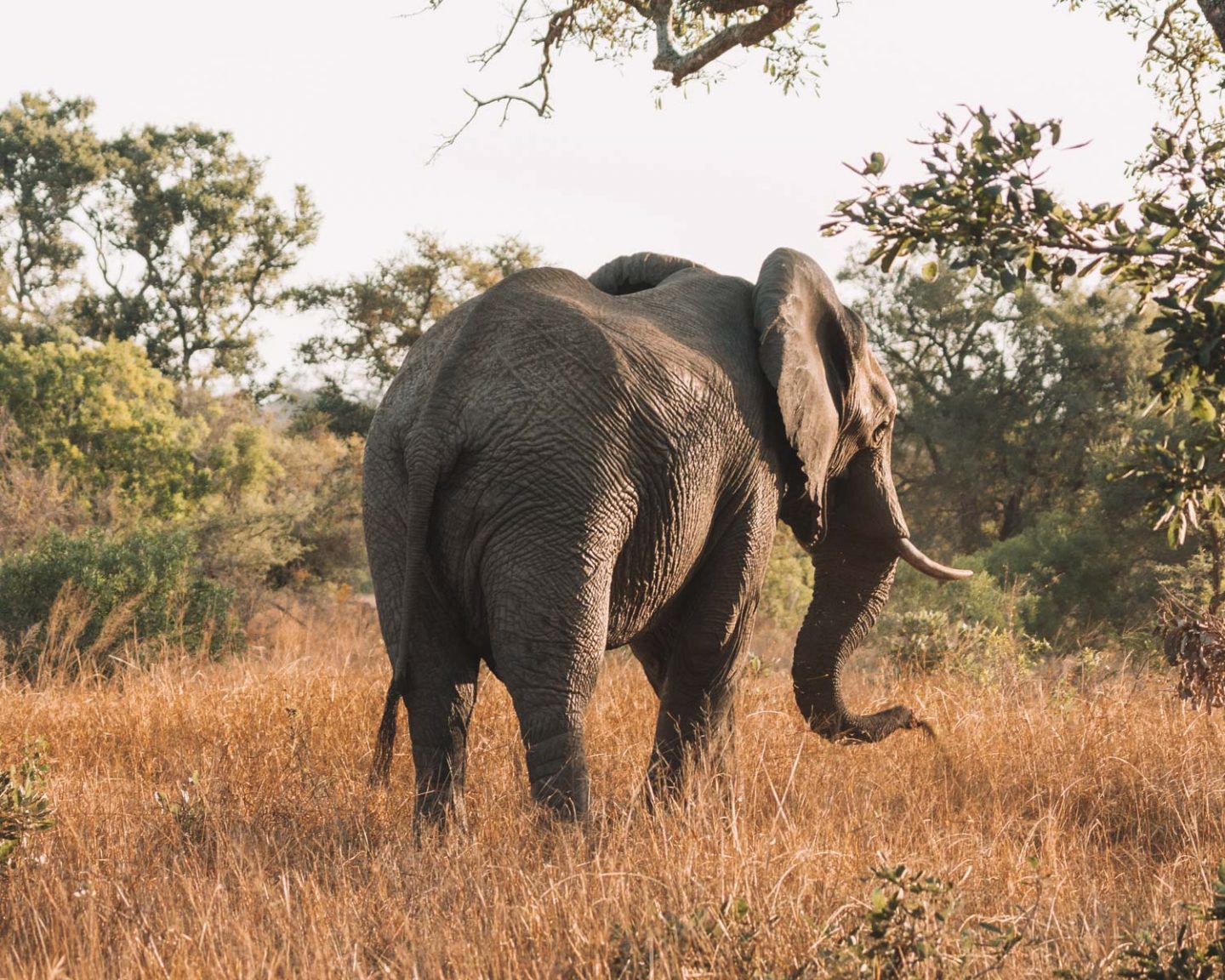
Here are some essential photography tips to help you take better photos while on safari:
• Invest or hire a telephoto lens (try to get one with a low f.stop for that bokeh effect) • Use a high shutter speed to minimise motion blur • Use a low ISO (100-200) to minimise grain on your photos • If you’re shooting in low light conditions, you can usually get away with ISO 800 • Use your camera’s silent shutter (if it has one) • Focus on the animal’s eyes.
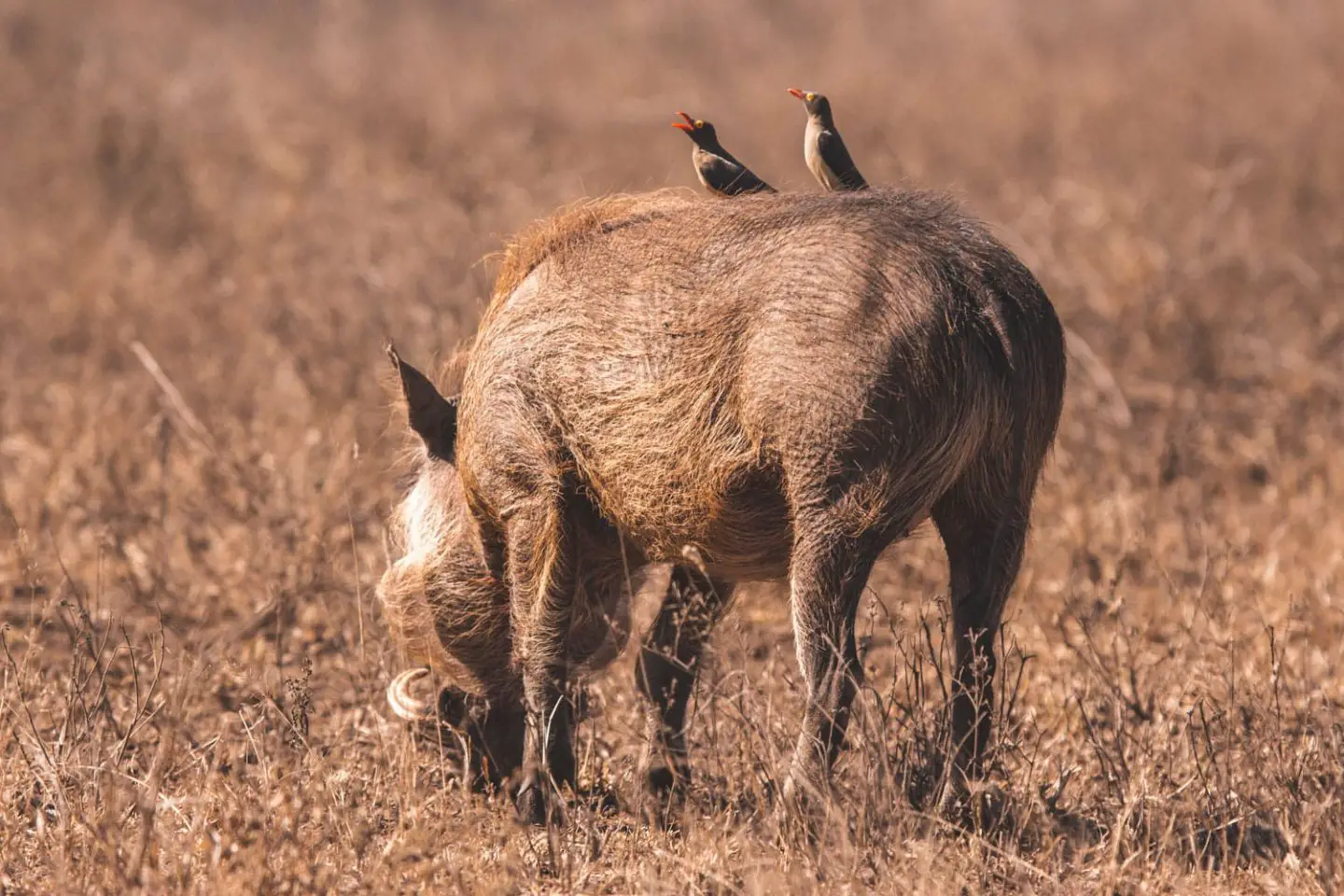
Phew! You’ve made it to the end of a massive blog post.
You deserve that glass of wine tonight, my friend. Or if you don’t drink, a tall cup of hot chocolate with alllll the tiny marshmallows!
Do you have any questions about visiting Kruger National Park that I didn’t answer? Did I leave out your favourite rest camp or drive? Hit ya gurl up in the comments and let’s geek out, bro!
Psst…Want more South Africa travel inspiration? Check out my other posts:
- The Perfect Itinerary for an Epic South Africa Road Trip
- 24+ Incredibly EPIC Things to Do in KZN, South Africa
- Top Romantic Getaways in South Africa
- 10+ Spectacular Road Trips in South Africa You Can’t Miss
- The Best Game Reserves in KZN for an Unforgettable Safari Experience
- The Ultimate South Africa Bucket List: 40+ Amazing Places to Visit
Did you find this post useful? Save it for later on Pinterest!
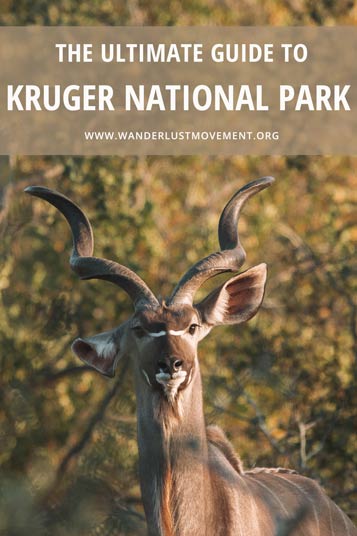
About Lauren Melnick
Lauren Melnick is the founder of Wanderlust Movement, Wander to Here and is a South Africa travel blogger. She's been travelling the world as a full-time freelance writer since 2016 and has visited over 40 countries.
When she isn't typing up a storm, you can find her conquering overnight hikes around the Western Cape, rock climbing, and hosting sold out group travel trips around South Africa, Namibia and Morocco.
Reader Interactions
March 18, 2022 at 4:50 pm
Thank you so much for all your amazing posts! I literally get so much inspo and info for my vacation in SA! Do you have any suggestions to visit on the route from Drakensberg to Kruger? I see a lot of people going down to the coast but do you have any suggestings that wouldn’t be a huge detaour? Thank you so much.
March 29, 2022 at 10:49 am
Hey! You could drive up to Mpumalanga and do the Panorama Route. I have a blog post on that trip over here: https://www.wanderlustmovement.org/panorama-route-south-africa/
June 16, 2022 at 8:52 am
It’s a pity about the crime by Numbi Gate too dangerous to drive that road puts you off to go to those lodges near the gate.
Leave a Reply Cancel reply
Your email address will not be published. Required fields are marked *
This site uses Akismet to reduce spam. Learn how your comment data is processed .
Love The Content?
Scroll to next lodge
5-night+ itineraries.
If you have the time to spend 5 or more nights in Kruger, then you are going to have a dream bush experience…!
With that much time, there is an incredible number of variations of itineraries that you could build. The first key question is whether to stay in one or two rest camps and explore those areas in detail at a steady pace, or whether to visit a few camps and travel through a greater amount of the park’s diverse and varied habitats.
Once you’ve decided on that, you can start to build an itinerary to match your interests and style of travel. Perhaps consider stitching together a couple of the 2-, 3- and 4-night itineraries listed in this section of the App, or at least reading through them to give you some ideas.
Make sure you have a read through each of the individual rest camp profiles too, as that will give you a flavour for what you can expect from each in terms of accommodation options, local habitats and potential wildlife sightings.
The key thing to avoid is having to travel too far between different rest camps in a single day. Doing that just ends up feeling stressful and might encourage you to speed, which endangers the wildlife and significantly reduces your chances of seeing things. Slow and steady is the best way to navigate Kruger!
Check availability & pricing
We’d love to help you book one of the above or a similar itinerary and make your dream Kruger experience come to life! We’ve made it really simple for you too… Just fill in the details in this form, hit submit, and we’ll get back to you with availability and prices as soon as possible!
Booking your accommodation through the KrugerExplorer Website means we earn a small commission and is greatly appreciated, but please rest assured that it won’t make your booking more expensive. Instead, it actually helps us give you access to the best prices and offers we can find, as well as helping to support the KrugerExplorer App and our social media activities!
All of the itineraries are suggested only – they can be reversed, changed or adapted as part of a wider trip depending on availability in each of the rest camps, but they are a great start point.
All enquiries for SANParks accommodation within Kruger National Park are handled by the wonderful team at our excellent and carefully selected partner Safari.com. They will be able to check availability, help with adjusting an itinerary depending on availability and get your reservation confirmed.
Their team can also help with booking SANParks accommodation at any other National Park within South Africa too – just let them know!
Wanderlust Travel & Photos
Seeing the world one trip at a time.
- Work With Me
- Travel Journal
- Privacy Policy
- Browse by Continent
- Australia Travel
- Peru Travel
- Thailand Travel
- Browse by Region
- East North Central
- East South Central
- Mid-Atlantic
- New England
- South Atlantic
- West North Central
- West South Central
- Central America
- North America
- South America
- Travel Vlog
- Instagram Photos
The Ultimate Kruger National Park Safari Planning Guide
Kruger National Park in South Africa is one of the world’s premier wildlife destinations. The Greater Kruger area is an expansive region that is comprised of beautiful landscapes and a wealth of wildlife. A Kruger National Park safari is an experience that you will treasure forever. At the same time, it can also be an overwhelming endeavor to plan.
Deciding where to plan your safari and where to stay while you are there can be daunting. Not to mention, figuring out how to get around while you are there and what to bring for your safari. These are just some of the many things you will need to factor in when planning your trip.
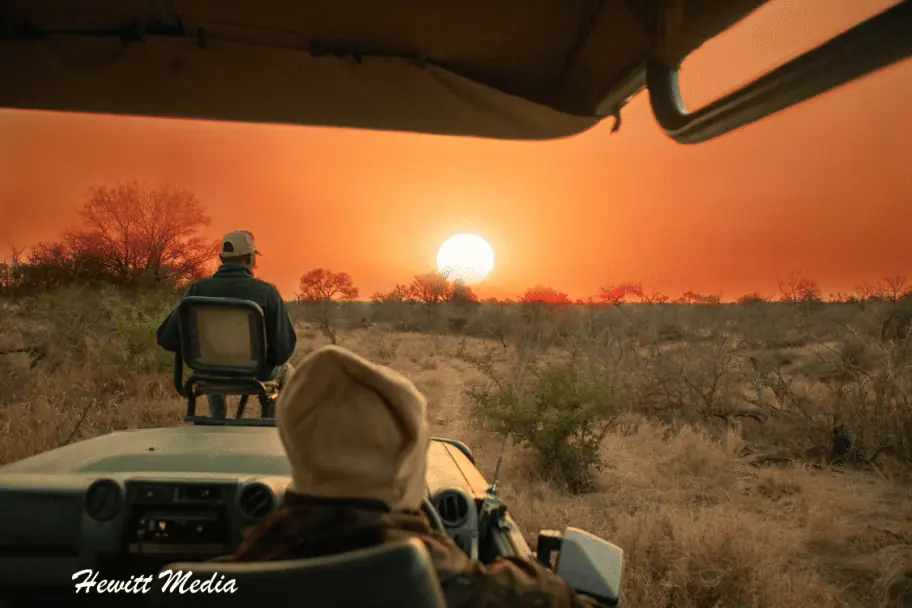
If you are planning your first Kruger safari and are feeling overwhelmed, you have come to the right place. In this comprehensive safari planning guide, I give you all the information you will need. I discuss the differences between safaris inside the park and within the private reserves.
I outline the nuances between the different regions of the park to make it easier for you to plan where to go. On top of that, I provide you with some recommendations on lodges, campsite, picnic areas, and scenic spots to help you plan. Finally, I have provided you with detailed packing guides, safari and safety tips, as well as other valuable information you will need to plan your safari.
Kruger National Park Safari Guide Navigation Links
To make it easier to use this guide, I have provided some easy to use navigation links below. Feel free to use these links to skip to different parts of this guide as you start your planning. If you have any specific questions that you need answered, always feel free to shoot me and email. If I can’t address your questions, chances are I will be able to direct you to someone who can.
South Africa Entrance Requirements
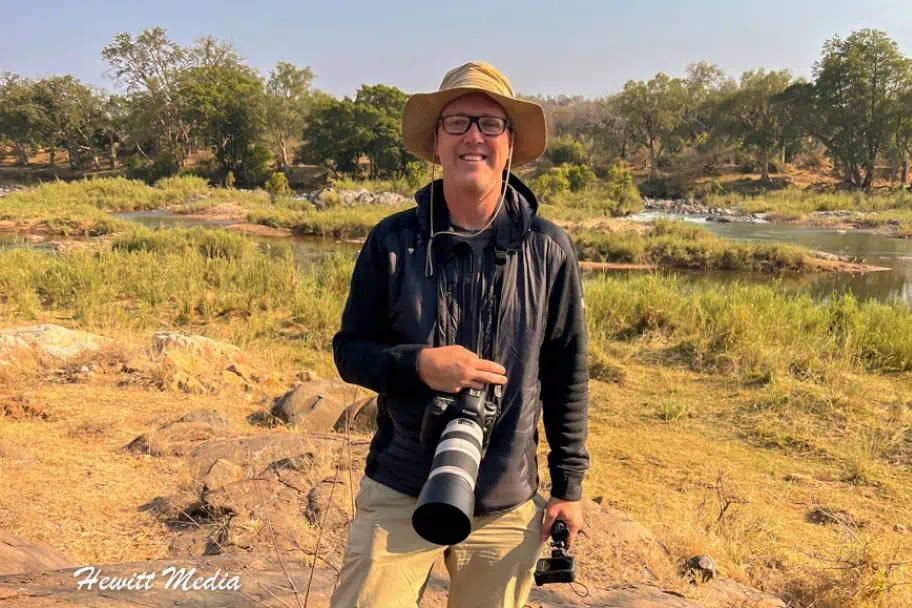
Before you depart for your Kruger National Park safari in South Africa, you will need to make sure that you meet all of the requirements for entry into the country. In order to assist you in this preparation, I have created a short article that outlines all of the South Africa entry requirements for visitors. This includes the necessary passport, VISA, and customs requirements that you will need to consider before you depart for your trip.
South Africa Travel Immunizations
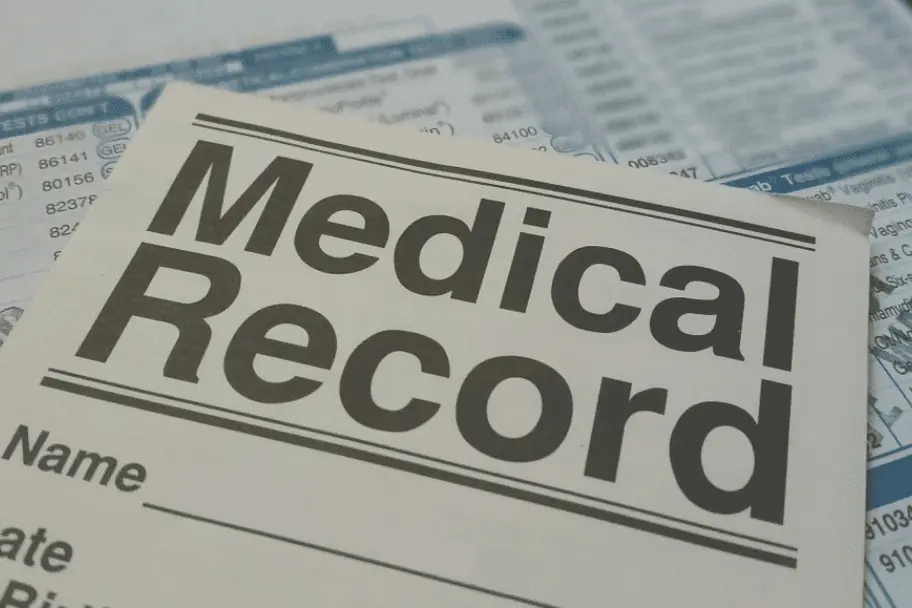
Important Note: I am not a medical doctor and do not have any medical experience. The information provided in this section is a summary of information that I got from the recommendations of the Centers for Disease Control and Prevention in the United States for travel to South Africa . I am providing you this information to help bring awareness of the necessary vaccinations to you, but consultation of my guide should not replace a discussion about your travels with your doctor or a travel medical clinic.
One of the most important, and yet most often overlooked, aspects of travel is the necessary vaccinations that are required or recommended to keep you safe and healthy when you travel. Before you depart for South Africa, you are going to want to make sure that you have all of the proper vaccinations.
Some of these vaccinations, like the Yellow Fever vaccination, are included in the South Africa entrance requirements if you are traveling to South Africa from certain high-risk locations. Other vaccinations, such as a flu shot and the Typhoid vaccine, are recommended, but not required.
For your convenience, I have summarized the CDC’s recommendations on vaccines and healthcare for travelers visiting South Africa for you to review in my “South Africa Passport, VISA, Customs, and Immunization Requirements” guide linked below.
What to Bring on Your Kruger National Park Safari
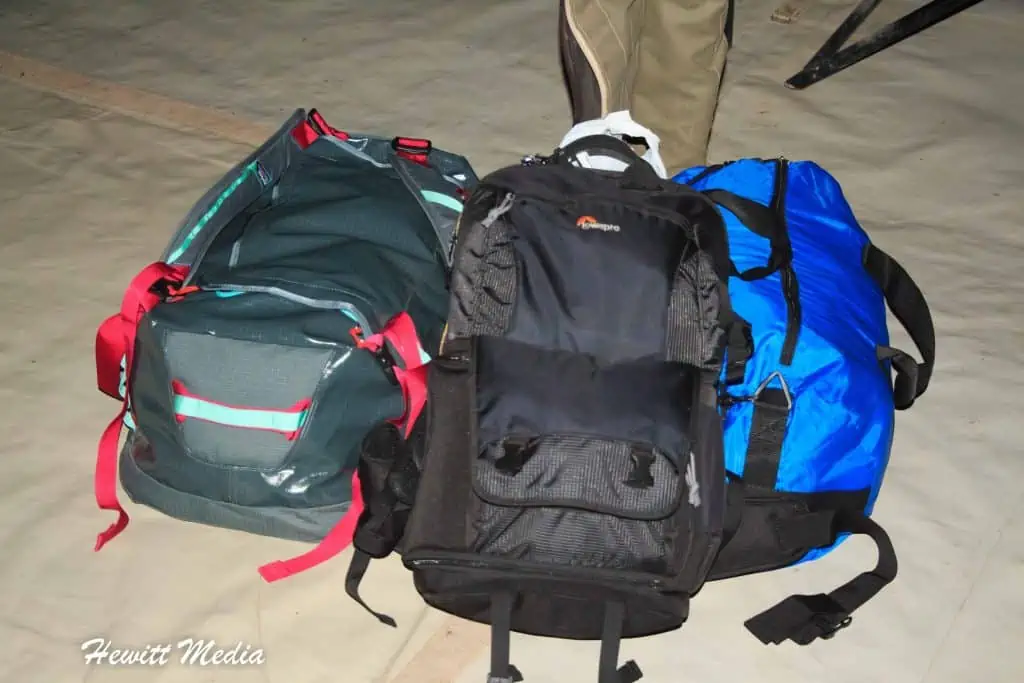
If you are visiting Africa to go on safari for the first time, you might not be sure of what to bring with you. To help you with these questions as you prepare for your Kruger National Park safari, I have developed several guides that you should review.
First, my article the “20 Tips for Those Visiting Africa for the First Time” will help you get prepared for what to expect when you arrive in Africa for the first time. It outlines what you should do, what you shouldn’t do, and gives you some tips that will help you know what to expect on your first visit to the continent of Africa.
Then, as you start to prepare for your trip, you will want to review my “Essential Safari Packing List” to make sure that you have all of the gear that you need and don’t pack what you won’t need with you. Finally, if you plan to take pictures on your safari, you will definitely want to review my “Tips for Photography on African Safaris” guide to make sure you get the best photographs possible to remember your adventure!
How to Get to Kruger National Park
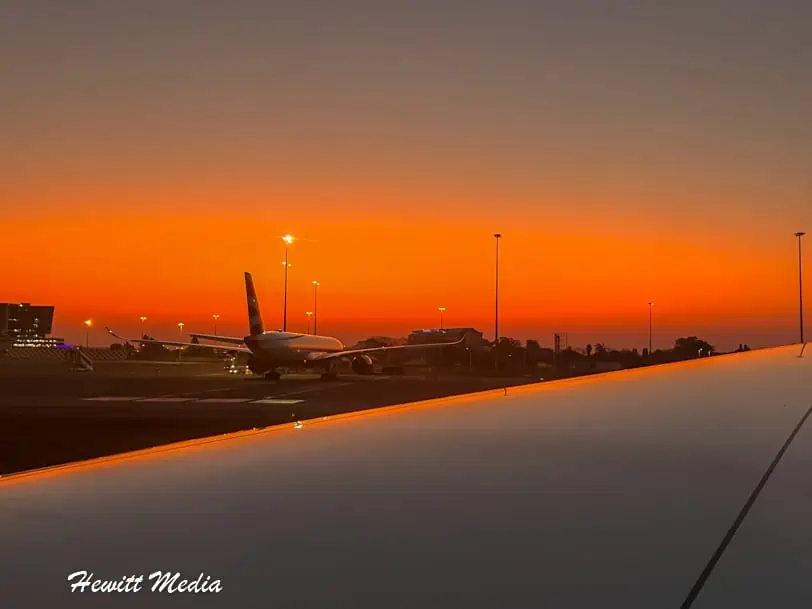
If you are visiting South Africa for the first time, I strongly recommend spending some additional time in the country to explore both the Cape Town area as well as the infamous Garden Route on the Southeastern Coastline. While it is tough to compete with the incredible experience of a Kruger National Park safari, both of these areas are incredible and worth visiting. If you are interested in learning more, I have included some guides for these areas below for you to review.
Getting to Kruger National Park
If you are planning to visit Kruger National Park from outside of South Africa, the closest international airport is the O.R. Tambo International Airport in Johannesburg. Once in Johannesburg, there are a variety of different options you can choose to get to the park.
Renting a Car
If you are planning a self-drive safari within Kruger, you can rent a vehicle and drive to Kruger. The roads leading to the park are paved and are in generally good condition. So, getting there isn’t too much of a hassle. The entrance gates in the south section of the park, like Numbi and Phabeni, will only take you 4-5 hours to get to. If you plan on visiting the far north of the park, it will take you considerably longer to drive there. For instance, I would plan on at least 7-8 hours of driving to reach the Pafuri Gate.
- Directions to the Numbi Gate from Johannesburg
- Directions to the Phabeni Gate from Johannesburg
- Directions to the Orpen Gate from Johannesburg
- Directions to the Pafuri Gate from Johannesburg
Flying to Kruger National Park
For those looking for a quicker option to get to Kruger, you can book a connecting flight from Johannesburg. You can connect to either Nelspruit , Hoedspruit , Phalaborwa , or Skukuza . Only Skukuza is located inside Kruger National Park. However, the other three airports are located just outside the park where lodges and camps can make arrangements to pick you up.
Book a Full Service Tour
Another great way to get to the Greater Kruger National Park area to go on safari is to book a tour with a tour operator that provides transportation from Johannesburg. When we booked our Kruger Safari, we booked a tour with Viva Safaris . They were one of the first tour operators in the Kruger Area to provide transportation to-and-from the Kruger area.
These tour operators will pick you up at either the airport or your hotel near the airport. Then, they will drive you to the Kruger area for your safari stay. When your stay is complete, they will drop you back off in Johannesburg. We were thoroughly impressed with the level of service and safari experience we got from Viva Safaris. If you are looking for a full-service tour, I strongly recommend them.
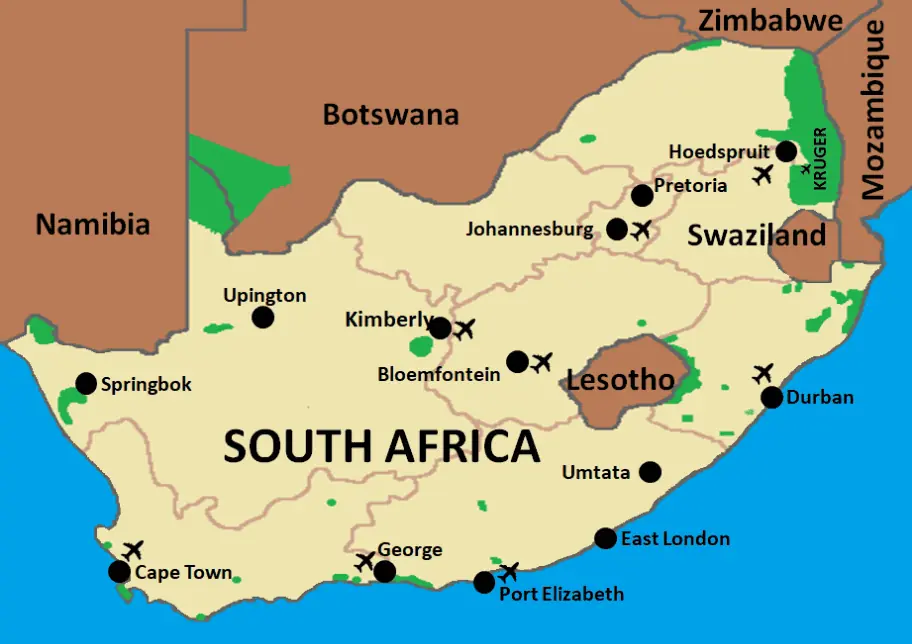
The Greater Kruger National Park Area
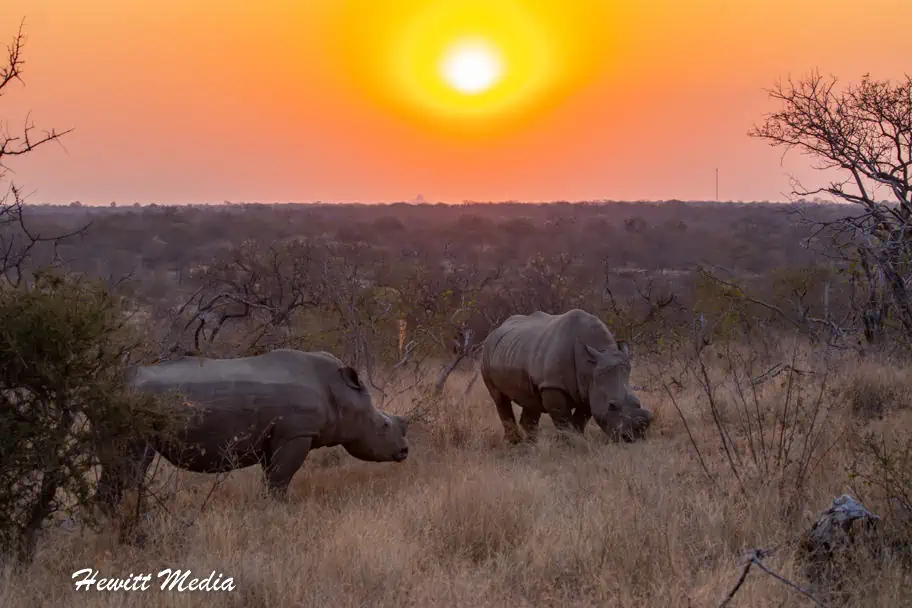
If you have already started to plan your Kruger National Park safari, you have probably come across the term “Greater Kruger” in your research. If you aren’t aware, the term refers to the roughly 344,000 hectares (or roughly 860,000 acres) of protected land to the West of Kruger National Park. Combined with the Kruger National Park proper, this collection of protected land creates one of the largest unfenced wildlife areas in all of Africa.
Because there are no fences between these areas and the national park, wildlife is able to roam freely throughout the area. This has returned much of the natural wildlife migrations to the Kruger area, as most grazing animals tend to migrate from East to West with the seasonal rains.
Included in this Greater Kruger National Park area are a number of private game reserves and nature reserves. Operated by private enterprises, these reserves are only open for safari to visitors staying at local lodges or camps located within the reserves. Many of the high-end luxury lodges that you will find in the Greater Kruger National Park area are located within these reserves.
Because they are privately owned, they aren’t governed by the same safari rules that safaris within Kruger National Park are. This creates a unique distinction between Kruger safaris and private reserve safaris that I will cover later in this guide.
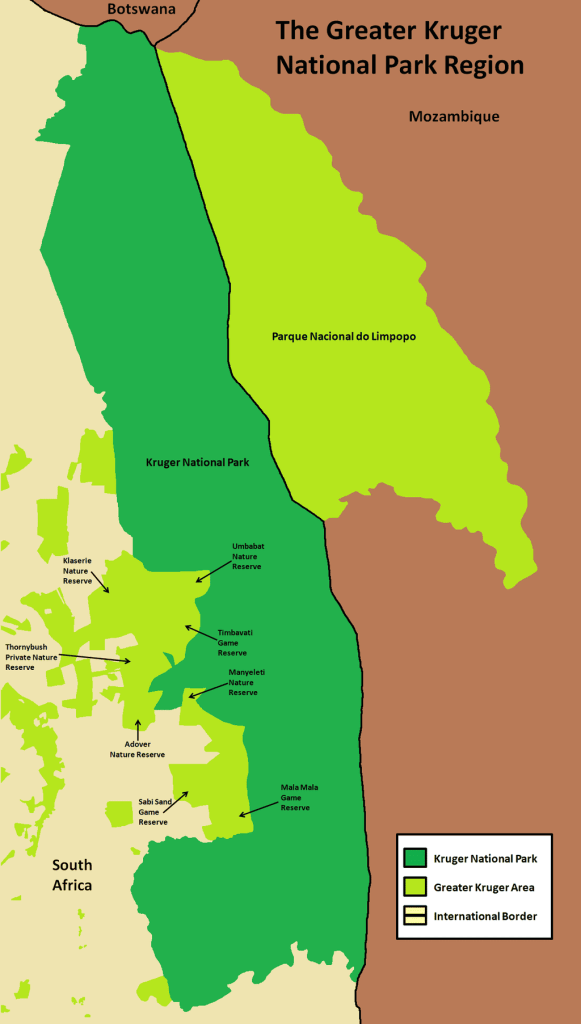
View Larger Map
Private Game Reserves vs Kruger National Park
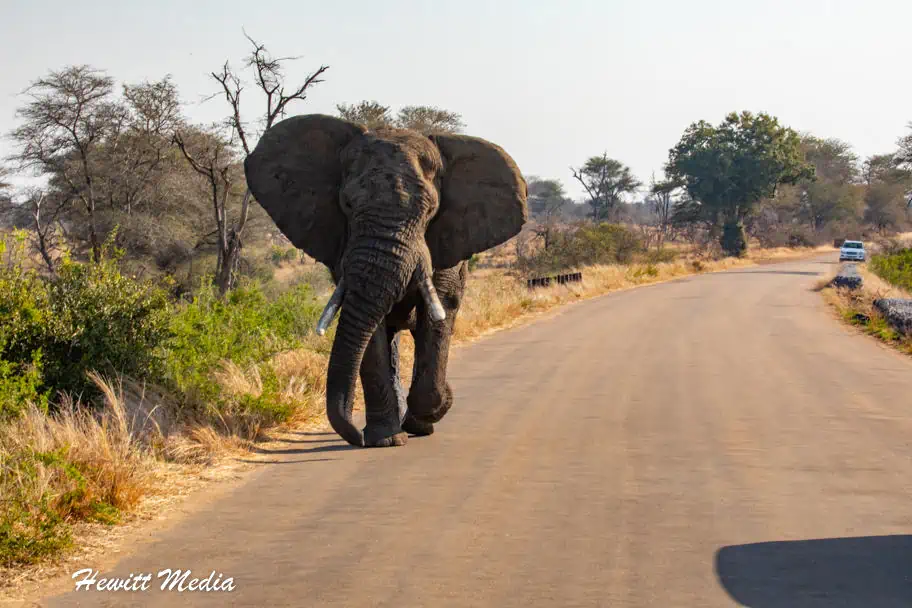
As you start to plan your Greater Kruger National Park safari, one of the first things that you will need to decide is where you will be going on safari. Unlike smaller parks in Africa, the Kruger National Park is absolutely massive. The choices to choose from become even greater when you factor in the wealth of private game reserves that make up the Greater Kruger area.
Deciding whether you will be going on safari in Kruger National Park, an adjacent private game reserve, or a combination of both will be one of the most important decisions you make. To make it easier for you to decide, I have laid out the pros and cons for going on safari in both the park and the reserves below for you to review.
Going on Safari in Kruger National Park
Choosing to go on safari in Kruger National Park is never a bad option. It is no mistake that it is one of the most renowned wildlife parks in the world. However, before you start to plan your trip to the Greater Kruger area, you should understand the differences between going on safari inside the park and in one of the private reserves. I have highlighted the pros and cons to Kruger National Park safaris for you to review below.
Kruger Safari Positives
- Kruger National Park has one of the highest concentrations of wildlife in the world.
- Accommodation options tend to be cheaper inside the park.
- There is a larger area to explore, so you can cover more ground in search of animals.
- You can drive yourself on a self-safari inside Kruger National Park.
- Many of the park’s roads are paved, which makes the safari experience far more comfortable.
- The park does not interfere with the course of nature inside the park, so animals like the Southern White Rhino inside the park will have their full horns.
Kruger Safari Negatives
- The park can get rather crowded, especially in the peak season and in the popular southern section of the park.
- Safaris must stick to the roads inside Kruger National Park, so you can’t go off road in search of animals.
- Your safari experience will be far less intimate if you take a paid group safari.
- The guides for guided safaris are typically far less experienced than the guides typically found in the private reserves.
- The vehicles used inside the park are publicly funded, so they are typically not as well maintained as the ones in the private reserves.
- There are far less luxurious accommodations inside Kruger National Park compared to the private game reserves.
Going on Safari in the Private Game Reserves
In addition to Kruger National Park, the Greater Kruger National Park area is also home to many bordering private game reserves that offer incredible safari experiences. These game reserves are unfenced areas that are adjacent to the park but are privately owned and operated. Going on safari in the reserves offers both advantages and tradeoffs versus safaris inside Kruger National Park.
If you would like to better understand the differences, I have listed some of the top pros and cons for the private game reserve safaris for you to review below. Not only that, but I have also provided a list of some of the top game reserves in the area for you to review as you start to plan as well.
Private Game Reserve Positives
- Many of the luxury lodges and accommodations that you will find in the Greater Kruger National Park area are located in the private reserves.
- Most of the guides in the private game reserves tend to be more experienced and better trained in locating wildlife.
- Because the game reserves are privately owned and funded, many of the reserves have better equipped and maintained safari vehicles.
- Most of the private game reserves allow their guides to drive off of the roads and into the bush in search of animals. This, along with the added experience and expertise of the guides, allows for more animal sightings. I have talked to many people who have seen all of the “Big Five” of Africa in a single day within one of the private reserves.
- Your safari experience will likely be much more intimate than it will be inside Kruger National Park. In the park, you are only allowed to stop at rest areas and picnic sites. However, the reserves are able to cater to their clients a bit more. It is common to have bush braiis (barbeques) and scenic picnics in the bush within the private reserves.
Private Game Reserve Negatives
- The private reserves are much smaller than Kruger National Park. With unfenced borders to the park, the animals are free to move in-and-out of the reserves. The smaller area provides less ground to cover to find animals.
- There is a range of lodging options in the private reserves, but many of the top reserves have lodges that are much more expensive than the rest camps inside Kruger National Park. In my opinion, the budget lodging options outside the park are more limited.
- Many of the roads you find in the private game reserves are rough, which means you will have a far bumpier safari experience. This isn’t an issue for most people, but it is a big deal to some.
- You aren’t allowed to drive your own vehicle in the private game reserves. While some may look at this as a negative, getting the experience and expertise of a guide is more of a positive. Most safari experiences will be small group, with the top-end packages including private game drives. However, if you are with a group, you may not have as much control over when and for how long you stop.
- Many of the private game reserves in the Greater Kruger area cut the horns off of the rhinos to discourage poaching. While I commend these efforts from a conservation viewpoint, you are less likely to see a rhino with full horns outside of Kruger National Park. So, this is really a positive (for conservation) and negative (that it even has to be done in the first place) at the same time.
Top Private Game Reserves in the Greater Kruger Area
- Sabi Sand Game Reserve
- MalaMala Game Reserve
- Manyeleti Game Reserve
- Klaserie Nature Reserve
- Balule Nature Reserve
- Timbavati Private Nature Reserve
Why a Combination is the Best Option
In my opinion, spending time both inside Kruger National Park and in one of the adjacent private game reserves is the best way to get the complete Kruger National Park safari experience. I would suggest looking for Kruger safari packages at the private reserves that also include days of safari inside the park.
When we visited the Greater Kruger area, we booked a tour at the Balule Game Reserve. We had such an amazing experience in the private reserve, but our tour also included days of guided safari inside Kruger National Park as well.
Choosing Where in Kruger National Park to Visit
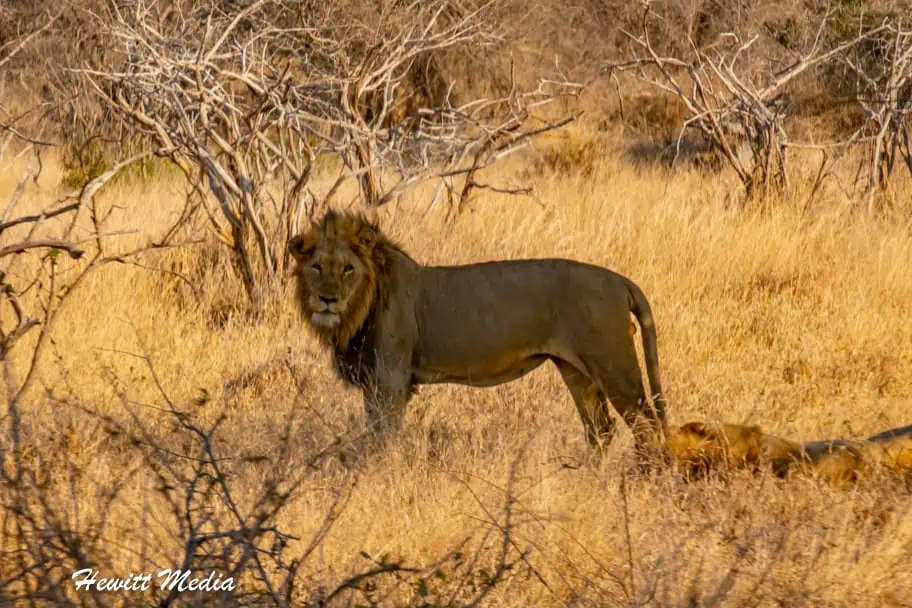
One of the most important decisions you will have to make when planning your Kruger National Park Safari is deciding which part of the park to visit. Kruger is one of Africa’s largest wildlife parks, so seeing the entire park in even one long trip is very difficult. Deciding what part of the park to plan your visit will be an important decision you will make.
Kruger National Park is logically broken up into three different sections. This includes Northern Kruger, Central Kruger, and Southern Kruger. Each section of the park has its own distinct advantages and disadvantages that you will need to consider and weigh. To assist you with this, I have included my thoughts on each section of the park for you to review below.
Southern Kruger
The southern section of Kruger National Park is by far the most popular section of the park. For starters, it is the easiest part of the park to get to from Johannesburg and Swaziland because of its close proximity. Not to mention, it is also where you will find the most popular rest camps within the park. The southern section of Kruger National Park has the most amenities, which means that there is a shorter driving distance between rest camps and picnic sites.
In addition, this section of Kruger National Park is renowned for having some of the very best game viewing. If you want to see Africa’s “Big Five” animals, your best bet is to visit the southern section of Kruger. As an added bonus, the southern section of Kruger is also the closest to luxury private game reserves in the Greater Kruger National Park area. So, if you plan on spending time on safari inside and outside of the park, I recommend Southern Kruger for your visit.
Southern Kruger Gates
- Paul Kruger Gate
- Phabeni Gate
- Malelane Gate
- Crocodile Bridge Gate
Central Kruger
Like the southern section of Kruger National Park, the central section is renowned for its incredible wildlife sightings. While it doesn’t have as many amenities as the southern section, Central Kruger has some of the most popular rest camps in the park. Both the Satara and the Olifants rest camps are iconic areas to visit for your first Kruger National Park safari. In fact, the area around Satara may be one of the best spots in the park to spot lions.
The lush grasslands in this area of the park are the perfect habitat for lions to hunt, which makes it a great spot to see this apex predator in the wild. The grasslands also attract many of the park’s grazing species, such as antelope, buffalo, and zebra. So, if you want to get away from the crowds in the south section of Kruger, but still want to be near the bulk of the park’s amenities, Central Kruger is a great option.
Central Kruger Gates
- Giriyondo Border Post
- Phalaborwa Gate
Northern Kruger
For travelers that want to completely escape the crowds and experience the majesty of a wild Kruger National Park, the northern section of the park may be just what you are looking for. There are far fewer people in this area of the park because there are far fewer amenities in the northern section of Kruger. Less amenities means that there is a longer driving distance between rest camps and picnic sites.
There is also less wildlife in this part of the park, but less humans means that you may be able to spot some of the park’s more elusive species. For instance, Northern Kruger is one of the best places in the park to see the critically endangered African Wild Dog. In addition, it is also an incredible place to go bird watching. So, if you would like to experience a more rustic Kruger National Park safari without the crowds, Northern Kruger is a great place to do just that.
Northern Kruger Gates
- Pafuri Border Post
- Punda Maria Gate
Best Times to Visit Kruger National Park
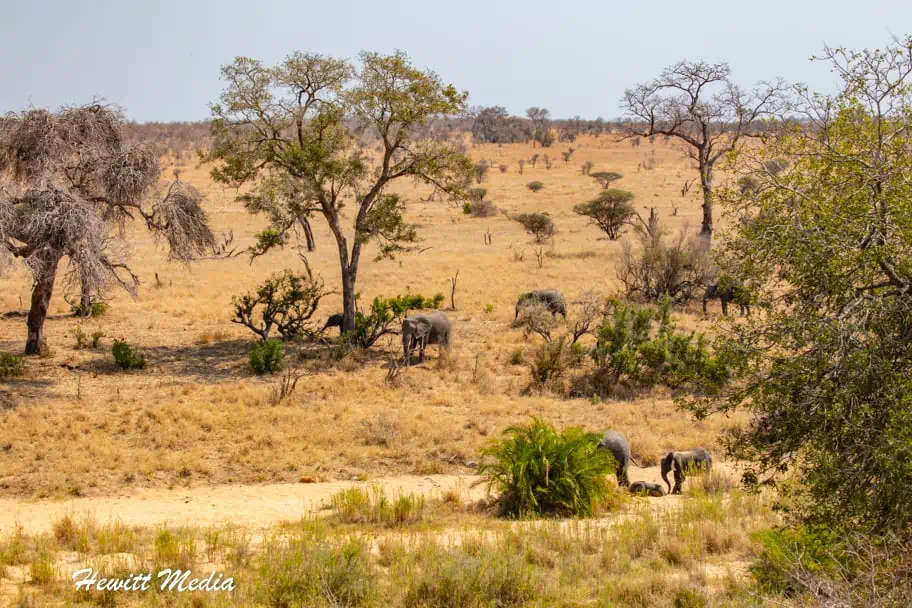
Like most safari destinations, some months of the year are better than others to go on a Kruger National Park safari. Before you start to plan your safari adventure, take some time to review the information I have included in this section of my guide. It has important information that will help you pick the right time to plan your trip.
Average Temperature (°F)
As you can see by the monthly temperature chart below, the daytime temperatures in Kruger during the summer months can be incredibly hot. If you aren’t good with high heat and humidity, I would avoid the months of December thru February.
At the same time, morning temperatures during the dry winter months can be very cold. In South Africa, they use open safari vehicles, so early morning game drives are very chilly. If you want to avoid the cold, steer clear of the months of June thru August.
Average Precipitation (Inches)
One of the most important factors that can influence a safari experience is rain. And this isn’t just because it impacts the comfort of us as visitors. Rain can play a huge factor in how easy it is to find and spot animals within the park and reserves.
When it is dry out, water is scarce and animals tend to congregate near permanent water supplies like rivers. This makes it much easier to find animals while on safari. Not only that, but vegetation isn’t as thick during the dry months, which makes it easier to see animals in the bush.
During the wet months when water is plentiful throughout the park and vegetation is thick, finding animals becomes a much tougher task. Before planning your Kruger National Park safari, review the average monthly rainfall chart I have included below to assist you in picking the right time for your safari.
Dry Season (May to September)
- Daytime temperatures aren’t as hot, and the humidity is low.
- Water is scarce in the bush, so animals are attracted to the permanent water sources. This makes spotting animals much easier.
- The dry, sparse vegetation makes it much easier to spot animals in the bush.
- Morning temperatures can be chilly, so warm clothes are needed for morning safaris in the open-air safari vehicles. This is especially true in June, July, and August.
Wet Season (October to April)
- Daytime temperatures can be scorching hot and very humid. Daytime high temperatures can exceed 104-degrees Fahrenheit.
- Beginning in October, rain becomes more frequent in the park. This makes finding animals more difficult as water sources are more prevalent, and the vegetation gets thicker.
- The months of December thru February are typically very wet with downpours in the afternoons. It seldomly rains all day, but frequent afternoon rainstorms should be expected this time of year.
- Morning temperatures are more moderate, so warm clothing isn’t as needed for early morning game drives.
Best Months to Visit Kruger National Park
As you can see, there are a lot of factors to consider when deciding when to plan your Kruger National Park safari. In addition to the information, I provided above, I have also included an easy-to-understand chart below. This chart combines all of the factors I outlined to visually show you which months are best for visiting Kruger National Park.
Where to Stay in Kruger National Park
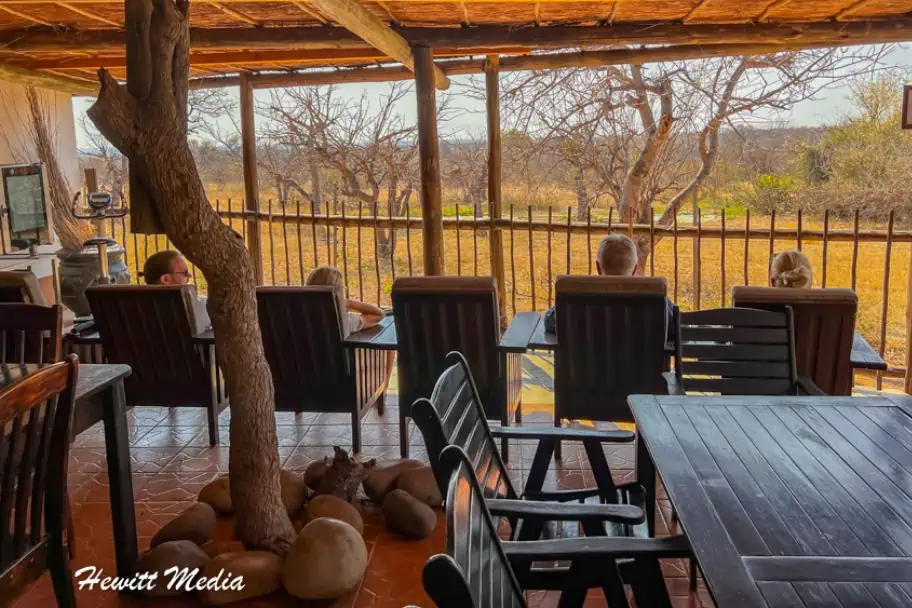
One thing that you will quickly realize as you start to plan your Kruger National Park safari is that there is a wide range of options for where to stay. You will find everything from high-end luxury resorts to bare amenity campgrounds, both inside the park and in the surrounding game reserves. As you start to put together your plans, you will need to decide where you want to stay during your visit.
If you are planning on staying inside Kruger National Park, I have provided a number of rest camp, lodge, bushveld camp, and campground recommendations for each section of the park later in this guide. For those who are unsure of where to begin, I have provided some highlights you can expect from each accommodation option for you to review below.
Park Rest Camps
For those who plan to stay inside Kruger National Park, one of the most popular options is to stay at one of the SANParks operated rest camps. While these rest camps aren’t as luxurious as some of the private lodges that you will find inside and outside of the park, they are more than comfortable and are generally very well maintained.
Private Lodges
If you are planning on staying within Kruger National Park but are looking for something a bit more upscale than what is provided at the rest camps, there are a number of private lodges within the park as well.
These private lodges offer a wide range of budget options, so you can find anything from high-end luxury to budget friendly lodging. As an added bonus, many of the privately run lodges within the park offer private access to roads within Kruger National Park that are off limits to other visitors.
Park Campsites and Bushveld Camps
As you start to explore the accommodations in Kruger outside of the lodges, you will hear a lot of different terms thrown around. The terms “tented camp”, “bushveld camp”, and “bush camp” can mean different things to different people. Apart from your traditional lodges, which tend to offer the most amenities to visitors, there are a wide range of camp options in Kruger as well.
Tented Camps
The tented camps are typically smaller and more rustic than the traditional lodges, but they still offer many of the amenities you will find in the park’s lodges. Most often, this includes a bed, a bathroom, and sometimes even a shower within your tent. These accommodations are meant to give your stay a bush feel without skimping on too many of the luxuries of modern accommodations.
Bushveld or Bush Camps
Unlike tented camps, the “bushveld camps” or “bush camps” are typically even smaller and more rustic than your luxury tented camp. These sites tend to be even more remote, giving visitors an even more authentic bush experience. Generally speaking, these sites forgo many of the modern luxuries that you will find in the lodges and tented camps in favor of a more authentic safari experience.
Campgrounds
Lastly, the campsites in Kruger National Park are designed for visitors who either have their own tents or pop-up vehicle roof or trailer tents to stay in. These campgrounds are still protected by the same type of perimeter fencing that you will find at the lodges and camps, but the only amenities you will typically find are shared bathrooms and showers.
Depending on the site, some will also include a common kitchen area that you can use to prepare and cook meals. These sites are designed for the visitor who wants to forgo most modern luxuries and have as authentic a safari experience as possible.
Private Game Reserve Lodges and Camps
You will find the same variety of accommodations in the private game reserves in the Greater Kruger National Park area. These reserves have everything from the most luxurious lodges you can imagine to some of the most basic bush camps for those looking for a more authentic and budget-friendly experience.
One thing I would caution that you research before booking is whether or not the lodge, bushveld site, or campground you book has a protective perimeter fence. Most sites in the Greater Kruger area do, but not all of them offer this. If you are concerned about dangerous wildlife coming into your camp at night, this is something you will want to confirm before booking.
Southern Kruger National Park
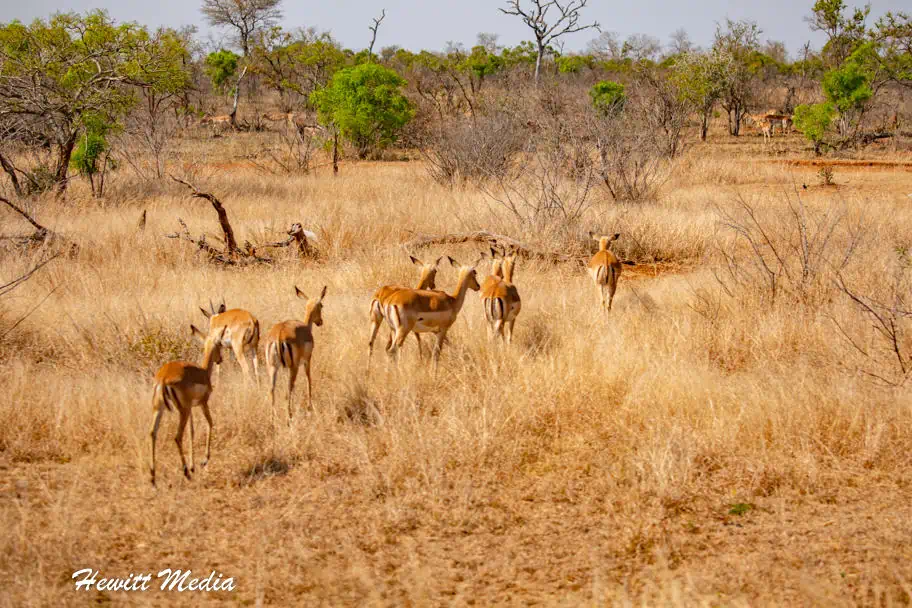
The southern section of Kruger National Park is undoubtedly the most popular part of the park. In addition to having the most amenities to enjoy, it is also where you will find half of the park’s entrance gates. If you are starting to plan your Kruger National Park safari and would like to know where to stay and where to stop, you are in luck.
I have included details on recommended rest camps, lodges, and campsites for you to review below. I also outline where the popular picnic, scenic spots, and animal hides are located to assist you in your safari planning.
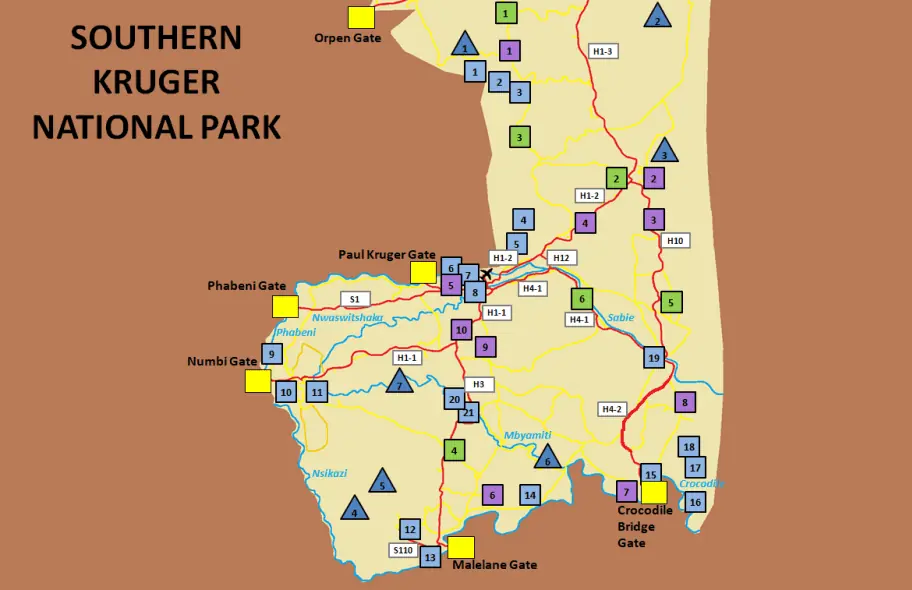
View Large Printable Detail Map
Southern Kruger Lodges and Rest Camps
Southern kruger campsites and bushveld camps, southern kruger picnic areas, southern kruger lookouts and hides, central kruger national park.
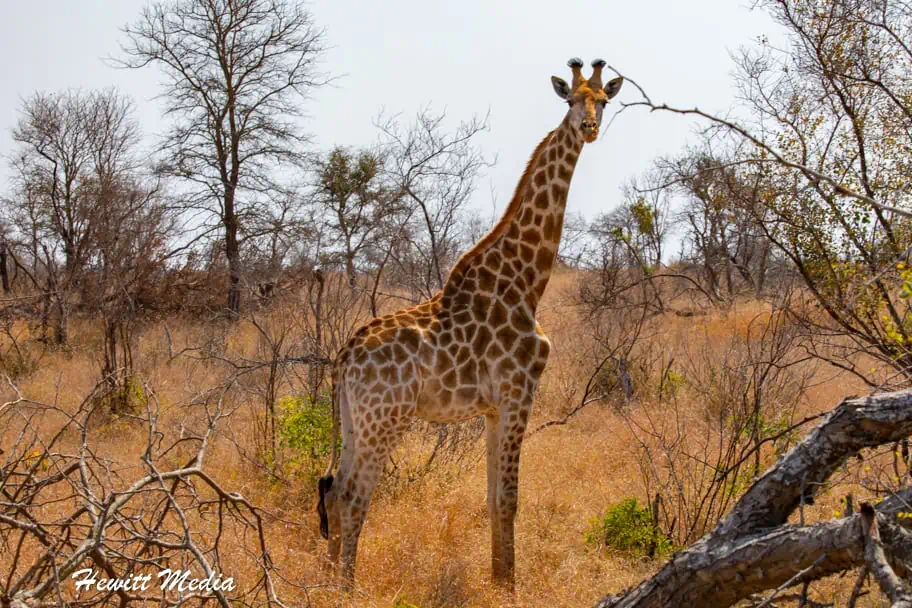
While the central section of Kruger doesn’t have the quantity of amenities as the south has, it certainly doesn’t lack in quality. In my opinion, some of the park’s top rest camps are located in the center of the park. Not only that, but Central Kruger is one of the best places to spot the park’s top predators. If you are starting to plan your Kruger National Park safari, you will want to review this section of my guide.
I have included details on recommended rest camps, lodges, and campsites in Central Kruger below. I also outline where the popular picnic, scenic spots, and animal hides are located to assist you in your safari planning.
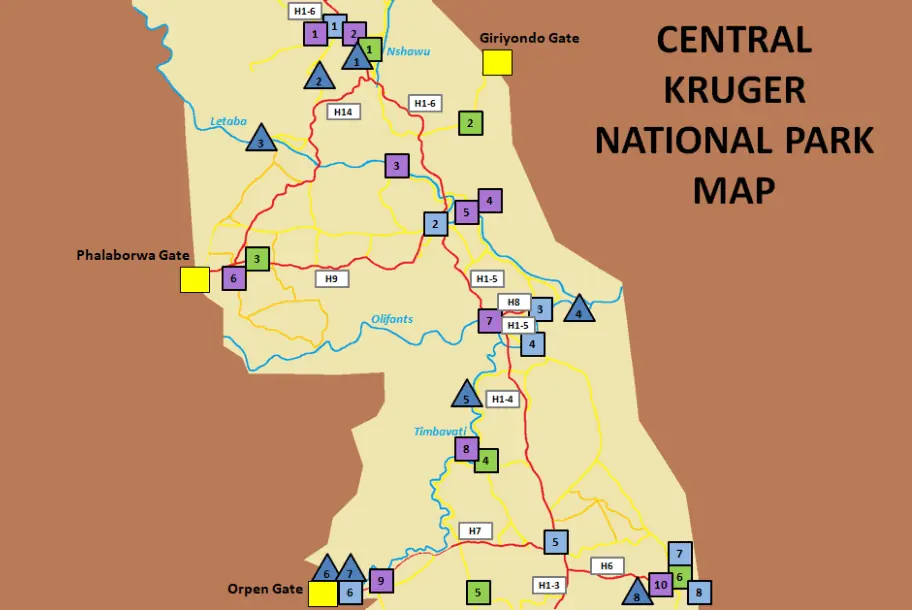
Central Kruger Lodges and Rest Camps
Central kruger campsites and bushveld camps, central kruger picnic areas, central kruger lookouts and hides, northern kruger national park.
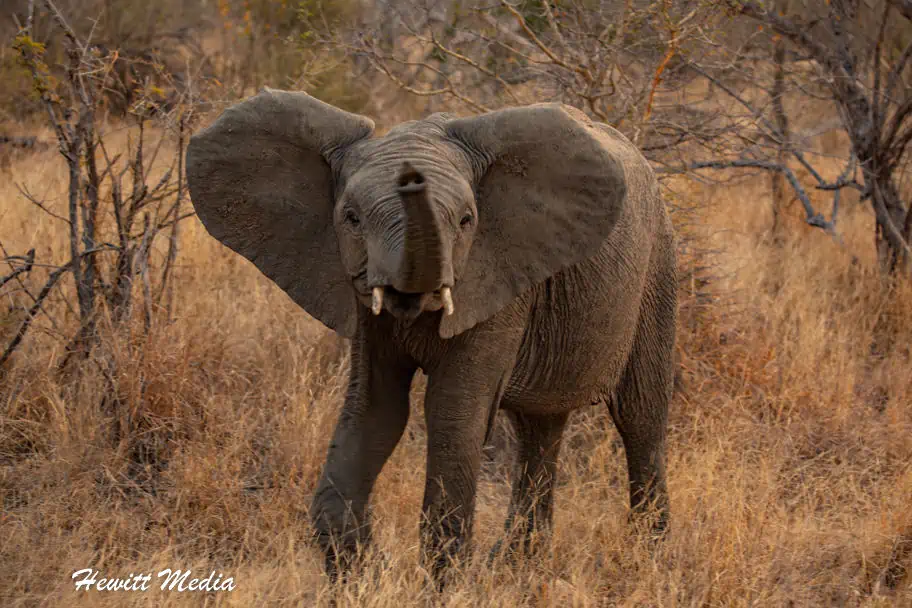
If there is one criticism I hear about Kruger National Park, it is that it can sometimes get a bit crowded. It isn’t uncommon in some areas to see crowds of vehicles around animal sightings. If you are looking to avoid that, the northern section of Kruger National Park is just what you are looking for. Although the amenities are fewer and farther between, there are still great options to choose from. This section of the park is far more secluded and will make you feel like you have the park more to yourself.
If you would like to visit Northern Kruger, you will want to read this section of my guide. Not only do I provide recommendations on rest camps, lodges, and campsites, but I provide some other great info as well. For instance, I list the picnic spots, scenic stops, and animal hides that I would recommend checking out. Hopefully this information assists you in your safari planning.
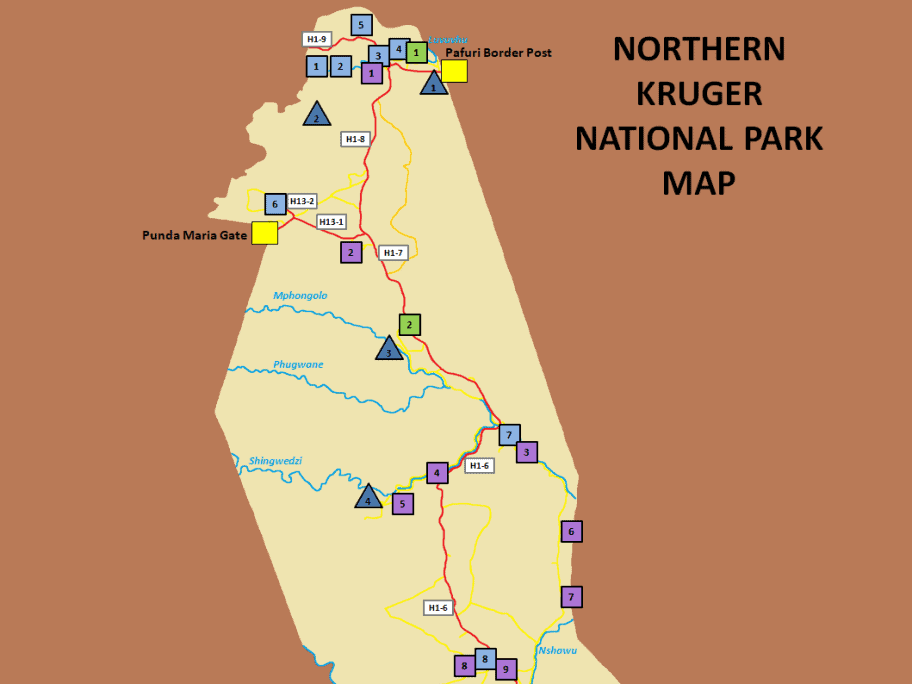
Northern Kruger Lodges and Rest Camps
Northern kruger campsites and bushveld camps, northern kruger picnic areas, northern kruger lookouts and hides, wildlife in kruger national park.
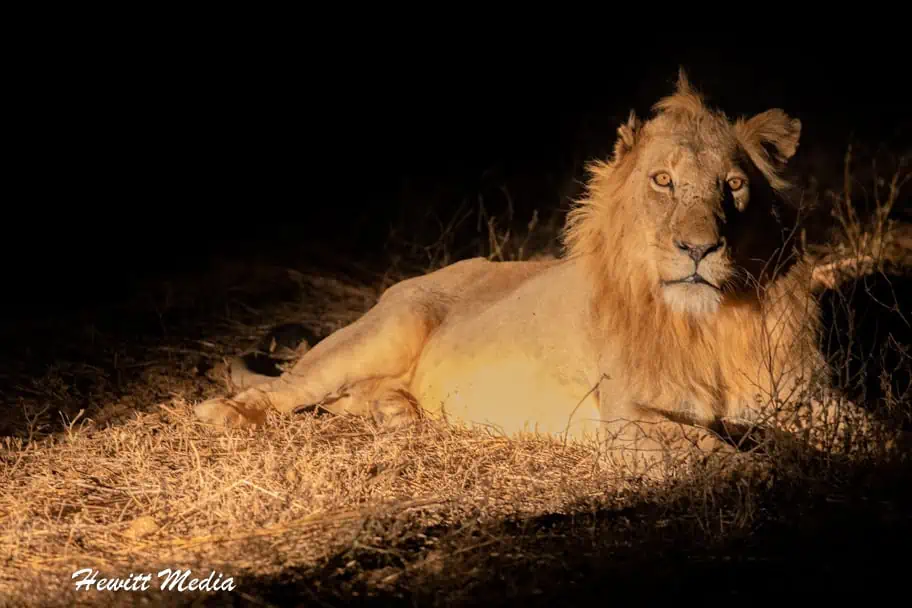
It isn’t a coincidence that Kruger National Park is one of the most renowned and popular wildlife parks in all of Africa, if not the world. Few other parks in Africa are as big and as rich and wildlife as this iconic park. To start, it is one of the very best places in Africa to see the “Big Five” animals. It is one of the few places in Africa where rhinoceros sightings are still common, thanks to a firm dedication to conservation and protection efforts.
While it may not have as many lions as you will find in Tanzania or Kenya, Kruger National Park still has a very healthy lion population for visitors to enjoy. In fact, Kruger is a great place to witness lion predation as the cats will often use the park’s paved roads to hunt giraffe and other large prey.
Finally, the park is also one of the few remaining places in Africa where you have a reasonable chance of spotting the critically endangered African Wild Dog. Sightings of these incredible animals is still rare, but not out of the question if you are lucky. For an idea of which of Africa’s most iconic animals you might expect to see on your Kruger National Park safari, please refer to the chart I included below.
Kruger National Park Safari Tips
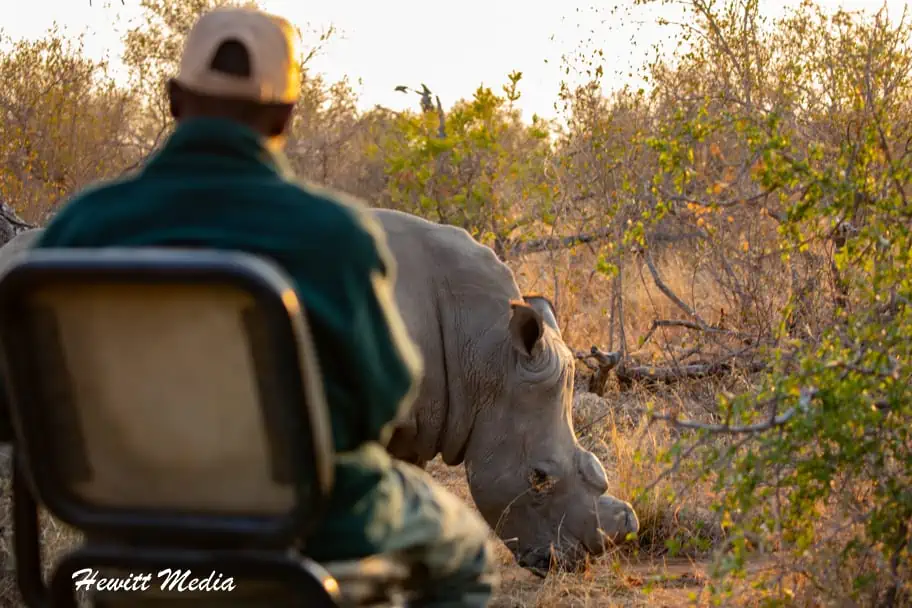
When you are on safari, especially in an iconic wildlife destination like Kruger National Park, it is easy to get lost in the experience. Being on safari in Africa is an amazing adventure that you should remember for a lifetime. However, if you aren’t careful, you might not get everything out of the experience that you could have.
In order to make sure your Kruger National Park safari is as incredible as it can be, I have provided some general safari tips for you to review below.
General Kruger National Park Safari Tips
Be patient and open-minded.
When you are on safari, everything isn’t going to go according to plan. The weather, the animal’s behavior, and other factors are going to impact where you go and what you see. Kruger National Park provides some of the best wildlife viewing opportunities in Africa, but even in Kruger, you have to be ready to adjust your plans if necessary.
Put Safety First
It is really easy to get caught up in the safari experience and want to get the best pictures you possibly can. However, safety should always be the primary concern. To give you some help on how to remain safe while on safari in Kruger National Park, I have outlined some general safety tips for you to review later in this guide.
Don’t Get Stuck Behind Your Camera
Everyone wants to get great pictures while on safari, and you should absolutely bring your camera and take a lot of pictures. However, if you spend your entire time in Kruger National Park looking thru your camera, you are going to miss out on some of the experience. I would recommend setting your camera down every-once-in-a-while and just enjoy being in such an amazing place.
Ask a Lot of Questions
Make sure you ask your guides a lot of questions while you are on safari in Kruger National Park. It is easy to get caught up in the moment and forget to ask which type of animal you are looking at or why they are doing what they are doing, but your safari guide is there to answer these questions for you. And believe me, they enjoy answering these questions. Don’t get home and regret not asking those questions.
Give Yourself Plenty of Time
Kruger National Park is a very large park, with very distinct and unique environments. There is no way that you are going to be able to explore the entire park in one trip, so if you want to see more of the park, you should plan to spend multiple days on safari in Kruger.
Kruger National Park Self-Drive Tips
Stay on the roads at all times.
Park rules require that you stay on the marked roads at all times. You cannot drive off-road in Kruger National Park.
Stay In Your Vehicle
Only get out of your vehicle in areas that are CLEARLY marked as safe to do so. Never, under any circumstance, should you get out of your vehicle otherwise. Even though you don’t see any animals, that doesn’t mean they aren’t there and that they don’t see you.
Know Your Vehicle’s Limits
Only attempt to drive on the roads marked as 4×4 only if you have a 4-wheel drive vehicle with high clearance. The last thing that you want is to be stuck in the bush because you have gotten your vehicle stuck.
Carry a Satellite Phone or Emergency GPS if You Have One
If you have a satellite phone or an emergency GPS device, such as a Garmin InReach, make sure you have it with you while you are on safari in Kruger National Park. Do not rely on having cell phone service inside the park in case of emergencies.
Be Prepared to Pay Park Fees
Not only should you have cash with you to pay your park fees, but you will also need to have enough currency converted and with you for food, drinks, and other purchases you will need to make while in the park.
Download the Tracks4Africa App
The Tracks4Africa app is the recommended app for safari navigation in South Africa. Makes sure you have this app downloaded before your visit.
Leave Yourself Time to Get Back by Dark
It can be very easy to get caught up in the safari experience and lose track of time. However, you need to make sure you get back to your rest camp, lodge, or campsite before dark. This means leaving yourself extra time in case you need it.
Kruger National Park Safari Safety Tips
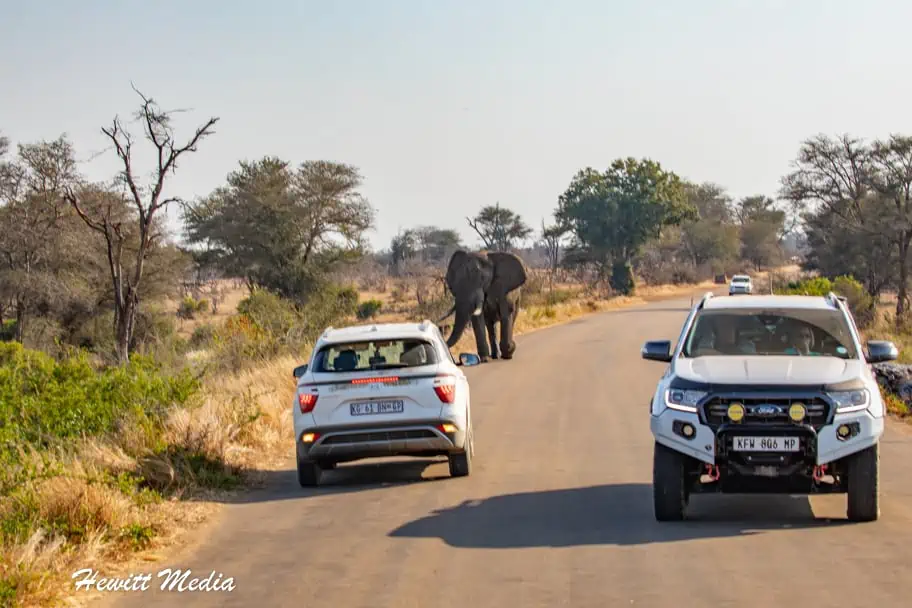
Going on a Kruger National Park safari can be an amazing and exciting experience, but it can also be incredible dangerous if you aren’t careful. While you are in the park, it is essential that you follow the rules in order to keep yourself and your loved ones safe. In addition to the posted park rules, here are some additional general safari safety rules I would remember.
Obey Your Safari Guide at All Times
The most important safari safety tip of all is to listen to your safari guide and obey them at all times. They are there to keep you safe, so let them.
Don’t Stick Anything Out of the Safari Vehicle
It is never a good idea to stick anything outside of a safari vehicle. Whether this be your arms, your feet, or your camera as you try to get a great picture, keep them inside the vehicle at all times.
Don’t Make Sudden or Frantic Movements
When you are in the safari vehicle, the animals tend to think of the vehicle, and everything associated with it as one homogeneous entity. However, if you make sudden and frantic movements, or do something else to make you stick out as a part of the vehicle, you may become an object of interest to them.
Only Exit the Vehicle in Approved Areas
This point cannot be stressed strongly enough. Never, and I mean never, get out of your safari vehicle unless your safari guide explicitly instructs that it is safe, or signs explicitly say that you can.
Avoid Leaving Your Tent or Lodge Room at Night
This rule is more applicable in private reserve accommodations that don’t have fences, but it is generally a good rule to follow regardless. Kruger National Park rest areas and lodges typically have protective border fences, which make them generally safer at night than parks in other areas of Africa. However, if you don’t need to leave your room at night, I would avoid venturing out. The African bush can be a dangerous place, especially at night.
Walk, Never Run
If you do find yourself outside of your vehicle and confronted by an animal (hopefully this never happens), then make sure that you stay as calm as possible, walk away slowly (never turning your back on the animal), and NEVER, EVER run away.
Be Careful Near Lakes, Rivers, and Water Holes
Unless you are explicitly told by your safari guide that the waters are free of hippos and crocodiles, you should never attempt to swim in a lake, river, or pond. Even then, I would think twice about doing it. In addition, you should avoid getting too close to these bodies of water. Hippos kill more people in Africa than any other animal, and crocodiles are not far behind on the list, so you always have to be safe when even approaching bodies of water.
Kruger National Park Photo Gallery
The country of South Africa has such an incredible wealth of wildlife and some of the most breathtaking landscapes in all of Africa. I absolutely cherished my Kruger National Park safari time, and I want to share some of my top photographs from that visit with you. I hope you enjoy these images and that they inspire you to book your own adventure in Kruger National Park!
If you would like to view some more of my top Kruger National Park safari photos, as well as photos from some of my many other travel adventures, make sure you are following me on Instagram as well!
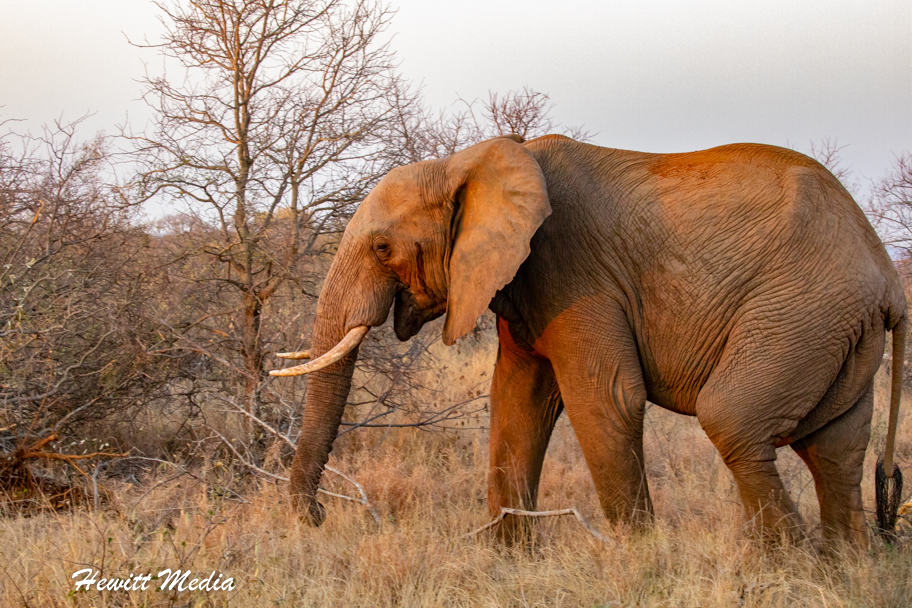
Don’t Forget to Subscribe to My Adventures!
Type your email…

Let Me Help You Save On Your Next Adventure!
‘start exploring today’ merchandise available now.
Published by Josh Hewitt
Avid traveler and photographer who loves to see new places, meet new people, and experience new things. There is so much this world can teach us, we just need to explore! View all posts by Josh Hewitt
Related Articles
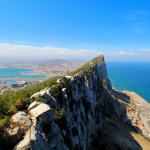
The Ultimate Gibraltar Travel Guide: Everything You Need to Know
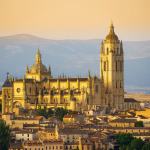
Segovia, Spain Travel Guide: Exploring the Historic City

Planning the Perfect Two-Week Thailand and Cambodia Itinerary
3 comments ›.
- The 25 Top Wildlife Destinations in the World July 5, 2023 • 5:47 pm
This is an amazing and thorough guide, Josh. I haven’t looked into a safari (yet) but it’s clear that the choices are overwhelming and there are so many factors to consider, which makes this post so valuable. I hadn’t known they cut off the rhino’s horn to discourage poaching. As you say, so sad they are forced to do that.
Thanks so much!!! Yeah, there are so many different factors to consider. Indeed it is sad that it has come to having to cut the horns off animals in order to save them.
Leave a Reply Cancel reply
Thank you!!
Perfect Choice
[…] Click here To read The ultimate guide To saving money on hotels when traveling. […]
Thanks so much for the kind words Nick!!
Discover more from Wanderlust Travel & Photos
Subscribe now to keep reading and get access to the full archive.
Continue reading

Subscribe To My Adventures!

- Holiday Planning
Planning Your Kruger Park Holiday

Is there a peak season in Kruger?

The Kruger Park is a popular destination all year round with over a million visitors annually. Peak seasons are over school holidays in June, July, September and December. Public holidays, especially if a long weekend, are also in high demand. These dates can get booked up almost a year in advance.
What time of the year will I be most likely to view wildlife?

Kruger Park is a year round destination. The best time for observing wildlife in the the Park is during the dry winter season which is between June and October. The grass is low and the bushes and trees are sparsely covered - you should have a fairly unobstructed view of the surrounding area. Animals gather around waterholes allowing for greater game viewing opportunities. If you are traveling to South Africa between November and March, combining a Kruger Park Safari with a beach holiday is a great way to experience the best of what South Africa has to offer.
What is the weather in Kruger Park like?

In the Kruger National Park you'll find a subtropical climate, with hot summers (40 C / 104 F), and warm, dry winters, (17-22 C / 60-70 F), with intermittent summer rains which fall between October and March.
Read more about the weather and seasons in the Kruger Park Calender
How to Choose
What should i base my choice on for which safari to book how do i decide which package is right for me.

This depends on how much time you have available, as well as the type of safari experience you are looking for.
Contact our expert Safari Consultants to help you with a few suggestions; they will be able to tailor make your safari to suit your needs.
What is the benefit of a Private Game Lodge Safari over a Self Drive Safari?

A Private Game Lodge Safari is fully inclusive of accommodation, game drives and some bush walks, meals and other added values. The drives are conducted in 4x4 open safari vehicles which brings the bush sounds and smells much closer to you. The number of people per vehicle is limited and all these safaris are conducted by qualified Rangers and Trackers - there are also limited vehicles traversing the area.
Trackers and Rangers look out for spoor and signs that animals have moved through an area. They are in radio contact with other ranger teams to share information on sightings of animals.
The Private Game Lodge Safaris offer more exposure to viewing animals and you get the chance to see animals from the deck of the Lodge too.

What are the benefits of a Self-Drive Safari over a Private Lodge Safari?

The main advantage is you are not bound by a time schedule and you can plan your day as you please.
You can stay at accommodation around the Park and self-drive inside the park at your leisure.
Your children, irrespective of age, can drive around with you on the hunt to spot the BIG FIVE.
How long should I go on safari for and should I stay at one lodge or different Lodges each night?

The average stay is between 2 and 3 nights (many stay for as long as a week), but ideally no less than 2 nights. That would give you the best chance to enjoy the surrounds and improve your chances of seeing all there is to see in the African bush. What safari experience you are hoping to have also guides the amount of time to spend on safari.
If you are staying in a Private Game Lodge then staying in one place maximizes your game viewing and minimizes your travel time.
If you are planning on staying more than 4 nights we recommend splitting your stay between 2 Private Game Lodges or even stay a few nights in one of the bordering Private Reserves like Sabi Sands Private Game Reserve or Timbavati Private Game Reserve
Can I bring my children?

Yes. The Kruger National Park is an ideal destination for children of all ages and offers families a great way to see the BIG FIVE. Some private game lodges are more suited for children 12 years and older but we have put together several family friendly safari packages that often include specialized childrens programs. These programs keep your children entertained and also focus on environmental education. You as parents can enjoy family time as well as time for yourselves. For safety reasons no children under 6 years old are allowed on game drives and no children under 12 years old are allowed on bush walks. There are different age limits for various activities at various places and it its best to speak to your consultant about the best options for you and your family.
Getting There
How do i get to kruger.

There are several transport options into Kruger. The most important question you need to ask yourself is - how much time do I have?
You can either fly into a regional airport near the Kruger Park, fly into a private airstrip in the Kruger National Park, take a road transfer or self-drive.
For more detailed information read the Getting to Kruger Guide
I only have a few days, is flying my best option?

Yes, flying into Kruger Park saves you valuable time and maximizes the time you can spend on game viewing. So if you only have a few days to spend in the Park we definitely recommend a fly-in option like the Magical Moments Safari Package
What are the closest airports?

There are scheduled flights to and from the Kruger Park Regional Airports. In the Southern section there is the Kruger Mpumalanga International Airport (KMIA), in the central section Hoedspruit Airport and in the north you have the Phalaborwa Airport.
Will I have problems getting a flight - do they only operate on certain days?

No, there should be no issues getting a flight. There are daily scheduled flights to and from the Kruger Park. Depending on which airport flights depart from Johannesburg, Cape Town and Durban.
For more detailed information read the Flight to Kruger page.
I'm flying to Kruger Airport but how do I get to the Private Game Lodge I'm staying at?

Transfers to and from the regional airports to the lodges are available and normally part of your Siyabona Africa Safari Package
Depending on which lodge you are staying in, the road transfer can add another 30 - 90 minutes of travel time.
I don't like to fly, how long will I drive from Johannesburg?

If you are planning on driving yourself to Kruger you can hire a vehicle in Johannesburg. The drive from Johannesburg is about 5 -7 hours, depending on your final destination in the Park.
Reservations
Do i need to pre-book my safari and accommodation.

Yes most definitely. Annually there are over a million visitors to the Kruger Park and surrounds, making this area one of South Africa's most popular year round destinations. Availability can be limited over certain peak periods. Private Game Lodges only accommodate small numbers of guests at a time and due to their often remote location in the bush, food and supplies need to be organized in advance, so early booking is advised to avoid disappointment.
How far in advance do I need to book my safari and accommodation to ensure that there is availability of space?

Make your reservations as soon as possible to avoid disappointment.
Do I have to pay to make a provisional booking / reservation online?

Provisional bookings and reservations are free - it is a provisional request for a service. A Siyabona Africa Safari Consultant will contact you once your request is received. Only once you have confirmed that you would like the service arranged with your consultant, would you be required to pay either a deposit or in full, depending on the travel date.
If I make a reservation / booking online does that mean my reservation is confirmed?
No, all reservation / booking enquiries are a request for service and require a response from a Siyabona Africa Safari Consultant.
Your Safari Consultant will reply with a quote and give you availability details as well as advice, options and alternatives - whatever is appropriate to your request.
Only once full payment has been received is a booking confirmed.
How long will it take before I get a response?

As soon as possible, usually within hours depending on which part of the world you are in, the time difference and if it is a weekend - but no more than 24 hours.
Siyabona Africa is open Monday - Friday from 8am - 5pm, and on Saturday from 8am - 12pm.
For clients travelling in Africa with a confirmed reservation, a 24 hour emergency contact is available.
When do I need to make payment?

After a Siyabona Africa Safari Consultant has sent you an invoice, which will show the payment deadline and payment options. Accommodation and safaris can be held for a few days while you confirm other travel arrangements.
However, in order to secure the booking a deposit or full payment is required otherwise the booking is released. Full pre-payment is required at least eight weeks prior to arrival.
Why do I need to pay a deposit?

This is a popular destination with limited availability - a deposit ensures that your booking is secure.
If the deposit / full payment is not paid by a specified date - the provisional booking will lapse.
Can I pay a deposit to Siyabona Africa and the balance when I arrive at the Park?
No. The full payment needs to be received by Siyabona Africa on the date specified on your invoice.
What happens if I have a confirmed booking but when I arrive my booking has been canceled or I've been delayed?
You need to contact your Siyabona Africa immediately. Contact numbers and emergency after-hours numbers are provided on your confirmation voucher.
This is a very unusual occurrence, but can happen due to a high volume of visitors to the Park. Once you have called for assistance, Siyabona Africa will act immediately to resolve the issue and minimize any impact to your holiday.
- Customer Support
- Tel: +27 21 424 1037
- Fax: +27 21 424 1036
- Contact by Mail
- Business Hours
- Mon - Fri. 08:00 - 17:00
- Saturday. 08:00 - 12:00
- Reservations and Booking
- Booking Conditions
- Visa and Passport
- About Siyabona Africa (Pty) Ltd
- Game Reserves
- Balule Game Reserve
- Manyeleti Game Reserve
- Sabi Sand Game Reserve
- Thornybush Game Reserve
- Timbavati Game Reserve
- Near Kruger National Park
- Birding in Kruger Park
- Kruger National Park
- Most Popular Pages
- Kruger Park Maps
- Best Time to Visit Kruger
- Getting to Kruger
- Accommodation at a Glance
- Camp Gates Map
- Kruger Park Gate Times
- Kruger Travel Help
- Conservation Fees
- Kruger Park News
- Reference Guide
- Africa Mammal Guide
- Africa Bird Guide
- African Flowers Guide
- Africa Grass Guide
- African Tree Guide
- African Reptiles Guide
- Kruger Park Culture
- Kruger Park History
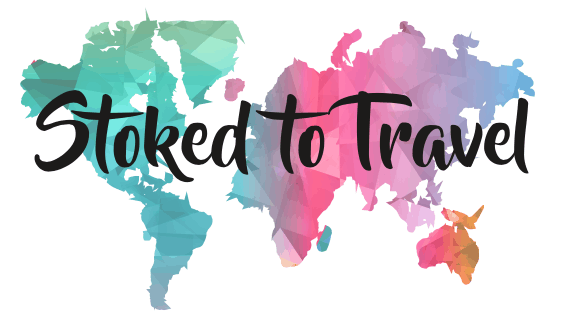
Complete Guide to Safari in Kruger National Park, South Africa
A safari in Kruger National Park, South Africa is one of those once-in-lifetime experiences for most people. Renowned the world over for its jaw dropping landscapes, true African experience, and of course, the animals – a safari in Kruger National Park is a must visit for any traveller so South Africa.
I have just returned from the most incredible few days in Kruger National Park. It lived up and exceeded every expectation I had. The animals, the lodge, the game drives, the weather, the true sense of wilderness. It was truly incredible. But I must say, I found it hard to plan.
In the months prior to my Southern Africa adventure, I really struggled with planning a trip to Kruger National Park. Keeping in mind the whole park is the size of some European countries, it’s pretty difficult to know where to start.
It’s a funny thing, because many South Africans living in Johannesburg or Durban will head to Kruger multiple times a year, in the same way a Brit might plan a weekend break to the Cotswolds or the New Forest. They have their favourite lodges or camps, they tend to self-drive and they are fairly self-sufficient. But for Europeans or visitors from the US and the rest of the world, it definitely doesn’t seem that straight forward. Not least because there are some of the world’s most dangerous predators just freely roaming around!
So that’s why I’m writing this guide, in the hope that this will help guide you in your planning process and shape up an epic trip to Kruger National Park. It is aimed at those planning their first safari adventure to Kruger. Feel free to skip ahead to certain sections in the contents box below too, if easier!
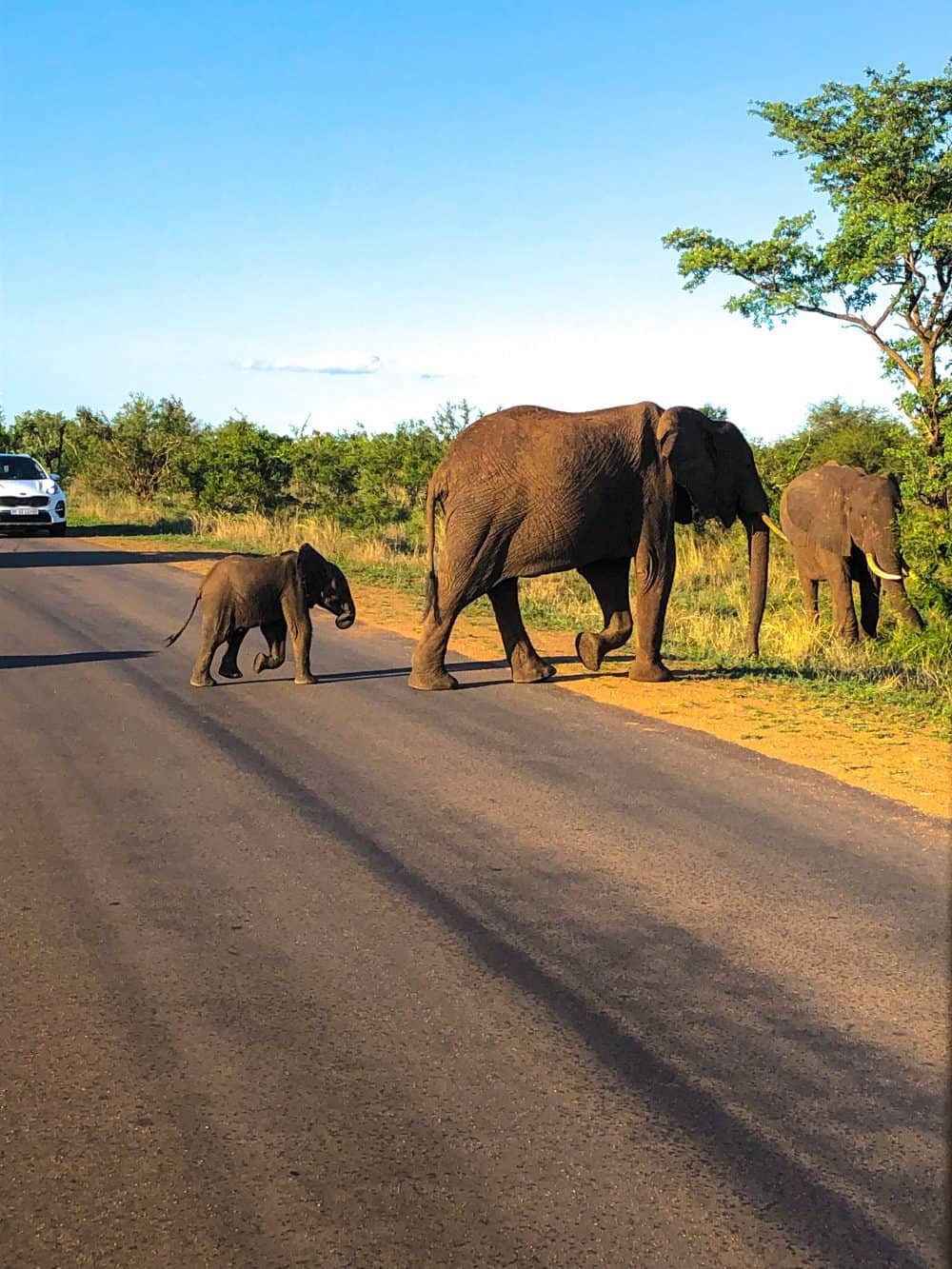
Safari in Kruger National Park – Everything you need for planning a trip
Where is kruger national park.
Kruger National Park is located in the north-east of South Africa. Kruger extends nearly 220 miles from north to south, and is about 40 miles wide – a large portion of Kruger actually borders with Mozambique too. It’s around 20,000 sq km in size, and home to more than 200,000 mammals, together with hundreds of variety of birds, reptiles and interesting insects.
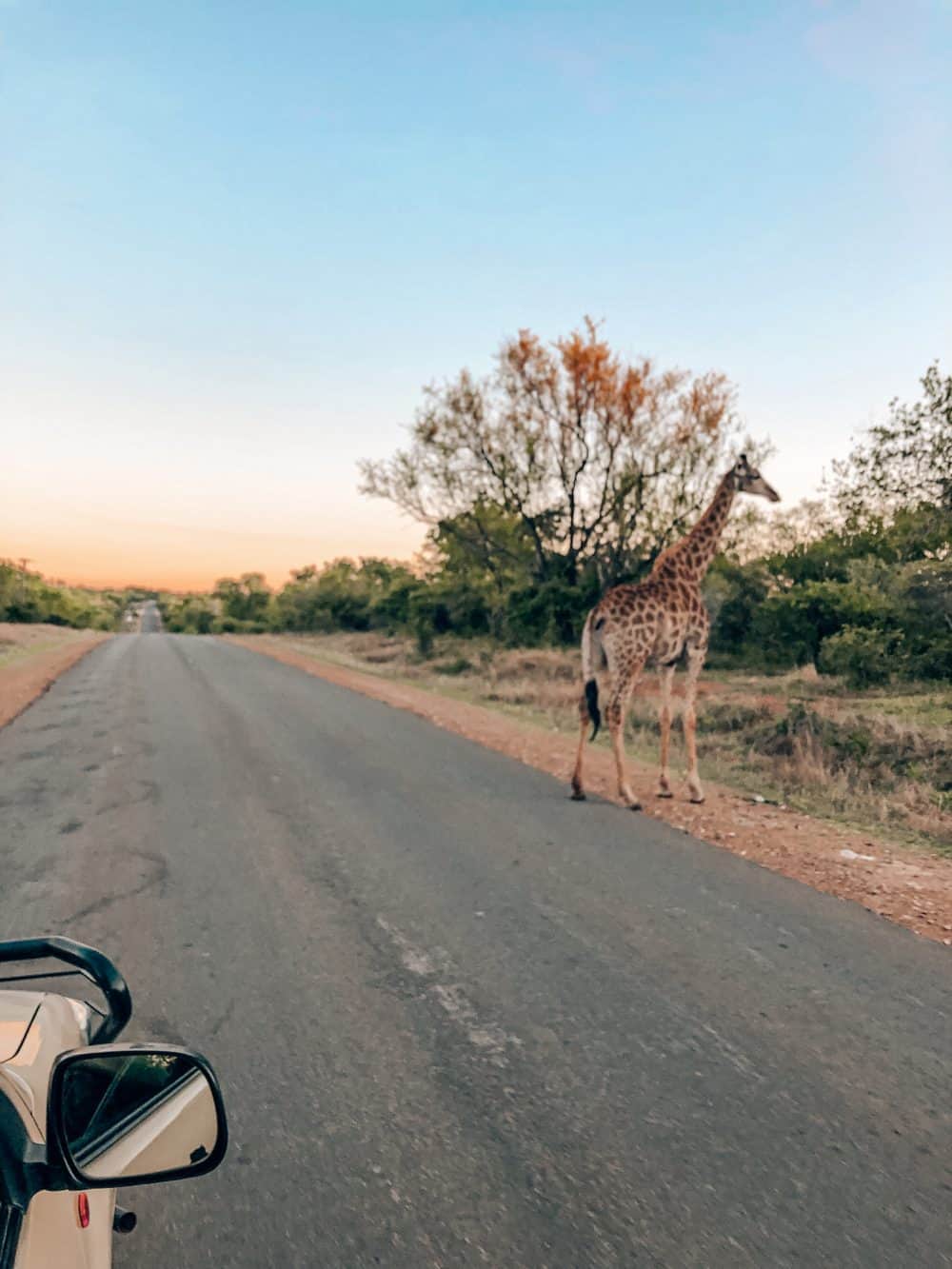
When is the time to visit Kruger National Park?
Kruger is an interesting place, as there isn’t really a bad time to go. Each season offers a unique experience, and different pros and cons.
May – September
The South Africa winter months are considered a great time to visit Kruger. This is by far the driest time of the year, which means the vegetation and the bush is less dense, and therefore it’s easier to spot animals. The low rainfall at this time of year means many rivers and waterholes are low or even dry, meaning the few that do have water are likely to have more animals at them. The temperature in the winter is warm during the day, but can be very chilly though the night. This may mean your sunrise or sunset game drives will be freezing!
This is the ‘high season’ and prices at hotels and lodges will be increased.
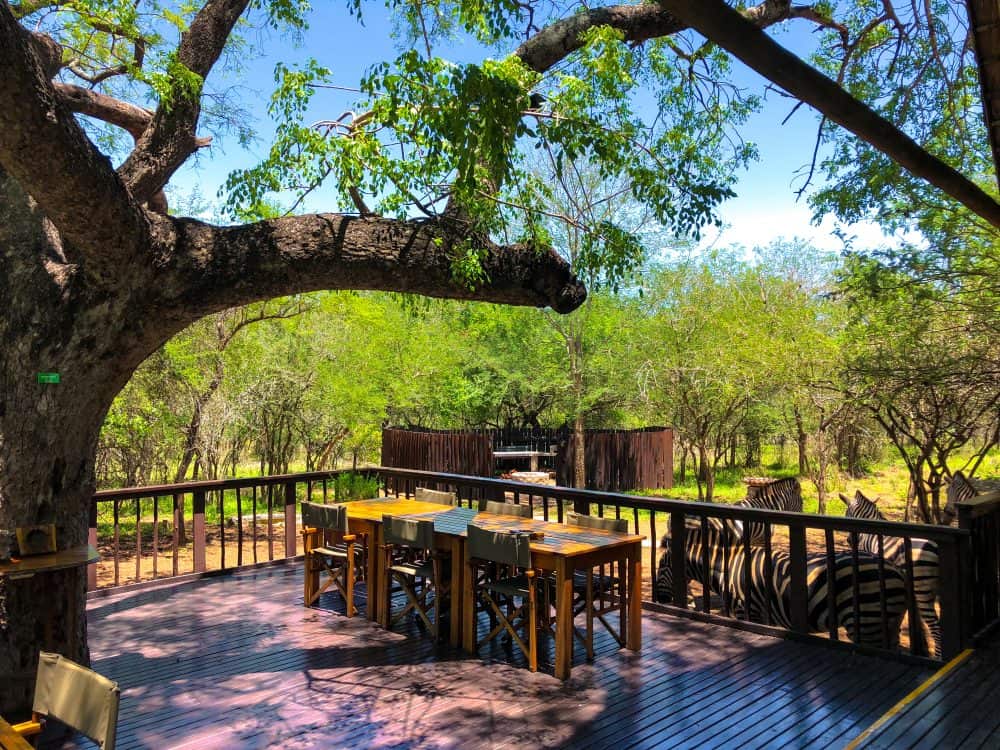
October – December
This is the South African spring and early summer months, which marks the start of the rainy season. The rivers may still be quite low, but flash rainfall is likely to mean the bush will be very green and quite thick. This makes it harder to spot animals. Daytime temperatures can push up to 40c and nighttime is cooler, but definitely not cold. Spring time is also a great time to see baby animals and newborns.
We went in November and experienced gloriously hot and sunny days, with cool and pleasant evenings. We also experienced an extreme tropical storm one evening that lasted about two hours and was easily some of the heaviest rain I’ve seen in my life.
January – April
Whilst the rest of South Africa is warming up and experiencing long and sunny days, Kruger is experiencing heavy rains. However, the landscape comes alive with stunning colours, from the vivid green of the bush to the deep blue of the rivers and lakes. Prices are lowest for lodges and camps at this time.

How many days to spend at Kruger?
Well, of course this comes down to what you’re looking for and the time you have. Some South Africans actually visit Kruger for two or three weeks at a time with their campervans and enjoy long slow days of animal spotting and braais (aka BBQs).
For most travellers from Europe or the US for example, it’s unlikely you’ll have this long to spare. Nor do you necessarily want to spend this long in a national park – there is such a thing as too much of a good time!
We spent three days in Kruger, which was great but I would have liked one extra day.
The animals are most active early morning and late in the evening, so sunrise and sunset drives are popular. However, this means early rises (in the summer months, this can be as early as 2.45am!) and late returns. As you can imagine, this can become quite exhausting.
Having three or four days for safari in Kruger National Park (or longer), really means you can make the most of the drives but also enjoy some much needed downtime. You’ll be surprised how much wildlife you see just from your poolside or your lodge/tent too!
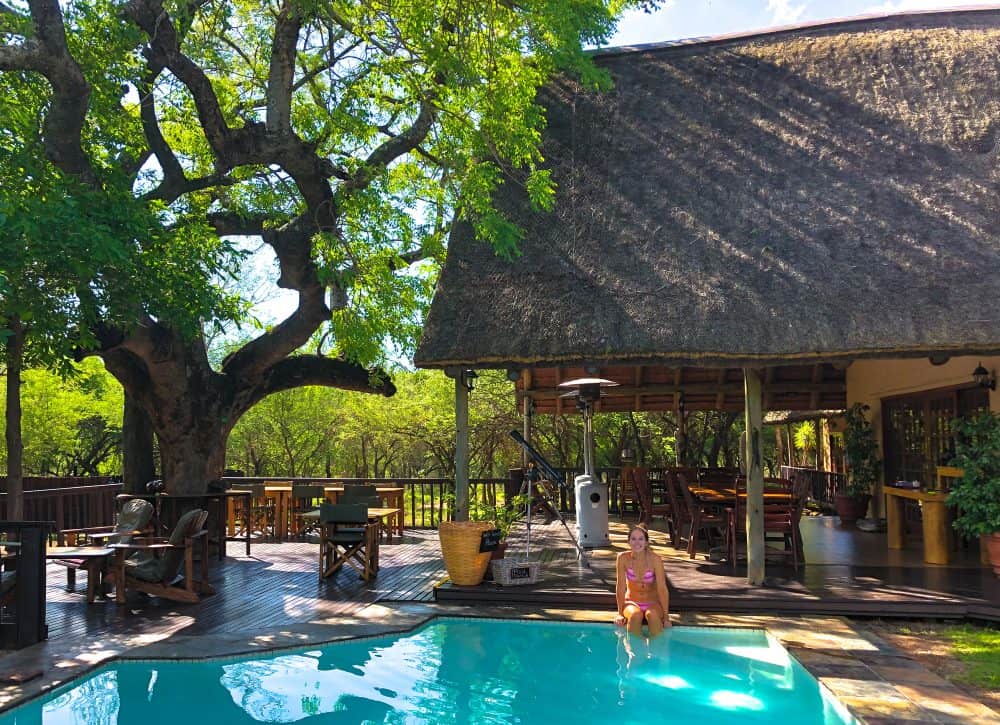
How to get to Kruger National Park
Choosing the best option for getting to Kruger depends on where you’re coming from, how long you’re spending in Kruger and of course, your budget.
The most expensive and most convenient way is to fly into Kruger. Depending on where your lodge is within the park, it’s likely that one of the three main airports will work for you. These are: Nelspruit (the biggest airport by far), Hoedspruit and the tiny airstrip at Skukuza (my favourite airport ever). The main air route between these is from Johannesburg, however, if you happen to go to Livingstone in Zambia (for Victoria Falls), then you might find the route from here to Nelspruit very convenient!
SAA Airlink (part of South African Airlines) is the main operator.
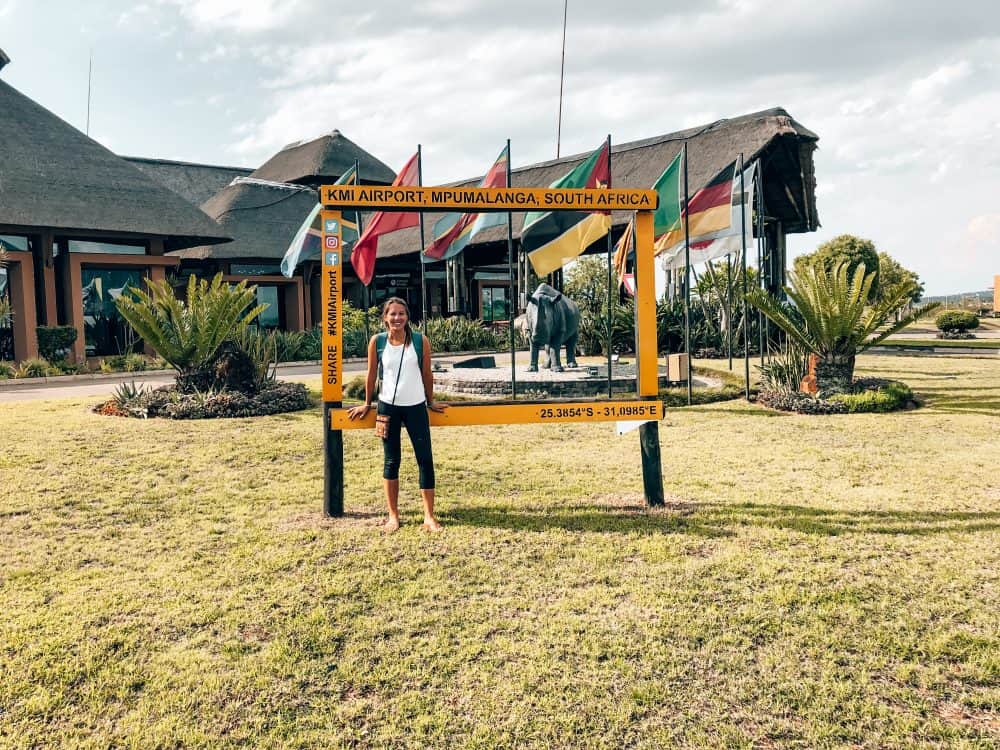
The least expensive (and slowest way) is to drive from Johannesburg. Google Maps says the drive is around 5-6 hours to Kruger, but some people do find it takes longer. The road conditions aren’t excellent and there are often a lot of dangerous crashes or incidents. However, it does of course afford you a lot of flexibility if you drive yourself. You can also arrange a transfer with a local company,.
Which area in Kruger to visit?
For me, the was one of the hardest things to work out. My dreams of staying in a luxury lodge with a private pool were quickly dashed when I saw the prices. Many of these are located near Skukuza in the southern-central part of Kruger. When I realised there was a very convenient direct flight from Livingstone to Nelspruit, it made most sense to find a location to go in the southern part of Kruger. I spent hours trawling websites to work out where had the best sightings of animals and most reliable weather.
It wasn’t an easy task and I ended up picking an area called Marloth Park, near to the Crocodile Bridge gate entrance. We ended up loving this location and exploring the southern part of Kruger.
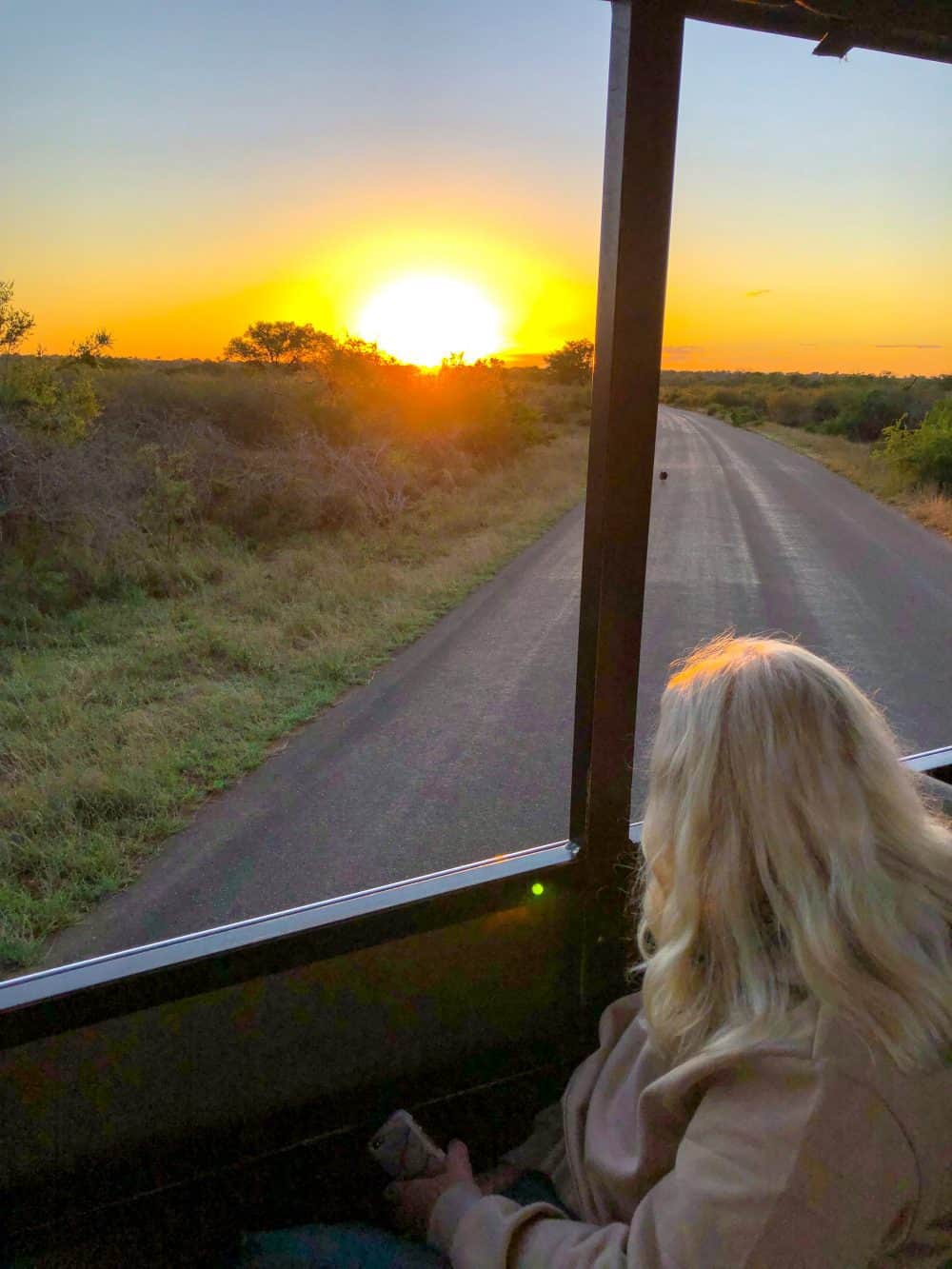
The southern region of Kruger is as mentioned, home to Skukuza airport and the Skukuza rest camp. This is the biggest camp in Kruger with a great number of activities and facilities, therefore making it a great base. Game viewing is also considered to be really good in the southern region.
The central region of Kruger is also known for excellent viewing and having several good camps, such as Satara and the beautiful Olifants camp, with its impressive clifftop location.
Up in the northern part of Kruger, game viewing is considered slightly less, but it’s quieter in general and makes for a very relaxing stay.
The other thing to factor is whether to stay in Kruger, or just outside of it. Where possible, I would recommend staying in Kruger or as close as possible to the gates.
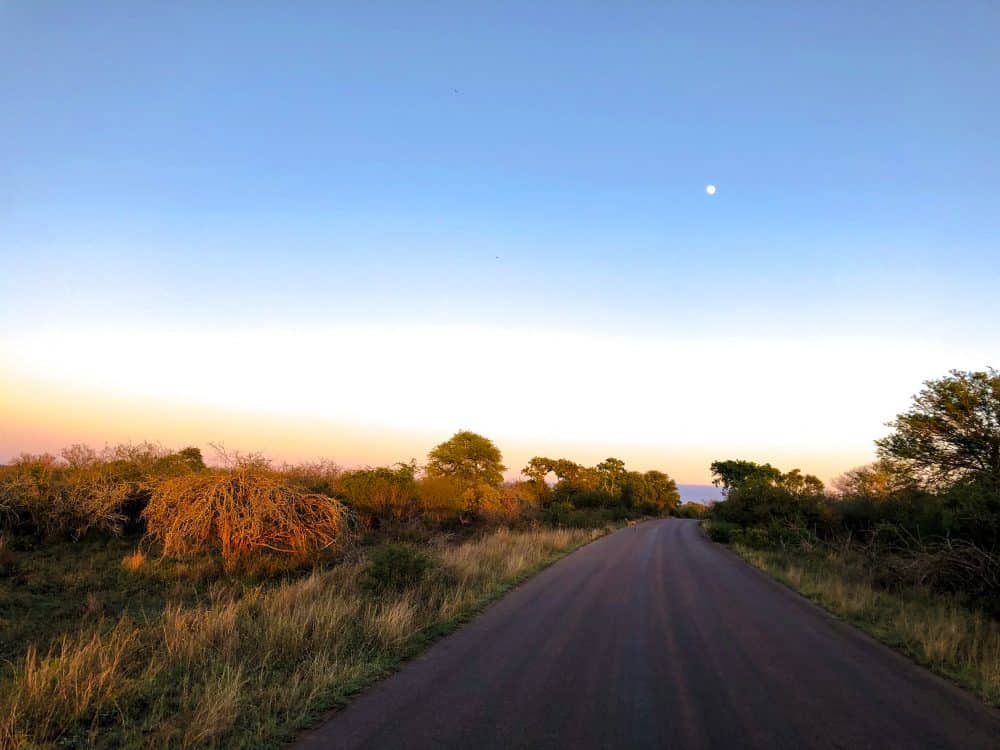
For example, if you fly into Nelspruit and opt to stay in one of the towns near here like Hazyview or White River, not only are they a bit industrial and bland, but you’re not really sleeping amongst the wildlife. Instead, an area like Marloth Park is a little further to drive initially from the airport (1 hour), but so much closer to the gate to start your game drives and also, right in the heart of the wildlife.
Kruger National Park really varies from north to south, from weather and wildlife, to flora and fauna.
Whilst it is often acknowledged that the southern portion of Kruger has the best chance of seeing the Big 5, if you visit the northern portion, you can also do the epic Blyde River Canyon drive.
Book a Blyde River Canyon panoramic drive and Kruger visit here
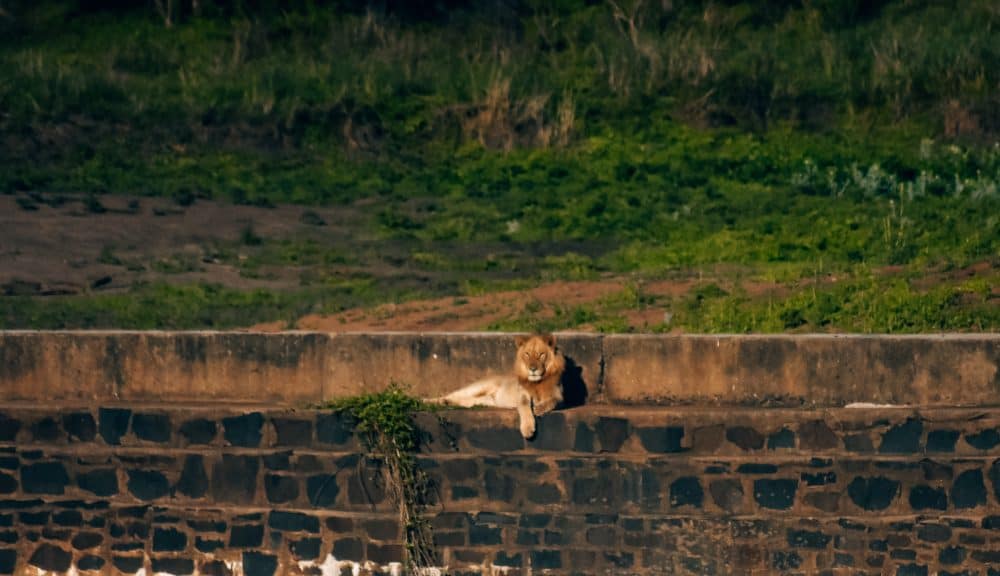
Entrance/exit times for Kruger National Park
Assuming you’re doing your drives with a ranger, you’re unlikely to have to be too concerned about gate entrance opening and closing times. But it’s worth noting that each gate opens just before sunrise and closes around sunset. Whilst they don’t physically lock you inside the park if you’re late to go back to the gate, you can be given a hefty fine.
Night drives cannot be done independently and you have to go in with an official SANpark game ranger.
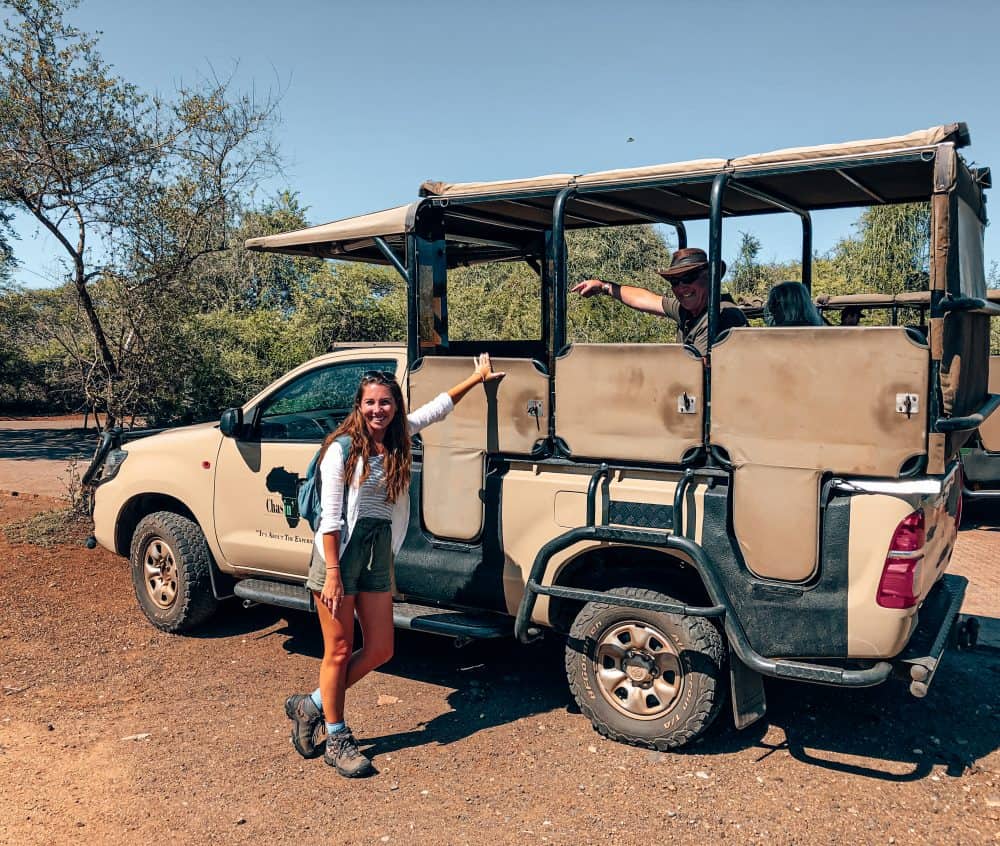
Entry fees for Kruger
Again, if you do drives in the park with official SANpark game rangers, the entry fees will be included in the cost of your drive.
If you join an independent guide for a drive, or self-drive, you’ll have to pay the Kruger Park entrance fees.
As of January 2020, these are:
International visitors: R400 per adult per day, and R200 per child per day. This is about £20/USD27 per day, or £10/USD14 per day.
South African Citizens and Residents (must take ID): R100 per adult, per day and R50 per child per day.
You can buy these at the gate by visiting the small adjacent hut and filling in some forms. The SANParks site here has further information on entry fees and other formalities.
As you can see, a safari in Kruger National Park can add up over several days – but it is so worth it!

Public Game Reserves vs Public Game Reserves
Kruger is a national park, run by government organisation SANparks. Animals are completely wild and run freely in Kruger.
A private game reserve is located on land owned privately, and often have fenced boundaries. The private reserves have all the same animals, but they’ve been brought into the area. The numbers of animals in a private reserve are typically far less, but as the ground surface area is less, you can actually have a higher chance of seeing animals. For example, at Sabi Sands, famous for its close-up leopard sightings, you may actually see less packs or herds of animals moving around. So this definitely comes to personal preference and what you’re looking for. In a private game reserves, all drives are guided, but in Kruger NP it’s both self-driving and guided drives.
When you go to a private game reserve, you’re not technically in Kruger. You’re in the area considered as Greater Kruger National Park, which is the title given to all the reserves adjacent to the national park, as well as the ones within.
Private game reserves often only have high end accommodation lodges, but public game reserves will have a variety to cater to a wider range of visitors.
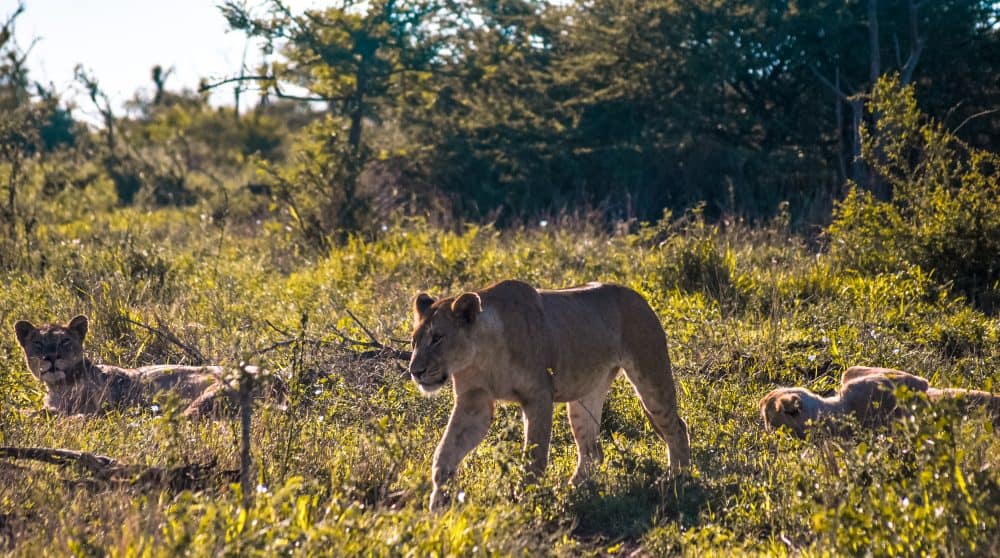
Deciding Where to Stay in Kruger National Park
Generally, there are main accommodation types to choose from:
- SANpark owned and run ‘rest camps’ within the park
- High-end private lodges within the park
- Hotels located near to the entry gates (or further afield)
These are the government run camping grounds located with fenced off areas within Kruger Park. These are popular with South African families, groups or couples looking for a budget-friendly accommodation option in the heart of the action.
I would say less foreign tourists stay in these, partly due to the fact that you’d mostly need your own car to get to them or to arrange a transfer.
One such camp is Lower Sabie Rest Camp , for example. This is one of the bigger rest camps with Kruger, offering camping spots, spaces for caravans and motorhomes, safari tents, and small rondavels (a type of hut), with varying amenities. These range from around £15/$20 from a camping spot, to ensuite cottages/huts for around £120/$160 a night.
There are around 10 or so of these camps throughout Kruger. They all have electricity, a first-aid centre, a supplies shop, braai-ing areas (BBQs) and communal kitchen facilities. There is often a laundromat/laundry and a restaurant and a cafeteria. You might also find a petrol station.
It’s good to know also that many of these cater to disabled tourists too.
You can book stays at official rest camps through the SANparks website here . In the high season, you might want to book your stay well in advance to guarantee it.
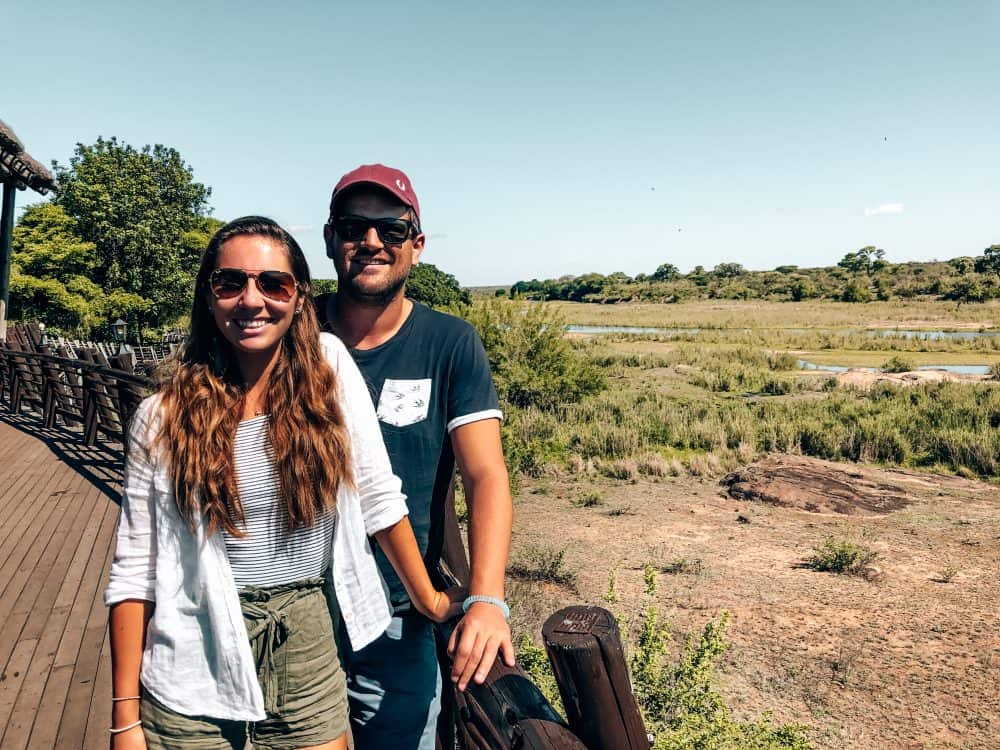
High end private lodges
By far the most expensive option, staying in a private lodge is the most luxurious way to stay in Kruger. It is definitely the bucket list-worthy option, for sure!
These lodges give you the full and complete safari experience. Not only are the lodges themselves beautiful, often with thatched roofs and private pools, but you’re also likely to stay on a full board basis. This means three fine meals a day, and your game drives included. You can expect fancy linen and toiletries, air conditioning, butlers, luxury open air showers and even gyms. Some even have beautiful spas too. And with this, you can often expect to pay in excess of £1,000 per night.
I’ve listed some of the best private lodges in Kruger below, all of which are stunning luxury places to stay:
- Lion Sands – Tinga Lodge
- Thornybush Simbambili Lodge
- Inyati Game Lodge
- Leopard Hills Lodge
- Idube Game Reserve
Lodges and hotels outside of Kruger
So the final option is to stay in a far more affordable lodge or hotel outside of Kruger. These are often located near the gates or within a 20-30 minute drive. Then to be on a B&B basis, with lunch, dinner and other activities all arranged as add-ons. These kinds of hotels and lodges generally offer the best value for money, and still a wonderful authentic safari experience.
Here’s a few suggestions:
- Protea Hotel by Marriott Kruger Gate
- Jock Safari Lodge
- Maqueda Lodge
- Grand Kruger Lodge & Spa
- Needles Lodge
Needles Lodge, Marloth Park – Our Experience
After much research and deliberation, we decided upon Needles Lodge located by the southernmost gate of Kruger. This area was called Marloth Park.
Location wise, the lodge was just 1 hour from Nelspruit airport, and around 3 hours from Skukuza airport. From the lodge to the nearest gate (Crocodile Bridge), it was around a 25 minute drive.
Our lodge was absolutely beautiful, like staying at a large family home. Animals such as zebra, ostrich and mongoose just wondered freely through the property, even right on up to edge of the raised dining area.
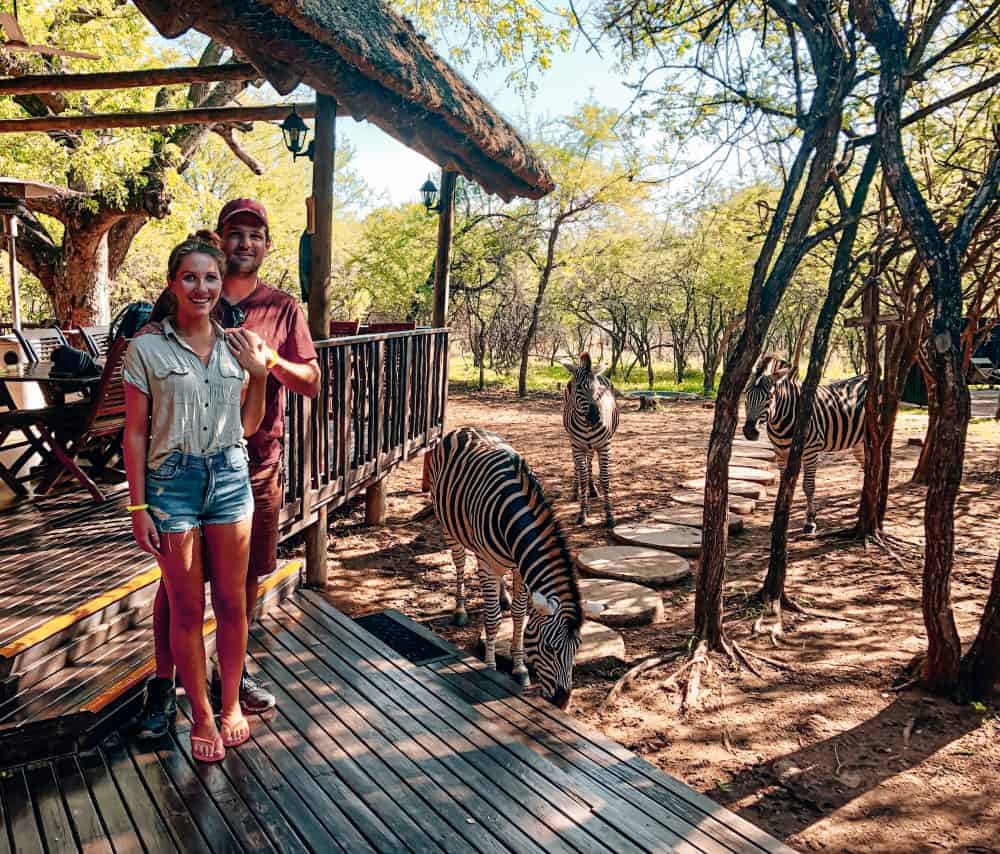
There was a delightful pool, sunloungers, a telescope, a huge lounge area with a TV, books and boardgames and lots of spaces to relax in. We also loved our room, which was huge with beautiful art and wooden furniture. I couldn’t recommend staying here more, especially for a more affordable stay.
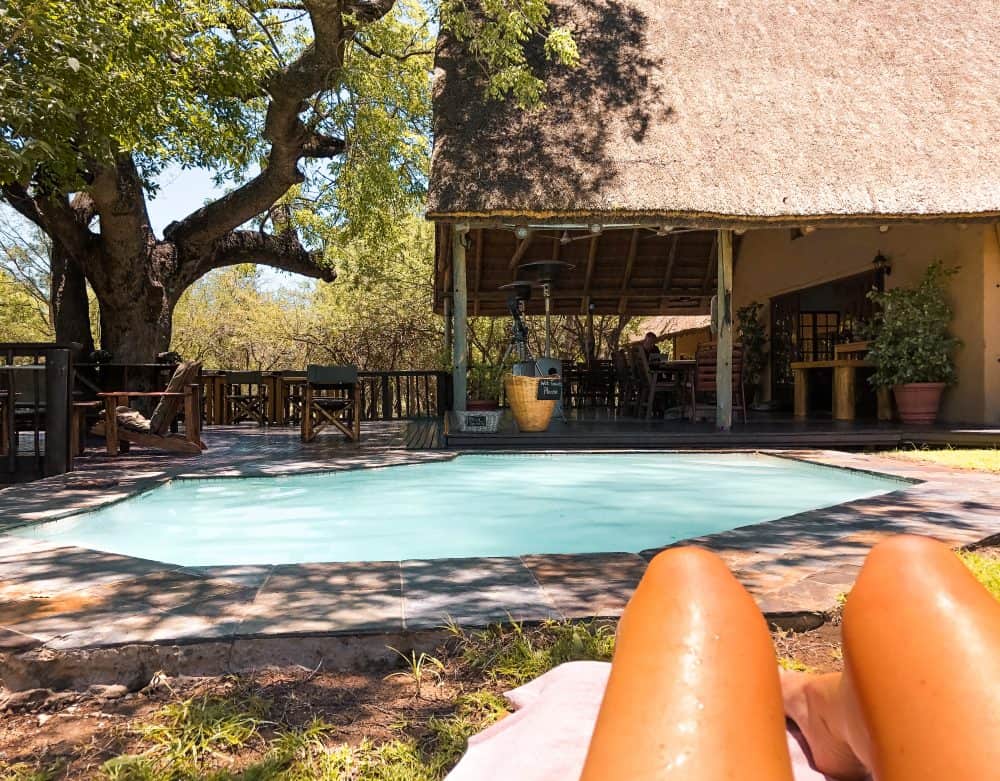
We also found the food to be excellent, and included lunch and dinner in our stay. The team cooked us up some wonderful dishes which we ate alongside our fellow lodgers. Just fantastic!
Check rates for Needles Lodge here
Other facilities in Kruger
Inside the park, there are many services and facilities to help tourists. After all, some people come here for weeks at a time!
Petrol stations: Inside the park, you’ll find several petrol/gas stations. There are also some at the entry gates.
ATM/Banks: There are only a couple of ATMs inside, and mostly at the larger rest camps like Skukuza or Letaba.
Shops: There are many shops throughout the park selling Kruger themed gifts and things like carved animals etc. You can also find braai–ing equipment, food, drinks and essentials like suntan lotion or toiletries inside.
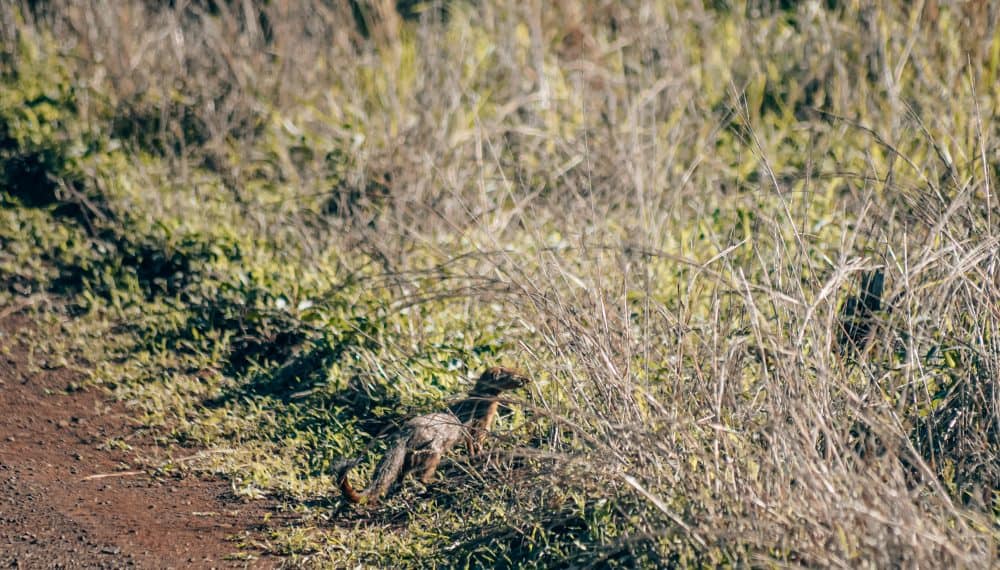
What to wear and what to take to Kruger
Dressing for safari is definitely a thing. If you do any kind of walking safari, you absolutely must dress in sand/khaki colours and your guides probably won’t let you go in any kind of bright colours at all.
If you’re doing guided drives, it matters less what colour you wear as you’re strictly not allowed to get out the jeep. However, I definitely felt more the part wearing my cream, khaki and sand coloured clothes!
For a safari in Kruger National Park, you may need several layers if you’re starting your game drive early in the morning, especially in the winter months (May-September). A large jacket and long trousers, and lighter clothes to peel off to as the temperature rises. For evening game drives (or night drives), you’ll definitely need long sleeves to protect yourself against bugs. The jeeps are opened sided so you are exposed to the elements, and the insects!
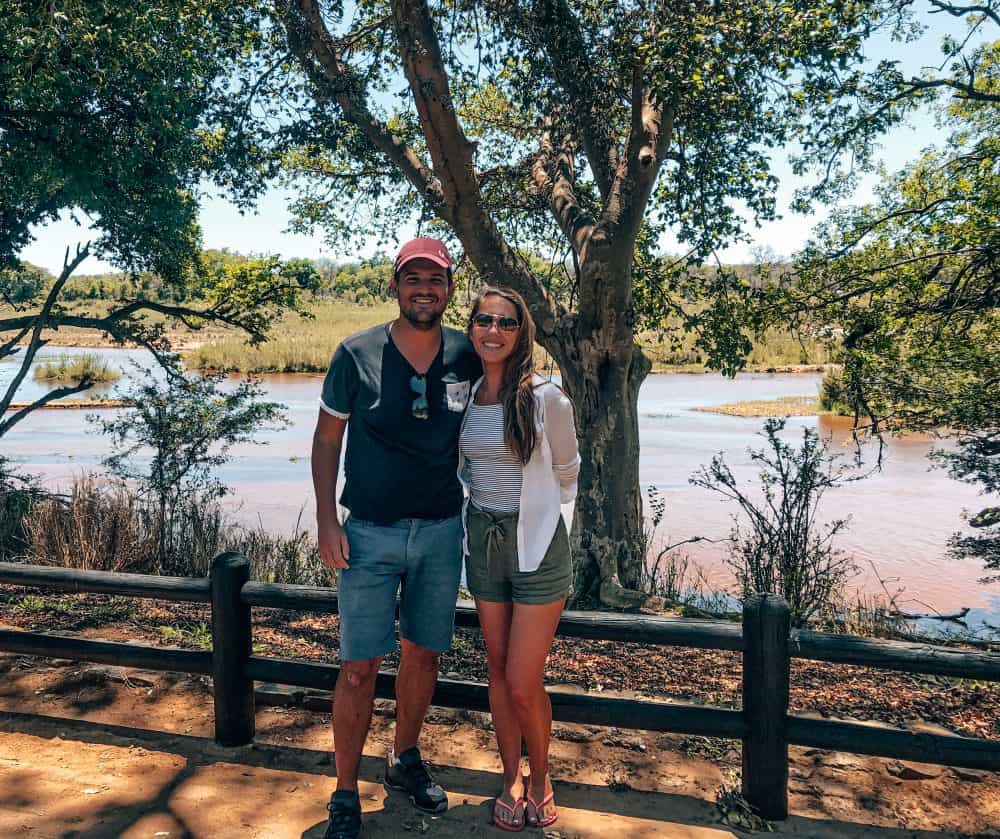
Most jeeps or lodges will have warm ponchos or blankets to wrap around yourself too. When the jeep gets going, the wind can really whip up and surprise you with how chilly it can feel!
In terms of other things to take on safari, I’d definitely recommend a good camera with a good zoom if you want to capture good animal shots. iPhones are unlikely to always cut it, especially if the animal is quite far away.
You could bring your own binoculars but your lodge or driver may have these, as well as high beam torches.
Otherwise, you actually don’t need to take too much else!
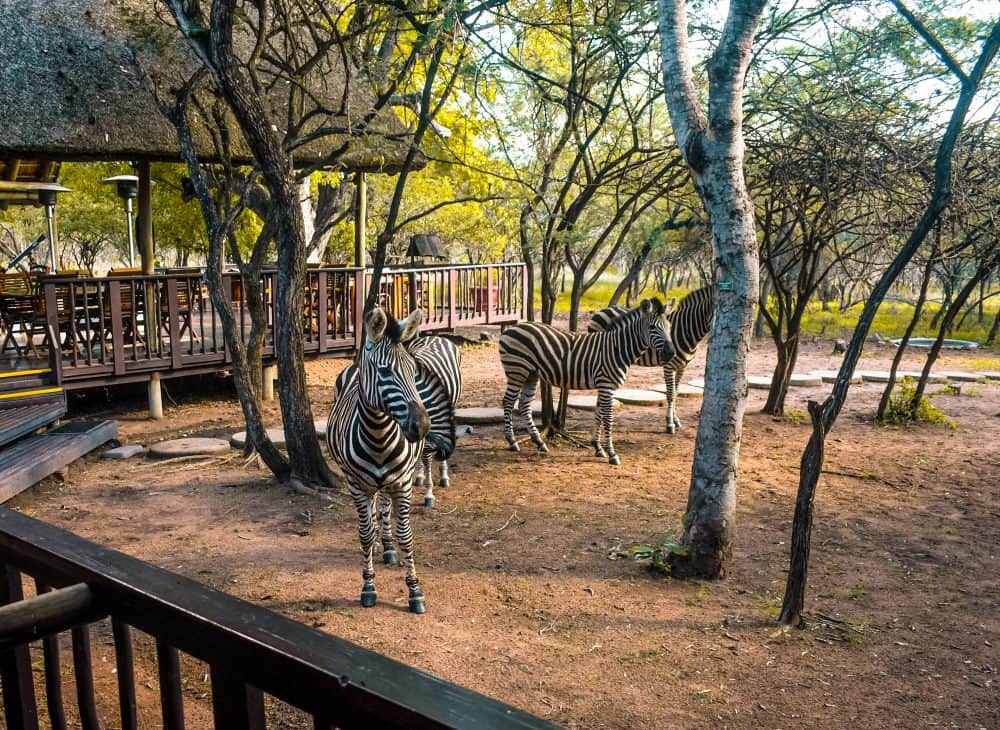
Malaria and other health risks in Kruger
There is a risk of malaria whilst on safari in Kruger National Park, and it is advisable to take malaria tablets for any length trip. Bite prevention is highly recommend, and most lodges have mosquito nets too. Bring lots of bug spray!

Self-drive or guided game drives?
For most overseas travellers to Kruger, it is most likely you’ll want a guided game drive. This means not only do you not have to worry about the driving part, and can fully focus your energy on spotting wildlife, but you’ll also enjoy the benefit of an experienced and highly knowledgeable guide.
Of course, some people will still prefer to pick up their own hire car and self drive Kruger National Park. If you do this, my top tips for self-driving in Kruger are:
- Arrive to the gate really early, especially on weekends or public holidays as the queues grow quickly
- There are also only so many vehicles permitted per day
- Bring thermos and snacks in the car
- Note on the map your nearest petrol stations, and if you pass one, always fill up, just to be on the safe side
- Ask passing cars about sightings – 99% of people will be keen to help
- Remember to not get out your vehicle unless in designated parking areas
- Stay on the marked roads and don’t exceed 50kmh
- Do not litter – this should be obvious! Bring a litter bag

Booking a safari or game drives in Kruger National Park
As I’ve mentioned above, your lodge will be able to arrange game drives for you. These might be included in your ‘full board’ stay, or you may have an activities booklet to choose these from.
If you’re after something a little more bespoke for your safari in Kruger National Park, then another idea is to contact a local company. There are hundreds to pick from, which again can seem a little daunting. I came across Chasin’ Africa through TripAdvisor and couldn’t recommend the company more.
Not only did the team at Chasin’ Africa completely understand my request (a 7 hour game drive finishing at Skukuza airport and therefore taking our luggage), but it was arranged with such ease. I paid in advance through their payment portal and it was all very straightforward. I spoke to Leanne at Chasin’ Africa and she was happy to answer all of my hundreds of questions too!
We had already decided upon accommodation, but Chasin’ can also help you with this too. You can also check their amazing TripAdvisor reviews here too.
One thing I’d keep in mind when arranging your game drives is that it is definitely better having less people in the jeep. More so than you could expect.
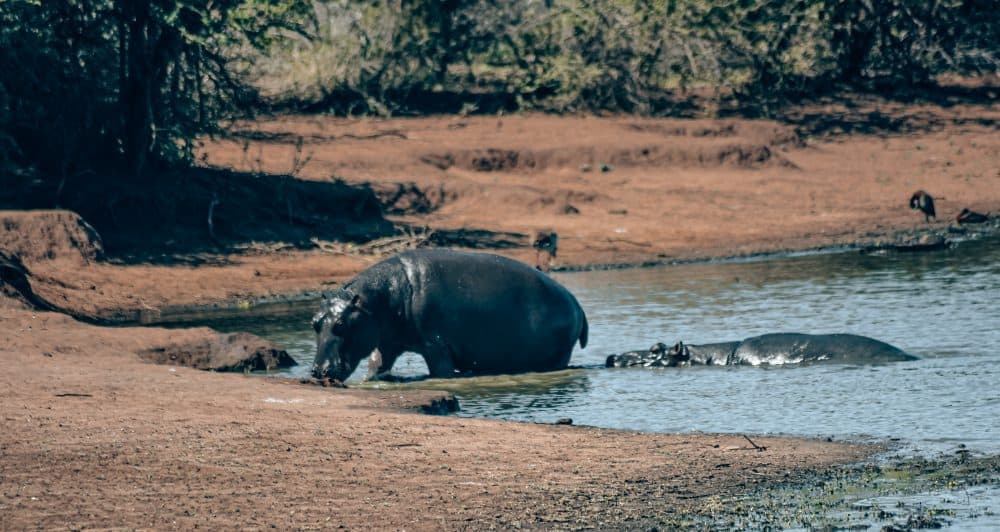
So there you have guide to a safari in Kruger National Park, South Africa.
I think a safari experience at Kruger is truly one of the best experiences to be had. South Africa too is one of the best countries I have ever been to, and if you’re doing a longer trip around the country do check out my other posts. I’ve got a comprehensive guide to the Garden Route and an article detailing the best beaches in SA .
I’ve written Cape Town itineraries , as well as a guide to the best places to eat in Cape Town , day trips from Cape Town and a complete guide to day trips from Cape Town .
Feel free to drop me a line if you would like any advice or further recommendations for planning your safari in Kruger National Park. If you’ve enjoyed this guide to Kruger, then please do share using the below links!
Wanna see more? Check my Instagram here , my Facebook here or my Twitter here !
Disclaimer: This visit to Kruger National Park was entirely paid for by myself, and there was no involvement from the tourism board or a hotel. This is an independent guide.
Enjoyed my guide to a Kruger National Park safari? Pin it!
You may also enjoy:
Ghana travel guide: everything you need …, cape town foodie guide: the best …, visiting essaouira from marrakech: essaouira travel …, hiking in the rif mountains near ….
I have been dying to do a safari in South Africa, this looks incredible. Thank you for sharing
Omg this looks amazing, especially the lodge with the zebra! This is a bucket list item for me – we’re going to do a safari for our honeymoon, although I think we’ll go to the Serengeti rather than Kruger. But Kruger looks really amazing too!
Sounds like this was an amazing experience! I can’t wait to go on safari one day
thanks for sharing! there is so much confusing info out there so this was super helpful!
Thanks for the info. .I am planning for 2 nights in Krugger. .1st I am driving from Johannesburg to Marloth Park and stying there. .2nd day going for full day self drive safari. . and will stay at Crocodile rest camp. .next morning will do sunrise safari (govt.one /Sanparks)and after noon we will head back to blyde river canyon.plz suggest any better plan if required. .or is it right?? Does SANPARKS safari start from only Crocodile rest camps?
Hi Rajdeep, that sounds like a good plan but quite busy for a 2night trip! The SANPARKS organised safaris also start from other rest camps in Kruger though- hope that helps!
Leave a Reply Cancel reply
Your email address will not be published. Required fields are marked *
Let’s connect
Kruger National Park Travel Guide

Courtesy of Utopia_88 | Getty Images

Why Go To Kruger National Park
Situated roughly 260 miles northeast of Johannesburg , the nearly 5 million-acre Kruger National Park offers some of the best access to wild animals in Africa. The Big Five – buffalo, elephants, leopards, lions and rhinos – all reside here, as well as Nile crocodiles, hippos and rare birds like southern ground-hornbills and lappet-faced vultures. But this sprawling wildlife sanctuary is home to more than just animals. Giant baobab, fever and marula trees tower above the park's savanna, thornveld and woodland landscape. What's more, Kruger's Marula and Nxanatseni regions house the Albasini and Masorini ruins, where Portuguese colonists and members of the indigenous Ba-Phalaborwa ethnic group once traded metal products, beads, clothes and more.
A trip to Kruger will undoubtedly bring you as close to nature as possible. To make the most of your time, consider going on a game drive or a bush walk . Many stop near prime animal-viewing areas like Hippo Pool , the Kruger Tablets and the Red Rocks , where lions, hippos and birds regularly linger. Or, take a few days to camp and explore popular trails like Wolhuter and Olifants.
Find Flight and Hotel Deals
Navigate forward to interact with the calendar and select a date. Press the question mark key to get the keyboard shortcuts for changing dates.
Navigate backward to interact with the calendar and select a date. Press the question mark key to get the keyboard shortcuts for changing dates.
- # 11 in Best Places to Visit in Africa in 2023
- # 17 in Best National Parks in the World for 2024
Best of Kruger National Park
Best hotels in kruger national park.
- in Silonque Bush Estate
- in Kruger Park Lodge

Best Things to Do in Kruger National Park
- # 1 in River and Bush Walks
- # 2 in Kruger Tablets (Nkayeni Region)
- # 3 in Game Drives
Popular Tours

Captivating 3 Day Kruger Safari Adventure From Johannesburg
(36 reviews)
from $ 946.76

Captivating 2 Day Kruger Safari from Johannesburg
(45 reviews)
from $ 671.92

Overnight Kruger National Park Classic Camping Safari
(21 reviews)
from $ 201.58
Kruger National Park Travel Tips
Best months to visit.
The best time to visit Kruger National Park is at the beginning or end of the region's dry season, which falls between April and September. During Kruger's dry season, temperatures are mostly pleasant (with nighttime temps dipping into the high 40s and daytime temps occasionally reaching into the mid-80s). What's more, vegetation is sparse and water levels are low due to the lack of rain, meaning visitors will have a better chance of spotting animals. However, extreme dry seasons can also result in increased animal deaths, so it's best to avoid visiting in July, August and September, the season's driest months. And in the rainy season (from October to March), abundant rainstorms and foliage can make it difficult to see animals.
Weather in Kruger National Park
Data sourced from the National Climatic Data Center
What You Need to Know
- There's a daily conservation fee All visitors, including those who book safari tours (unless otherwise stated by tour operators), will be expected to pay the park's conservation fee before entering. For non-South African residents, this means a daily charge of $23 per adult and $11 per child.
- Bring bug spray and a mix of clothes Although most bugs in Kruger stay hidden during the day because of the heat, mosquitoes (some of which may carry malaria) are a common nuisance before sunrise and after sunset. To protect yourself from mosquitoes, change into pants and long-sleeved clothes at night and wear insect repellent with DEET (a chemical that limits mosquitoes' ability to smell you).
- Finalize airfare and safaris well in advance Kruger offers more flexibility than other African parks due to its year-round access. However, safari tours book up quickly (especially between April and September, Kruger's peak season) and flight availability is limited throughout the year, so plan on booking about a year in advance.
How to Save Money in Kruger National Park
- Book a safari package Travelers are welcome to drive through Kruger, but additional charges will apply for car rentals, gas and all meals. Safaris, however, will typically cover all of these expenses, plus airfare or road transfers to and from Johannesburg, game drives and accommodations.
- Pack some essentials Once inside the park, supplies like batteries, Band-Aids, bug spray and snacks are only sold at select campsites for higher-than-average rates, so bring any essentials with you.
- Rough it If you stayed at one of the park's nicer accommodations, you'd pay approximately $20 to $560 per night on top of daily conservation fees, so go for something more rustic by bedding down at one of Kruger's satellite camps, overnight hides (wooden structures with a low roof, benches and no electricity) or Tsendze campsite. These options do not charge daily tariffs.
Culture & Customs
Like Cape Town and Johannesburg, the official currency in Kruger National Park is the South African Rand (ZAR). You'll want to check the latest exchange rate before visiting, but expect one rand to equal approximately seven American pennies. Unlike Serengeti National Park , U.S. dollars are not accepted anywhere inside Kruger. A bank and ATM are available at Skukuza rest camp, and an ATM is also offered at Letaba rest camp, however, there are no other areas inside the park to withdraw and exchange money, so plan on bringing the bulk of your currency with you. Note: ATM fraud is a common problem in large South African cities; to protect yourself and your bank account, withdraw money before landing in the country.
Each visitor who enters Kruger will be charged a daily conservation fee of 152 or 304 South African rand (or about $11 or $23 per person), and additional tariffs will apply for game drives , trail access and bush walks (unless otherwise noted by your safari tour operator). Travelers who opt to drive their own car and camp at any of the park's main rest camps, bushveld camps or bush lodges are also required to pay a nightly fee for their accommodations. And like in the U.S., tipping in Kruger is the norm. Expect to leave a few rand per night for camp staff like housekeepers and parking attendants; giving roughly 10 percent of your total bill is common when tipping waiters at a lodge restaurant. And for game drives, plan on offering your ranger and spotter (if present) approximately 50 South African rand (nearly $4) per drive.
As is the case throughout South Africa, many languages are spoken in Kruger National Park. Most rangers and park employees will know English, as well as Afrikaans and Tsonga, a dialect used by the region's first inhabitants – the Tsonga people. Some Afrikaans and Tsonga phrases you may want to use include, "hallo" and "avuxeni" (hello), "dankie" and "ndza nkhensa" (thank you), "Hoe gaan dit met u?" and "Ku njhani?" (How are you?), and "ek verstaan nie" and "a ni swi twisisi" (I don't understand).
While in the park, it is imperative that you follow your guide's instructions at all times. Feeding animals is strictly prohibited, and garbage must be properly disposed of in trash bins. If any food is left in an unattended vehicle, animals will likely find it. Visitors are also asked to stay in their vehicles at all times (unless given permission to exit by a ranger). Lastly, travelers with cars must drive on the left side of the road, are required to adhere to speed limits (which are in kilometers per hour on posted signs throughout the park), need to have a valid international driver's permit and cannot drive off designated paths or down roads with "no entry" signs.
What to Eat
Several luxury lodges in Kruger offer indoor and outdoor dining areas. Two lodges – Rhino Post Safari Lodge and the Relais & Chateaux -affiliated Singita Sweni – even house wine cellars with various South African wines. Others, such as Lukimbi Safari Lodge, provide all meals, including those served in the bush and on the property's decks. And at Punda Maria, Mopani, Satara and other main rest camps, travelers can grab a bite to eat at South African- or American-inspired restaurants. Most lodge and main rest camp meals feature staples like braaivleis (grilled meats), mieliepap (maize porridge), morogo (wild spinach) and potjiekos (hearty meat, veggie and starch dishes prepared in cast iron pots over a fire).
Travelers can also prepare their own meals on grills found at most campsites. In permanent accommodations, cooking utensils and refrigerators are typically provided, and the bulk of main rest camps have retail shops that sell drinks, raw meat and snacks like beef jerky, chips and ice cream. What's more, safari tour operators – such as Nhongo Safaris , Outlook Safaris and Funky Monkeys Backpackers & Safaris – usually include some or all meals in their rates. But keep in mind that a few tour operators do charge extra for alcoholic beverages.
Most of Africa's safari parks (especially those with periods of heavy rains) are prone to malaria, a mosquito-borne disease that's endemic throughout the continent. To protect yourself from mosquitoes, wear long-sleeved clothing at night (when mosquitoes are most prevalent), as well as insect repellent with DEET (a chemical that makes it harder for mosquitoes to smell you). Also, speak with your doctor to obtain a prescription for an anti-malarial medication, which will need to be started before your trip and continued after returning home. Note: Some anti-malarial medications cause side effects like vivid dreams, anxiety and nausea, so discuss all options and their potential effects before choosing a medication. And remember, like other animal sanctuaries, keeping a safe distance from wildlife at all times is a must. Always follow park instructions. Should a dangerous situation arise, Kruger guides and rangers – who carry loaded rifles as a precaution – are trained to shoot any threatening animals.
Getting Around Kruger National Park
One of the easiest and most cost-effective ways to get around Kruger National Park is to book a safari tour. Safari guides know the park's roads and game-viewing areas well, so you won't have to worry about getting lost while trying to spot animals. Many safari packages also cover food, lodging, game drives and transportation to and from a regional airstrip or Johannesburg . If you'd rather avoid a group tour, you can rent a car at most of Kruger's airports and Skukuza rest camp. Car hires are also available from Johannesburg's O.R. Tambo International Airport (JNB), but you'll have to drive 244 miles (or about four hours) to reach the park. A faster (albeit pricier) option is to fly into Kruger Mpumalanga International Airport (MQP), Hoedspruit Airport (HDS), Hendrik Van Eck Airport (PHW) or Skukuza Airport (SZK) from O.R. Tambo.
Entry & Exit Requirements
Americans interested in visiting South Africa will need a passport that is valid for at least 30 days after the date of departure and has two blank visa pages. A tourist visa is not necessary for stays less than 90 days, but if you have a connecting flight or stopover in a country where yellow fever is present, a valid World Health Organization approved International Certificate of Vaccination (also known as a "yellow card") is required. To learn more about entry and exit details, visit the U.S. State Department's website .
Elephants often travel in herds, meaning you're bound to spot several while exploring Kruger.
Explore More of Kruger National Park

Things To Do
Best hotels.

You might also like

Yellowstone National Park
# 1 in Top 19 Cheap Family Vacations

Serengeti National Park
# 1 in Best Places to Visit in Africa in 2023

If you make a purchase from our site, we may earn a commission. This does not affect the quality or independence of our editorial content.
Recommended
The 25 Best Beaches on the East Coast for 2024
Timothy J. Forster|Sharael Kolberg April 19, 2024

The 50 Best Hotels in the USA 2024
Christina Maggitas February 6, 2024

The 32 Most Famous Landmarks in the World
Gwen Pratesi|Timothy J. Forster February 1, 2024

9 Top All-Inclusive Resorts in Florida for 2024
Gwen Pratesi|Amanda Norcross January 5, 2024

24 Top All-Inclusive Resorts in the U.S. for 2024
Erin Evans January 4, 2024

26 Top Adults-Only All-Inclusive Resorts for 2024
Zach Watson December 28, 2023

Solo Vacations: The 36 Best Places to Travel Alone in 2024
Lyn Mettler|Erin Vasta December 22, 2023

26 Cheap Beach Vacations for Travelers on a Budget
Kyle McCarthy|Sharael Kolberg December 4, 2023

The 50 Most Beautiful White Sand Beaches in the World
Holly Johnson December 1, 2023

The 26 Best Zoos in the U.S.
Rachael Hood November 16, 2023


THOUGHTFUL TRAVELING
Africa , Destinations , Favorites , Featured , South Africa · May 4, 2022
Planning a Safari in Kruger National Park
I always wanted to go on an African Safari but the idea of one always felt too intimidating – it always seemed too expensive, too far away to travel to, too difficult to plan. When Kevin and I finally decided that we needed to make this bucket list trip happen, we made Kruger National Park our first safari experience – as South Africa’s first national park, Kruger National Park is unique in that it offers tourists the chance for a DIY (do-it-yourself) safari i.e., you don’t have to take an organized safari tour, but rather, can drive through the park in your own car and save a ton of money. At the same time, there are a lot of great options for guided safaris at Kruger as well.
We chose to do a hybrid experience at Kruger and spent the first part of our trip doing a self-drive, and the second half of our trip in the Kapama Private Game Reserve. I honestly think we got the best of both worlds doing our trip this way, and highly recommend doing the same. While the self-drive portion gave us freedom, I don’t think we would have seen the Big Five (especially the elusive leopard) without the help of our tracker from the private safari experience.

Since visiting Kruger, I’ve added a couple of other safaris under my belt (e.g., Masai Mara in Kenya), and I can honestly say that Kruger National Park is really the BEST place to visit for first-time safari goers – it’s extremely accessible, provides you with a lot of different budget and lodging options, and is also a great place for spotting the Big Five (also known as the lion, elephant, buffalo, rhino, and leopard). Since planning a safari in Kruger National Park is no easy feat…read about our experience and check out our travel guide below!

When to Visit Kruger National Park
How to get to kruger national park, how many days to spend in kruger, how to best experience kruger national park, the best entrance gates in kruger, our diy safari itinerary, our kapama private game reserve safari itinerary, what to pack for a safari.
We visited Kruger National Park as part of an epic tour of South Africa. To read more about our experiences in this country, check out these related posts here: How We Spent 4 Days in Cape Town | The Perfect Wine Weekend in Stellenbosch
Related Post: How We Spent 4 Days in Cape Town
Related Post: The Perfect Wine Weekend in Stellenbosch
The best time to visit Kruger National Park really depends on what type of experience you’re looking for. If you want to have the best chance of spotting animals, then the dry winter season (May to September) is a good time to visit as the bush is not as thick, and animals tend to gather around the water holes. We visited in the month of May and were able to see all of the Big 5, and also enjoyed wonderful weather during the day (nights were a bit chilly). If you’re interested in seeing lush vegetation, then visit Kruger National Park during the summer season.

There are two main airports that serve Kruger National Park: Hoedspruit/Eastgate (HDS) and Kruger Mpumalanga International Airport (KMIA/MQP ). Kruger is also a popular self-drive destination so another option is to drive to the park from Johannesburg which will take you roughly 4 hours. Finally, it is possible to take a flight to Skukuza Airport which is in the park itself, but flight prices are more expensive. We flew into Kruger Mpumalanga after arriving at Johannesburg (O.R. Tambo International Airport), and rented a car from the AVIS at the airport to kick-off the first leg of our safari.

An important thing to remember is that Kruger National Park is huge! As one of the largest national parks in the world, Kruger covers almost 7,600 miles and is larger than over 90 countries (e.g., Israel, Belgium). Don’t try to tackle it all at once – for a first timer’s visit to Kruger, I would recommend budgeting at least 4-5 days as this will give you the opportunity to see a few different entrance gate areas of the park, and also split your time reasonably between a self-drive and private safari.
There are nine entrance gates at Kruger National Park. The closest gate to Johannesburg O.R. Tambo International Airport is Numbi Gate. It is commonly known that the southern and central areas of Kruger National Park (Skukuza Camp, Lower Sabie, Crocodile Bridge) tend to offer the best animal viewing, and these areas also have well-serviced rest camps if you’re choosing to stay within the park.
TIP : When booking a car rental, try to book one with more height, such as a four-wheel drive. This will allow you to get a better view over the tall grass during animal viewing.
We spent two and a half days doing a DIY safari in Kruger National Park. After picking up our car rental from Kruger Mpumalanga airport, we made the 1.5 hour drive to our lodging for the night: Mvuradona Safari Lodge , which is located in Marloth Park just a short 20-minute drive away from the Crocodile Bridge Entrance gate. We LOVED our stay at Mvuradona Safari Lodge – this riverside accommodation featured an authentic African thatch lodge with huge suites, and a delicious homecooked three-course dinner every night next to the firepit. It was a great place to spot zebra, giraffe, warthog, and impala by the pool in the evenings.

TIP : Prior to entering the park, I’d recommend stopping by a grocery store to pick-up some snacks and water to have in the car with you. While there are rest camps, food options are fairly limited!
The next morning, we made our way to the Crocodile Bridge Gate to enter Kruger National Park to start day 1 of our grand safari experience. We opted for pre-paid entry into the gate which I would highly recommend, because there was already a line at the park when we arrived at the gate around 5:30am in the morning! Our route took us up the H4-2 Tar road to Lower Sabie – Gomondwane Road which is known for great game sightings. Even though it was a wet morning (cue the song ‘Africa’ by Toto), we saw a lot of animals, and were especially excited when we had to stop for 15 minutes because a family of baboons decided to party on the road and block all of the cars from driving.
My favorite moment from that first day was spotting an elephant for the first time in the wild, especially since we spotted it right when the song ‘Circle of Life’ from the Lion King soundtrack started playing from our ‘African Safari’ playlist — what a perfectly timed moment. I have to admit that it was totally nerve-wracking driving next to such a massive animal! One flip of it’s trunk and our car would’ve suffered some major damage.

To stretch our legs, we made sure to stop by rest camps as we passed them. The Kruger rest camps are a great source of information as they have sighting boards which show where the Big 5 were recently spotted, to help you plan your next stop. It was because of these sighting boards that we were able to experience a rare sighting of a black hippo! Finally, we ended our first day in the park by exiting the Malale Gate (40-minutes away from our lodge), before heading back to Mvuradona Safari Lodge for a romantic fireside dinner.

The second day of our self-drive DIY safari in Kruger took us through the Skukuza area, exiting out the Phalaborwa Gate. Again, we saw a ton of wildlife but the highlight of the day was spotting two male lions and three baby lion cubs crossing the street! This was particularly surprising since male lions typically don’t take an active role in raising their children. Plus, it’s not everyday a lion passes you by while you sit in your car!

Instead of heading back to our original lodge, we made our way to Rissington Inn to stay the night. We chose to stay in a different location based on that day’s route through the park and to limit the amount of driving ‘back’. The Rissington Inn was another great stay – located in Hazyview, this bed & breakfast was a total charmer. We had our own bungalow to ourselves with a private outdoor shower and patio for sundowners, with a lovely 3-course meal served at the main house.
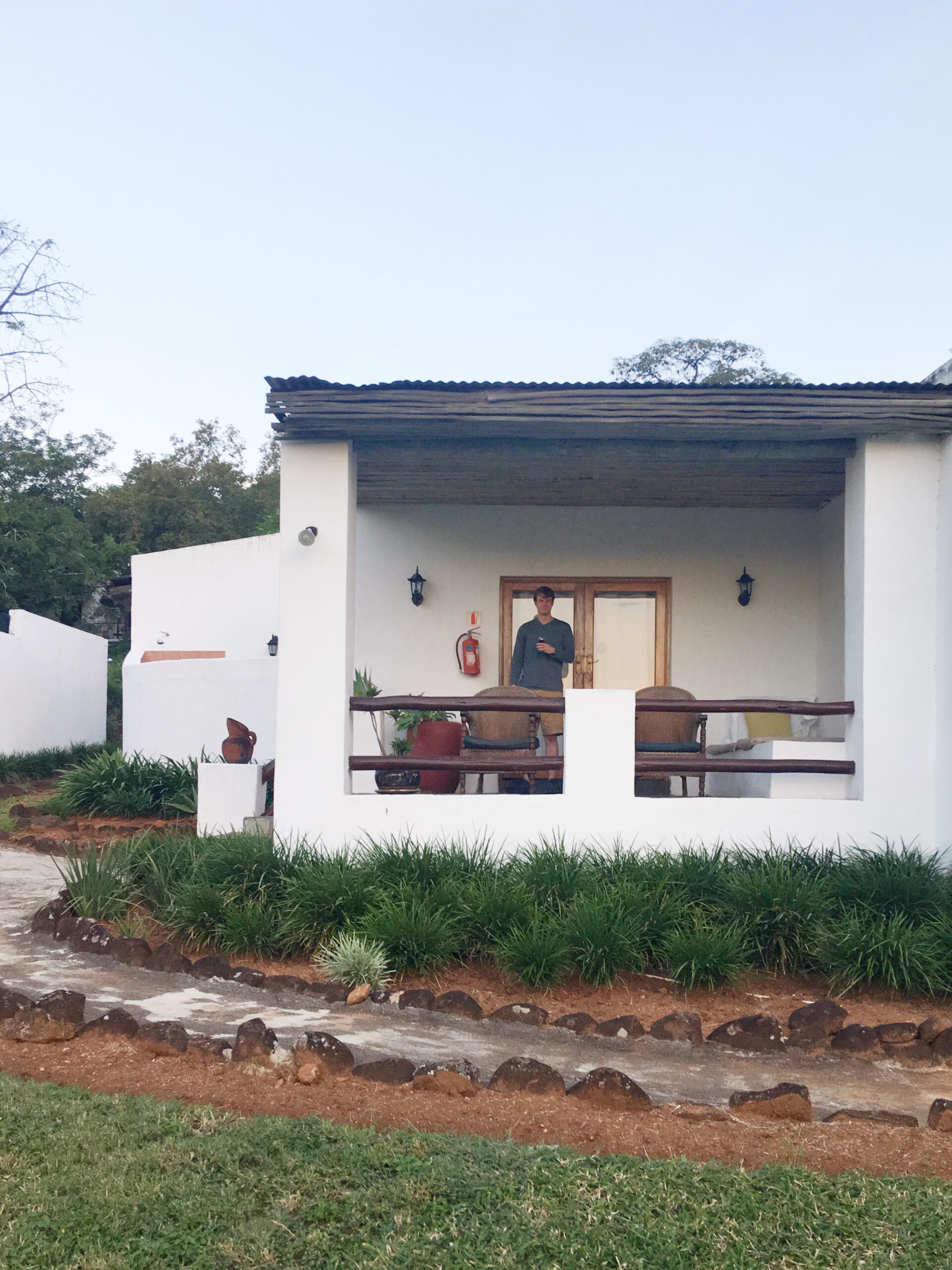
The next morning kicked off our transition from a DIY self-drive safari to a private guided safari. We dropped off our rental car at the Hoespruit Airport (roughly 1.5 hour drive from Rissington Inn). After having done a ton of research on various private game reserves in Kruger, we decided to opt for Kapama Private Game Reserve and seriously had the best time ever with them. If you want to do a guided safari and are debating which company to go with, I can honestly say that our time at Kapama, and the service we received was world class. They picked us up from Hoespruit Airport and drove us to the reserve in a jeep – we got a major kick out of this because we spotted a lot of animals on our way to the lodge (I mean, there were zebras roaming the airport grounds!), and it felt like we got a ‘bonus’ safari because of it.

Kapama offers 4 different lodging options when you book with them – the Kapama River Lodge , Buffalo Camp, Southern Camp, or Kapama Karula, and each one of them provides a very different experience. We chose the Kapama River Lodge as it was the most affordable (still pricey…but worth the money…more on that later), but still offered luxury suites, and the same safari experience. The River Lodge is also known to be the more ‘social’ of camps with large airy meeting and dining areas. The property is seriously gorgeous! If you’re wanting a more intimate, exclusive safari experience, I’d opt for Buffalo Camp or Southern Camp.
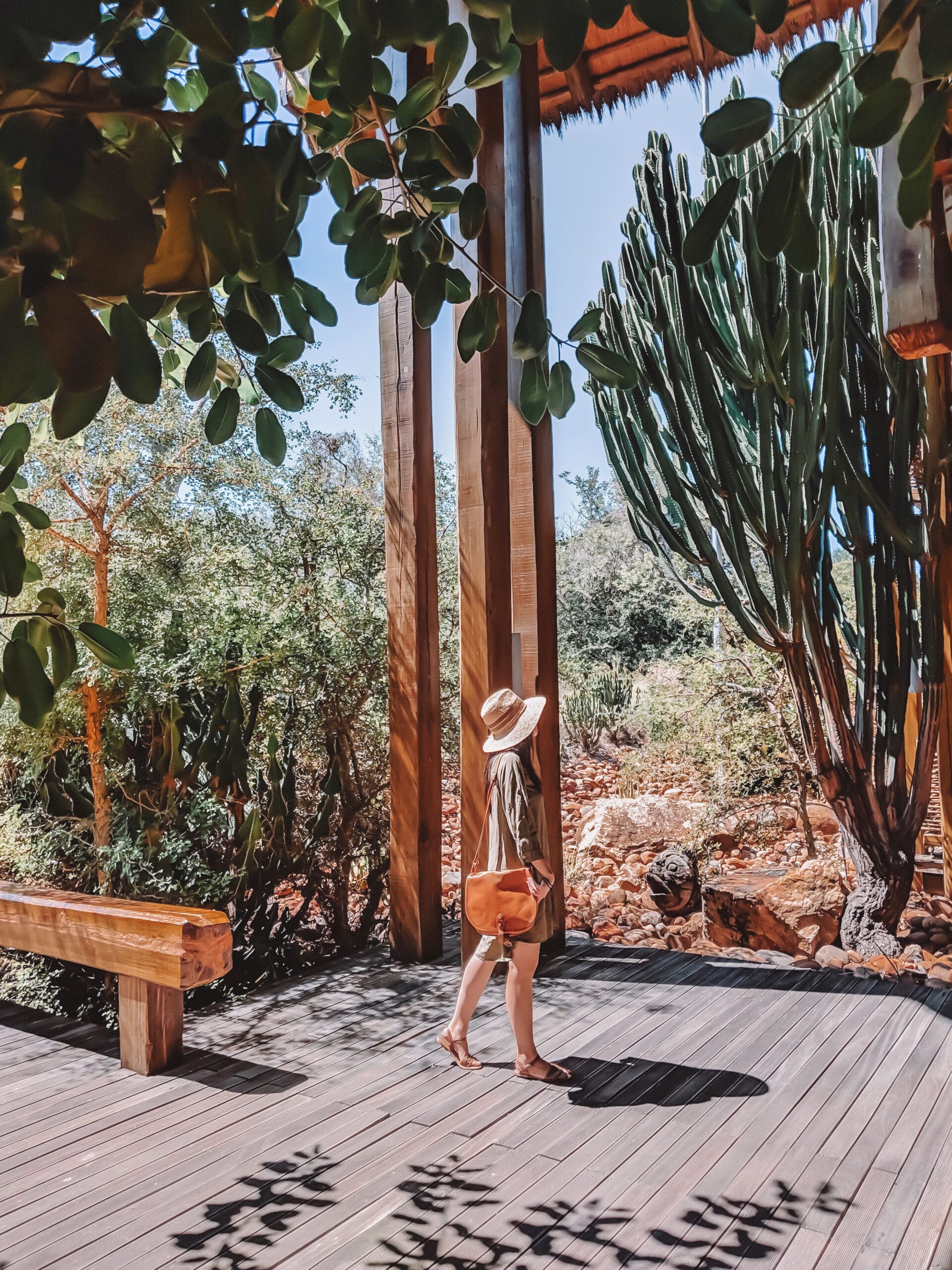
We loved everything about our time with Kapama. They organized everything for us – I MEAN EVERYTHING. Our schedules were laid out for us each day with an early breakfast, morning safari, lunch, rest time, afternoon tea, afternoon safari, sundowners, and dinner. At Kapama, you are organized into the same ‘group’ for the duration of your stay, which is roughly 8-10 people (we were paired with an older couple from Canada, and a younger couple from Brazil, and had a blast with them). Each group is then assigned a dedicated ranger and tracker for the trip (our ranger was named Gerard, our tracker was named Sepo, and they were both wonderful!), and they are responsible for your tour and safety during the safaris, and also eat with you during dinner time. This set-up made it so nice to get to know our ranger and tracker, and also gave them flexibility to manage our group schedules as needed (for example, they let us stay out a little bit later than normal as we were trying to spot a white rhino and needed more time in the reserve to find one).
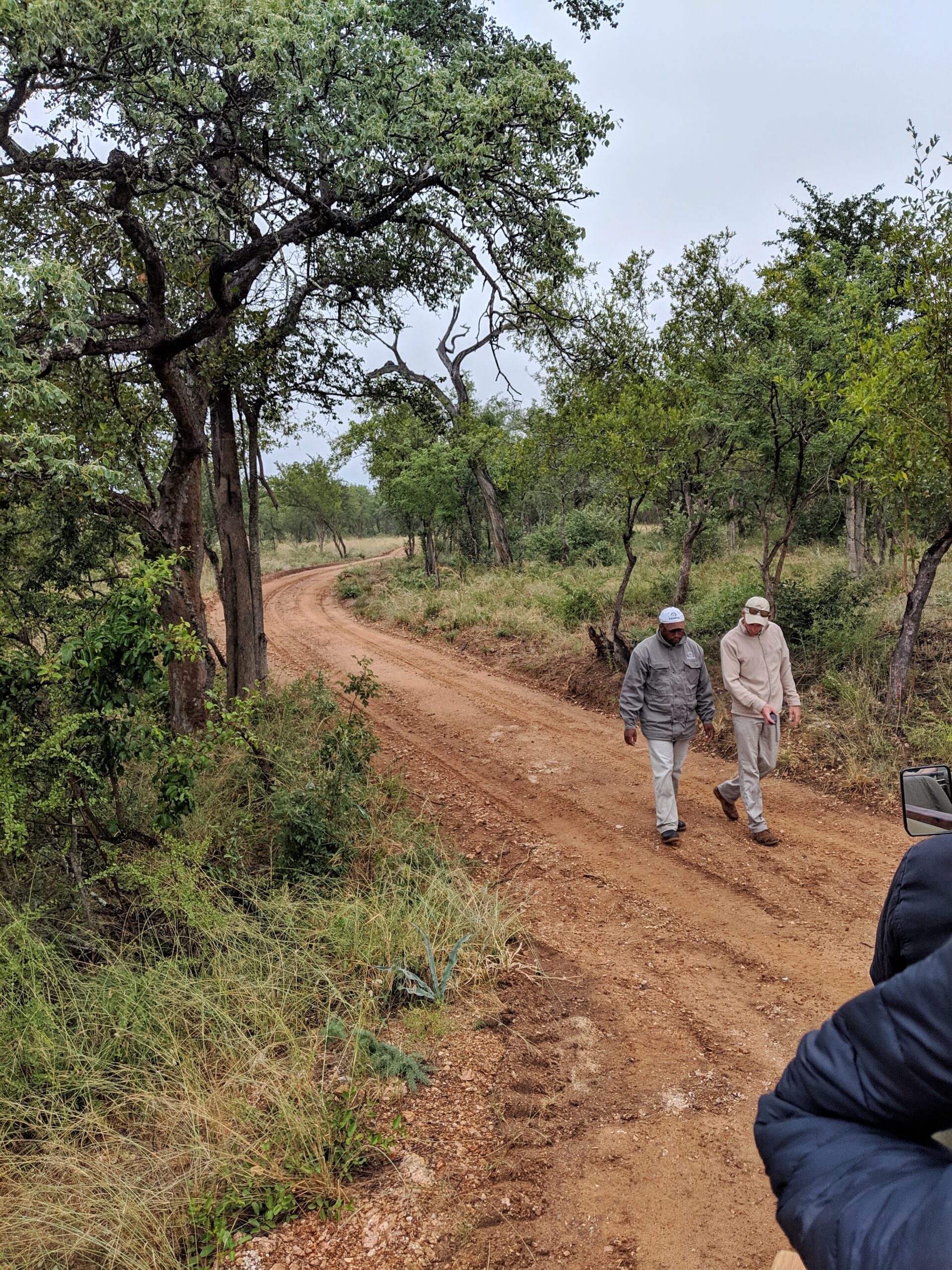
Our three-day stay with Kapama was the perfect amount of time for seeing all of the animals we wanted (three days meant that we were able to go on 6 different safaris!). And while we were able to spot a lot of animals during our self-drive, nothing really beats the experience of riding out in a huge open-air safari jeep and being closer to the wildlife. The rangers at Kapama talk to each other through walkie-talkies throughout the course of the day as well, making it easy for them to share animal sightings when they happen! You also learn a lot from the rangers during the drives – they know so many different facts about the animals, and it’s also fascinating to watch them observe the various tracks to see where to go next.
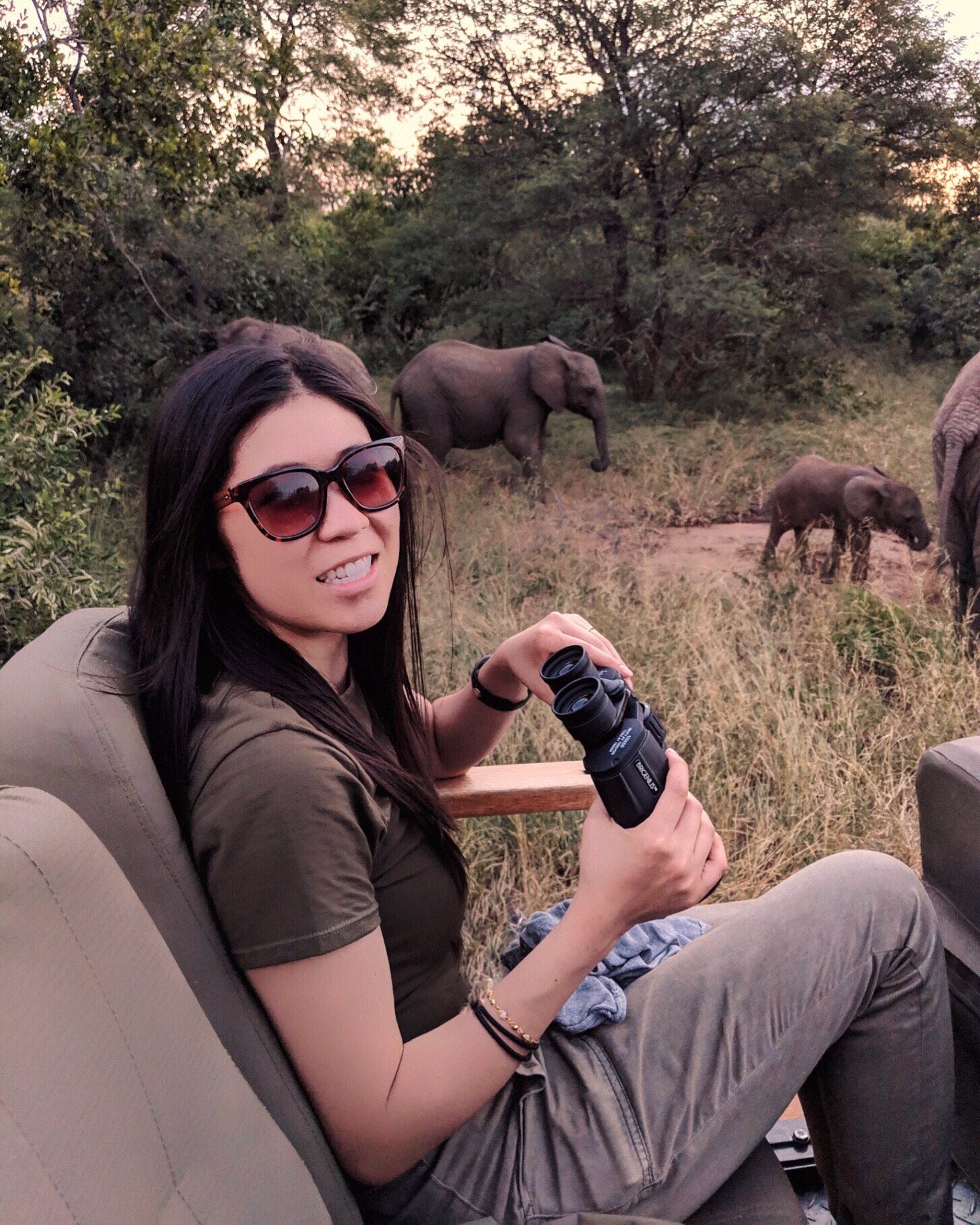
I don’t know what was more exciting – seeing the cutest tiny baby elephant being protected by her mama, or following a female lion at dusk (as a Leo, lions are my favorite animal). We also got the opportunity to see some hyenas take down a giraffe (and also saw the aftermath…which by the way….smelled absolutely horrible!). And of course, I can’t forget about the rare sighting we had of a leopard hiding in a tree.
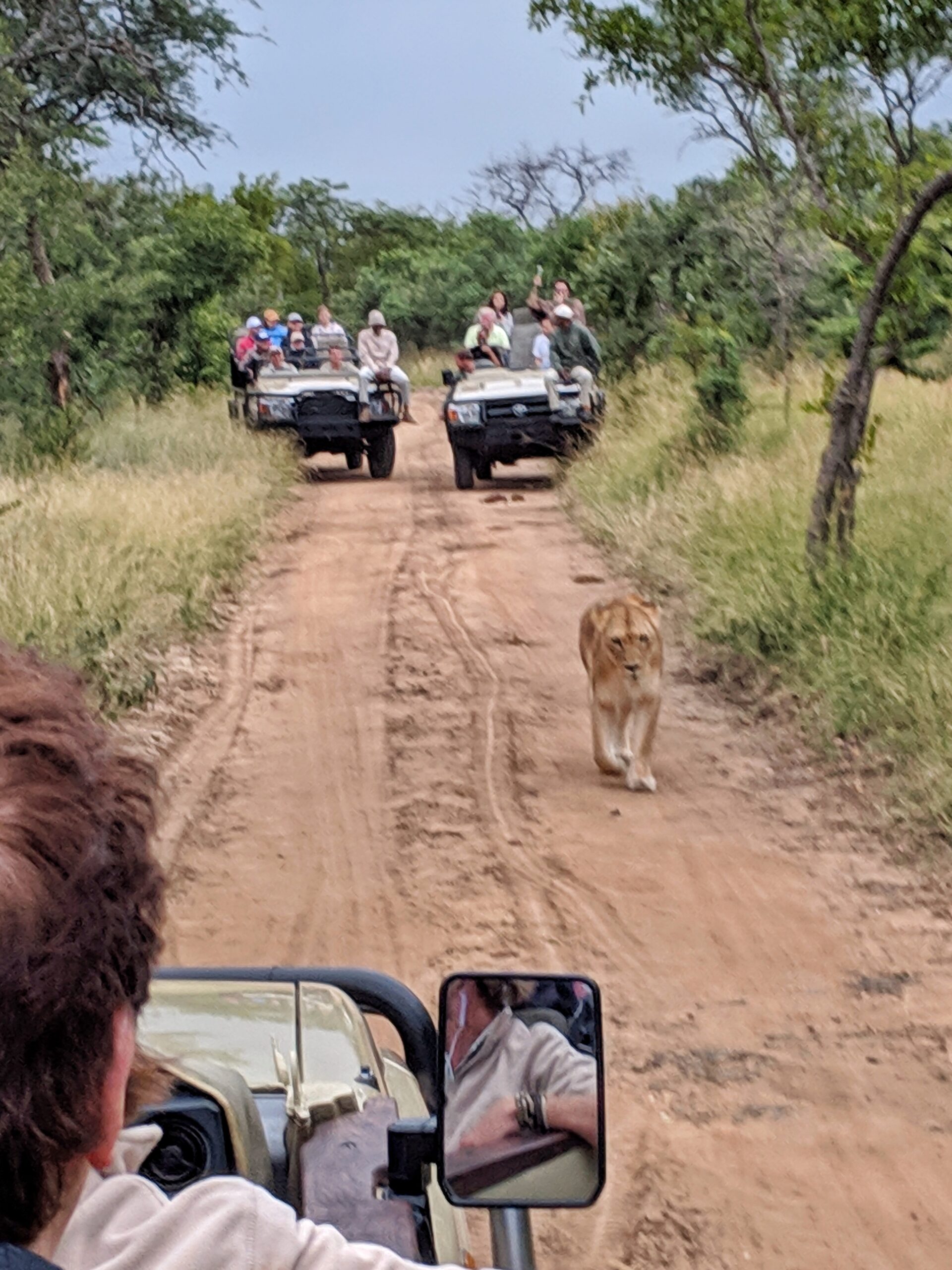
It always felt pretty magical during ‘sundowner’ hour where we were able to get out of the jeep, stretch our legs, and enjoy some beverages and snacks as a group. I have to admit that it was always pretty nerve-wracking getting out of the jeep each time….I mean, we were literally in the wild surrounded by lions, hyenas, and leopards! Thankfully, Gerard and Sepo always did a great job scanning the area for safety before letting us out of the jeep.
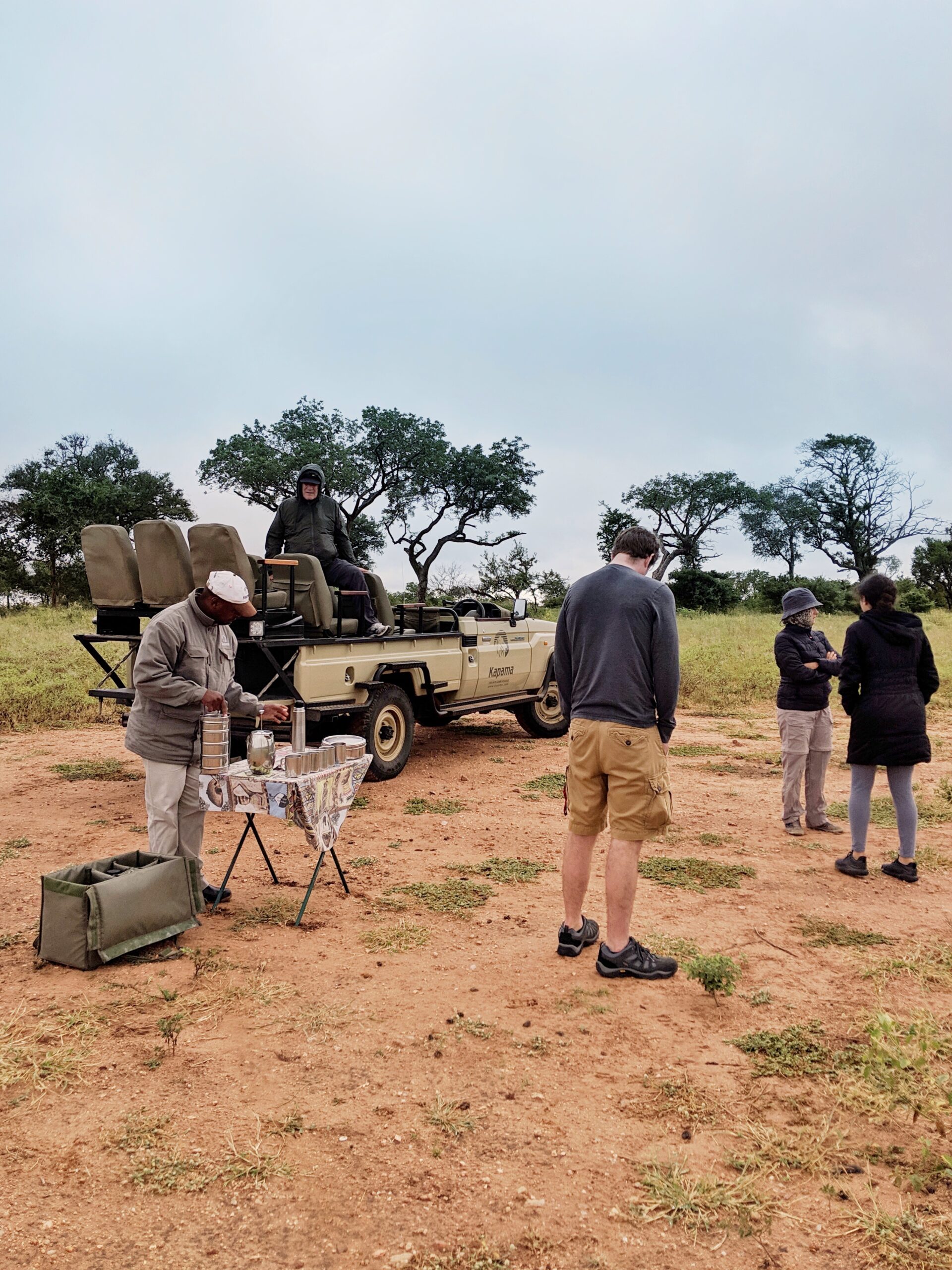
I also have to give a big shout-out to the food served at Kapama. All of the meals were served buffet style and holy cow….the buffet spreads were amazing! I swear I gained 10 pounds from the trip from eating so well. The dinners were especially extravagant…with every type of meat imaginable served at the grill, and a variety of side dishes as well.
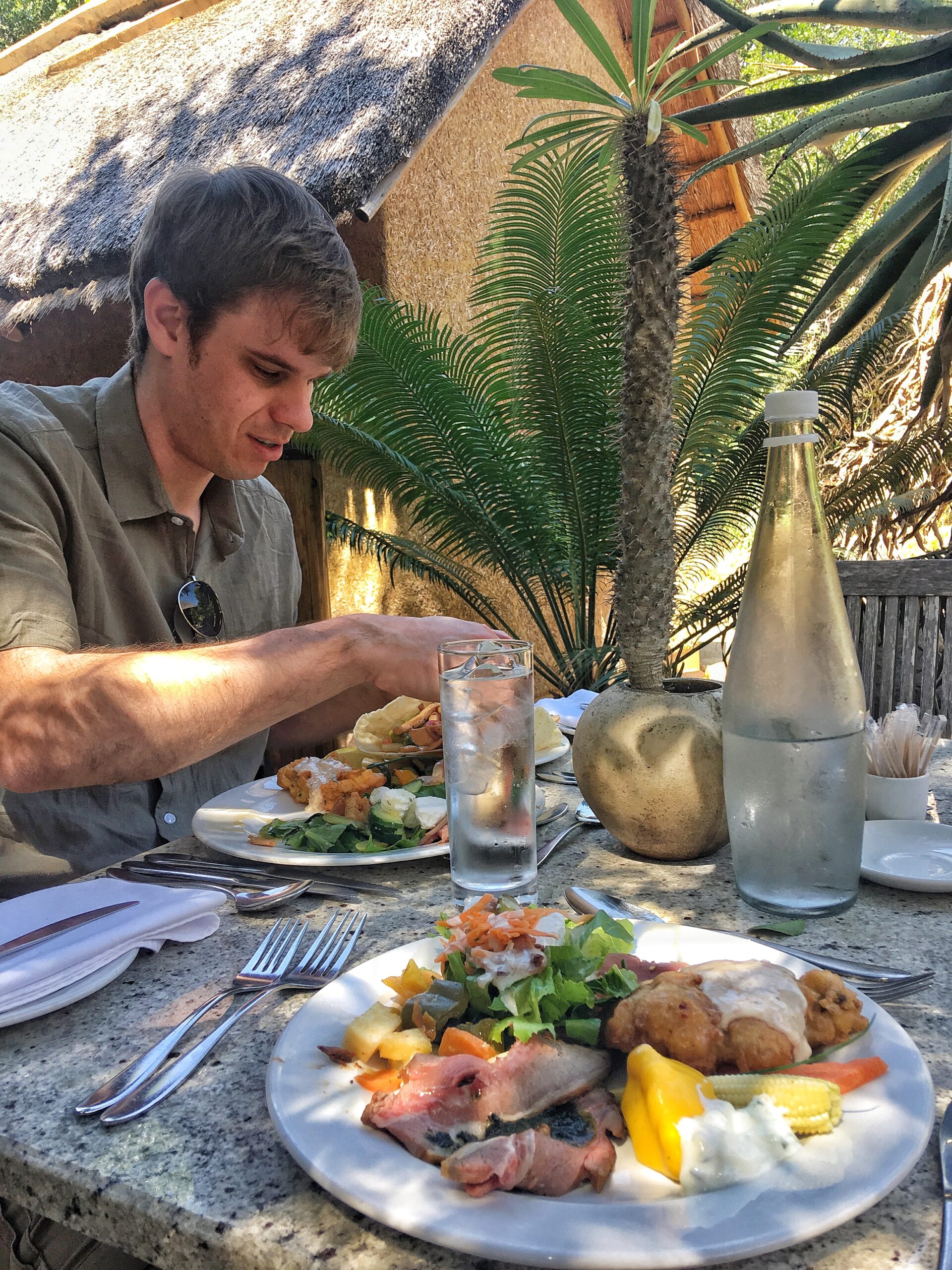
While the private safari experience with Kapama was more expensive than our self-drive portion of the trip, I can’t recommend it enough. The price is steep (around $400-$500/night depending on the season), but you have to remember that everything is included – multiple safaris a day, multiple meals a day (including sundowners and afternoon tea), and luxury suites. It’s 100% worth the money to spend on a once-in-a-lifetime experience.
On our last night in Kruger, I couldn’t help but get teary-eyed at the thought of leaving such a beautiful place. Being able to see so many animals in the wild, meet wonderful people, and witness such gorgeous landscape…I was so grateful that I had the opportunity to experience it all. There are no cages at Kruger…everything is 100% authentic, untamed, and inspiring…and when you’re driving across the open landscape surrounded by running zebras and wildebeests, you feel truly alive.

I did a LOT of research on what to pack for a safari, and I’ve listed the major must-haves below. Note – this list is based on a safari during the dry season which sees milder temperatures, so you will want to pack lighter clothing if you choose to visit during the hot, humid season. The most important to remember is to pack light – most of the charter planes only allow for luggage under 40 pounds, and hard-cases are prohibited. The other thing to remember is to pack in lighter colors – bright colors tend to make the animals shy away which defeats the purpose of the safari, and wearing blue or black attracts tse-tse flies.
- A few pairs of lighter-colored pants or slacks (e.g., khakis)
- A few pairs of lighter-colored t-shirts for daytime wear
- Jeans and long-sleeve shirts for the evenings (you’ll definitely want to change out of your daytime clothes as it gets pretty dusty on the game drives)
- Windbreaker or fleece jacket for evening game drives
- A lightweight scarf for chilly mornings and evenings
- Waterproof jacket or lightweight poncho
- Sunglasses (this helps keep the dust out of your eyes)
- Comfortable closed-toe walking shoes
- Flip flops or comfortable sandals for hanging out at the lodge
- Bathing suit
- Socks, underwear, pajamas
- Malaria pills
- Anti-diarrhea medicine
- Basic first-aid kit (e.g., aspirin, band-aids)
- Sunscreen (SPF 35 or higher)
- Insect repellent (my favorite brand is ‘Peaceful Sleep’ and you can buy this at any grocery store in South Africa!)
- Tissues (bring these with you in the jeep to help with nose-blowing if you encounter dust)
- Your standard toiletries – moisturizes, face wash, shampoo, etc.
- Camera and lenses
- Memory cards for your camera
- Power strip or converter
- Binoculars (8×40/8×42 are recommended for animal viewing)
- Flashlight or head lamp
- Your standard travel essentials – passport, visas, credit cards, etc.
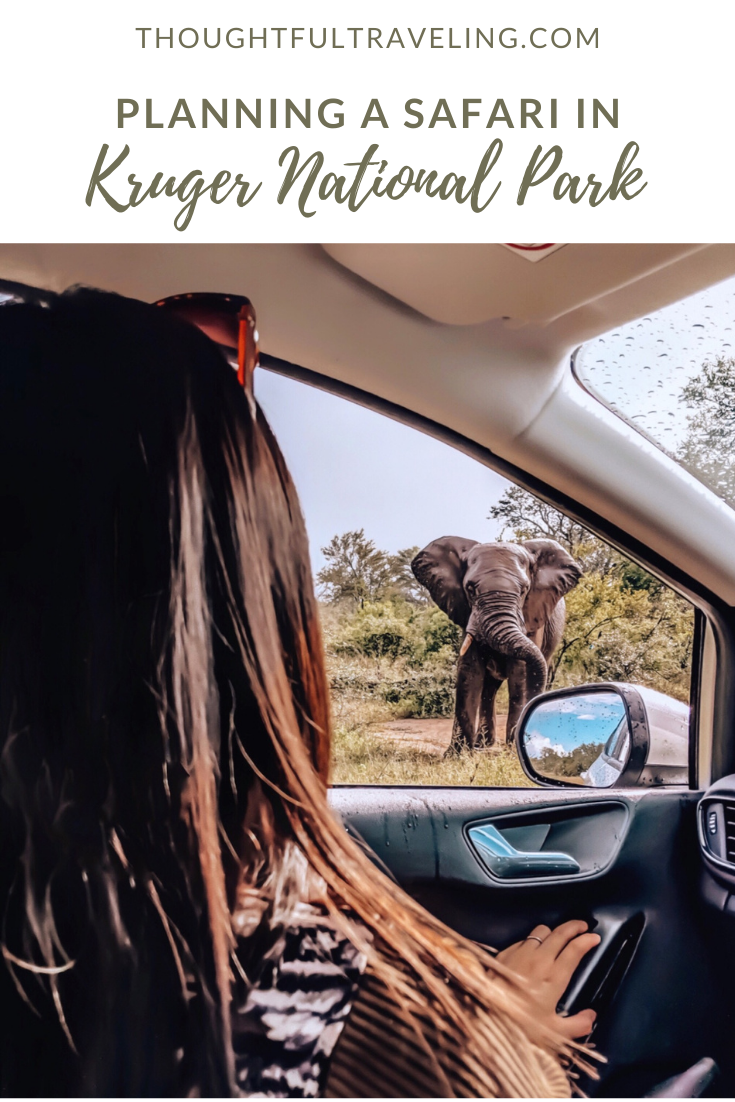
Related Post: Everything to Know about Staying at Giraffe Manor
join the club
You’ll also love.
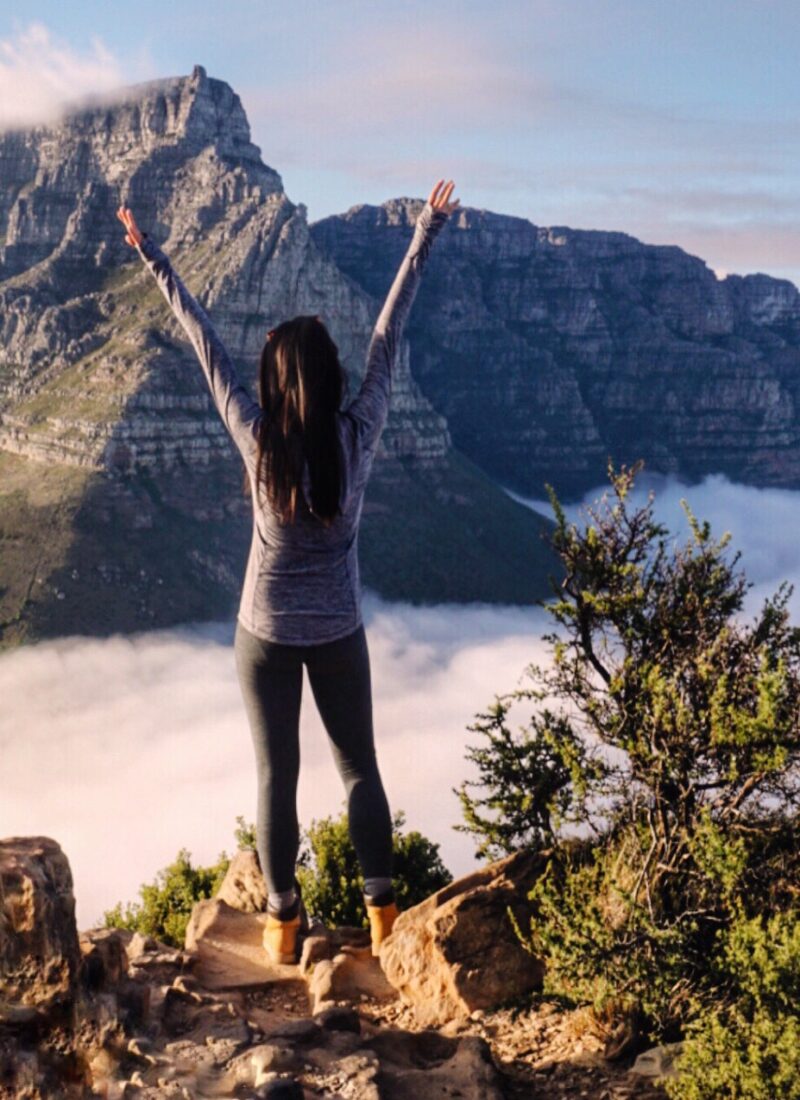
Leave a Reply Cancel reply
Your email address will not be published. Required fields are marked *
This site uses Akismet to reduce spam. Learn how your comment data is processed .
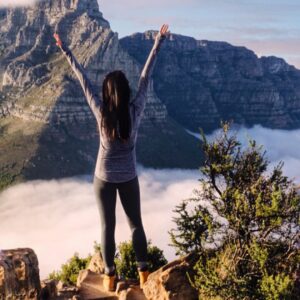
How We Spent 4 Days in Cape Town
Let’s get social.
Follow @thoughtfultraveling

Copyright © 2023 THOUGHTFUL TRAVELING · Theme by 17th Avenue

The Happy Traveller
Travel blog for fellow adventure-seekers and wanderlusters. Travel guides and stunning photography to inspire you to explore the world.
Kruger National Park: how to plan a day trip

The Kruger National Park is one of South Africa’s largest game reserves. It is home to a vast variety of wild animals including the Big Five; rhino, lion, elephant, leopard, and buffalo, many different antelope, giraffe, cheetah and birds. No trip to South Africa would be complete without a safari experience and the Kruger National Park is one of the best places to do that. The roads are in good condition making it accessible to any vehicle, there are plenty of animals guaranteeing some amazing sightings every day, and there are many different accommodation options if you’d like an extended stay in the park. However, safari experiences are often not very budget-friendly with park fees and accommodation prices being significantly more expensive than other parts of the country. So this blog post is about how to have a budget-friendly safari experience by doing a day trip to the Kruger National Park.

Where to stay?
Hoedspruit is a great spot to base yourself for a day trip into the Kruger National Park if you are wanting to explore the Northern Section of the Park. Here are some accommodation options:
Budget: Raptors Lodge
Mid-range: African Rock Lodge , eKhaya Bush Villa ,
Luxury: Little Africa Safari Lodge, Hoedspruit, Moditlo River Lodge , Oase by 7 Star Lodges
We based ourselves in Graskop which is about an hour’s drive from the Phabeni Gate of Kruger making it the perfect place to be based for a day trip. It was the perfect central location to explore The Panorama Route and The Blyde River Canyon.
Here are some accommodation options:
Budget: Wild Forest Inn
Mid-range: Graskop Hotel or Blyde Canyon, A Forever Resort
Luxury: Panorama Villa
Alternatively, browse Booking.com for a multitude of accommodation options:
Getting there
The closest airport is the Kruger Mpumalanga International Airport. You can book your flight through Expedia here .
Alternatively, you could fly into Kruger International Airport and book an excursion through GetYourGuide.
Try the Kruger National Park Full Day Safari , or check out this 3 day tour from Johannnesberg .
Planning your day trip
Game viewing is best done first thing in the morning so you’re going to want to try and get to the gate in time for when it first opens. For us this entailed a 4 am wake up so we could hit the road at 4:30 am to get to the gate in time for 5:30 am. This time will obviously vary with the seasons. These are the current gate times but be sure to check the San Parks website for any updates or changes.
October-March: gate opens at 5:30 April-September: gate opens at 6:00
In order to maximise your time in Kruger National park I would recommend spending the whole day driving around the park and only leaving at gate closing time. These are the current gate times but be sure to check the San Parks website for any updates or changes.
November-February: gate closes at 18:30 March-April: gate closes at 18:00 May-July: gate closes at 17:30 August-October: gate closes at 18:00
Day Visitor Limit
The Kruger National Park has a threshold for the number of day visitors they allow in each day. This means that once they reach their daily limit of day visitors, they will stop allowing day visitors to enter the park. This is not really a concern out of school holidays and during the tourist low season. However during high season, school holidays, public holidays and long weekends this may be worth noting. If, like us, you’re unsure whether it’ll be an issue or not, phone ahead of time and ask the staff at the gate if they think it is worth booking ahead. If they advise that it is then you can follow the steps on the San Parks website.
We paid R100 per adult for South African citizens and residents. The other prices can be found at the San Parks website , however these prices do seem to be a bit out of date. You will need your ID or driver’s license to prove your citizenship or residency. Park entrance is free for those carrying a valid wild card.

Planning your route

If you’re planning to do this as a day trip from Graskop then Phabeni gate is the closest gate for you to enter the park through. Upon entering Phabeni gate take the S1 road to Skukuza. This is a brilliant stretch for good sightings and you’ll be doing it first thing in the morning which further increases your chances of spotting some nice game. Once you’ve arrived at Skukuza you can get out and stretch your legs for a bit, go to the toilet and maybe have a snack. We then continued on along the road towards Lower Sabie which is parallel to a river. You can stop at Nkuhlu for a picnic lunch with a lovely shady picnic spot overlooking the river. Finally turn around and drive back to Skukuza for your final loo break. From Skukuza you can take the H1-1 road all the way along to Numbi Gate where you’ll exit the park. There are some watering holes along this stretch where you can stop and watch the animals as they come for their evening drink. Be sure to watch the sky turn orange and the horizons change colour as the sun sets on the day and your day trip to the Kruger National Park. This is a circular route allowing you to see many different parts of the park rather than just going in and out along the same road. However, it is going to be really important that you keep an eye on the time so that you exit the park before the gates close (otherwise you may need to pay a hefty fine).

We absolutely loved our day trip to the Kruger National park and were treated to some incredible sightings of some beautiful animals. We saw countless giraffe, so many elephants super close up, lots of hippo eyes sticking up out of the watering holes, lots of beautiful yellow-billed hornbills, brightly coloured kingfishers, steenbok, waterbuck, bushbuck, warthogs and buffalo, slithering crocs, herds of brilliantly stripped zebra and even a white rhino spotted in the distance and watched through binoculars.

We had a wonderfully full day and really made the absolute most of our time in Kruger. I thought it was amazing that we were able to enjoy sunrise, sunset, and a full day of game viewing in such a short space of time. While a few days would be preferable to fully experience Kruger, a day trip was a perfect budget-friendly alternative. We drove towards the gate, watching as the African Sun set on yet another beautiful day. The golden light shone through the trees and we smiled, hearts full knowing that we’d made the very most of our day, spending 13 beautiful hours in the Kruger National Park.

If you don’t have access to a car, why not check out these amazing GetYourGuide Kruger National Park tours:
Share this:
5 thoughts on “ Kruger National Park: how to plan a day trip ”
- Pingback: Rock Paper Scissors | Olivia De Villiers
- Pingback: Mount Camdeboo Private Game Reserve - The Happy Traveller
- Pingback: Joburg: A Capetonian's guide - The Happy Traveller
nice information and good article thank you
Leave a Reply Cancel reply
Your email address will not be published. Required fields are marked *
Save my name, email, and website in this browser for the next time I comment.
Notify me of follow-up comments by email.
Notify me of new posts by email.
Related Posts

How to book & plan for the Tsitsikamma Trail
The Tsitsikamma Trail is a 6 day, 60km multi-day hike which begins at Nature’s Valley Rest Camp and ends at Storms River. It is one of the most beautiful multi-day hikes in South Africa and definitely needs to be on your bucket list. The trail takes you deep into the Tsitsikamma Forest and along beautiful […]

A weekend away to Swellendam
Swellendam is a lovely little mountainous town in the Overberg region of South Africa. Often overlooked by travellers passing through on their way to the Garden Route or down to Cape Town, Swellendam really should be considered a destination in it’s own right and has much more to offer than a convenient refueling stop. Cape […]

A weekend away to Hermanus
Located only 1,5 hours from Cape Town, Hermanus is a perfect weekend away destination from Cape Town. From whale watching, to wine tasting, farmer’s markets and hiking, Hermanus has plenty to offer. Read this comprehensive guide to plan your next weekend getaway to Hermanus. What to do in Hermanus for a weekend away Visit the […]
Matador Original Series
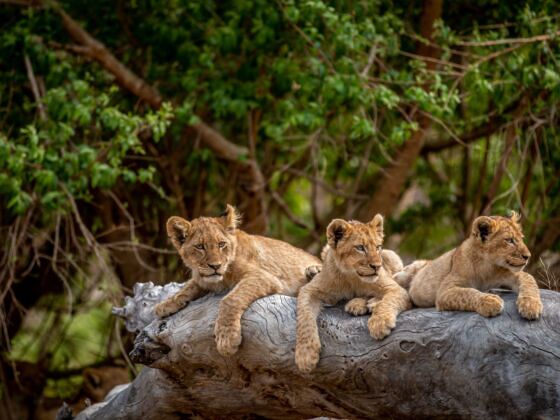
6 Things to Know Before Planning Your Kruger National Park Safari
K ruger National Park is probably the most popular tourist destination in South Africa. The sprawling national park is certainly the most popular safari destinations in South Africa, and potentially the world, thanks to its resident “Big Five” species. It’s a bucket-list destination for many wildlife photographers, but even a novice shutterbug is likely to get fantastic photos of herds of animals like giraffes, elephants, and other iconic species roaming the grassy landscape.
Established in 1898, Kruger National Park holds the distinction of being one of the oldest national parks or protected areas in Africa. Over the years, the park has weathered numerous challenges, from encroachment by humans to the devastating impacts of poaching to overtourism and a COVID-spurred lack of tourism — but it’s continued to thrive, as have the tens of thousands of animals in its care.
For travelers from the US, the park is extremely popular. That’s probably because how easy it is to reach. It’s not far from Johannesburg, which has many direct flights from cities in the US. It also has multiple entrances, hundreds of options for hotels and Kruger National Park safari packages, and a well-developed park and road infrastructure. Because of that, it can be surprisingly affordable, with local hotel starting at under $100 a night year-round.
Scroll down for the basics of planning a Kruger National Park safari, including when to go, the best affordable and luxury Kruger National Park lodges, how much to budget, and how to get there.
We hope you love the hotels and activities we recommend! Just so you know, Matador may collect a small commission from the links on this page if you decide to book a stay or book a tour through one of our affiliate partners. Listed prices are accurate as of the time of publication.
Where is Kruger National Park?
- Kruger National Park map
- Kruger weather and when to go
- Booking a Kruger National Park safari
- Wildlife in Kruger
- The best Kruger National Park lodges, starting at $55

Photo: Robert Wedderburn /Shutterstock
Kruger National Park is in northeastern South Africa, bordering Mozambique and Zimbabwe. It covers more than 7,523 square miles, making it larger than many US states — and many countries.
The park’s landscapes vary from dense forests and rugged mountains in the south to open savannas and arid grasslands further north. It’s the largest national park in South Africa, unless you count the combined lands of Kgalagadi Transfrontier Park, which straddles both South Africa and Botswana. Only a few other national parks on the continent are larger, such as Namibia’s otherworldly Namib-Naukluft National Park and Tanzania’s Selous Game Reserve, both of which are about 19,000 square miles.
Kruger National Park map and getting there
That’s why most people visiting the park fly to Kruger Mpumalanga International Airport, about 50 minutes from the park’s Numbi Gate. You can fly there from Zambia, Mozambique, and Zambia, as of July 2023. From either airport, you have several options for getting to the park: you can rent a car and drive yourself, ask your hotel to arrange an airport pickup, or book a travel package that includes your transportation from either airport. Or you can book a shuttle company like Kruger Transfers to take you from any area airport to your lodge or hotel of choice.
That’s right — any area airport. There are actually two other Kruger National Park airports: Hoedspruit, for the central park of the park, and Skukuza, if you’re heading to some of the private reserves that border the park. Both fly only to Cape Town and Johannesburg. Phalaborwa airport used to serve the northern park of the park, but it closed in 2020.
Kruger National Park weather

The rainy season can have its perks, too. Photo: JONATHAN PLEDGER /Shutterstock
Kruger National Park’s weather is pretty simple, with a dry season and a wet season.
Most people consider the dry season (May to September) as the best time to go to Kruger National Park. While there can be a bit of rain in May or September, most of this season is dry and mild, with daytime temps between the mid-60s and mid-70s Fahrenheit. Evenings can be in the 50s F, so wear an extra layer for early morning or night safaris. Another perk of the dry season is that guides usually have a good idea of where animals will be, since they tend to congregate around water sources. It can also be a bit easier to spot animals from afar as there’s less foliage for them to hide behind.
During the wet season, from October to April, it’s warmer and wetter, especially in January and February. It can be anywhere from the high 70s to the high 90 degrees Fahrenheit, and heavy rain is common. The bonus is that the park is extremely lush, spring brings a better chance for seeing baby animals, and it’s less crowded and usually cheaper to visit. And having fewer people nearby to scare off wildlife is always a plus. Do an online search for photos of busy roads in Kruger, and you may decide that the wet season is actually the best season.
Kruger National Park safaris
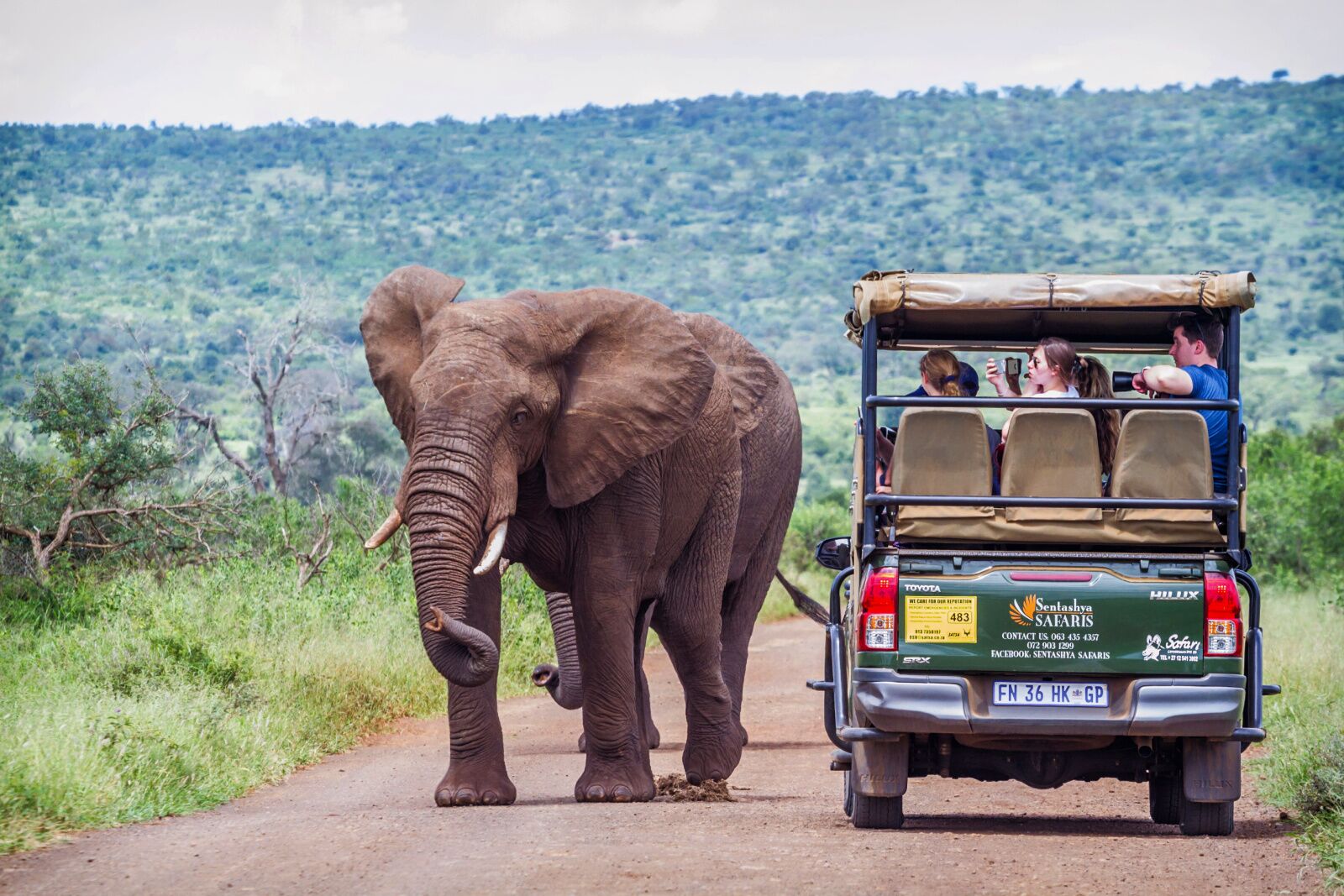
Photo: PACO COMO /Shutterstock
Nearly all visitors head to the park for the same reason: going on a Kruger National Park safari, the park’s most famous activity. Visitors have lots, and lots, and lots of options for booking a Kruger safari. In addition to game drives and walking safaris, you can book everything from hot-air balloon safaris to a guided Kruger National Park safari via mountain bike .
Option 1: Book directly with the park
The park offers several different types of safaris, called game drives, which you can book online directly through the park website . Your options include a 3-hour sunrise or sunset drive (r490, or about $25 USD), 2-hour night and late night drives (around $20), or a morning or river walking safari (r760, or about $40). The park doesn’t offer a bookable all-day drive, but you can contact the park in advance to ask about availability of safari cars if you’d like to arrange a private one. Hotels and lodges can also help arrange this.
You can also rent a car and drive yourself through the park as long as you pay the r460 ($24) per person entrance fee. Here’s a link to more than a dozen excellent self-drive routes in Kruger. Just remember that someone is going to have to drive, which is the least fun role when the rest of your party gets to search for wildlife.
Option 2: Book a safari through a tour operator
Because private vehicles are allowed into the park, you can also book a Kruger National Park safari through a private company. There are hundreds of options. Siyabona Africa offers private all-day game drives starting at r4.,653, or about $250 per vehicle (not per person). You can also opt for a shared full-day drive at r2,200 ($116) per person. And if you don’t mind an early start, Elephant Herd Tours offers a 5:30 AM start with hotel pickups before that for around $97 per person — which could be worth it to be among the first in the park that day.Alternatively, you could ask your lodge or hotel to arrange a private driver for you, if safaris aren’t already including in your lodging.
Option 3: Book a Kruger safari package
View this post on Instagram A post shared by andBeyond (@andbeyondtravel)
The most budget way to find a package will be to book one with a local operator when you arrive in either Jo-burg or one of the park’s gateway towns. You’ll find plenty of on-the-ground, local guiding companies willing to sell budget safari packages around $400-$500 for a two-night trip. For a mid-range trip you can book in advance online, expect to spend anywhere between $700 for a 4-day trip in homestays with a shared vehicle ( Elephant Herd Safaris ) to $1,200-ish for a five-day private tour with daily safaris through Amatungulu Tours. Luxury tours can range from a few thousand for a private multi-day tour to $10,000 or more with companies like Niarra Travel or andBeyond , where you’ll spend two or more weeks in the lap of luxury.
Your last option is to book a package through your hotel. Kruger National Park lodges like Jock Safari Lodge and Lion Sands Tinga Lodge include twice-daily game drives in the accommodation cost. More budget hotels, like Crocodile Kruger , are room-only, but the staff can assist with add-ons like daily safari drives.
Kruger National Park animals
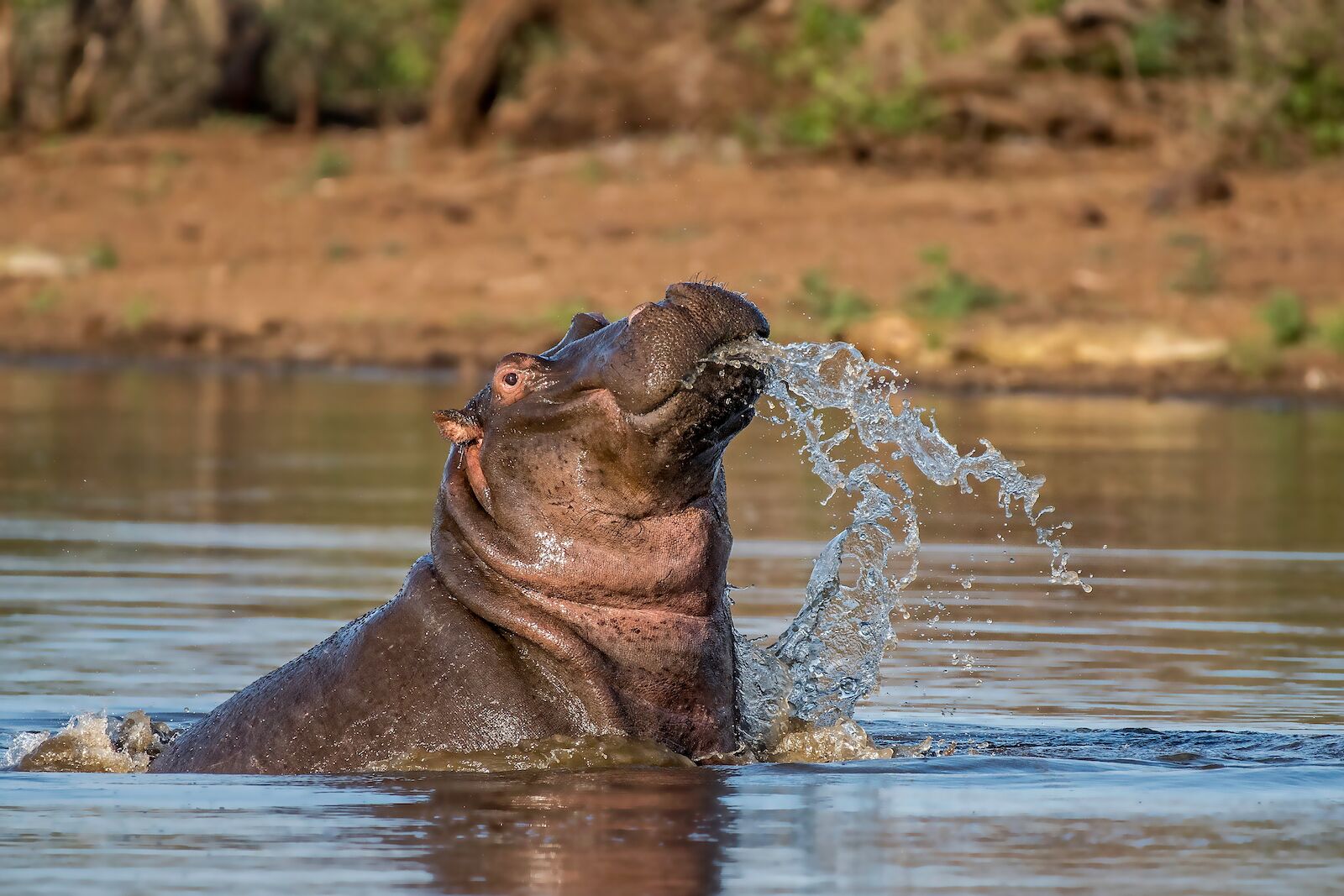
Kruger National Park offers the chance to see both giant herds of animals in sprawling grasslands, and tight interactions with single animals hidden in trees or hiding behind rocks. The park is so big that it offers pretty much every type of African wildlife sighting you can imagine, which is likely why it’s so popular with tourists.
The park is home to the famous “African Big Five”: lions, leopards, elephants, buffalos, and rhinos.
Lions are usually in the central part of the park in open savannas and on rocky ridgelines. Look around areas of the park like the Satara, Orpen, and Lower Sabie. For leopards, look on tree branches and in densely vegetated areas. Like lions, you’ll want to look for them around the Satara, Orpen, and Lower Sabie areas, plus around the Sand River.
The park has anywhere between 1,500 and 7,000 elephants; in fact, they’re starting to throw the food web out of balance. While that’s not a good thing, the large population size does mean you’re almost guaranteed to see them. It doesn’t matter so much where in the park you are, but they’re usually found around water sources or along roads in areas where they’re too big to move through the brush comfortably. Water buffalo are also more or less everywhere, often in the same area as elephants.

Photo: Ondrej Prosicky /Shutterstock // Photo: JMX Images /Shutterstock
The hardest of the Big Five to spot are rhinos. The park has both black and white rhinos, but not in large numbers; poaching has made both species extremely endangered. The southern region (between Skukuza and Lower Sabie) is a good place to start, but it requires a blend of luck and patience. Schedule a few extra days in the park if spotting rhinos is essential to you.
Aside from the Big Five, the park has species like cheetahs (also quite hard to spot), African wild dogs, giraffes (not so hard to spot), baboons, zebras, hippos, and hundreds of bird species. Kruger has one of the largest concentrations of large animal species in the world, so while you may not see the exact species you want to see on every drive, you’re bound to see something amazing.
Kruger National Park lodges

Photo: Expedia
Perhaps no safari destination in the world has more options for places to stay than Kruger National Park. The park is huge, and each entrance has dozens of hotels both inside and outside the park gates. Kruger is also one of the most popular safari destinations in the world, and hospitality companies have realized this. So there are hundreds of options, from five-star luxury hotels beloved by celebrities to budget stays owned by locals where you can sleep near the park for less than $80 a night.
However, most hotels falls somewhere in the middle — affordable stays with a touch of what’s best describes as open-air, safari chic: rooms with balconies or decks, outdoor communal spaces with firepits and couches, and amenities like infinity pools and stargazing showers.
When booking, be sure to check what’s included in your selected room or package. Some hotels include all food and drink, but not safaris; some include safaris, but nothing else; some include all your activities and your room; and some include only the room — but you can add on activities à la carte. And some offer all of the above. The details are usually front and center on the booking platforms, and if you book via Expedia, Booking.com, or similar, it will list what is included on the booking page.
Note that there’s only one downside to staying outside the park (aside from a short drive to get in every day): occasionally, the park will reach capacity just from guests staying in the park, and no outside guests will be allowed for that day. However, that’s very rare, and usually only happens once in a while on public holidays in the busy season. It’s possible, but not likely.
Crocodile Kruger Safari Lodge
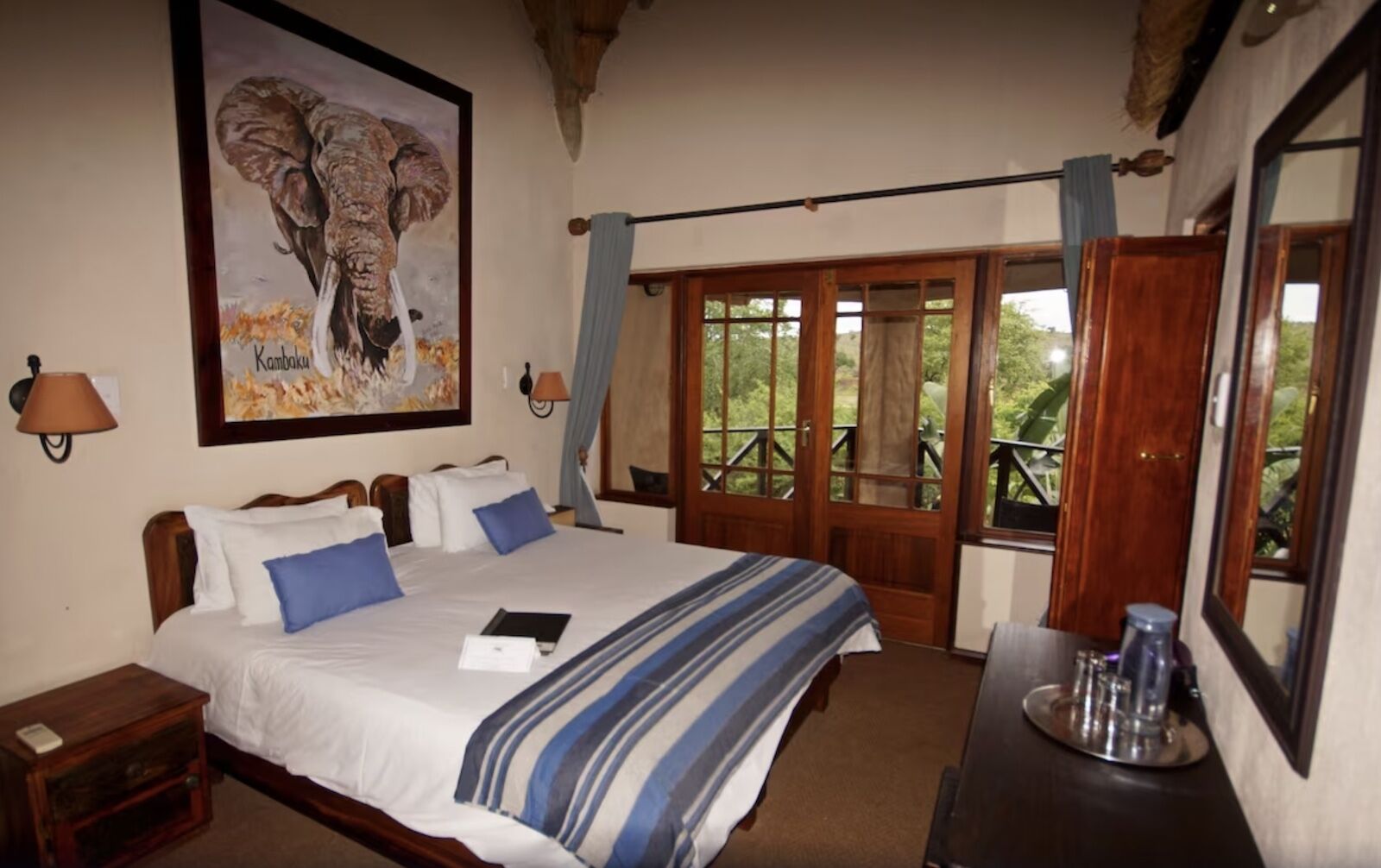
See more photos
Crocodile Kruger Safari Lodge is probably the best of affordable Kruger National Park lodges. It sits just outside the park on the aptly named Crocodile River, and rooms range from standard hotel rooms with patios overlooking the gardens and river to a full three-bedroom cottage with a private pool and kitchen. Rates start around $50 per person per night with breakfast, or $53 per person per night for full board — it’s a steal. Amenities include Wi-Fi, a pool, and an on-site bar. Activities are not included in the price, but the hotel can assist with booking anything you’d like to do in the area.
Lion Tree Top Lodge
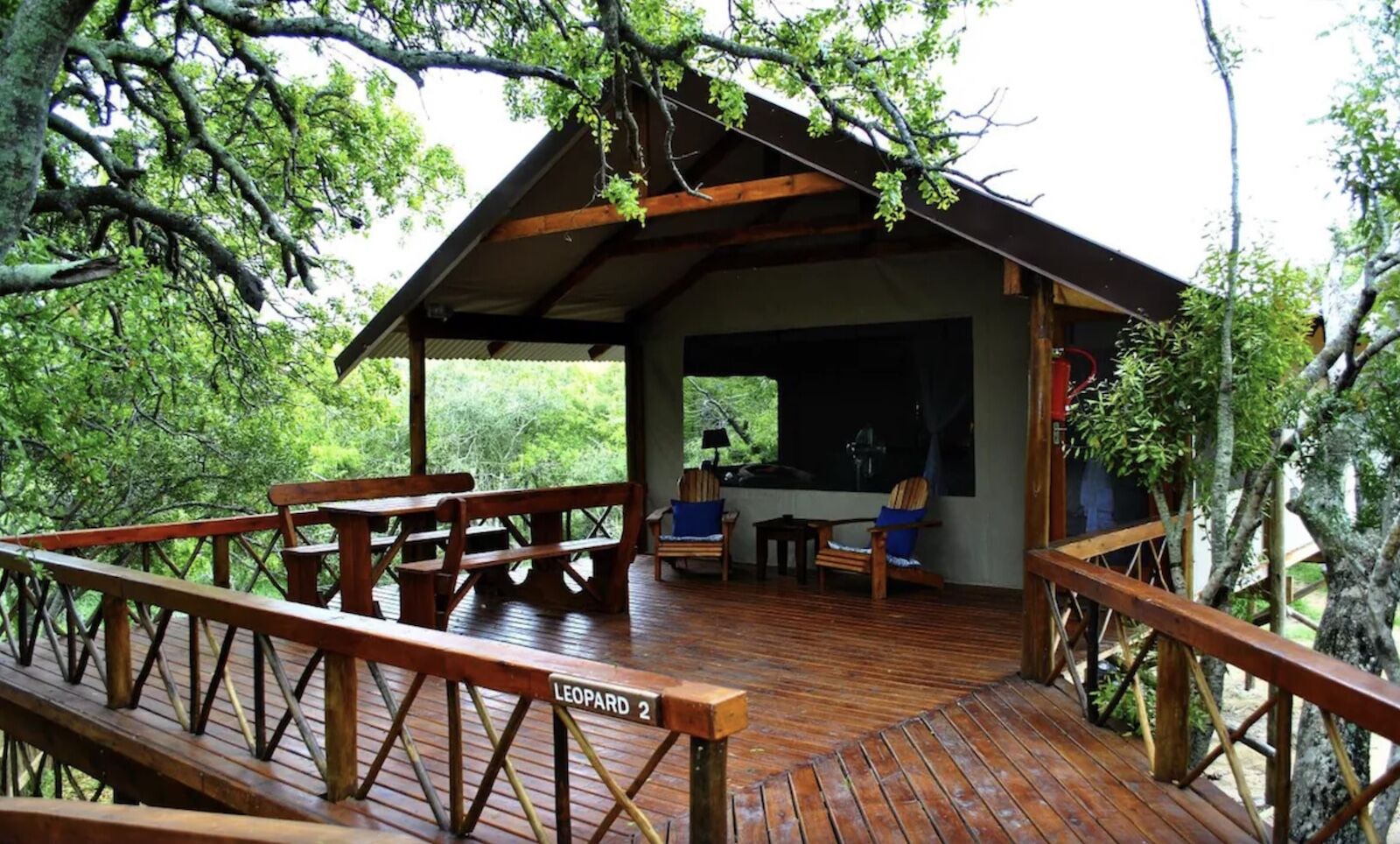
Lion Tree Top Lodge hits the sweet spot between posh boutique hotel and affordable Kruger National Park lodge. All “rooms” are actually fully furnished safari tents on raised platforms in the bush. Rooms have outdoor showers and relaxation decks, which means you may be able to spot wildlife from your room.
Safaris and other activities are not included in the fee, which gives you the freedom to book whatever local operator you’d like based in nearby Hoedspruit. You can also add on safaris when you book your room if you’d rather not deal with extra planning. Rooms start at a reasonable $106 per person, per night.
Jock Safari Lodge
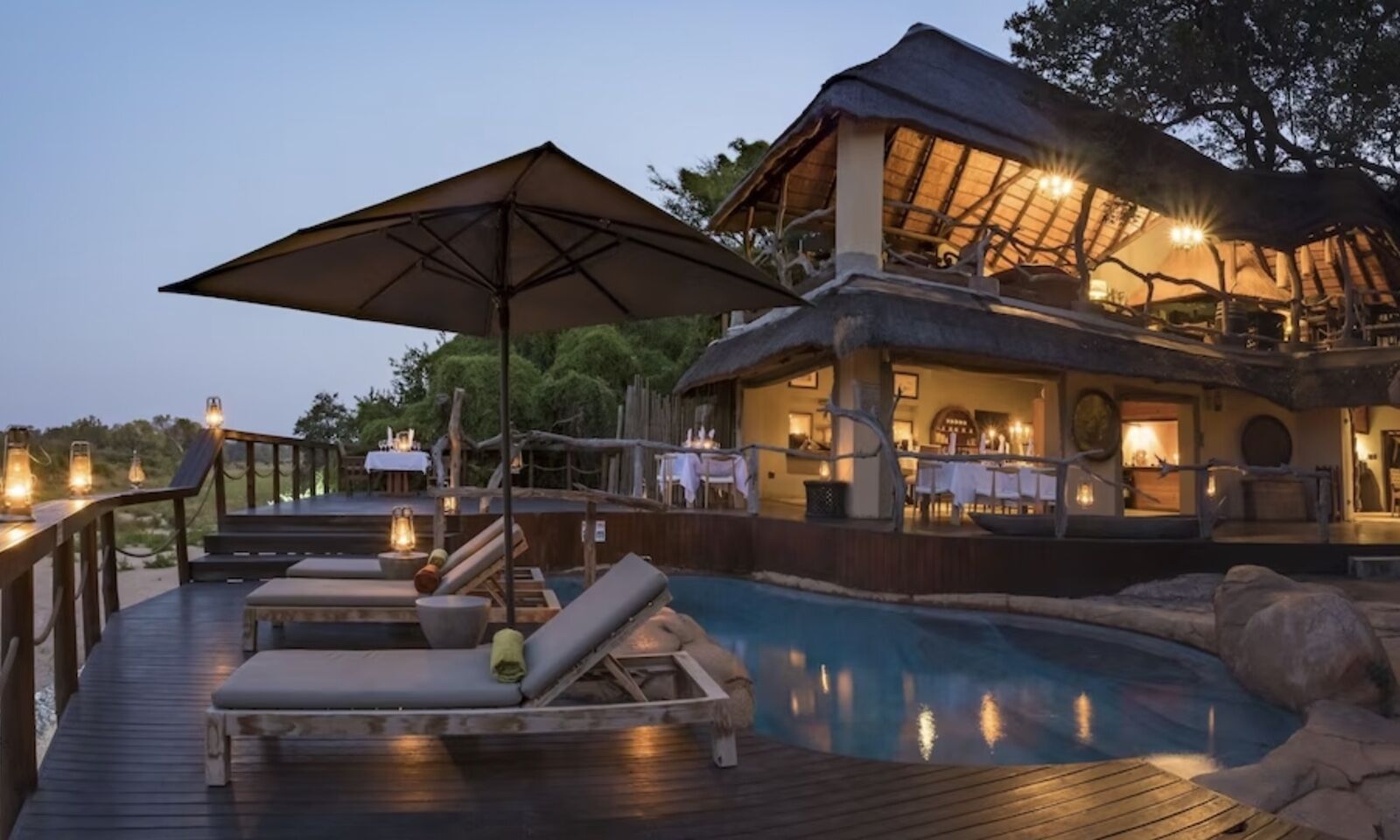
Jock Safari Lodge is inside Kruger National Park but owned and operated by a private company. It offers two places to stay: the Main Jock Lodge, or a private villa called Fitzpatrick’s at Jocks. The hotel sits on 600,000 acres just for hotel guests, which essentially amounts to private safari access within that space. Each safari-themed cabin has an outdoor daybed and private pool, and twice-a-day game drives are included in the cost of a stay. Rooms start around $887 a night — which seems pricey, but remember: it includes full days of game drives every day.
Hoyo Hoyo Safari Lodge

Hoyo Hoyo is another high-end Kruger National Park safari lodge, but it’s not quite as expensive as Jock Safari Lodge — rooms at Hoyo Hoyo start around $700 per night . It’s an all-inclusive Kruger resort (including twice-daily safaris and all food and drink) with a traditional style. Rooms have earthy decor with thatched roofs and natural materials, and the buildings sit naturally in a break in the tree-covered landscape.
More like this
Trending now, wildlife pictured in ways you’ve never seen before: the best photos from 2024’s world nature photography awards, beautiful and resilient: the best of the british wildlife photography awards 2024, the 9 best countries for safari vacations around the world, florida's manatee hotspots: where to see these gentle giants in the sunshine state, the best places to go whale watching in hawai'i, discover matador, adventure travel, train travel, national parks, beaches and islands, ski and snow.

How to Plan a Self-Drive Safari in Kruger National Park
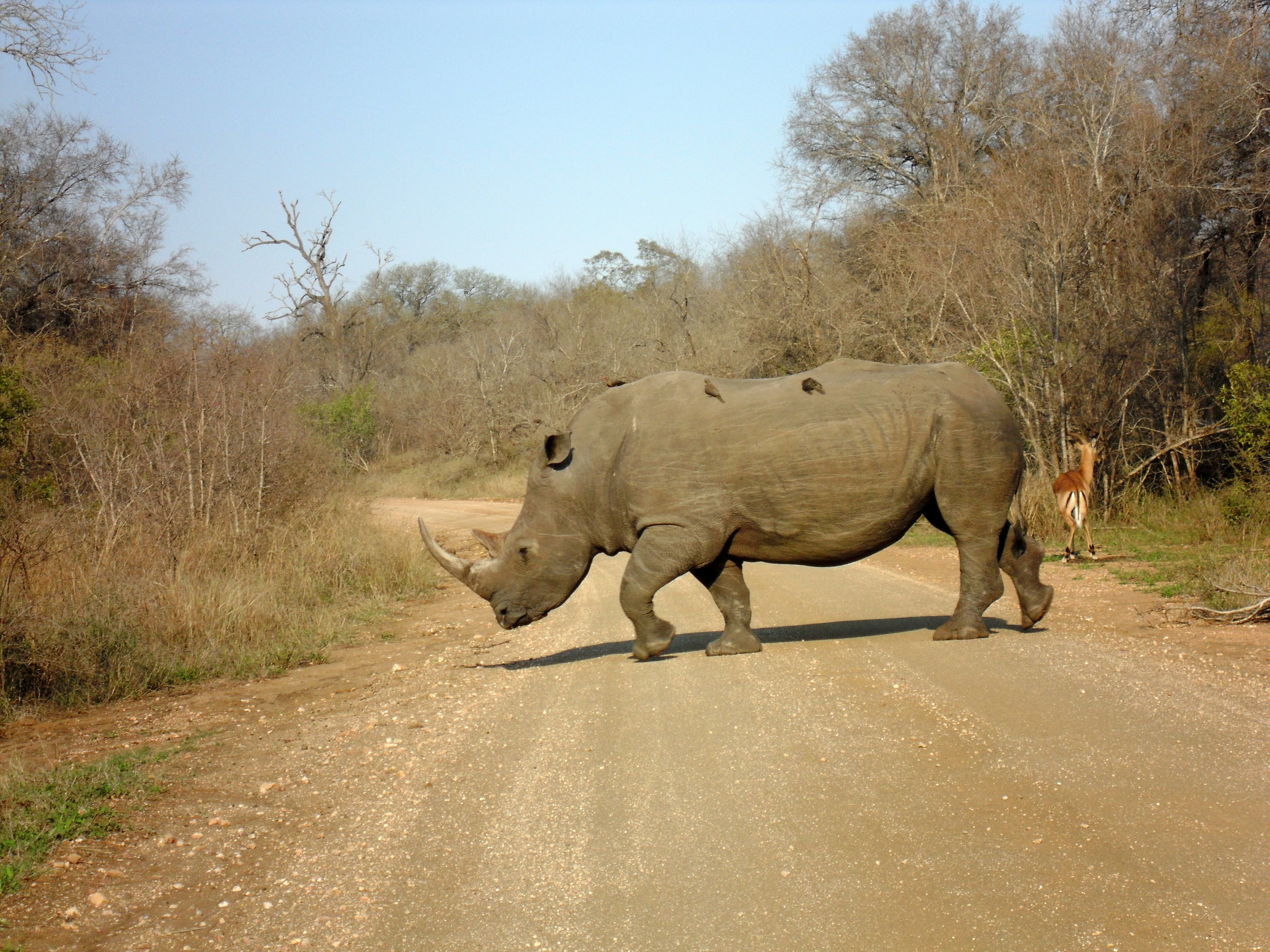
I’m also going to tell you that you shouldn’t book your safari with a tour operator and why it’s better to do it on your own. By following my advice on safari planning, hopefully you can avoid my mistakes.
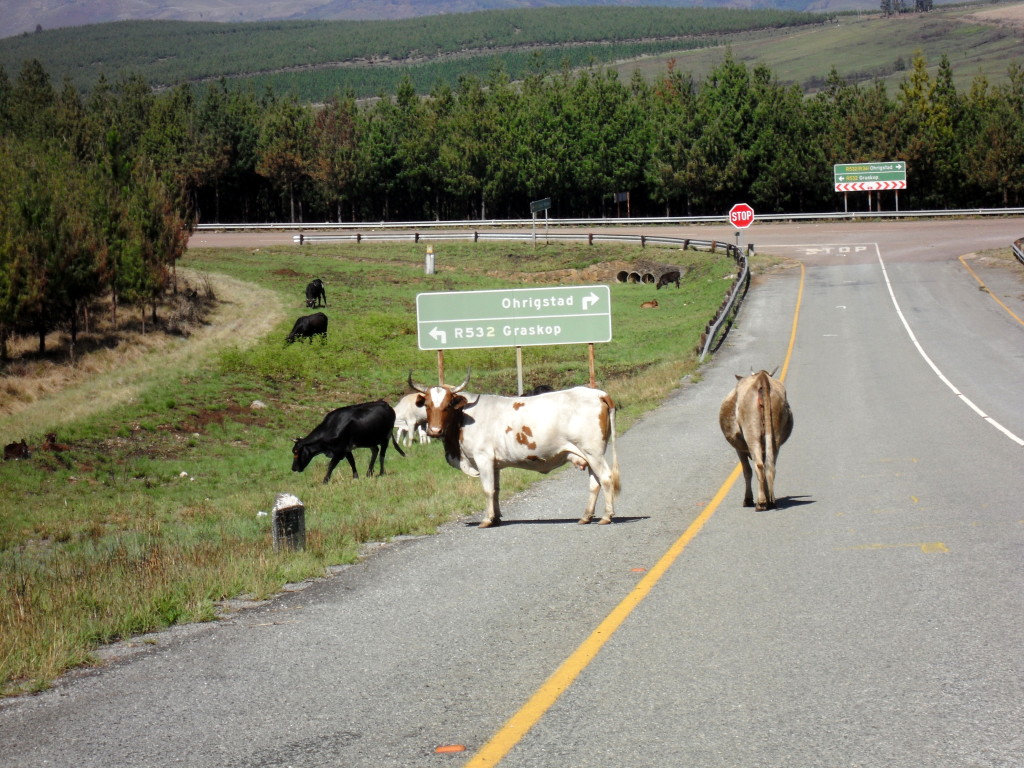
Getting to Kruger was already interesting…
Travel Agency vs Self-Drive Safari
Unless you can’t drive or don’t have anyone that can drive with you, simply rent a car and explore on your own. That way you can design your own route, stay and watch some animals as long as you want, and generally have more freedom. That’s how locals visit Kruger.
Renting a car in South Africa is very easy and affordable, so don’t worry about it.
I watched the arranged tour vehicles and I spoke to quite a lot of people who went on a group tour. Even though they were happy, I think I had a much better experience than they did.
I managed to see many more animals, and I got much closer to the cheetahs. The arranged tour vehicle left after 5 minutes and didn’t wait for the cats to come out of the bushes. Also, on a group safari you’ll spend an extensive amount of time on a campsite with no animals around and you can’t just decide to randomly go and see hippos at sunset.

Worth it, right?
Golden Rules for a Self-drive Safari in Kruger:
1. Plan your trip in advance.
Being spontaneous doesn’t really work at Kruger. Think about the dates you want to visit the park and book a car with a rental agency at least a few days before. My friend and I were stupid enough to think that we could just show up and they would have a car ready for us like in Europe.
Car rental agencies do get busy and we got extremely lucky that someone returned their car at the exact moment we walked into the office. One piece of advice for US citizens: you can’t rent a car in South Africa with an American driver’s license so get an international one before you head on holiday.
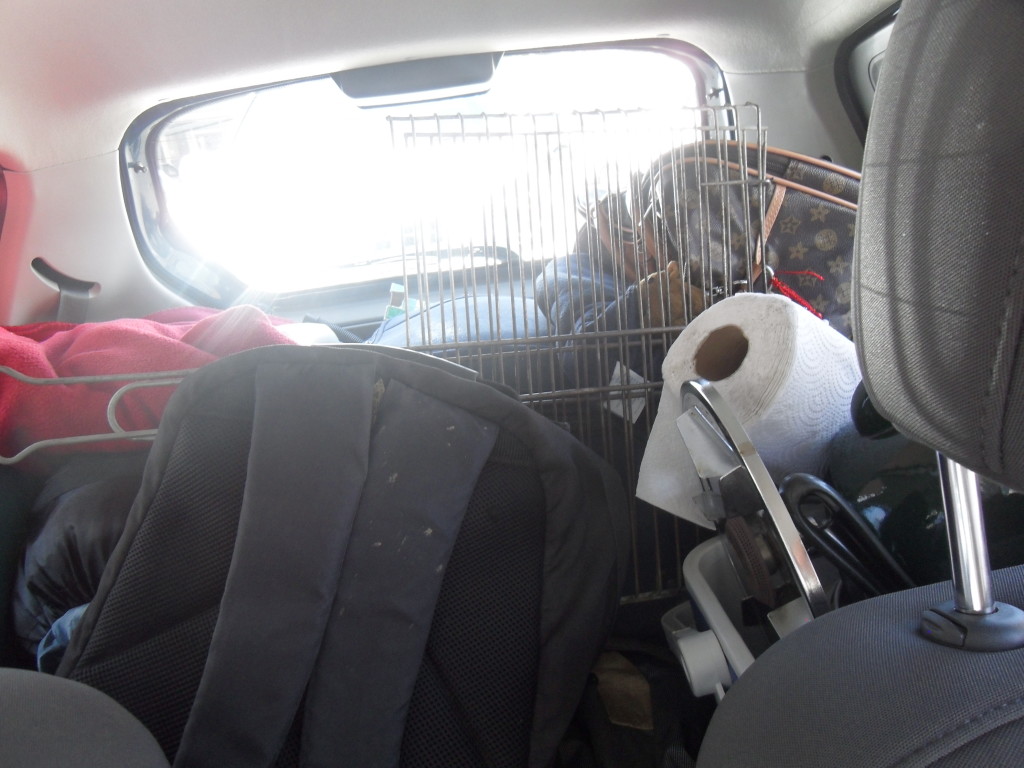
Our extremely packed Chevy 😉
2. Prepare your credit cards.
You can’t rent a car in South Africa without a credit card. Not only that, the car rental company will block a huge amount on your credit card the minute you rent a car. The amount varies depending of the desired length of the rent and despite the office telling us that the charge for the car and fuel would be returned in 3 days, it didn’t happen for 2 weeks. Not surprisingly, we had a lot of trouble trying to rent a car 3 times.
My advice: if you don’t have a huge limit on your credit card, rent a car and keep it. It’s better to pay for an extra day or two than not being able to rent another car again.
3. Book your accommodation beforehand
Kruger National Park is huge, it’s actually as big as the Netherlands, so you need to plan accordingly. On their website you can see the different camps and which animals can you see around these camps.
For our 3 day safari we decided to stay in 2 different camps – Crocodile Bridge and Lower Sabie. The latter one being considered the best main camp in the whole park. Both camps offer villas, rooms and campsites.
We actually didn’t like Lower Sabie as much as the Crocodile Bridge where we were able to see tons of monkeys and hyenas, right next to the fence as the camp is small and animals come very close. Lower Sabie, on the other hand, is huge with a lot of luxurious facilities, which are definitely nice, but they don’t give you the chance to have a nocturnal encounter with hyenas.
Again, avoid my mistake of not booking accommodation at least a month in advance (!). Because we didn’t book in time, our only option was to camp outdoors. Before that experience, I had never camped before (not counting my road trip with a camper van in New Zealand) and we didn’t even have a tent.
Luckily we managed to get a tent from some friends and this along with the provided facilities made our camping experience quite nice. There was a super nice bathroom and a kitchen so we had no problem with anything.

Dinner time!
4. Consider the time
The camps close at 7pm for the night and you have to make it back before it gets dark. Estimate the distance you need to do between camps and take into consideration that a lot of roads are tiny side roads. You won’t be able to drive faster than 20 miles an hour on them.
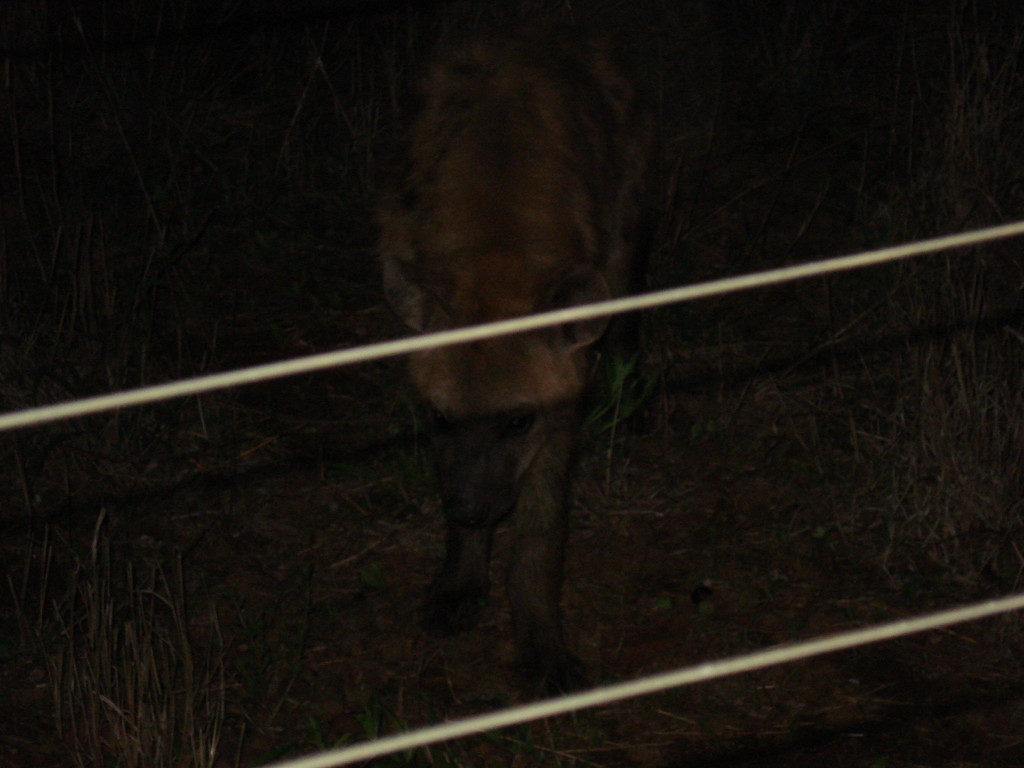
Night visitors!
5. Enjoy the Big 5!
I hope you’re going to be able to spot the Big 5! I only missed the lions (but I didn’t mind after my volunteering with lions experience ) and we even saw a wild dog and there are only a few of them in the entire park!

Practical Tips for Visiting Kruger National Park:
Book a morning walk tour
While at Lower Sabie we booked a walking tour in the morning. It was an exciting activity, as we couldn’t get out of our vehicle normally while driving around the park. We spotted some interesting footprints, a few giraffes, and even a rhino running our direction.
Thankfully, the wind changed and rhino stopped running towards us! Rhinos don’t see very well, but they smell everything around. So when the wind changed the rhino couldn’t smell us anymore.

Ready for the walking tour! White shoes = VERY bad idea 😉
Stay in one spot for a while if some animals have been spotted

What to Pack for a Safari in South Africa?
As you can see in my photos Africa is not a fashion show. Even if you often see Instagram photos of perfectly dressed women, believe me – you’ll be dirty, sweaty and it won’t last long. You might want to swap your dresses to elephants pants , but don’t forget to bring some bikinis if you want to get some sun.
Don’t forget to bring a pillow. You’ll be sitting in the car for a very long time and you might want to put your head down and rest for a bit.
Car adapter might be useful, especially if you’re planning on taking lots of photos – either with your phone or camera. You might want to charge your electronics on the road.
Lifestraw bottle – in case you don’t want to buy bottles water.
Read more tips on what to wear on an African safari.
Arrange your travel insurance
Don’t forget to arrange a health insure before heading for a safari. The easiest and the most reliable travel insurance is World Nomads Travel Insurance . Get it before your trip to avoid unnecessary troubles that might ruin your holidays!

Share this:
Notify me of new posts by email.
Saturday 24th of June 2023
Hi Anna, Great post and very helpful tips. For my solo trip, I am in the process of searching and booking accommodations within the camp(I know am already little late). I am planning to self drive and stay inside the Kruger NP for about 9 to 10 days at hopefully different rest camps.
Q1 : I do see prices listed for different rest and bush camps on the official KNP site but what is best way of booking them ?
Q2 : I will be there during core winter, wondering if you know how cold it gets during nights coz if I don't get accommodation I might have to self tent at camp sites. Any suggestions will be helpful..
Thank you !
Friday 14th of July 2023
@Anna Karsten,
Thank you ! I was able to book accommodation at the rest camps so won’t need the sleeping bag (I hope) but sure will take an extra blanket.
Anna Karsten
Monday 26th of June 2023
My first trip there was in August so winter as well and it wasn't horrible. Bring a thick sweater and sleeping bag, but it's not crazy cold. Official site is the best way to book yes.
Monday 7th of October 2019
love your blog, helks a lot in our SA road trip planning :) We're going in March and are taking a trip to Kruger as well, a quick question - did you take some anti-mallaria pills or just use a strong repellent?
thanks in advance!
I've never taken any anti-malaria pills in SA, but mosquito repellent is a must :D
Saturday 3rd of August 2019
FYI - not sure when the regulations changed, but South Africa accepts US driver's licenses, so no need for US citizens to get an international license for car rentals there.
Tuesday 7th of November 2017
Do you think January is a good month for visiting safari?
Wednesday 8th of November 2017
Totally. January is South African summer, so it'll be warm and nice.
Sunday 28th of May 2017
Thanks for the post - very informative! We'll be staying in Lower Sabie this August. Two quick questions:
1) What's the car fuel situation within the park? Is it possible to purchase car fuel at the rest camp? We'll be there for 4 days, so assume a rental car's gas tank won't last us the entire time.
2) Which car agency in your experience requires international driver permits from those who have U.S. driver licenses? We read separately online that South Africa technically recognizes U.S. driver licenses, but that some car agencies may further impose their own conditions (i.e. international driver permit)
Hi Jay, 1) Lower Sabie has a gas station. 2) From my experience all of them did. BUT things might have changed as I was there a few years ago. I'd just email some to be sure.

Travel Buddies Lifestyle
Luxury Travel Blog

Kruger National Park: How to plan a trip to Kruger?
- August 21, 2022
What to know before planning a trip to Kruger
Table of Contents
The Kruger National Park is one of the most popular attractions in the world, with over a million visitors per year.
Although it is a year-round destination, it has peak seasons which mostly coincide with the South African public school holidays which are between June and July and December.
Easter is the buzziest (and most unpleasant) time to be in Kruger. Massive car pile-ups often occur at sightings causing road obstructions for long periods.

What is the weather like in the Kruger National Park?
The Kruger Park is an all-year-round destination, each season presenting its fascination. It has a hot-subtropical climate with an average year-round temperature of around 25 degrees.
The weather in winter in Kruger
The dry winter months, June to August, are particularly popular with local visitors because of the local school holidays. During the winter, the bush veld is ‘flatter’ and more open, which increases visibility, particularly in the extended grassy areas of the south. The waterholes, dams and riverbeds become the wildlife’s meeting points, making it more likely for you to spot game early morning or late afternoon. The average temperatures in winter range from a minimum of 9 degrees to a maximum of 28 degrees in August.
The weather in summer in Kruger
Even though the summer (December to February) is rainy, it brings along an abundance of newborn wildlife, waterholes filled to the brim and lush bushveld scenery. The birdlife is also more spectacular as many migrant birds arrive during summer.
It must be noted that the summer gets extremely hot, particularly in the north of the park. January and February can easily reach maximum temperatures of 34 degrees or higher.

Key points to consider when visiting the Kruger National Park:
- There is no need to have an SUV (sports utility vehicle) or 4X4 to drive on any of Kruger’s roads.
- The S44 is the most popular gravel road in Kruger.
- Remember, there is limited to no signal on the roads between camps. However, most camps have cell phone reception.
- It is vital to buy a map at an entrance gates which indicates all the gravel and tar roads, the camps, viewpoints, and picnic sites.
- The speed limit is 50 km on tar roads and 40 km on gravel roads. There is strict law enforcement (with hefty fines) in the park through temporary speed cameras.
- Park and camp gates open and close at specific times depending on the time of the year (see table below).
- There are gas stations in all the rest camps (Lower Sabie’s is temporarily out of service after lightning caused a fire).
- Driving in South Africa, the park is on the left side of the road.
- All the main rest camps have convenience stores and toilets.
- Picnic spots don’t sell barbeque meat (“braaivleis”) or only limited fresh produce.
- All picnic spots have toilets.
- Pack suitable clothes for the prevailing temperatures during your trip. Remember, in winter, the morning and evening can get chilly.
- When consulting your Kruger map or route indications, remember H is the abbreviation for the main tar roads, and S is the abbreviation for the gravel roads.
- We don’t take Malaria medication in the south of the park or in winter. We recommend it for the north.
- Internet speed is extremely slow in the park. Only Skukuza and Pretoriuskop restaurants have free Wi-Fi.
What to be careful of when visiting the Kruger National Park?
Picnic spots are unfenced but very safe if you don’t wander off into the bush. Be highly cautious of the monkeys and baboons at the picnic spots and rest camps. Never feed them! They can get extremely aggressive when they want your food. Hide your food from them. The Punda Maria rest camp has a big problem with the monkeys.
Don’t leave anything (not just food) unattended on your veranda.
Monkeys and baboons are curious and will destroy your belongings. Ensure your windows are closed when approaching them on the road, as they can (and will) attempt to jump into the car.

What are the most important rules of the Kruger National Park?
- You may not leave your vehicle unless indicated at certain picnic spots and a few selected viewpoints.
- There are strict gate and camp opening and closing times (hefty fines are imposed for reaching camp gates after closing).
- There are no pets allowed in the park.
- Children under 12 are not allowed on game drives.
- Day visitors may not bring in or buy alcohol in the park (overnight visitors must produce their permit in camp shops to buy alcohol).
What are the gate opening and closing times of the Kruger National Park?

How much does it cost to enter the Kruger National Park?
The daily conservation fees are as follows (last updated 20/02/2024) : *Valid until 31/10/2024
Foreigners: R486 per adult and R243 per child (under 12 years of age) per day .
South Africans: R122 per adult and 60 per child per day .
There are two ways to pay the entry fees (conservation fees).
You can either pay daily conservation fees or buy a Wildcard.
NOTE, the conservation fees are in addition to the accommodation costs for the camps.
Wildcard fees 2024
The all parks Cluster fees for 2024 are:
- Individual R835
- Couple: R1375
- Family 1680
The SANParks Cluster fees for 2024 are:
- Individual R805
- Couple: R1300
- Family R1560
The INTERNATIONAL All Parks fees for 2024 are:
- Individual R3780
- Couple: R5905
- Family R7064

What are the benefits of a wildcard?
Wildcard membership gives you one year’s unlimited access to the partner parks, reserves and resorts, depending on the type of cluster you choose.
Membership is available for single couples or families.
Foreign visitors can buy an International Wildcard membership. The WILDCARD often works out the cheapest compared to conservation fees! Internationals may only buy the ALL PARKS cluster, while South African residents can buy in the SANParks cluster. Let’s look at some practical examples:
Case 1: * Based on 2023 Fees
If you’re a foreigner visiting the park for seven days with a partner, daily conservation fees will cost you R 6 440 (315€) for seven days. Whereas if you buy a Wildcard for ALL Parks Cluster, it will give you access to 80+ parks and reserves around Southern Africa, including Kruger and other South African parks, for a year from the day of purchase. The Wildcard will cost you R 5585 (273€).
If you’re a foreigner visiting the park for five days with your family (2 adults and two kids), daily conservation fees will cost you R 6 900 (338 €) for five days. Whereas, buying a Wildcard for the SANParks Cluster that will give you access to 21 National Parks for a year from the day of purchase will cost you R 6 685.00 (327€).
If you’re a local visiting the park for four days with your partner, daily conservation fees will cost you R 920 for four days. If you buy a Wildcard for the SANParks Cluster that will give you access to 21 National Parks for a year from the day of purchase, this will cost you R 1 230.
If you’re a local visiting the park for four days with your family (2 adults and two kids), daily conservation fees will cost you R 1374 for four days. Whereas if you buy a Wildcard for the SANParks Cluster that will give you access to 21 National Parks for a year from the day of purchase, this will cost you R 1 475.
Cases based on 2023 fees.
Where can I buy a Wildcard?
You can buy a wildcard directly from the SANParks website.

Can you leave your car in the Kruger National Park?
No, you cannot leave your car while driving inside the park. However, there are a few marked viewpoints on the Kruger map where you may leave your vehicle. This is at spots where it is deemed relatively safe for you to do so.
You can leave your car at picnic spots even though they are not fenced in. Most of the picnic spots have magnificent views over the bush or rivers.
If you’re lucky, you can do game viewing while sipping a refreshing drink and enjoying the hot African sun. You can hire a ‘skottle’ gas braai at the picnic spots for as little as R 26. BONUS! You don’t need to wash it when you return it.
Do you have any other questions? Please comment in the section below, and we will gladly answer them.

Related articles
- Is it worth visiting the Kruger National Park
- How to do a self-drive from Johannesburg to Kruger?
- Where to stay in the Kruger National Park?
Leave A Comment Cancel reply
Your email address will not be published. Required fields are marked *
Save my name, email, and website in this browser for the next time I comment.
Notify me of follow-up comments by email.
Notify me of new posts by email.
Check here to Subscribe to notifications for new posts
How useful was this article to you?
Click on a star to rate it!
Average rating 5 / 5. Vote count: 3
Be the first to rate this post.
Share this:
About author.
As a freelance travel journalist and seasoned business professional, Bernie van der Linde has made it her mission to explore the world's most unique and luxurious destinations. With a PhD in business studies from the University of South Africa, Bernie has channeled her passion for travel, web design, and writing into founding the travel blog Travel Buddies Lifestyle. Here, she shares her adventures alongside her best friend and travel business partner, Petra, who seamlessly translate and compile articles relevant to their German and European audience.
Bernie's love for exploring new places has taken her to some of the world's most exotic locations. Whether gazing out at the glittering skyline of Dubai or enjoying the tranquillity of a private beach in Mauritius, Bernie is always looking for unique experiences that will inspire and entice her readers to travel.
Through her thoughtful writing and unparalleled passion for travel, Bernie van der Linde has made a name for herself in the world of travel writing. Her knack for uncovering hidden gems and sharing her experiences with her readers has made her a trusted source of inspiration for those looking to explore the world in style.

What to do in Langebaan

What to do in Johannesburg over a weekend?

Best time to visit South Africa

Sediba Luxury Safari Lodge: The Best Big 5 Game Lodge
Discover more from travel buddies lifestyle.
Subscribe now to keep reading and get access to the full archive.
Type your email…
Continue reading
Planning a Trip to the Kruger National Park

The Kruger National Park is one of Africa’s most beloved destinations by both local and international visitors. The Park is known as being a year-round destination for travellers, as the changing seasons bring different-coloured vegetation, different cycles in animal life, and different visual and experiential treasures to spoil those who step foot into this wild world. So no matter what time of the year one chooses to visit, the sights and sounds will astonish!
Choose your experience
Every season has its highlights. If you enjoy birdlife and snapping photographs of gorgeous, lush landscapes – as well as some incredibly beautiful sunsets and thunderstorms – then the Kruger’s summer months are the best time to visit. If game viewing is your experience of choice, then winter is the time to go.
Autumn brings cooler temperatures, along with sightings of impala, wildebeest and waterhog; while winter, with its sparse vegetation, makes it much easier to spot game – including the world-renowned migrations from the Park to the warmer climates of Mozambique and Zimbabwe. Spring offers a different way to see the Kruger National Park’s wildlife, with high concentrations of animals around water sources before the rainy summer seasons kicks in again.
Summer Season in the Kruger National Park
Summer is great for: birdwatching, photographic safaris, summer babies
The summer season at the Park is known as the Green Season for good reason. Summer is rainy season for this part of South Africa, and the months of November through March see the Park blooming with health, and flush with game. “The challenge with game viewing when the Park is dense with growth is that it makes it more difficult to spot the wildlife,” says Anton Gillis, CEO of Kruger Gate Hotel , a luxury lodge-style hotel at the Kruger National Park. “This is when choosing to do a guided safari in a dedicated safari vehicle can really add to your wildlife sightings, because the added height allows you to see more. November and December are also when you’ll be able to see the summer-born babies. The lush landscape is also a big drawcard for birdlife that fly in for the warmer months. The Kruger National Park is home to over 500 species of birds, and in the summer months you may spot a Woodlands Kingfisher, Red-Chested Cuckoo, Wahlberg’s Eagle, or the Amur Falcon.”
December is peak holiday season in South Africa, so if you want to enjoy a fabulous getaway and you’re keen on a longer escape, consider mixing your safari and beach destinations. “A couple of days along the KwaZulu Natal east coast on the magnificent beaches can be followed by a relaxing bush weekend, mixing game viewing and some spa R&R to really maximise your daily-grind detox,” suggests Gillis. “Kruger Gate Hotel is the ideal spot to get a balance of adrenaline-pumping game spotting and soul-soothing massage treatments, along with starlit dinners and – what we all need at the end of a busy year – peace and quiet in the nurturing embrace of nature.”
The rainy season peaks in February, making it warm and humid (also the breeding season for Waterbuck) and starts to taper off in March. While the flourishing bush can make it tough to spot elusive game, experienced guides are excellent at tracking, which can be a fun and exciting part of your safari. March is also the breeding season for kudu and buffalo.
Note: the rainy season sees more mosquitoes in the area, increasing the potential for malaria. It’s a good idea to get malaria-prevention medication before visiting in this season and to travel with mosquito repellents.
Keep your cool while getting up close and personal
Winter is great for: elephant migration, Big Cat spotting
As May starts to paint the landscape with the golds and auburns of autumn, the elephants start making their way from Zimbabwe and Mozambique to the warmer climes of the northern Kruger National Park. This is one of the most incredible sights to see – herds of these gentle giants swaying their way slowly to their final destination.
“From here we move into the coldest month in the Kruger Park – June,” says Gillis. “But very chilly nights make way for days that are still really warm, despite it being winter. So winter travel to the Park is really quite fantastic! This is when you’ll start to see the Big Cats emerge, including the very shy leopard.”
With winter well set in, and foliage significantly thinned out, catching sight of wildlife becomes much easier. “Water also becomes more scarce, so animals converge at natural water sources and watering holes, which are prime opportunities to get some magnificent sightings and photographs,” says Gillis. “There are also fewer pesky mosquitoes!”
Springtime safaris
Spring is great for: wildlife viewing at watering holes, fewer people
Spring is a lovely season to visit the Kruger National Park and go on safari. September and early October still see wildlife clustered around watering holes, but the rains starting to fall in late October are a catalyst for growth, with everything in the bush seeming to come to life after sleeping the winter months away.
These months also fall in low season at the Park, so roads will be less busy and camps and lodges less full, increasing the levels of privacy.
Your Kruger Park quick guide
Here is some additional useful information:
- Peak seasons : around South African school holidays – April, June and December
- For wildlife spotting: travel in winter and spring
- For birdwatching: go in the rainy months of November through until February
- For all night safaris (especially in winter): pack something warm as the nights can get very chilly
- January to March: 21°C – 32°C
- April: 16°C – 29°C
- May to June: 9°C – 27°C
- July to September: 10°C – 27°C
- October: 16°C – 30°C
- November and December: 19°C – 31°C
- Best weather : April to May and September to October – but weather is pleasant all year round

Remember Me
Lost Password
Please enter your username or email address. You will receive a link to create a new password via email.

View Map | +27 13 735 5671
- November 21, 2022
The Kruger National Park is one of Africa’s most beloved destinations, for its tremendous wildlife, birdlife, and beautiful landscapes.

The Park is known as being a year-round destination for travellers, as the changing seasons bring different-coloured vegetation, different cycles in animal life, showcase the different birds of the Kruger National Park and highlight the different visual and experiential treasures that guests can enjoy no matter what time of the year they choose to visit.
For international visitors, there’s the added attractiveness of the favourable currency conversions, with the Rand being weaker than the US Dollar, British Pound and the Euro. This means that travelling to and staying at the Kruger National Park is incredibly affordable for visitors coming in from outside of South Africa – even luxury accommodation in and around the Kruger National Park has a pocket-friendly price-tag.
Choose your experience
Every season has its highlights and brings its own unique Kruger Park sightings. If you enjoy birdlife and snapping photographs of gorgeous, lush landscapes – as well as some incredibly beautiful sunsets and thunderstorms – then the Kruger’s summer months are the best time to visit. If game viewing is your experience of choice, then winter is the time to go.
Autumn brings cooler temperatures, along with sightings of impala, wildebeest and waterhog; while winter, with its sparse vegetation, makes it much easier to spot game – including the world-renowned migrations from the Park to the warmer climates of Mozambique and Zimbabwe. Spring offers a different way to see the Kruger National Park’s animals, with high concentrations of animals around water sources before the rainy summer seasons kicks in again.
Summer season in the Kruger National Park
Great for: birdwatching, photographic safaris, summer babies
The summer season at the Park is known as the Green Season for good reason. Summer is SA’s rainy season for this part of the country, and the months of November through til March see the Park blooming with health and flush with game.
The challenge with game viewing when the Park is dense with growth is that it makes it more difficult to spot the wildlife. This is when you can ask your Kruger National Park accommodation about doing a guided safari in a dedicated safari vehicle. This can really add to your wildlife sightings as the added height allows you to see more. November and December are also when you’ll be able to see the summer-born babies. The lush landscape is also a big drawcard for birdlife that fly in for the warmer months. The Kruger National Park is home to over 500 species of birds, and in the summer months you may spot a Woodlands Kingfisher, Red-Chested Cuckoo, Wahlberg’s Eagle, or the Amur Falcon.
The rainy season peaks in February, making it warm and humid – and the breeding season for Waterbuck – starting to taper off in March. While the flourishing bush can make it tough to spot elusive game, experienced guides are excellent at tracking, which can be a fun and exciting part of your safari. March is also the breeding season for kudu and buffalo.
Note: the rainy season sees more mosquitoes in the area, increasing the potential for malaria. For this reason it’s recommended that you consult your doctor ahead of your visit to the area and remember to bring along mosquito repellents.
Keep your cool while getting up close and personal
Great for: elephant migration, Big Cat spotting
As May starts to paint the landscape with the golds and auburns of autumn, the elephants start making their way from Zimbabwe and Mozambique to the warmer climes of the northern Kruger National Park. This is one of the most incredible sights to see – herds of these gentle giants swaying their way slowly to their final destination.
From here we move into the coldest month in the Kruger Park – June. But very chilly nights make way for days that are still really warm, despite it being winter. So winter travel to the Park is really quite fantastic! This is when you’ll start to see the Big Cats emerge, including the very shy leopard.
With winter well set in at the Kruger National Park, and foliage significantly thinned out, animal sightings become much easier. Water also becomes more scarce, so animals converge at natural water sources and watering holes, which are prime opportunities to get some magnificent sightings and photographs. And, there are also fewer pesky mosquitoes!
Springtime safaris
Great for: wildlife viewing at watering holes, fewer people
Spring is a lovely season to visit the Kruger National Park and go on safari. September and early October still see wildlife clustered around watering holes, but the rains starting to fall in late October are a catalyst for growth, with everything in the bush seeming to come to life after sleeping the winter months away.
These months also fall in low season at the Park, so roads will be less busy and camps and lodges less full, increasing the levels of privacy.
Your Kruger Park quick guide
Here is some additional useful information:
- Peak seasons : around South African school holidays – April, June and December
- For wildlife spotting : travel in winter and spring
- For birdwatching : go in the rainy months of November through until February
- For all night safaris (especially in winter) : pack something warm as the nights can get very chilly
- January to March: 21°C – 32°C
- April: 16°C – 29°C
- May to June: 9°C – 27°C
- July to September: 10°C – 27°C
- October: 16°C – 30°C
- November and December: 19°C – 31°C
- Best weather : April to May and September to October – but weather is pleasant all year round

Planning a Trip to the Kruger National Park
In this post we cover all of the most asked questions when planning a visit to the Kruger National Park.
When is the best time to visit the Kruger National Park?
How many days should you spend at kruger, how to get to kruger, which area of kruger should you visit , kruger park entrance times, kruger park entrance fees.
- R540 per individual
- R880 per couple
- R1055 per family (up to 7 people)
What to expect while driving inside Kruger
What do i need to bring to the kruger.
- Petrol : There are petrol stations available at every rest camps.
- Food : You can find food/snacks and drinks to buy at the park shops.
- ATM/Banks : These are only found at the larger rest camps
- Picnic sites : There are a couple of picnic sites around the park that you can stop to eat your already prepared meal, while others like Tshokwane and Afsaal also have restaurant available.
- Restaurants : There are pretty nice restaurants in many of the camps that offer sit down or takeaway meals.
Best car for driving through Kruger
Where to stay in or around kruger.
- Rest camps inside the park ran by Sanparks
- Private, and expensive, lodges inside the park
- Hotels near the gates or outside the park
Leave a Reply Cancel reply
Your email address will not be published. Required fields are marked *
Save my name, email, and website in this browser for the next time I comment.
This site uses Akismet to reduce spam. Learn how your comment data is processed .
- Destinations
- Travel Tips
- Travel With Us
- Paid Travel Internship
- TTIFridays (Community Events)
- SG Travel Insider (Telegram Grp)

- South Africa
How to plan a Kruger National Park budget safari
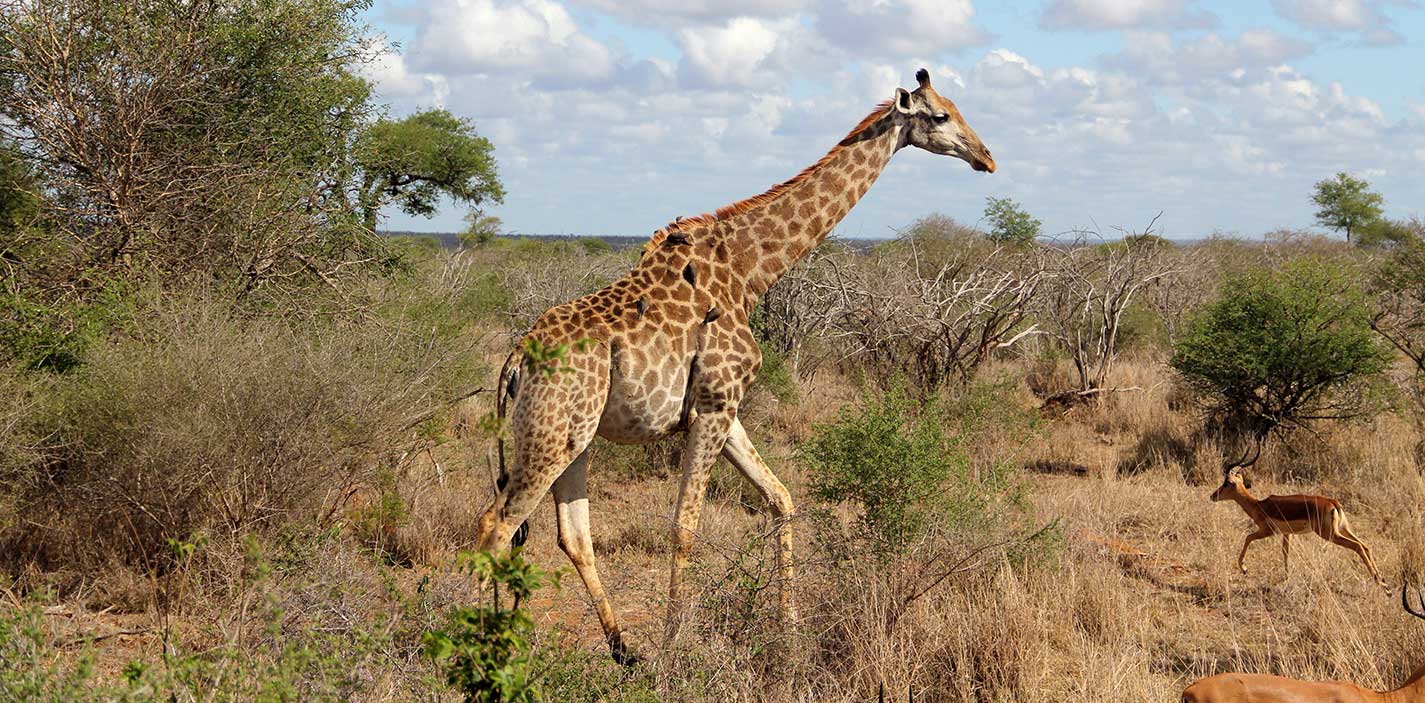
Going on safari in Africa was a childhood dream for me. I’d always imagined it as a honeymoon destination, the kind of prohibitively expensive experience that you save up your whole life for.
But it isn’t! And that’s the whole point of this post. After my partner and I took a trip to South Africa in November last year, so many people asked me how much the safari bit cost, and I was pleased to report that the cost is very manageable for an amazing bushveld experience.
I hope my experience inspires you to go, and makes your safari planning a little easier. Here’s how to plan a Kruger National Park budget safari.
Kruger National Park
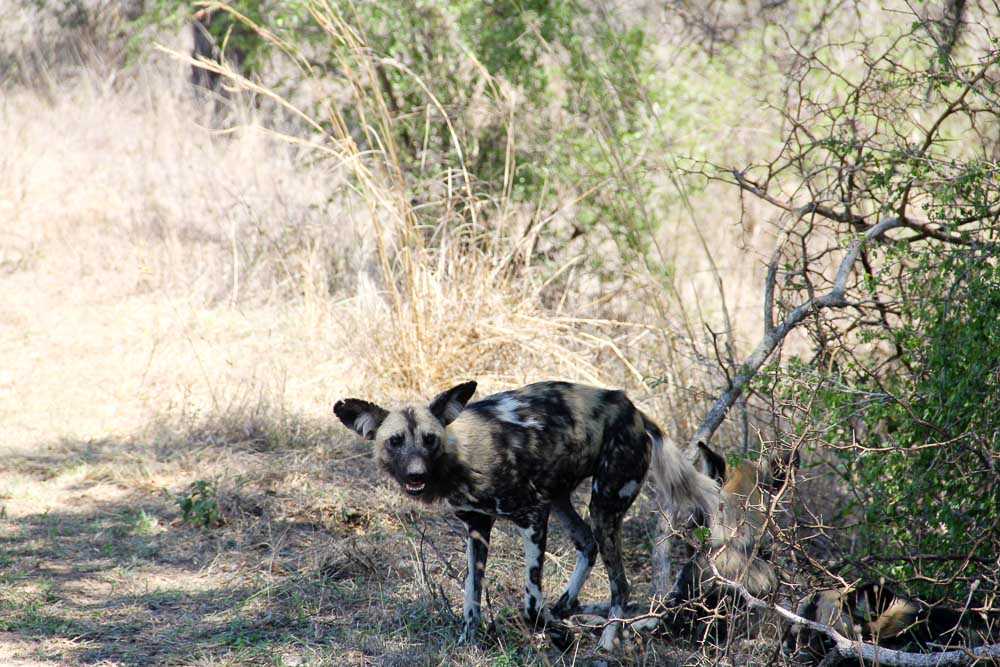
The first tourists visited Kruger in 1927, and today the park is probably South Africa’s best-known and most well established safari destination. At 19,485 square kilometres, it is one of the largest game reserves in Africa and spans two South African provinces, Mpumalanga and Limpopo. Kruger shares borders with both Mozambique and Zimbabwe.
Get there via road or flight – it is a four to six hour drive from South African capital Johannesburg, depending on which of the park’s gates you enter. If you book a safari tour from companies in Johannesburg, they will arrange the return land transport to and from your accommodation.
Flights to and from Johannesburg take less than an hour, and most people go through Kruger Mpumalanga International Airport in Nelspruit.
Package tour or self-drive?
There are two options: Book a package tour, or rent a car and drive yourself around Kruger. If it is your first time on safari, I highly recommend the former. But here’s what you can expect from both:
Tours can start from either Johannesburg or small towns such as Nelspruit, Graskop, Hazyview and Whiteriver, which are all about an hour’s drive from Kruger. They usually include the following:
- Return land transfer from your accommodation
- Accommodation in the park
- Safari vehicle
If you go with the self-drive option, you book your own accommodation or pitch a tent in any of the park’s fenced camps. There are comprehensive maps available for purchase so you can plan your route. Some maps include animal spotting guides so you can identify the species of antelope that leaps across the road before your car.
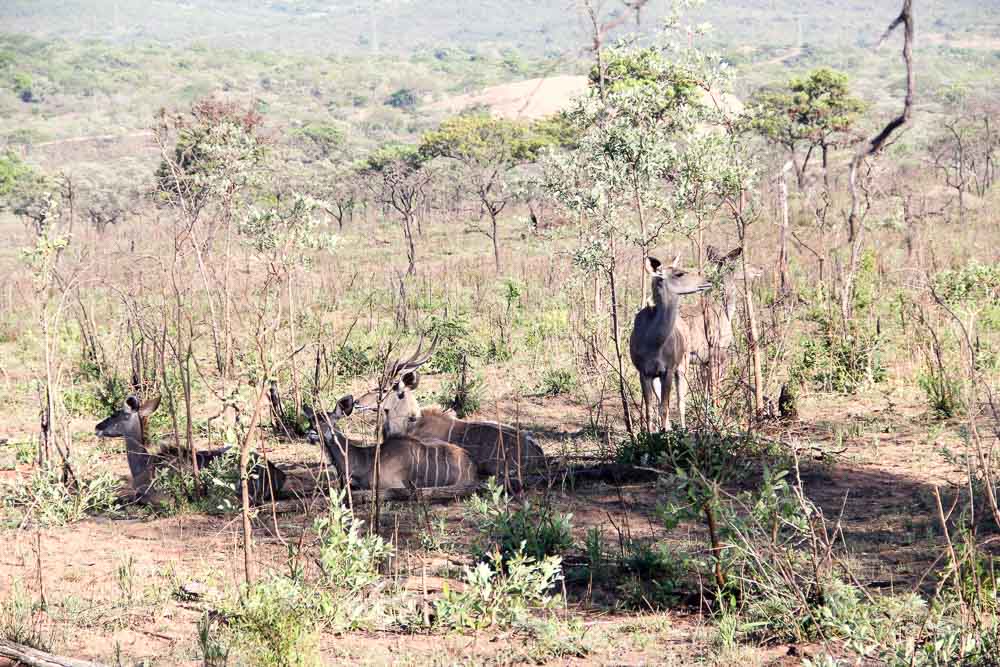
My partner and I really enjoyed the expertise from our guide, Dave. He could spot animals from far away while our eyes were still adjusting to the green and khaki hues of the bush, and could understand their body language to decide if we should stay and wait for the animal to shuffle around, or if they were just going to nap and we should move on.
It’s not as simple as it sounds! On the first day, we chanced upon a white rhinoceros, one of the “Big Five”. Our safari vehicle, together with two cars, stopped by the side of the road to watch. After a while, the other two cars moved off. But Dave waited, and we were rewarded with a close up view of the animal as it crossed the road less than five metres behind our vehicle.

Choosing a safari company
I probably spent the most time choosing this among all the planning for the whole South Africa trip. It’s a package tour, and our time would be completely in the hands of the company and guide! So I think a good choice here is really integral to having an awesome Kruger experience.
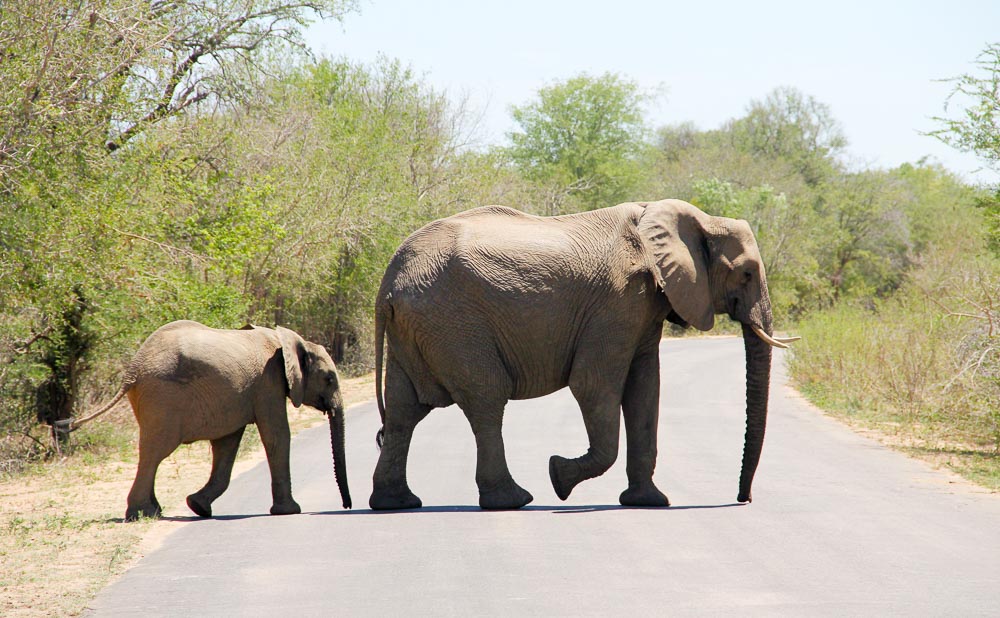
There are lots of companies with good reviews on forums and Tripadvisor. I’ll share four we seriously considered, and why we eventually went with Africa Spear. All these are 4D3N safari tours. Do note that prices in Singapore Dollars (S$) are correct as of Jan 2016 and the rand may fluctuate.
Baz Bus (S$683)
Baz Bus is a bus service round South Africa that caters to backpackers. They have hop-on, hop-off tickets down stipulated routes that stop directly at certain hostels. We didn’t use their bus services but it sounds like a good option for solo travelers.
Because they are better known for their bus services, I couldn’t find many reviews of the safari package online. The safari itinerary starts in Johannesburg, and goes past Blyde River Canyon, a popular and scenic spot not too far from Kruger.
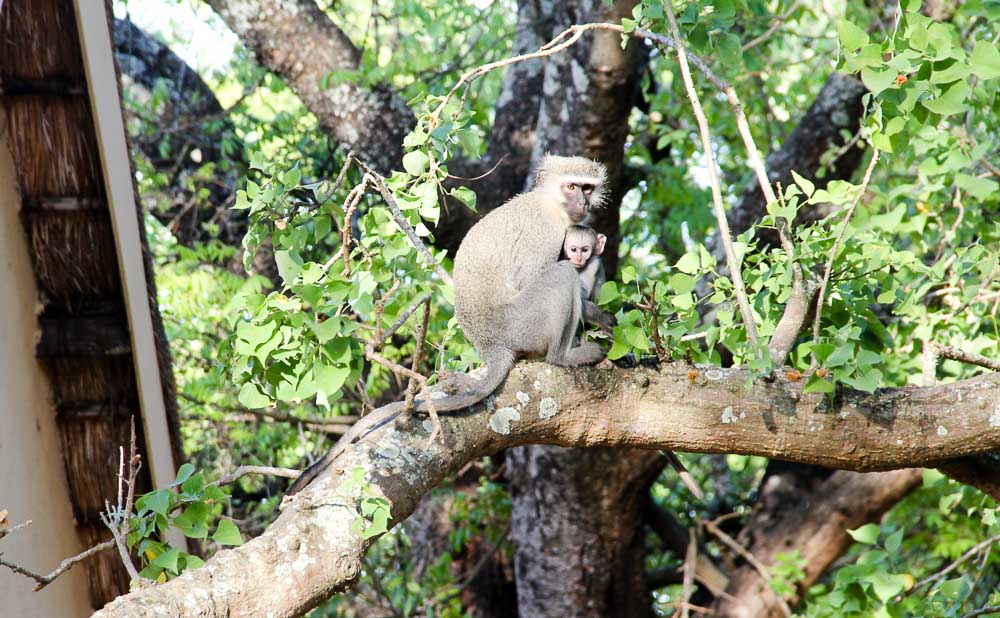
Wild Wings Safari (S$838)
Both Wild Wings and Africa Budget Safari (see below) are established safari companies that get very good reviews on Tripadvisor. Wild Wings is a bit fancier because they house you in a bungalow with an ensuite toilet. They also have a comprehensive guide on what to avoid when selecting a safari tour .
Africa Budget Safari (S$643)
Africa Budget Safari looked quite fun because their accommodation is in tents (but on safari beds with pillows and duvets). I don’t know if this qualifies as glamping? It might get hot in mid summer and cold in the winter months, but idea of sleeping in a tent I don’t have to pitch myself sounds quite appealing.
Nelspruit Backpackers (S$607)
Nelspruit Backpackers operates out of Nelspruit, and is a small, family-run hostel that also offers safari tours . The price for a 4D3N tour is not listed on the website (I emailed to ask) so check with owners Paul and Natalie to see if it’s current. We stayed there for a night and really enjoyed the homestay. The house was warm and welcoming and had two large dogs and more cats than I could count.
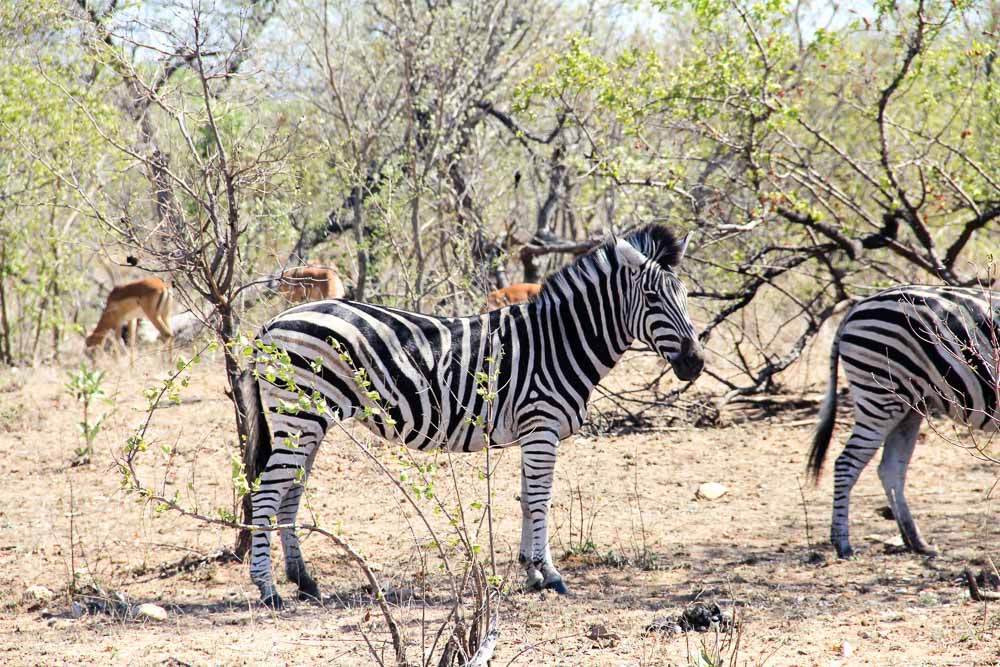
Africa Spear (S$665)
We eventually went with Africa Spear because they offered pickups from Nelspruit (some of the larger operators don’t, so email to ask). We wanted to start our safari from there rather than Johannesburg so we could have a full day of game viewing rather than be tired from the road journey on day one.
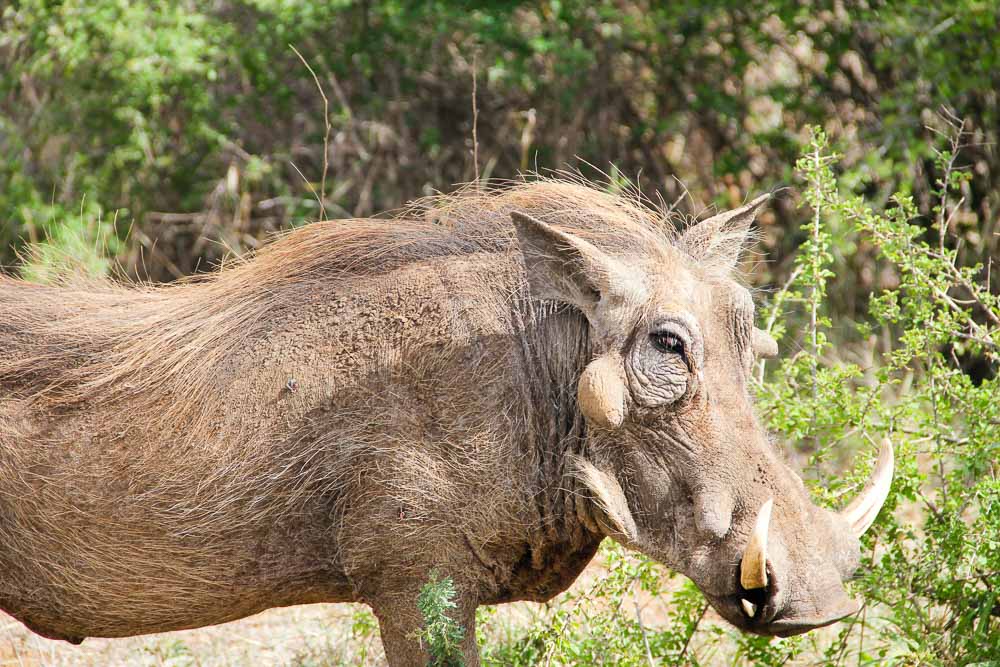
We were lucky because even though it was high season, my partner and I got the entire nine-seater safari vehicle to ourselves, and our guide Dave (whose brain is a freaking encyclopaedia of animal and plant knowledge) said that where possible, for overnight trips Africa Spear tries not to combine different groups into one vehicle. It was awesome because on the road we kept seeing similar vehicles packed full of tourists and every time that happened I must admit to feeling slightly smug.
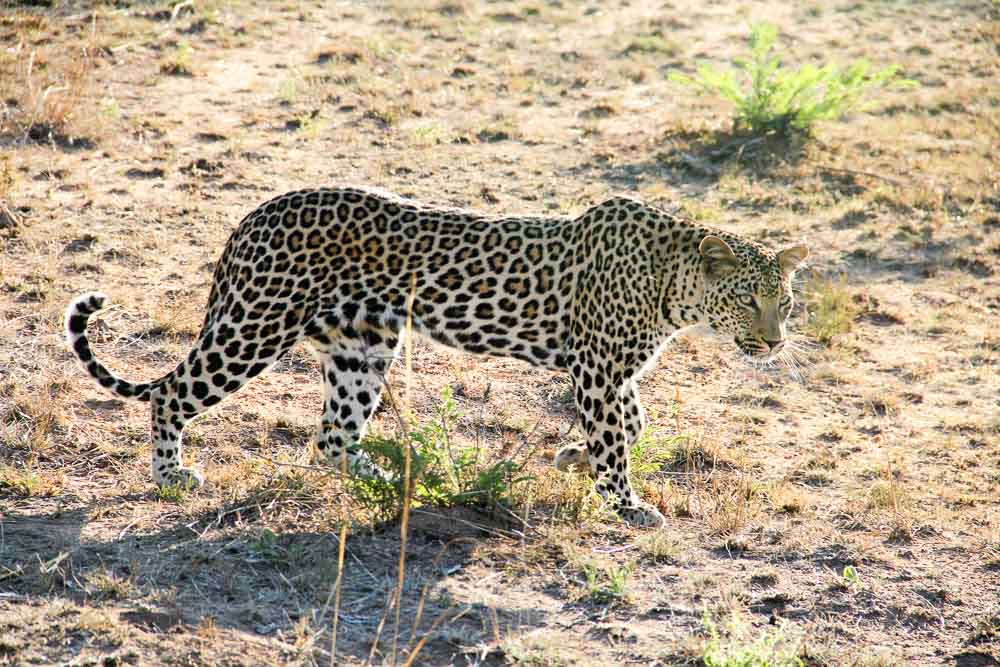
Accommodation was in air-conditioned chalet-style huts with a fridge and a sink in the room. Toilets and showers (fancily referred to in Kruger as ablution facilities) were shared but clean, if a bit worn.
We came to see animals, but we learnt A LOT from Dave – about South African culture and politics, poaching in neighbouring Mozambique, animal conservation, the ethics of game reserves, and where else to visit in Africa. All in all, I highly recommend Africa Spear!
Most camps have restaurants, or stores to stock up on food. Larger camps, such as Skukuza and Lower Sabie, have nicer restaurants and some, such as Lower Sabie’s Mugg and Bean, overlook a river of lounging hippos.
Most safari packages include meals – larger groups may get catered food or a braai, while our breakfast and dinner at the camp restaurant was covered and we could order anything off the menu. Prices are about 6-15 SGD for a meal, and we had really good, generously portioned steaks and salads at Mugg and Bean.
That said, not all camp restaurants are made equal. Larger camps have more crowds but better food, while another camp we stayed in, Pretoriuskop, only had one fast food burger joint called Wimpy’s. I thought it was underwhelming but passable, while our guide Dave ordered a salad there and said it tasted like bleach.
Braai, or barbecue, is a South African institution and many campsites have braai pits for you to grill your own dinner. Most camps also have well-stocked stores selling braai supplies, alcohol, snacks and some produce, although it’s probably better to stock your meat outside Kruger and bring it a cooler box. Some safari packages include one braai dinner.
A Kruger National Park Safari doesn’t have to be pricey to be awesome. Seeing animals up close, behaving as they do in their natural habitat, is totally different from seeing them in a zoo. It was one of the highlights of our time in South Africa and I super loved it! I hope you will too.
Like what you’re seeing? Share, like, subscribe and follow more of our adventures on Facebook or Instagram !
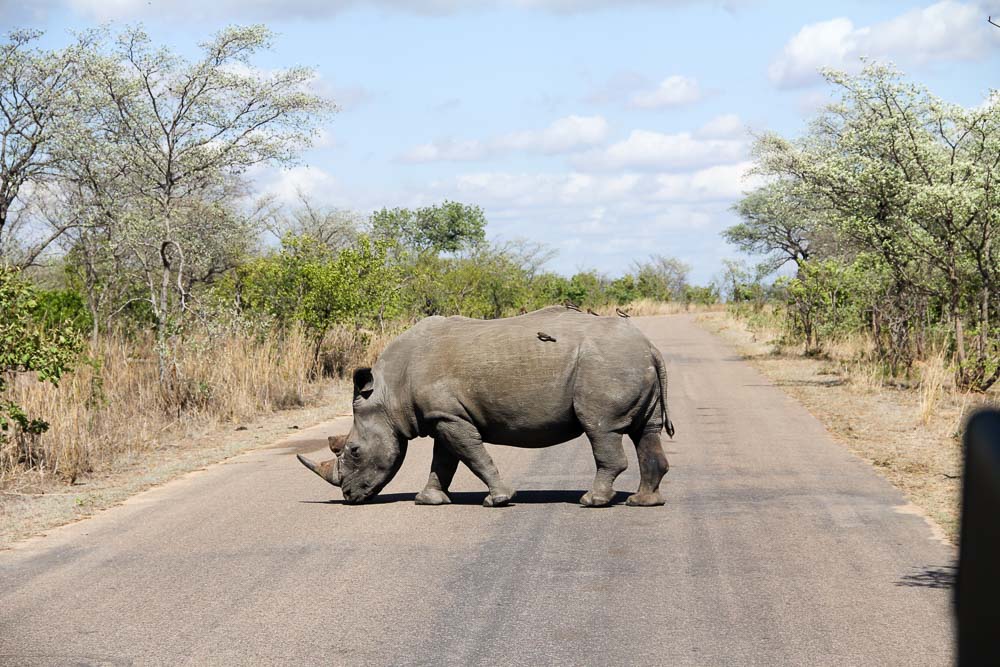
12 COMMENTS
Hola clara, Thank you for the information. I stayed at senalala luxury Camp. It wasnt that cheap bug It worth It. This is muy story http://leerviajarycompartir.blogspot.com.ar/2017/05/quiero-hacer-un-safari-en-sudafrica.html
Thanks for your helpful post! As a South African, I love reading positive stories from international travellers. I had an amazing safari experience in Kruger with African Budget Safaris so I’m glad that they feature in your post. Not sure if you’ve returned to Southern Africa, but I can highly recommend Etosha Park in Namibia too!
I really liked your way of representing the all photographs, This is a very informative post for everyone. People can go on tour and can get some information about places. Thank you for sharing this post, Keep giving updates.
Informative post with interesting pictures, thanks for telling us “How to plan a Kruger national park budget safari”, your post easy to read and easy to understand. Your post will be helpful for who want to plan Kruger national park. Appreciate your work. Keep share more and more post with us.
Such a beautiful and suitable destination for people those wants to enjoy vacations, This post is very useful for everyone. Keep giving updates so that people can plan their trips.
This post is a really nice and very informative post for everyone which will help people to plan the tour and go to this place! . Thank you for sharing this useful post, Keep giving updates!
Hi Clara. Very informative post. The prices mentioned are per person? or per group? Thanks for sharing.
Hi Sneha, The prices are per pax. However as this is an old post, the prices may have changed since then.
You have a nice blog with great information, Thanks for sharing!
Hello Clara. Thank you so much for posting all the positive information for African Safari. Stay Safe, Stay Blessed
This blog is so amazing, I am really impressed
LEAVE A REPLY Cancel reply
Save my name, email, and website in this browser for the next time I comment.

11 Things to do in Clark, Philippines — A Quiet Adventure...

20 Things to Eat-See-Do in Sabah’s Capital Besides Climbing Mount Kinabalu

Experience Macao Singapore Roadshow: Get Exclusive Deals, Experience the Macau Grand...

Ultimate 6-Day Adelaide Itinerary — The Best of South Australia’s Underrated...

31 New Deals and Attractions in Singapore this April 2024

- Terms Of Use
- Privacy Policy

Animals Around the Globe
Kruger National Park – All you need to know
Posted: November 25, 2023 | Last updated: November 26, 2023
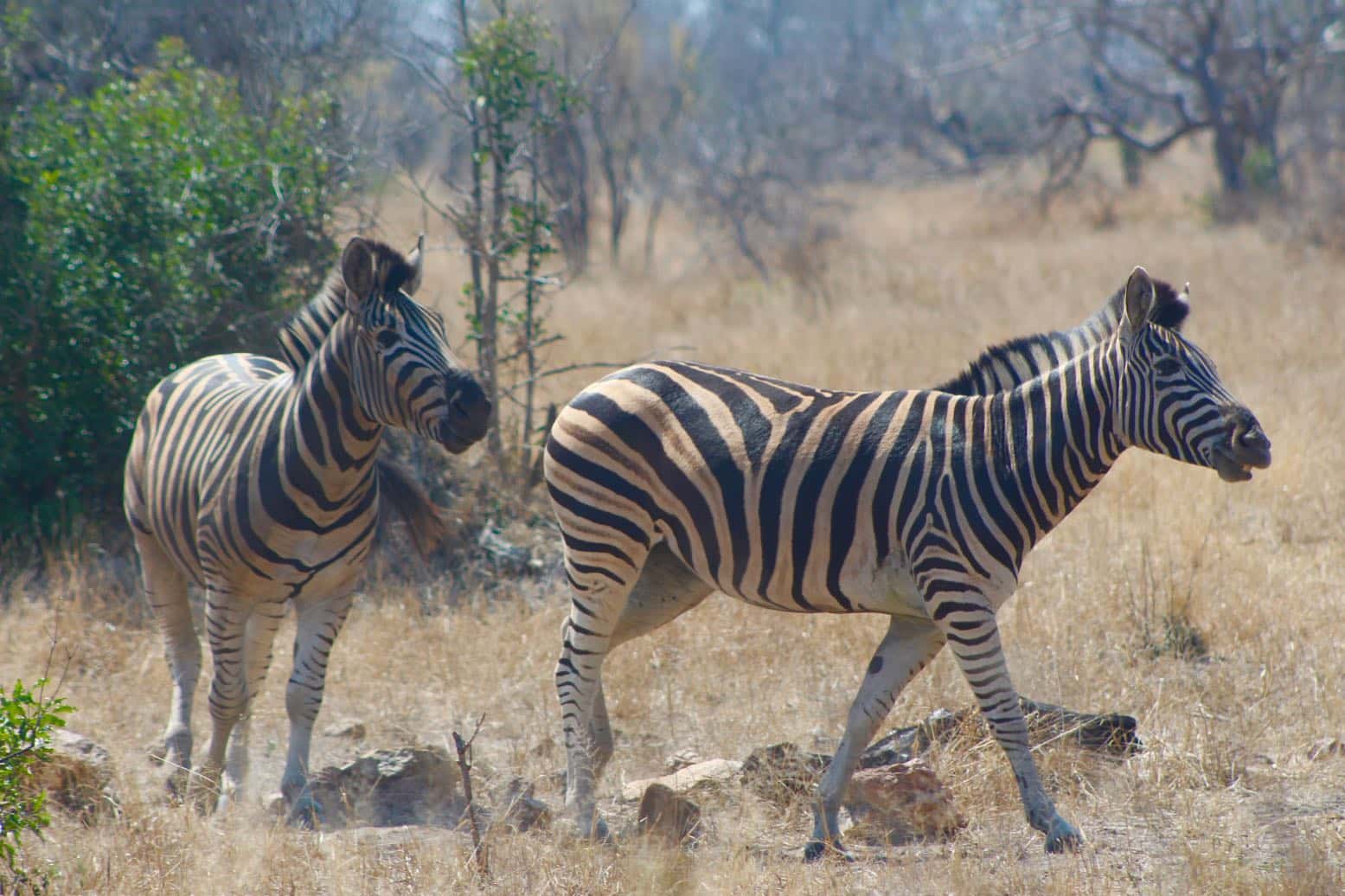
Have you ever heard about the Kruger National Park?
Or even luckier- have you ever been yourself? This is one of South Africa's national treasures. A spectacular piece of land totally protected and roamed by Africa's most incredible animals .
The Big 5 , amongst many more, reside in this wild and wonderful place, and the diverse fauna and flora bring in almost a million visitors every year.
The Kruger National Park is approximately the size of the whole of Wales which measures to 1,948 528 million hectares. It covers both the Mpumalanga and the Limpopo Provinces in the northern parts of South Africa and offers the visitor an exhilarating and up-close wildlife experience.

Where to begin?
Lion Sands River Lodge
If you wish to make your dream of exploring the Kruger a reality, these operators can make that a reality for you!
Upon arrival one also has to pay a conservation fee- this is for the upkeep and safety of the National Park as there is a lot of work being done to protect the animals internally.
From there airport, visitors usually get picked up by their game lodges accommodation (if you’ve gone that route), or you can hire a car to do your own viewing and travel within the Kruger.
Once you land you immediately get a sense of excitement and can usually spot amazing animals from the plane. As soon as you step out of the plane the wilderness is clear and exciting!
The hub of the Kruger National Park and the biggest rest camp is called Skakuza. There is a small airport called the Skakuza Airport, with a landing strip suited for small planes.

Skukuza Rest Camp
Skakuza, as the largest rest camp, has so much to offer. The accommodation in the camp gives one a real sense of culture in the Kruger as all the accommodation sites are shaped in traditional hut formats- completely round. The African culture in this area believes that having corners in a home is a space where evil spirits can dwell- hence the round huts and rondavels.
When walking around the camp, be careful of mischievous monkeys trying to steal a meal or even a backpack, and keep looking for rare and precious bush babies.
Skakuza is situated on the Southern Banks of the Sabie River. The camp is well foliaged and there are lots of lofty trees along the river's edge. Activities and facilities are diverse in this camp, as are the animals and plants found both within the camp and in the surrounding areas.
Entry and exit of the camps in relatively strict and there are severe penalties for not meeting the curfew of the camps internally. No one is permitted to do independent night drives- as it is far to dangerous. However, guided tours with special permission occur every evening and one can do so with a permitted company.
There are also various permits and passes you must obtain from here, wether you’re hiring a car to do your own game drives, or with a guided tour, there are very strict regulations to follow for your own safety as well as the animals safety.
This camp serves as the ‘headquarters’ for the Kruger, and it is from here you can enjoy a meal and their restaurants and consult the SANParks (South African National Parks) officials about any queries and concerns.
Skukuza, as previously mentioned is the Kruger National Park’s largest rest camp and administrative headquarters.
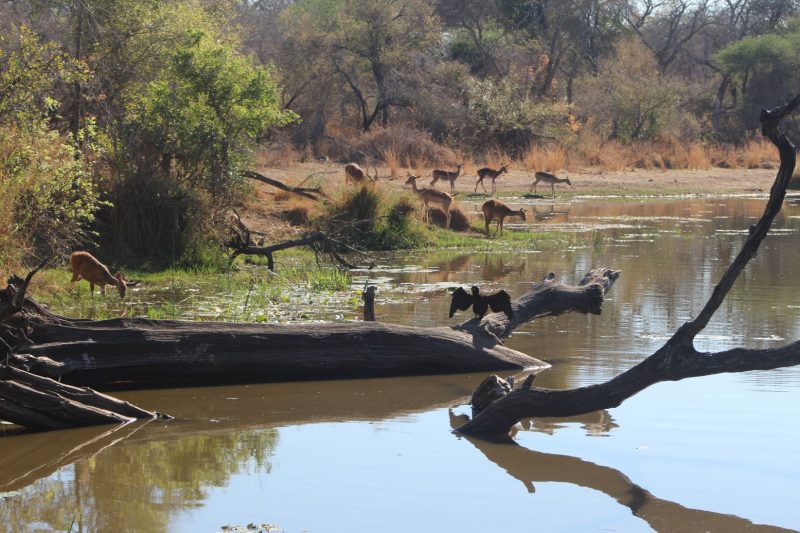
- Thick–tailed Bush Baby
- Spotted Hyena
- Purple–crested Lourie
These are all very lucky to spot, and some break into the camp itself, but mostly one can spot these cute five in the surrounding area and in trees. In the case of the hyena- this certainly won’t be in the camp itself- not to worry.
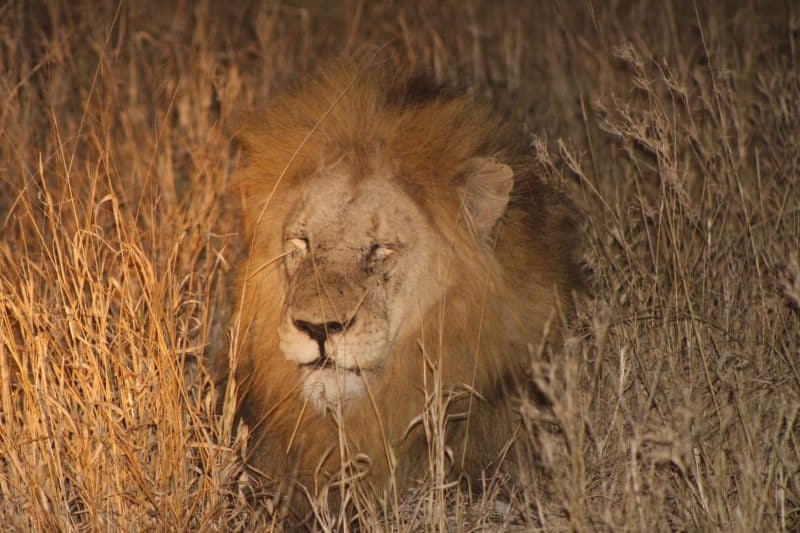
Satara Rest Camp
Clearly, Satara is a special camp to visit for its rich and popular wildlife viewing. It is situated around 90 kilometres from Skakuza, and has the most amazing sense of ‘wild’ in the camp.
Of the smaller animals, the Honeybadger is something to look out for on this South African safari. At night, spotted hyena regularly whoop from the camp’s perimeter while the repetitive sonar chink of fruit bats blends with the chirp of cicada and cricket.
Besides the regular big cats , general game includes; Blue wildebeest, zebra, waterbuck, giraffe and the ubiquitous Impala. Rhino, buffalo and elephant are also easily seen from Satara.
Because the fertile grazing land surrounding Satara this attracts vast herds of antelope and other grazers, and therefore, the large cats that prey on them are in abundance for you to see on your South African safari.
Satara Camp stakes its reputation on being one of the best spots in the world for viewing Lion, Leopard and Cheetah in the wild. Satara Camp is often referred to as the ‘cat camp’ because of the large numbers of Lion and Cheetah in the area, and is for this reason that Satara is such a popular camp.
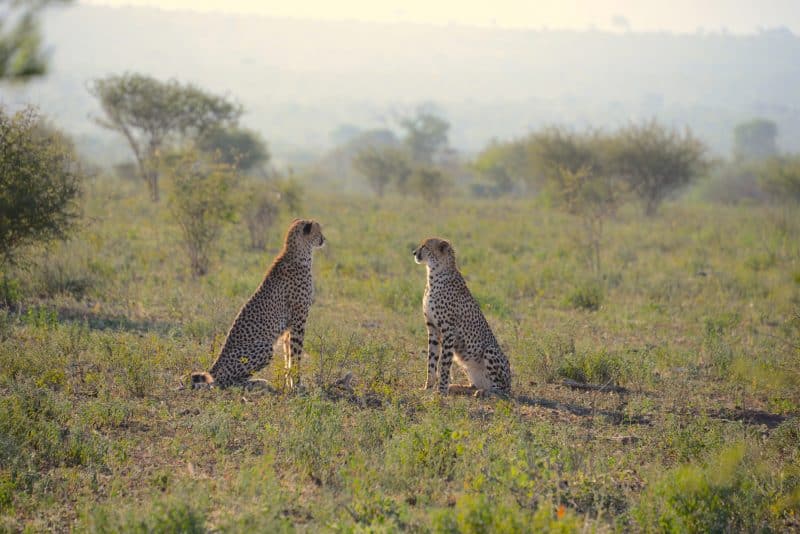
Plenty of activities like bush barbecues and traditional dances complement the game viewing here. Even an Open Air Theatre is available in this camp for visitors to enjoy. As mentioned earlier, Satara is the best camp for viewing lion, leopard and cheetah and there are good bird watching opportunities from the Sweni Bird Hide near by.
Large cats are frequently spotted in the Muzadzeni area, where a large and successful Lion pride operates, or along the 5100 route that runs east from Satara Camp, hugging the bank of the N’wanetsi stream. This stretch is especially productive in winter when the veld is dry, and Lion and Leopard lie waiting to ambush thirsty Antelope that swarm in large herds to drink at the few remaining pools of water.
Although there are no major rivers, there are watercourses lined with well-developed trees. There are 3 dams and 6 waterholes in the area, offering you plenty of opportunity to spot the Big Five.
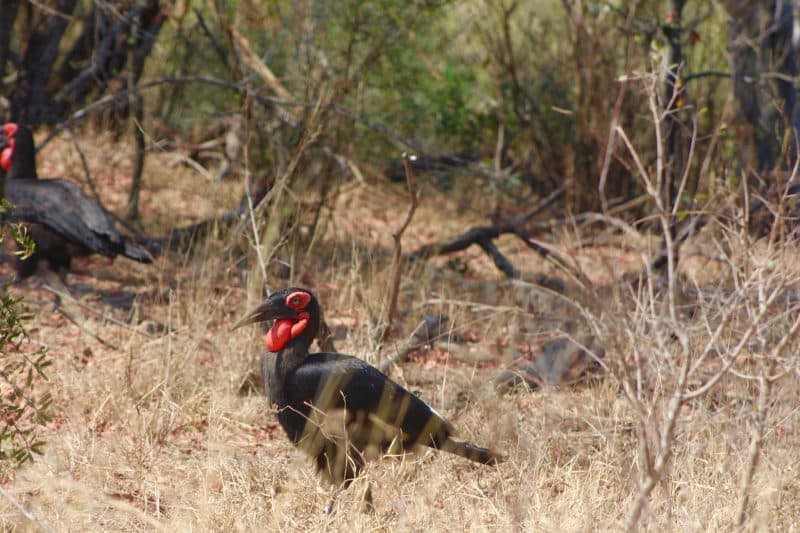
Satara, like other camps, has a plethora of resident birds. Particularly prominent are Red-billed buffalo weaver, glossy, greater Blue-eared and Burchell’s starling and mourning dove. At night, giant eagle, barn owl, scops and pearl spotted-owls can be seen and heard in the camp. The open plains to the north of the camp are a good place to record Montagu’s and pallid harrier for a South Africa safari.
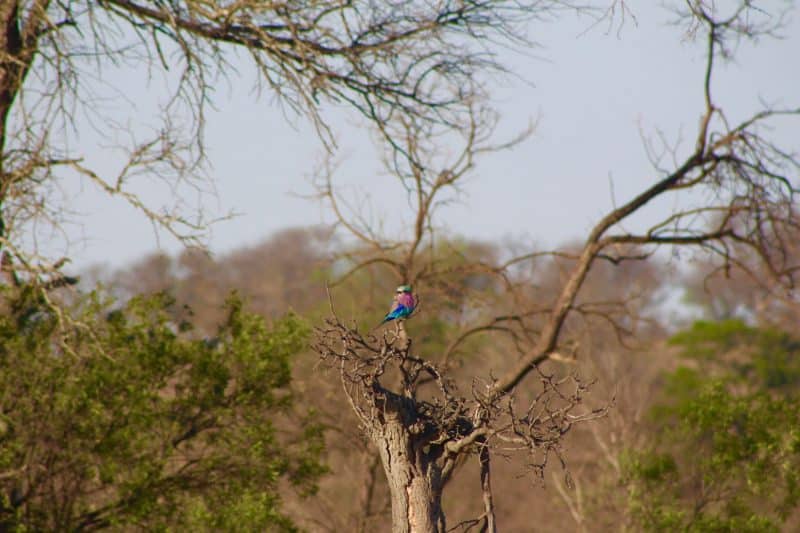
Lower Sabie
In this rest camp, the bounty and plenitude of nature are very evident, eloquently symbolised by the most conspicuous of its numerous trees, the mighty sycamore fig, which provides generously for the livelihood of many birds and insects . Not only do these giants produce fruit at least twice a year, but different trees produce fruit at different times, extending the gifts of life over many months. Watching the endless procession of animals coming to drink at the Sabie River establishes a sense of one’s own place in the eternal cycle.
Lower Sabie is a camp which graces the banks of the Sabie River, one of the few perennial rivers to flow through the Kruger National Park. Visitors cannot but feel soothed by the view towards the river and the Lebombo Mountains beyond.
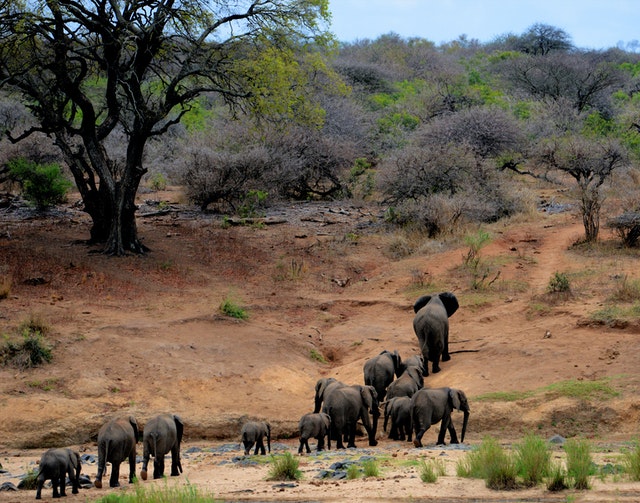
Game viewing is possible from Olifants Rest Camp where a shaded lookout platform is positioned. Here at your Kruger Park accommodation you are sure to spot Hippopotamus, Crocodiles in the Olifants River as well as the occasional Lion kill.
To the south, rolling plains are dotted with Buffalo, Giraffe and Kudu. While along the Olifants River, wildlife such as Lion, Crocodiles and Hippopotamus can be viewed on gameviewing and sightseeing excursions in Kruger Park, as well as an abundance of birdlife such as Owls, Storks and Eagles.
Because Olifants Camp is situated in a transitional zone, 2 distinct types of vegetation can be found, offering a wide range of game. In the north, the low lying Mopane trees provide cover for Zebra, Impala, Kudu and Elephant .
Guests that visit Olifants will be exposed to an unforgettable window of Africa. This camp is situated a top a hill which towers several hundred feet over the Olifants river. Views from the lookout platforms allow one to see the river below, just as a soaring eagle would survey it, as it hunts from the skies.
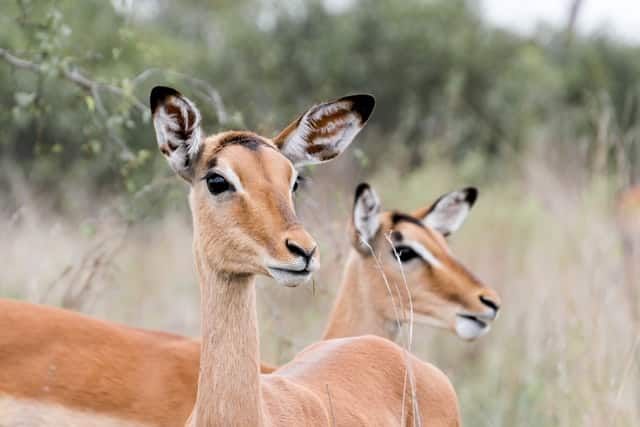
Pretoriouskop
Nostalgia prompted an exception to the rule for Pretoriuskop, the Kruger National Park’s oldest rest camp, and exotic flowering plants were allowed to stay, enhancing the strong sense of the past that is so pervasive.
The impressive granite dome known as "Shabeni Hill" is not far from the camp, which is found in the south-western corner of the Kruger National Park. It is immediately apparent to any visitor that Pretoriuskop is unique as brilliant red trees adorn the camp, pre-dating the decision to make exclusive use of indigenous plants in laying out rest camp gardens.
When the world was still young, some 3 500 million years ago, molten rock forced its way through the earth’s crust and solidified to form the spectacular granite outcrops where Pretoriuskop Rest Camp is now nestled.
More for You
Aileen Cannon Orders Evidence Be Unsealed in Donald Trump Case
We Ordered 7 Fast-Food Breakfast Sandwiches to Find the Best One
One of the best British spy dramas of all time is finally streaming on Netflix
Plane forced to land after filming melted windows
Sprinkle This On Your Lawn Soil To Keep Ticks At Bay
Another Two Insurance Companies Intend to Withdraw From California Amid State Insurance Crisis
Tenant stunned by message from landlord forbidding them from using EV charger: 'You can do what you want'
26 Dream Cars Everyone Wants to Own
Walmart is Replacing Self-Checkout in These States
Taco Bell rival files Chapter 11 bankruptcy; sells company
'FBI' Showrunner Stepping Down After 6 Seasons
15 Genius Uses for Used Coffee Grounds Everyone Should Know About
15 Things That Are Now So Expensive They're No Longer Worth It
Teenage girls face nearly a decade of unpaid caring
Arkansas senators say Clinton airport exec. killed by ATF with no bodycam: 'Violation of its own policy'
Popular Beer Company Files for Chapter 11 Bankruptcy
A top House Democrat wants to remove Trump's Secret Service protection if he's sent to prison
20 country songs you didn't know were written by famous artists
Here's How Often You Should Really Be Watering Your Tomatoes, According To An Expert
Fallout Season 2 Confirmed: Expected Release, Plot, Cast & News
- Go to current travel information
- Go to navigation
- Go to flight search
- Go to main content
- Go to footer
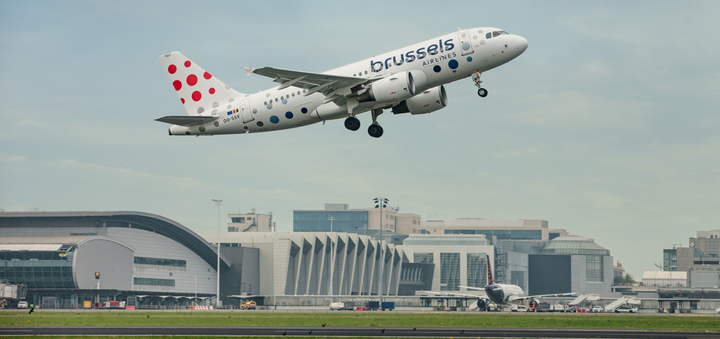
Travel details
Flight from kruger national park (mqp) to stuttgart (str), flight information, travel comfortably from kruger national park (mqp) to stuttgart (str).
Discover our menu and enjoy a comfortable flight from the start of your journey from Kruger National Park (MQP) to landing in Stuttgart (STR). Whether you are planning a business trip or a family holiday, brusselsairlines.com offers the best choice and always attractive prices.
Fly to Stuttgart (STR) with a calm mind, rested and ready for a great stay thanks to even more comfortable economy class seats.
Some of our aircrafts have been dedicated to Belgian icons. Discover Rackham, Airbus A320, with its Tintin theme, Trident - dedicated to our national footballers, Amare dedicated to the Tomorrowland festival, Aerosmurf dedicated to the children's idols - the Smurfs, and Bruegel which commemorates one of the most talented artists of the 16th century - Pieter Bruegel the Elder.
Discover competitive prices and travel from Kruger National Park (MQP) to Stuttgart (STR).
*Please note: To provide you with the widest possible selection of flight destinations, some of the direct flights or connecting flights on brusselsairlines.com are operated by our partner airlines, which may result in a different flight experience than with Brussels Airlines.
Important information for your trip

Respectful flying
Join us on our way to respectful flying and discover our charter of 9 principles

Unlimited access to Lufthansa Group Airlines and Miles & More.

3x Miles & More
Book car rental today and earn up to triple your award miles until 28th April.

Travel and entry requirements
Find out about the travel regulations.
Entry regulations
Current weather in stuttgart, discover our destinations.
- Cape Town - Stuttgart
- Durban - Stuttgart
- East London - Stuttgart
- George - Stuttgart
- Johannesburg - Stuttgart
- Port Elizabeth - Stuttgart
- South Africa - Germany
We offer an easy form for your online check-in. After you have received your booking confirmation, you can fill it out here .
On our flights within Europe, you can purchase a large selection of snacks, sandwiches and drinks on board. On longer trips to North America, Central or South Africa, you will enjoy a fully balanced meal on bord.
In general, you can bring hand bagage in the dimensions of 55cm x 40cm x 23cm and a maximal weight of 8kg. Flying with economy travel classes, even two pieces of hand bagage are allowed. You can find further information in our hand bagage rules here .
No, during flight, you can only use your mobile devices and tablets in flight mode.
In the event that your flight is cancelled, we will promptly reschedule all affected passengers. The revised flight information can be found under "My bookings". Our Brussels Chat Assistant Charlie is available 24/7 to assist you.
Free baggage allowance means the luggage that is already included in your ticket price so you don't have to pay more to bring it. The specifics, like size, weight, and quantity, are determined by your fare type, the flight route, and your frequent flyer status.
Our Premium Economy Class provides extra comfort, tailored for longer flights. Take advantage of features like a roomier seat with a bigger recline angle, making your flight more enjoyable.

IMAGES
VIDEO
COMMENTS
Yes, you can choose to stay outside of the park and visit Kruger each day as a day visitor. You can self-drive or go on a guided game drive. You will need to take note of gate opening and closing times (see FAQ no. 8 below). Even as a day visitor, you can use the restaurants and picnic sites around the park.
Kruger National Park is easily one of the world's greatest game parks. It's known for its professional management of wildlife, nature conservation, and safeguarding of African cultural heritage. It's developed significantly since it was officially opened as a park in 1927 but the history goes far before that.
Kruger National Park in South Africa is one of the greatest game reserves on Earth, containing the famous Big Five. Here is our beginner's safari guide. ... Plan your tailor-made trip with a local expert. Book securely with money-back guarantee. Travel stress-free with local assistance and 24/7 support.
Kruger National Park Camps. Whether you're looking for rustic bush accommodation or a 5-star luxury lodge, there is a Kruger camp well-suited for any trip to the Kruger National Park. To help you plan your South African safari, we've listed the best accommodation and main camp options below:
The Kruger spans vast landscapes, and planning your route is essential. Research the main routes and loops. Some rest camps are far apart, and would take more than a day's drive, as the road speed limits are quite low. Stopping often also slows down the whole day. So plan your camps close enough to drive to without having to break the speed limits.
2. Fly into airport near Kruger and then rent a car. Instead of driving from Johannesburg, connect on a flight to one of the nearby airports of Kruger National Park and rent a car from there. Pretty straightforward option that cuts the driving from Johannesburg and brings you right into the heart of action.
For non-South Africans, the Kruger Park entrance fee is: • R372 per adult, per day. • R186 per adult, per day. If you're a South African citizen, I highly recommend buying a Wild Card. You can get access to over 80 national parks and reserves in Southern Africa for R640.00 (or R1,055 per couple) for an entire year.
Where is Kruger National Park. Kruger is located in the northeastern corner of South Africa bordering Mozambique! It is about 200 KM from north to south and 50 KM from east to west and covers 20,000 square KMs of land. It is home to what is famously known as the Big Five (lion, elephant, leopard, buffalo, and rhinoceros).
Viva Safari Review. Kruger National Park Itinerary. Day 1: Exploring Balule Private Game Reserve at Night. Day 1 : Dinner in the South African Bush. Day 2: Morning Bush Walk in Balule Nature Reserve. Day 2 : An Afternoon Game Drive in Balule Nature Reserve. Day 3: Tracking Down the Big 5 in Kruger National Park.
Suggested 5 day itinerary options for Kruger National Park, South Africa. Plan your perfect bush visit and safari to the Kruger. Self-drive itinerary for the Kruger. ... The key thing to avoid is having to travel too far between different rest camps in a single day. Doing that just ends up feeling stressful and might encourage you to speed ...
The Ultimate Kruger National Park Safari Planning Guide. By Josh Hewitt July 5, 2023 ( 3 ) Kruger National Park in South Africa is one of the world's premier wildlife destinations. The Greater Kruger area is an expansive region that is comprised of beautiful landscapes and a wealth of wildlife. A Kruger National Park safari is an experience ...
What is the weather in Kruger Park like? In the Kruger National Park you'll find a subtropical climate, with hot summers (40 C / 104 F), and warm, dry winters, (17-22 C / 60-70 F), with intermittent summer rains which fall between October and March. Read more about the weather and seasons in the Kruger Park Calender.
Safari in Kruger National Park - Everything you need for planning a trip Where is Kruger National Park? Kruger National Park is located in the north-east of South Africa. Kruger extends nearly 220 miles from north to south, and is about 40 miles wide - a large portion of Kruger actually borders with Mozambique too.
Best Months to Visit. The best time to visit Kruger National Park is at the beginning or end of the region's dry season, which falls between April and September. During Kruger's dry season ...
Memory cards for your camera. Power strip or converter. Binoculars (8×40/8×42 are recommended for animal viewing) Flashlight or head lamp. Your standard travel essentials - passport, visas, credit cards, etc. Related Post: Related Post: Related Post: A guide on how to plan a self-drive as well as private guided safari in Kruger National ...
In order to maximise your time in Kruger National park I would recommend spending the whole day driving around the park and only leaving at gate closing time. These are the current gate times but be sure to check the San Parks website for any updates or changes. November-February: gate closes at 18:30. March-April: gate closes at 18:00.
Scroll down for the basics of planning a Kruger National Park safari, including when to go, the best affordable and luxury Kruger National Park lodges, how much to budget, and how to get there. ... For a mid-range trip you can book in advance online, expect to spend anywhere between $700 for a 4-day trip in homestays with a shared vehicle ...
Golden Rules for a Self-drive Safari in Kruger: 1. Plan your trip in advance. Being spontaneous doesn't really work at Kruger. Think about the dates you want to visit the park and book a car with a rental agency at least a few days before. ... Practical Tips for Visiting Kruger National Park: Book a morning walk tour. While at Lower Sabie we ...
Key points to consider when visiting the Kruger National Park: There is no need to have an SUV (sports utility vehicle) or 4X4 to drive on any of Kruger's roads. The S44 is the most popular gravel road in Kruger. Remember, there is limited to no signal on the roads between camps. However, most camps have cell phone reception.
The Kruger National Park is one of Africa's most beloved destinations by both local and international visitors. The Park is known as being a year-round destination for travellers, as the changing seasons bring different-coloured vegetation, different cycles in animal life, and different visual and experiential treasures to spoil those who step foot into this wild
Average seasonal temperatures : January to March: 21°C - 32°C. April: 16°C - 29°C. May to June: 9°C - 27°C. July to September: 10°C - 27°C. October: 16°C - 30°C. November and December: 19°C - 31°C. Best weather: April to May and September to October - but weather is pleasant all year round. The Kruger National Park is ...
Cheapest: Fly into Johannesburg (JNB) and rent a car. The drive from the airport to the southern part of Kruger takes around 4 hours. Plan to leave JHB early in the morning so you arrive at Kruger before gate closing times (keep gate times in mind) More Convenient: You can fly into a big airport like Cape Town or Johannesburg and then take a ...
Kruger National Park. The first tourists visited Kruger in 1927, and today the park is probably South Africa's best-known and most well established safari destination. At 19,485 square kilometres, it is one of the largest game reserves in Africa and spans two South African provinces, Mpumalanga and Limpopo. Kruger shares borders with both ...
The Kruger National Park is approximately the size of the whole of Wales which measures to 1,948 528 million hectares. It covers both the Mpumalanga and the Limpopo Provinces in the northern parts ...
Travel comfortably from Kruger National Park (MQP) to Stuttgart (STR) Discover our menu and enjoy a comfortable flight from the start of your journey from Kruger National Park (MQP) to landing in Stuttgart (STR). Whether you are planning a business trip or a family holiday, brusselsairlines.com offers the best choice and always attractive prices.
SANParks is offering a 40% discount on new online bookings for stays between (and including) 19 - 30 April 2024 at a selection of parks and camps. The discount is available to new bookings made online from 18 April 2024. Terms and conditions apply. Take advantage of this limited-time offer to create cherished memories with loved ones amidst ...